Tree Finder
Live Oak: A Durable and Shade-Providing Tree
The Live Oak (Quercus virginiana) is a large, evergreen tree native to the southeastern United States. Known for its impressive size, long lifespan, and distinctive spreading branches, it’s a popular choice for landscaping and urban forestry.
Key features include:
- Evergreen foliage: Live oaks maintain their green leaves year-round, providing shade and privacy.
- Spreading canopy: The tree develops a broad, spreading canopy, offering ample shade during hot summer months.
- Strength and durability: Live oaks are known for their resilience and can withstand harsh weather conditions.
- Wildlife habitat: Provides food and shelter for various wildlife species, including birds, squirrels, and insects.
Ideal for:
- Shade trees: Offers substantial shade, making it a popular choice for patios, decks, and yards.
- Windbreaks: Can be used to protect structures from strong winds.
- Urban forestry: Tolerates pollution and urban conditions well.
- Wildlife habitat: Supports a diverse range of wildlife.
Benefits:
- Longevity: Live oaks can live for hundreds of years, providing long-term benefits.
- Shade: Offers respite from the heat and sun during summer months.
- Environmental benefits: Provides habitat for wildlife and helps improve air quality.
- Aesthetic appeal: Adds beauty and character to landscapes.
Eastern Red Cedar: A Hardy Evergreen
The Eastern Red Cedar (Juniperus virginiana) is a hardy evergreen tree native to North America. Known for its dense foliage and aromatic berries, it’s a popular choice for landscaping and wildlife habitat.
Key features include:
- Evergreen foliage: Eastern red cedars maintain their green needles year-round, providing privacy and screening.
- Aromatic berries: The tree produces small, bluish-gray berries with a distinctive cedar scent.
- Resilience: Eastern red cedars are adaptable and can thrive in various soil conditions and climates.
- Wildlife habitat: Provides food and shelter for a variety of birds and mammals.
Ideal for:
- Privacy screens: Creates a dense barrier for privacy and noise reduction.
- Windbreaks: Protects structures from strong winds.
- Wildlife habitat: Supports a diverse range of wildlife.
- Ornamental plantings: Adds texture and interest to landscapes.
Benefits:
- Low maintenance: Requires minimal pruning and care.
- Durability: Can withstand harsh weather conditions and pests.
- Environmental benefits: Provides habitat for wildlife and helps improve air quality.
- Aromatic fragrance: Emits a pleasant cedar scent.
Chinese Pistachio: A Vibrant Fall Foliage Tree
The Chinese pistachio (Pistacia chinensis) is a deciduous tree known for its striking fall color and adaptability. Native to China, this species has become a popular ornamental tree in many parts of the world.
Key features include:
- Vibrant fall color: Leaves transform into brilliant shades of red, orange, and purple in autumn, creating a stunning display.
- Open canopy: The tree develops a spreading canopy, providing dappled shade in summer.
- Drought tolerance: Chinese pistachios are relatively drought-tolerant, making them suitable for drier climates.
- Pest and disease resistance: Generally resistant to common pests and diseases.
Ideal for:
- Ornamental trees: Adds beauty and color to landscapes.
- Street trees: Tolerates urban conditions well.
- Park trees: Provides shade and visual interest in public spaces.
- Drought-tolerant landscapes: Suitable for areas with limited water availability.
Benefits:
- Aesthetics: Offers a vibrant fall display and attractive foliage throughout the growing season.
- Low maintenance: Requires minimal pruning and care.
- Adaptability: Thrives in a variety of soil conditions and climates.
- Environmental benefits: Provides habitat for wildlife and helps improve air quality.
An espaliered Carolina Midnight Loropetalum is a stunning and unique way to showcase this beautiful shrub. Espaliering involves training the branches of the Loropetalum to grow flat against a wall or fence in a specific pattern, such as a fan, candelabra, or horizontal cordon. This technique creates a living architectural element that adds a touch of formality and elegance to your garden. The deep burgundy-purple foliage of the Carolina Midnight Loropetalum is particularly well-suited for espaliering. The rich color creates a dramatic focal point on your wall or fence, and the flattened form allows you to appreciate the intricate details of the leaves and branches up close. Throughout spring, the vibrant fuchsia flowers add another layer of interest, contrasting beautifully against the dark foliage.
Transform your outdoor space with the captivating Little Gem Magnolia espalier. Unlike traditional magnolia trees, this unique version is trained to grow flat against a wall or fence. This space-saving design (typically reaching 8-10 feet tall and 4-6 feet wide) allows you to create a stunning focal point in even smaller gardens, patios, or balconies. The Little Gem Magnolia espalier boasts more than just a compact form. Throughout spring, this evergreen beauty erupts with a dazzling display of creamy white, fragrant flowers. These delicate blooms stand out against the lush, dark green foliage, adding a touch of elegance and perfume to your landscape. Even after the flowers fade, the Little Gem continues to provide year-round interest with its glossy evergreen leaves. This easy-care option thrives in full sun and requires minimal pruning to maintain its espaliered form, making it a perfect choice for adding a touch of magnolia to any space.
Brodie Eastern Redcedar: A Compact Evergreen for Your Landscape
The Brodie Eastern Redcedar (Juniperus virginiana ‘Brodie’) is a popular evergreen tree known for its dense foliage and compact size. This cultivar is a great choice for smaller landscapes or as a foundation plant.
Key features include:
- Dense foliage: Provides a thick, evergreen screen for privacy and wind protection.
- Compact size: Grows into a rounded shape, reaching a maximum height of 15-20 feet.
- Hardy nature: Tolerates a variety of soil conditions and climates.
- Low maintenance: Requires minimal pruning and care.
Ideal for:
- Small gardens: Perfect for limited spaces due to its compact size.
- Foundation plantings: Adds beauty and year-round interest to the front of your home.
- Hedging: Can be shaped into formal or informal hedges.
- Wildlife gardens: Attracts birds and other wildlife.
Benefits:
- Beauty: Offers year-round greenery and a dense, attractive appearance.
- Privacy: Provides a natural screen for privacy and noise reduction.
- Low maintenance: Requires minimal pruning and care.
- Wildlife-friendly: Supports wildlife by providing food and shelter.
Bald Cypress: A Unique and Majestic Tree
The Bald Cypress (Taxodium distichum) is a deciduous conifer known for its unique adaptations to wet environments. This majestic tree is a popular choice for landscapes and wetlands due to its striking appearance and tolerance for flooding.
Key features include:
- Kneeling roots: Develops “knees” or pneumatophores that rise above the waterline, aiding in oxygen exchange in flooded areas.
- Needles: Possesses soft, feathery needles that turn a beautiful bronze color in autumn.
- Deciduous nature: Sheds its needles annually, creating a unique contrast with its bare branches during winter.
- Adaptability: Thrives in wet, swampy conditions but can also tolerate drier soils.
Ideal for:
- Wetland landscapes: Perfect for areas with standing water or poor drainage.
- Ornamental trees: Adds a unique and majestic presence to any landscape.
- Wildlife habitat: Provides food and shelter for a variety of wildlife.
- Erosion control: Helps stabilize soil in areas prone to erosion.
Benefits:
- Unique appearance: Offers a distinctive look with its knees and feathery needles.
- Adaptability: Thrives in wet and dry conditions.
- Wildlife-friendly: Supports a diverse range of wildlife.
- Erosion control: Helps prevent soil erosion in wetland areas.
The Allee Elm (Ulmus parvifolia ‘Allee’) is a captivating and resilient tree that adds a touch of elegance and history to any landscape. This cultivar, discovered by Dr. Michael Dirr of the University of Georgia, boasts a unique growth habit reminiscent of the grand American Elm. Reaching a mature height of 60-70 feet with a stately, upright spreading canopy stretching up to 50 feet wide, the Allee Elm makes a powerful statement in larger gardens or parks. Beyond its impressive size and nostalgic form, the Allee Elm offers several key advantages. Unlike its elm predecessors, the Allee Elm boasts exceptional resistance to Dutch Elm Disease. This makes it a healthy and reliable choice for gardeners seeking a long-lasting shade tree. Adding to its resilience, the Allee Elm thrives in a wide range of conditions, tolerating full sun to partial shade and adapting well to various soil types. This adaptability makes it a versatile choice for gardeners in many regions. The Allee Elm offers visual interest throughout the year. In spring, the tree unfolds delicate green leaves that cast a dappled shade in summer. As fall approaches, these leaves transform into a warm yellow hue, adding a subtle touch of color to the autumn landscape. However, the true star of the show is the Allee Elm’s magnificent bark. As the tree matures, its outer bark exfoliates in small patches, revealing a mesmerizing mosaic of orange, tan, and gray underneath. This captivating texture adds visual intrigue in winter, especially when highlighted against a snowy backdrop. The Allee Elm stands as a testament to both beauty and resilience, offering a lasting addition to your landscape.
The Bracken Brown Beauty Magnolia was discovered as a seedling by Ray Bracken in 1967 and is now located on their farm in South Carolina. The Bracken Brown Beauty has earned a dominant status among the Magnolia grandiflora cultivars and it has several unique qualities that are responsible for this popularity. The Bracken Brown Beauty has the widest hardiness range given to any Magnolia grandiflora cultivar being able to handle -20°F. The Bracken Brown Beauty has more durability than other Magnolias as it can handle a wider variance of soil conditions and water levels than any other Magnolia grandiflora cultivar. At an age of 42 years old, the mother tree of the Bracken Brown Beauty Magnolia stands at 30’ tall and 20’ wide producing a compact pyramidal-oval crown. The dense growth habit of the Bracken Brown Beauty is self perpetuated by its multiple branching breaks from each spent flower giving numerous shortened branches. The Bracken Brown Beauty has leathery textured 5 to 8 inch oblong leaves that appear glossy, dark green on top and the underside is covered with a fine cinnamon brown fuzz. In the spring and sporadically throughout the summer the Bracken Brown Beauty produces large fragrant creamy white saucer shaped flowers that are 8 inches wide. These qualities allow the Bracken Brown Beauty to have tremendous versatility from tall dense screens, landscape specimens or framing accents.
Native to the Blackland Prairies of central and north Texas, the Bur Oak reigns as a symbol of resilience and grandeur in the region’s landscape. These majestic trees boast stately figures with densely rounded crowns, exuding an aura of magnificence and strength. Their large, leathery leaves, measuring between 8 to 12 inches in length and 4 to 5 inches in width, showcase a dark green hue on their upper surface, contrasting elegantly with a lighter grayish-green tone beneath. What truly distinguishes the Bur Oak’s foliage is its variability in shape, featuring 5 to 9 lobes of varying sizes, with diminutive lower lobes and regal upper lobes that resemble a crown, epitomizing its noble stature.
Adapted to thrive in the harsh, arid conditions of the Texas prairies, Bur Oaks exhibit unparalleled drought tolerance, owing to their extensive taproots that delve deep into the earth. It is this remarkable adaptation that solidifies their status as the predominant tree species in north-central Texas, anchoring the landscape with unwavering resilience. Despite enduring harsh environmental conditions, Bur Oaks stand the test of time, boasting longevity that places them among the longest-lived oaks in Texas, a testament to their enduring legacy.
Renowned for their prodigious acorns, Bur Oaks produce the largest of any oak species, measuring a substantial 1 1/2 inches in length, nearly enveloped by a furry cap. This bountiful yield not only sustains countless wildlife species but also contributes to the intricate ecological balance of their native habitat. Revered by locals and affectionately known by various monikers such as Mossycup Oak, Mossy Overcup Oak, and Prairie Oak, the Bur Oak embodies the spirit of resilience and adaptability, enriching the Texas landscape with its majestic presence for generations to come.
A popular cultivar of Red Maple due to its densely oval to rounded canopy, heat tolerance and dependable fall color. Very similar to the October Glory Maple, but the Brandywine will have a slightly denser canopy and a deeper red leaf color in the fall. The Brandywine Maple produces small red flowers and samaras (helicopter seeds) in the spring before the buds appear. When the star shaped leaves emerge on a Brandywine Maple they are tinged with red and then develop into a medium green color. In the fall Brandywine Maples produce a deep orange to red fall color that persists well into November. Throughout the growing season Brandywine Maples maintain a very dense canopy despite their vigorous growth rates due to the short spacing between the branch points. Brandywine Maple trees are adaptable to dry or wet soil conditions and are better adapted to the warmer Texas climate than any other Red Maple cultivar. The Brandywine Maple also has winter interest because the new branch growth retains a red color after the leaves drop.
A touch of southern charm graces any landscape with the inclusion of the Cherry Laurel (Prunus caroliniana). This native North American shrub or small tree thrives in the southeastern United States, stretching from the Carolinas down to Florida and west to Texas. Mature specimens typically reach 15-30 feet tall, boasting a dense, pyramidal to oval form. Cherry Laurel is a versatile plant, well-suited for a variety of landscaping needs. Whether you desire a stunning evergreen screen to add privacy, a beautiful flowering accent, or a low-maintenance hedge, the Cherry Laurel can deliver. Beyond its adaptability, the Cherry Laurel offers captivating features throughout the year. In late winter to early spring, the tree erupts in a delightful display of fragrant, white flowers clustered in racemes. These blooms may be small, but their delicate beauty and pleasant scent add a touch of elegance to the spring landscape. Following the flowers, the Cherry Laurel produces small, green fruits that mature to a shiny black by fall. Despite the caution with the fruits, the Cherry Laurel boasts numerous benefits. Once established, it requires minimal watering thanks to its drought tolerance. It also thrives in a variety of light conditions, tolerating full sun to partial shade. This easy-going nature, coupled with its dense foliage and attractive form, makes the Cherry Laurel a popular choice for southern gardeners seeking a touch of evergreen elegance and year-round visual interest.
The DD Blanchard Magnolia (Magnolia grandiflora ‘D.D. Blanchard’) stands out as a majestic and long-lasting addition to any landscape. Reaching a mature height of 40-50 feet with a sprawling canopy of 25-35 feet wide, the D.D. Blanchard makes a grand statement in any space. Unlike some magnolia varieties, the DD Blanchard boasts a unique ability to maintain a central leader, allowing it to be grown with a single trunk for a more formal appearance. Alternatively, it can be pruned to showcase its naturally dense, pyramidal branching habit. The DD Blanchard dazzles not only with its size but also with its captivating foliage and blooms. Large, glossy, and evergreen, the leaves are a deep green with a fuzzy, bronze underside that adds a touch of textural interest. This evergreen characteristic ensures the D.D. Blanchard provides year-round visual appeal, even in the coldest months. Come spring, the show truly begins. The D.D. Blanchard erupts in a magnificent display of giant, fragrant, white flowers. These cup-shaped beauties, measuring up to 8 inches wide, are a captivating sight and fill the air with a delightful scent. The DD Blanchard continues to impress throughout the summer with its large, cone-like fruit clusters that mature to reveal rose-red coated seeds in fall. This combination of stunning blooms, impressive size, and evergreen foliage makes the DD Blanchard a true showstopper for any landscape.
The Lacebark Elm, also known as a Chinese Elm, is a captivating addition to any landscape, offering a unique combination of beauty, resilience, and adaptability. This medium-sized tree, native to China, Korea, and Japan, typically reaches a height of 40-60 feet with a broad, vase-shaped crown. Its graceful, drooping branchlets add a touch of elegance to its overall form. But the true star of the show is the lacebark itself. Unlike most elms with smooth or ridged bark, the Lacebark Elm lives up to its name with a stunning display of mottled bark. This unique feature develops as the outer bark flakes away in patches, revealing a vibrant mix of brown, gray, green, and even orange underneath. This captivating patchwork creates a visually intriguing texture that adds interest throughout the year. In winter, when the leaves have fallen, the lacebark truly takes center stage, adding a touch of artistic flair to the otherwise stark landscape. Beyond its captivating bark, the Lacebark Elm offers other desirable qualities. It’s a champion of resilience, tolerating a wide range of conditions including drought, some salt, and even alkaline soils. This adaptability makes it a suitable choice for gardeners in various regions. Additionally, the Lacebark Elm is known for its resistance to Dutch Elm Disease, a devastating illness that has plagued many other elm species. This makes it a healthy and reliable choice for those seeking a beautiful and long-lasting tree.
Little Gem Magnolia: A Compact, Flowering Tree
The Little Gem magnolia (Magnolia grandiflora ‘Little Gem’) is a dwarf evergreen tree known for its large, fragrant flowers and compact size. It’s a popular choice for smaller gardens and landscapes due to its manageable size and beautiful blooms.
Key features include:
- Fragrant flowers: Produces large, creamy-white flowers with a sweet, lemony scent.
- Compact size: Grows into a dense, rounded shape, reaching a maximum height of 15-20 feet.
- Evergreen foliage: Maintains its dark green leaves year-round, providing privacy and screening.
- Adaptability: Thrives in a variety of soil conditions and climates.
Ideal for:
- Small gardens: Perfect for limited spaces due to its compact size.
- Foundation plantings: Adds beauty and fragrance to the front of your home.
- Container gardening: Can be grown in large containers for added flexibility.
- Ornamental trees: Provides a focal point in any landscape.
Benefits:
- Beauty: Offers stunning flowers and evergreen foliage throughout the year.
- Fragrance: The flowers emit a delightful sweet, lemony scent.
- Low maintenance: Requires minimal pruning and care.
- Adaptability: Thrives in a variety of soil conditions and climates.
The Monterrey Oak has been spotted growing in small groves along the Mexico border near Del Rio, Texas. The Monterrey Oak grows more extensively in Mexico stretching from Monterrey to Ciudad Victoria along the Sierra Madre Oriental mountain range. Being from south Texas and Mexico Monterrey Oaks are extremely drought tolerant and they can adapt to many soil types from sand to well drained clay soils. In south Texas where the winters are less severe Monterrey Oaks will retain their leaves almost all year long but in the Dallas – Fort Worth area they will start to drop their leaves in December like other deciduous trees. In early spring Monterrey Oaks produce peach and red colored leaves that mature into a dark green color. The leaves on a Monterrey Oak are 4 – 5 inches long with smooth edges and the surface has a very leathery texture. Younger Monterrey Oak trees have a narrow and upright habit and as Monterrey Oaks mature their canopies start to spread and become more rounded. Younger Monterrey Oak trees have a light gray bark that is smooth and as Monterrey Oaks mature their bark turns dark gray to black with deep fissures.
Muskogee Crape Myrtle: A Vibrant Flowering Tree
The Muskogee Crape Myrtle (Lagerstroemia indica ‘Muskogee’) is a deciduous tree known for its abundant, pink flowers and striking fall color. A popular ornamental tree, it’s prized for its beauty and adaptability.
Key features include:
- Vibrant flowers: Produces large clusters of ruffled, pink flowers that bloom profusely throughout the summer.
- Striking fall color: Leaves turn shades of red, orange, and purple in autumn, creating a stunning display.
- Hardy nature: Tolerates a variety of soil conditions and climates.
- Low maintenance: Requires minimal pruning and care.
Ideal for:
- Specimen trees: Adds a focal point to any landscape.
- Street trees: Tolerates urban conditions well.
- Ornamental trees: Provides a beautiful display of flowers and fall color.
- Wildlife gardens: Attracts pollinators such as butterflies and bees.
Benefits:
- Beauty: Offers a stunning display of flowers and fall color.
- Low maintenance: Requires minimal pruning and care.
- Adaptability: Thrives in a variety of soil conditions and climates.
- Wildlife-friendly: Supports pollinators and other beneficial insects.
Natchez Crape Myrtle: A Show-Stopping Flowering Tree
The Natchez Crape Myrtle (Lagerstroemia indica ‘Natchez’) is a deciduous tree known for its vibrant summer blooms and striking fall color. This popular ornamental tree is prized for its beauty and adaptability.
Key features include:
- Showy flowers: Produces large clusters of ruffled, pink flowers that bloom profusely throughout the summer.
- Striking fall color: Leaves turn shades of red, orange, and purple in autumn, creating a stunning display.
- Hardy nature: Tolerates a variety of soil conditions and climates.
- Low maintenance: Requires minimal pruning and care.
Ideal for:
- Specimen trees: Adds a focal point to any landscape.
- Street trees: Tolerates urban conditions well.
- Ornamental trees: Provides a beautiful display of flowers and fall color.
- Wildlife gardens: Attracts pollinators such as butterflies and bees.
Benefits:
- Beauty: Offers a stunning display of flowers and fall color.
- Low maintenance: Requires minimal pruning and care.
- Adaptability: Thrives in a variety of soil conditions and climates.
- Wildlife-friendly: Supports pollinators and other beneficial insects.
Nellie R Stevens Holly: A Classic Evergreen Shrub
The Nellie R Stevens holly (Ilex opaca ‘Nellie R. Stevens’) is a popular evergreen shrub known for its dense foliage and vibrant red berries. A versatile choice for landscapes and gardens, it offers year-round beauty and low maintenance.
Key features include:
- Dense foliage: Provides a thick, evergreen screen for privacy and noise reduction.
- Bright red berries: Produces abundant, showy red berries that persist throughout the winter.
- Hardy nature: Tolerates a variety of soil conditions and climates.
- Low maintenance: Requires minimal pruning and care.
Ideal for:
- Privacy screens: Creates a dense barrier for privacy and noise reduction.
- Foundation plantings: Adds beauty and year-round interest to the front of your home.
- Hedging: Can be shaped into formal hedges or informal hedges.
- Wildlife gardens: Attracts birds and other wildlife that enjoy the berries.
Benefits:
- Beauty: Offers year-round greenery and vibrant red berries.
- Privacy: Provides a dense screen for privacy and noise reduction.
- Low maintenance: Requires minimal pruning and care.
- Wildlife-friendly: Supports wildlife by providing food and shelter.
Oakland Holly: A Dense Evergreen Shrub
The Oakland Holly (Ilex opaca ‘Oakland’) is a popular evergreen shrub known for its dense foliage and vibrant red berries. A versatile choice for landscapes and gardens, it offers year-round beauty and low maintenance.
Key features include:
- Dense foliage: Provides a thick, evergreen screen for privacy and noise reduction.
- Bright red berries: Produces abundant, showy red berries that persist throughout the winter.
- Hardy nature: Tolerates a variety of soil conditions and climates.
- Low maintenance: Requires minimal pruning and care.
Ideal for:
- Privacy screens: Creates a dense barrier for privacy and noise reduction.
- Foundation plantings: Adds beauty and year-round interest to the front of your home.
- Hedging: Can be shaped into formal or informal hedges.
- Wildlife gardens: Attracts birds and other wildlife that enjoy the berries.
Benefits:
- Beauty: Offers year-round greenery and vibrant red berries.
- Privacy: Provides a dense screen for privacy and noise reduction.
- Low maintenance: Requires minimal pruning and care.
- Wildlife-friendly: Supports wildlife by providing food and shelter.
October Glory Maple: A Stunning Fall Foliage Tree
The October Glory maple (Acer rubrum ‘October Glory’) is a deciduous tree known for its brilliant fall color. This popular ornamental tree is prized for its beauty and adaptability.
Key features include:
- Vibrant fall color: Leaves turn a deep red to scarlet in autumn, creating a stunning display.
- Upright growth: Grows into a tall, upright shape, making it a great choice for smaller spaces.
- Hardy nature: Tolerates a variety of soil conditions and climates.
- Low maintenance: Requires minimal pruning and care.
Ideal for:
- Specimen trees: Adds a focal point to any landscape.
- Street trees: Tolerates urban conditions well.
- Ornamental trees: Provides a beautiful display of fall color.
- Wildlife gardens: Attracts birds and other wildlife.
Benefits:
- Beauty: Offers a stunning display of fall color.
- Low maintenance: Requires minimal pruning and care.
- Adaptability: Thrives in a variety of soil conditions and climates.
- Wildlife-friendly: Supports pollinators and other beneficial insects.
Most known for their showy red berries in the winter, the Possumhaw Holly is a great ornamental accent tree to any landscape. This holly is deciduous and has glossy deep green serrated leaves and pale gray bark. In the Fall the leaves will transition to yellow and shed, followed by a flush of beautiful red berries that coat the tree in the Winter. Many species of birds enjoy the red berries including songbirds and gamebirds. Inconspicuous greenish-yellow flowers appear for a short time in the spring for pollination. They can adapt to many soil types from sand to well drained clay soils, and they can handle full sun, to partial shade.
Shumard Red Oak: A Majestic Shade Tree
The Shumard red oak (Quercus shumardii) is a magnificent deciduous tree renowned for its impressive size and striking fall foliage. Native to the central and eastern United States, this oak species is a popular choice for landscaping due to its adaptability and fast growth rate.
Known for its:
- Majestic stature: Shumard red oaks can reach heights of 80 to 100 feet with a broad, rounded crown, providing ample shade in summer.
- Vibrant fall color: Leaves transform into brilliant hues of red, orange, and purple, creating a stunning display.
- Adaptability: Thrives in a variety of soil conditions and climates, making it a versatile tree for many landscapes.
- Wildlife habitat: Provides food and shelter for various wildlife species, including squirrels, birds, and deer.
Ideal for:
- Shade trees: Offers substantial shade during hot summer months.
- Specimen trees: Stands out as a focal point in the landscape.
- Street trees: Tolerates urban conditions well.
- Woodlands: Contributes to biodiversity and ecosystem health.
Whether you’re seeking a majestic shade tree, a vibrant fall display, or a wildlife-friendly addition to your property, the Shumard red oak is an excellent choice. Its combination of beauty, size, and adaptability makes it a standout tree for any landscape.
The Teddy Bear Magnolia was discovered as a seedling by Robert and Lisa Head in 1985 at their farm in South Carolina (Head-Lee Nursery). At an age of 26 years old, the mother tree of the Teddy Bear Magnolia stands at 26’ tall and 14’ wide and it has a very dense and upright pyramidal crown. The dense growth habit of the Teddy Bear Magnolia is self perpetuated by its multiple branching breaks from each spent flower giving numerous shortened branches. The Teddy Bear Magnolia has beautiful oval shaped leaves that are 5 to 8 inches long and 3 to 4 inches wide. Teddy Bear Magnolias have leaves that are dark green and glossy on top and the underside is covered with bronze brown colored fuzz and like all other grandiflora cultivars their leaves are thick and leathery. Starting in May and lasting through October the Teddy Bear Magnolia produces large fragrant creamy white saucer shaped flowers that are 8 inches wide. The Teddy Bear Magnolia differs from the Little Gem Magnolia in the following characteristics: Teddy Bear Magnolias have more compact and narrower canopies, they have stronger and more upright lateral branches, they produce fewer flowers, their leaves are wider, and they grow slower than Little Gems.
Shoal Creek Vitex: A Versatile and Hardy Shrub
The Shoal Creek Vitex (Vitex agnus-castus ‘Shoal Creek’) is a deciduous shrub known for its attractive foliage and fragrant flowers. A popular choice for landscapes and gardens, it offers a combination of beauty, hardiness, and low maintenance.
Key features include:
- Fragrant flowers: Produces clusters of small, lavender-blue flowers that emit a pleasant fragrance.
- Attractive foliage: Features gray-green, palmate-shaped leaves that add texture and interest to the landscape.
- Hardiness: Tolerates drought, heat, and poor soil conditions, making it a versatile choice for many climates.
- Compact size: Grows into a rounded shrub, reaching a height of 6-8 feet and a similar spread.
Ideal for:
- Shrub borders: Adds color and texture to mixed plantings.
- Specimen plants: Can be a focal point in the garden due to its attractive foliage and flowers.
- Privacy screens: Can be trained into a taller shrub to provide privacy.
- Wildlife gardens: Attracts pollinators such as butterflies and bees.
Benefits:
- Beauty: Offers a combination of fragrant flowers and attractive foliage.
- Hardiness: Thrives in a variety of conditions, including drought and poor soil.
- Low maintenance: Requires minimal pruning and care.
- Wildlife-friendly: Supports pollinators and other beneficial insects.
A stunning addition to any Texas landscape, the Eagleston Holly is a natural hybrid of the Dahoon and American Holly varieties. This versatile plant thrives as either a large shrub or a small tree, boasting a naturally pyramidal growth habit. Eagleston Hollies are particularly popular for privacy screens due to their dense canopy formed by slender, light gray branches. Adaptable to both sandy and clay soils, they offer moderate growth, making them manageable for most landscapes. Year-round beauty defines the Eagleston Holly. Its shiny, medium-green leaves stay vibrant throughout the seasons, accented by soft spines. Fall brings a delightful transformation, clusters of bright red berries emerge, adding a festive touch and a valuable food source for birds and other wildlife. Unlike some hollies, the Eagleston’s spines are mild, making it a more family-friendly choice. Low-maintenance and ecologically beneficial, the Eagleston Holly is a Texas favorite. Its dense root system minimizes the risk of invasiveness, while its vibrant foliage and winter berries create a visually stunning and wildlife-supporting addition to your property.
Cedar Elm: A Shade Tree with a Unique Appearance
The Cedar Elm (Ulmus crassifolia) is a deciduous tree known for its distinctive, cedar-like bark and spreading canopy. It’s a popular choice for landscaping and urban forestry due to its adaptability and beauty.
Key features include:
- Cedar-like bark: The tree’s bark has a rough, scaly texture similar to cedar, giving it its name.
- Spreading canopy: Develops a wide, spreading canopy, providing ample shade during hot summer months.
- Deciduous leaves: Sheds its leaves in autumn, creating a colorful display.
- Adaptability: Thrives in a variety of soil conditions and climates.
Ideal for:
- Shade trees: Offers substantial shade for patios, decks, and yards.
- Street trees: Tolerates urban conditions well.
- Ornamental trees: Adds beauty and visual interest to landscapes.
- Wildlife habitat: Provides food and shelter for various wildlife species.
Benefits:
- Beauty: Offers a unique appearance with its cedar-like bark and spreading canopy.
- Shade: Provides relief from the heat during summer months.
- Adaptability: Thrives in a variety of soil conditions and climates.
- Wildlife-friendly: Supports a diverse range of wildlife.
Taylor Eastern Red Cedar: A Versatile Evergreen for Your Landscape
The Taylor Eastern Redcedar (Juniperus virginiana ‘Taylor’) is a popular evergreen tree known for its dense foliage and compact size. This cultivar is a great choice for smaller landscapes or as a foundation plant.
Key features include:
- Dense foliage: Provides a thick, evergreen screen for privacy and wind protection.
- Compact size: Grows into a rounded shape, reaching a maximum height of 15-20 feet.
- Hardy nature: Tolerates a variety of soil conditions and climates.
- Low maintenance: Requires minimal pruning and care.
Ideal for:
- Small gardens: Perfect for limited spaces due to its compact size.
- Foundation plantings: Adds beauty and year-round interest to the front of your home.
- Hedging: Can be shaped into formal or informal hedges.
- Wildlife gardens: Attracts birds and other wildlife.
Benefits:
- Beauty: Offers year-round greenery and a dense, attractive appearance.
- Privacy: Provides a natural screen for privacy and noise reduction.
- Low maintenance: Requires minimal pruning and care.
- Wildlife-friendly: Supports wildlife by providing food and shelter.
Ideal for smaller gardens or containers, the Acoma Crape Myrtle offers a captivating display of color and form. This deciduous shrub or small tree typically reaches 6 feet tall and wide, boasting a mounded growth habit with slightly weeping branches. Unlike some Crape Myrtles susceptible to mildew, the Acoma is a disease-resistant variety, ensuring a clean and healthy appearance throughout the summer. The true showstopper of the Acoma Crape Myrtle is its abundant blooms. Dense clusters of pure white flowers grace the ends of new growth in mid-summer, creating a dazzling display that lasts well into fall. Removing spent blooms encourages even more flowering, extending the color show in your garden. The Acoma’s attractive bark also adds winter interest, making it a four-season performer.
The Texas Ash is native to the counties surrounding the Dallas – Ft. Worth Metroplex and south through central Texas. The Texas Ash is a very beautiful shade tree with a rounded crown that is reminiscent of a Chinese Pistachio. When established the Texas Ash is easy to maintain because of its superior level of drought tolerance and low fertilizer requirements. The Texas Ash has 2 to 4 inch long rounded leaves that have a medium to fine texture and retain a deep green color. In the fall the Texas Ash produces a spectacular range of pastel colors that include yellow, orange, red, purple and maroon. Younger Texas Ash trees produce a very smooth and light gray bark and as Texas Ash trees mature their bark appears medium to dark gray with shallow fissures.
Standing out from the crowd is the Coral Bloom Crape Myrtle, a captivating creation by Mitch Magee at Evergreen Nursery in 2015. This beauty boasts a rich history, born from the careful cross-pollination of a Natchez Crape Myrtle, known for its elegant white blooms, and an Ebony Flame Crape Myrtle, famed for its dark foliage. The result? A stunning deciduous shrub or small tree, reaching 10 to 20 feet tall, that injects both height and color into your landscape. The Coral Bloom Crape Myrtle truly lives up to its name. From mid-summer to early fall, this low-maintenance wonder explodes with a profusion of stunning coral-pink flowers. These vibrant blooms create a long-lasting spectacle, sure to turn heads and add a touch of whimsy to your garden. But the visual feast doesn’t stop there. The Coral Bloom boasts equally captivating dark burgundy-blackish plum foliage, providing a dramatic backdrop for the vibrant flowers and adding year-round visual interest.
Mexican Sycamore: A Shade Tree with Beautiful Fall Color
The Mexican Sycamore (Platanus mexicana) is a deciduous tree known for its large size and vibrant fall foliage. It’s a popular choice for landscaping and urban forestry due to its adaptability and beauty.
Key features include:
- Large size: Can reach heights of 80-100 feet with a wide, spreading canopy.
- Vibrant fall color: Leaves turn shades of yellow, orange, and red in autumn, creating a stunning display.
- Shade tree: Provides ample shade during hot summer months.
- Adaptability: Thrives in a variety of soil conditions and climates.
Ideal for:
- Shade trees: Offers substantial shade for patios, decks, and yards.
- Street trees: Tolerates urban conditions well.
- Ornamental trees: Adds beauty and visual interest to landscapes.
- Wildlife habitat: Provides food and shelter for various wildlife species.
Benefits:
- Beauty: Offers a stunning display of fall color and a majestic appearance.
- Shade: Provides relief from the heat during summer months.
- Adaptability: Thrives in a variety of soil conditions and climates.
- Wildlife-friendly: Supports a diverse range of wildlife.
The Eastern Red Cedar ‘Burkii’ are attractive evergreens that are known for their unique silver/blue green foliage. They have a dense pyramidal form and they are often used for privacy screen and ornamental accents in flower beds. They have a very smooth feel which differs from it’s parent needle like foliage. Another plus to the Burkii is the uniformity of their canopies since they are all taken from cuttings; its parent, the Eastern Red Cedar, has been known to have a lot of variance in the shape and size of their canopies. Burkiis are all females and they produce lots of blue green berries during the Fall. Burkiis have proven to be extremely drought tolerant, disease resistant and able to handle a wide variety of soil conditions. The Burkiis are the hardiest variety of the silver/blue trees on the market with the highest resistance to canker. Much hardier than the Blue Ice Arizona and Carolina Sapphire Cypress trees.
Common Names: Eastern Red Cedar ‘Burkii’, Burkii Cedar, Burk Eastern Red Cedar, Silver Cedar, Blue Eastern Red Cedar
The Slender Silhouette Sweetgum is a cultivar of the American Sweetgum tree, known for its striking appearance and space-saving form. Unlike its wider relatives, the Slender Silhouette lives up to its name by growing tall and narrow. It can reach heights of 40 feet, but only spreads to about 5 or 6 feet wide at maturity. This makes it a perfect choice for smaller yards or areas where there’s limited space. Despite its slender form, the Slender Silhouette Sweetgum boasts all the beautiful features of a regular Sweetgum tree. It has the same star-shaped, glossy green leaves that transform into a vibrant display of colors in the fall. Come autumn, expect fiery shades of yellow, orange, red, and burgundy to grace the branches. The tree also produces the characteristic spiky seed balls (gumballs) associated with Sweetgum trees, but in much fewer numbers and they tend to fall closer to the trunk, making cleanup easier. Overall, the Slender Silhouette Sweetgum is a low-maintenance and versatile tree that offers a unique combination of size, beauty, and functionality. It’s a great choice for adding a touch of elegance and fall color to any landscape, especially those with limited space.
Standing tall with a fiery personality, the Autumn Blaze Maple (Acer x freemanii) is a captivating sight in any landscape. This fast-growing hybrid, born from a cross between the Red Maple and Silver Maple, thrives in various climates, adapting well to zones 4 to 8. Reaching a mature height of 40-50 feet with a broad, rounded crown 30-40 feet wide, the Autumn Blaze Maple offers a majestic presence throughout the year. But its true claim to fame lies in its autumn transformation. Come fall, the Autumn Blaze Maple transforms into a breathtaking spectacle of color. Unlike some maples that boast a brief burst of color, the Autumn Blaze lives up to its name with a long-lasting display. Its green leaves morph into a vibrant tapestry of orange, red, and gold, often holding onto these fiery hues well into late fall. This extended display ensures you can enjoy the vibrant foliage for weeks, adding a touch of autumn magic to your landscape. Beyond its captivating fall foliage, the Autumn Blaze Maple offers other desirable features. Its fast growth rate means you can enjoy its shade and beauty sooner rather than later. It’s also known for its adaptability, tolerating a wide range of soil conditions and displaying resistance to pests and diseases. This low-maintenance characteristic, coupled with its stunning fall display, makes the Autumn Blaze Maple a popular choice for gardeners seeking a hassle-free way to add a pop of color and year-round interest to their landscape.
The Tuskegee crape myrtle is a vibrant flowering tree known for its long-lasting blooms and attractive features. Developed by the United States National Arboretum, this cultivar is named after Tuskegee University in Alabama. It matures into a medium-sized tree, reaching heights of 20 feet with a rounded form and a spread of 15 feet. During the summer months, the Tuskegee crape myrtle puts on a dazzling display with its profuse deep pink flowers. These blooms are clustered in large panicles at the ends of the branches, creating a visually stunning effect that lasts for an impressive 100 days. Even after the flowers fade, the Tuskegee crape myrtle continues to offer visual interest with its attractive bark and foliage. The bark has a mottled tan appearance that adds texture in the winter, while the green leaves turn a fiery orange-red in the fall, extending the season of beauty.
The Colorama Scarlet Crape Myrtle, is a visually striking flowering tree prized for its vibrant red blooms and adaptability. This cultivar, a cross between the Miss Sandra and Ebony Flame Crape Myrtles, boasts a mature height and spread of 15-20 feet and 8-12 feet respectively. Its form ranges from rounded to vase-shaped, offering a classic silhouette in your landscape. The true showstopper of the Scarlet Crape Myrtle is its prolific display of scarlet red flowers. These blooms appear in clusters throughout summer and into fall, adding a burst of fiery color that contrasts beautifully with the deep green foliage. Beyond its visual appeal, the Scarlet Crape Myrtle is a resilient plant that thrives in hot, sunny climates. Like most Crape Myrtles, it prefers full sun and well-drained soils but tolerates a range of conditions. Once established, it’s drought-tolerant and requires minimal watering, making it a water-wise choice for your landscape. The Scarlet Crape Myrtle also boasts improved disease resistance compared to some other Crape Myrtle varieties. These easy-care qualities make it a low-maintenance option for bringing long-lasting color and summer charm to your yard. The Scarlet Crape Myrtle’s vibrant blooms, adaptable nature, and manageable size make it a versatile addition to many landscapes. Planted as a specimen tree, it becomes a focal point, captivating onlookers with its fiery display. Grouped together, multiple Scarlet Crape Myrtles create a stunning flowering border or hedge. This low-maintenance bloomer is sure to add a touch of summer magic to your yard for years to come.
The Thunderstruck Lavender Skies Crape Myrtle was developed by Mitch Magee by cross-pollinating a Natchez and a Best Red Black Diamond. This is a very interesting cross because the Natchez has white flowers and the Best Red has deep red flowers and we ended up with a Crape Myrtle that has light purple flowers with pink notes. Like the Black Diamond, the Lavender Skies has dark burgundy-blackish plum foliage but it has a much fuller, more upright and rounded canopy. It has a faster growth rate as well and at maturity it will reach 20’ tall much like the Natchez Crape Myrtle. At our farm, the Lavender Skies has shown much more cold heartiness than the Black Diamond series.
The Thunderstruck White Lightning Crape Myrtle was developed by Mitch Magee by cross-pollinating a Natchez and an Ebony Ivory Black Diamond Crape Myrtle. This cross resulted in a tree with very similar features to Ebony Ivory in that it has dark burgundy-blackish plum foliage and white flowers. The White Lightning, however, is a much faster growing at about 2’ per year and it reaches a mature height of 20’. It also has a more upright canopy and rounded canopy like a Natchez. At our farm, White Lightning Crape Myrtles have also shown much more cold heartiness than the Black Diamond series.
The Thunderstruck Ruby Crape Myrtle was developed by Mitch Magee by cross-pollinating a Purely Purple Black Diamond and a Scarlet Crape Myrtle. The unique combination created a Crape Myrtle with dark burgundy-blackish plum foliage and deep red flowers which is similar to the Best Red Black Diamond. The deep red and black colors are perfect for those looking to break up that “too much green” effect seen in typical flowerbeds. One major improvement of the Ruby vs the Black Diamond is that it grows about double the rate and they reach a height of about 20’ at maturity. The Ruby also has a more upright canopy which remains that way even when flowers are produced as opposed to Black Diamond which normally start to droop as the weight of the flowers pulls down the branches. At our farm, Ruby Crape Myrtles have also shown much more cold heartiness than the Black Diamond series.
In 1989, Mitch Magee found an openly pollinated seedling of the Mary Nell Holly on his farm in Poplarville, Mississippi and this new variety of Holly was given the name Liberty Holly. This new variety has a larger leaf than the Mary Nell and it also has more spines, which average between 15-20 around the edge of the leaf. The Liberty Holly also has a very dense, upright and pyramidal shape which is great for privacy screens in areas that are very narrow or even as solitary specimens. In the spring Liberty Hollies produce small creamy white flowers and in the winter orange-red berries will appear. They can adapt to many soil types from sand to clay and from moist to very dry. Liberty Hollies also grown well in full sun to part shade. Their disease and pest resistance are comparable to Mary Nell Hollies.
The Thunderstruck Purple Sage Crape Myrtle is a stunning new crape myrtle variety born from the creative mind of breeder Mitch Magee. It combines the best traits of its parents, the Scarlet Crape Myrtle and the Black Diamond Purely Purple. From the Black Diamond, it inherits the dramatic, dark burgundy-blackish plum foliage that adds a touch of gothic elegance to any landscape. From mid-summer to early fall, the Thunderstruck Purple Sage bursts with a profusion of rich purple blooms. Unlike its parent however, the Thunderstruck Purple Sage boasts a much fuller, more upright, and rounded canopy. This creates a beautiful, well-shaped tree that adds structure and interest to your yard. This new crape myrtle also benefits from the faster growth rate of the Scarlet Crape Myrtle. While the Black Diamond is known for its slower, more deliberate growth, the Thunderstruck Purple Sage matures much quicker, reaching a height of 20 feet at maturity. This allows you to enjoy its vibrant foliage and beautiful blooms sooner. Additionally, trials at the farm that developed this variety have shown that the Thunderstruck series, including the Purple Sage, exhibits significantly better cold hardiness compared to the Black Diamond series. This means you can enjoy this unique crape myrtle in a wider range of climates.
A captivating presence in any garden, the Blue Point juniper (Juniperus chinensis ‘Blue Point’) is an evergreen conifer prized for its attractive form and easygoing nature. This versatile shrub or small tree typically matures to a height of 10-12 feet with a spread of 5-8 feet, making it a perfect choice for adding structure and color to landscapes of various sizes. Its most distinctive feature is its dense, pyramidal growth habit. Unlike some junipers that sprawl outward, the Blue Point juniper naturally forms a neat, compact pyramid, offering a touch of formality without requiring constant pruning. This self-sufficient characteristic makes it a low-maintenance evergreen that retains its shape effortlessly. The beauty of the Blue Point juniper goes beyond its form. It boasts captivating foliage that consists of soft, scale-like needles. These needles emerge a stunning blue-green in spring and mature to a deeper, more consistent blue-green hue throughout the summer and fall. Even in winter, the Blue Point juniper retains its color, adding a welcome touch of vibrancy to the colder months. This consistent display of color makes it a standout evergreen, especially in regions with harsh winters where many plants lose their leaves. Its captivating blue-green foliage, reliable growth habit, and adaptability make it a versatile addition to any landscape, offering year-round beauty with minimal effort.
Spartan Juniper: A Dense Evergreen Shrub
The Spartan Juniper (Juniperus chinensis ‘Spartan’) is a popular evergreen shrub known for its dense, pyramidal shape and blue-green foliage. A versatile choice for landscapes and gardens, it offers year-round beauty and low maintenance.
Key features include:
- Dense foliage: Provides a thick, evergreen screen for privacy and wind protection.
- Pyramidal shape: Grows into a compact, upright shape, making it suitable for various planting locations.
- Blue-green foliage: Offers a beautiful contrast to other plants in the landscape.
- Hardy nature: Tolerates a variety of soil conditions and climates.
- Low maintenance: Requires minimal pruning and care.
Ideal for:
- Privacy screens: Creates a dense barrier for privacy and noise reduction.
- Foundation plantings: Adds beauty and year-round interest to the front of your home.
- Hedging: Can be shaped into formal or informal hedges.
- Ornamental plantings: Adds texture and structure to landscapes.
Benefits:
- Beauty: Offers year-round greenery and a dense, attractive appearance.
- Privacy: Provides a natural screen for privacy and noise reduction.
- Low maintenance: Requires minimal pruning and care.
- Adaptability: Thrives in a variety of soil conditions and climates.
Carolina Sapphire Arizona Cypress: A Blue-Green Evergreen
The Carolina Sapphire Arizona Cypress (Hesperocyparis glabra ‘Carolina Sapphire’) is a popular evergreen tree known for its striking blue-green foliage. This cultivar is a great choice for landscapes and gardens due to its compact size and low maintenance requirements.
Key features include:
- Blue-green foliage: Offers a beautiful contrast to other plants in the landscape.
- Compact size: Grows into a dense, pyramidal shape, reaching a maximum height of 15-20 feet.
- Hardy nature: Tolerates a variety of soil conditions and climates.
- Low maintenance: Requires minimal pruning and care.
Ideal for:
- Small gardens: Perfect for limited spaces due to its compact size.
- Foundation plantings: Adds beauty and year-round interest to the front of your home.
- Hedging: Can be shaped into formal or informal hedges.
- Ornamental plantings: Adds texture and structure to landscapes.
Benefits:
- Beauty: Offers year-round greenery and a dense, attractive appearance.
- Privacy: Provides a natural screen for privacy and noise reduction.
- Low maintenance: Requires minimal pruning and care.
- Adaptability: Thrives in a variety of soil conditions and climates.
The Blue Ice Arizona Cypress is a captivating evergreen conifer known for its stunning icy blue foliage. This fast-growing tree matures at 25-30 feet tall with a width of 15-20 feet, adding a vertical element and cool color to any landscape. Its feathery branches gracefully cascade down the sides, creating a soft, weeping effect. The most captivating feature is the vibrant silvery-blue foliage, which provides year-round interest and pops against backdrops of earth tones or other greenery. This easy-care tree thrives in hot, dry climates thanks to its exceptional drought tolerance. Once established, it requires infrequent watering even during hot summer spells. Adaptable to various soil conditions, the Blue Ice Arizona Cypress isn’t fussy about where it grows. Its resilience extends to pests and diseases, making it a low-maintenance choice for landscapes. With its tolerance for wind and heat, it can be a perfect solution for privacy screens or windbreaks. The Blue Ice Arizona Cypress is a multipurpose tree that can be incorporated into various landscaping designs. Planted as a specimen tree, it adds a touch of elegance and cool color, while rows of Blue Ice Arizona Cypress create a striking privacy screen or wind barrier. This adaptable tree can even be grown in large containers for patios or balconies, bringing its unique beauty to smaller spaces.
There is a lot of confusion in the industry regarding the scientific name and you could see any of the following names being used: Cupressus arizonica ‘Blue Ice’, Cupressus arizonica var. Glabra ‘Blue Ice’, Cupressus glabra ‘Blue Ice’.
The Hetzi Juniper (Juniperus chinensis ‘Hetzi Columnaris’) is a handsome evergreen conifer known for its architectural form and resilience. This cultivar of the Chinese Juniper offers a touch of sophistication to landscapes with its upright, narrow pyramidal shape. While its name suggests a perfect column, the Hetzi Juniper matures at 15-20 feet tall with a width of 4-5 feet, forming a more graceful pyramid. This manageable size makes it a great choice for smaller yards or flanking entryways. It boasts a moderate to fast growth rate, allowing you to enjoy its statuesque presence sooner. The Hetzi Juniper offers beauty and toughness in one package. Its rich green foliage is a standout feature, adding a pop of color throughout the year. The leaves also have a pleasant aromatic quality, releasing a subtle fragrance when brushed against. In fall and winter, the juniper may produce small, bluish berries that add a touch of winter interest. Beyond its visual appeal, the Hetzi Juniper is a resilient plant that thrives in various conditions. It tolerates full sun or mostly sun and is drought-tolerant once established. Adaptable to a range of well-drained soils, it requires minimal watering and is generally resistant to pests and diseases. These qualities make it a low-maintenance choice for landscapes. The Hetzi Juniper’s versatility makes it a popular choice for landscape designers. Planted as a specimen tree, it adds a touch of elegance and vertical interest. Planted in a row, it creates a stunning privacy screen or wind barrier. With its tolerance for heat, wind, and deer, the Hetzi Columnar Juniper is a reliable choice for bringing year-round beauty and structure to your landscape.
The Idyllwild Eastern Red Cedar is a unique cultivar of Juniperus virginiana due to their smaller stature and naturally dense canopies. At maturity Idyllwild will reach a mature width of 7’ and only 15’ in height and this offers customers a lot more flexibility in smaller landscapes. They have naturally dense canopies with upright branching and their foliage is deep green. Idyllwild are produced from cuttings and are all males which means they produce pollen in the spring and they have no berries. They have proven to be extremely drought tolerant, disease resistant and able to handle a wide variety of soil conditions.
The Glauca, aka Silver Eastern Red Cedar, is a cultivar of Eastern Red Cedar which is known for silvery blue new growth and narrow pyramidal growth habit. In the spring the new growth has a silver-blue color but fades slightly to blue-green as it warms up. Over the winter months it develops a purple hue like the Burkii and Taylor cultivars. Glaucas are produced from female cuttings so they all produce attractive blue-green berries which drop over the winter. They have a narrow pyramidal canopies and they are often used for privacy screen and ornamental accents in flower beds. Glauca and Burkii are the hardiest variety of the silver/blue trees on the market with the highest resistance to canker.
Common Names: Silver Eastern Red Cedar, Blue Eastern Red Cedar, Glauca Juniper
The Star Power Juniper was selected in 1998 at Johnson’s Nursery in Wisconsin and it is believed to a cross between the Common Juniper and Chinese Juniper. Like the Blue Point Juniper, it has a very dense canopy with blue green foliage with the differences being that the Star Power is taller (17’ tall vs 12’ tall) and it is faster growing. The Star Power are produced from female cuttings so they produce blue green berries in the winter months.
The Yaupon Holly, a native Texan treasure, adds a touch of elegance and year-round interest to any landscape. This versatile shrub boasts a dense, compact form adorned with glossy, dark green leaves. Unlike many hollies, Yaupon’s leaves lack sharp spines, making it a safe choice for gardens frequented by children and pets. But its beauty isn’t limited to foliage. In fall and winter, the Yaupon Holly puts on a stunning display of small, bright red berries. These clusters not only add a festive touch to the winter landscape, but also provide a valuable food source for birds during the colder months. Easy to care for and adaptable to a variety of soil conditions, the Yaupon Holly is a low-maintenance delight for Texas gardeners. With its timeless beauty, ecological benefits, and historical significance, this native shrub is sure to become a cherished addition to your landscape.
The Oklahoma Sparkler Redbud was selected in 2015 by Ray & Cindy Jackson in Belvidere, TN as a chance seedling of Eastern Redbud (Cercis canadensis). This cultivar has shown to have a more compact and upright growth habit when compared to seedling Eastern Redbuds and they have shown more cold hardiness. When compared to the Oklahoma Redbud (Cercis reniformis ‘Oklahoma’) it has shown to have larger leaves, faster growth and more cold hardiness. Before any leaves are produced in the spring, they produce beautiful, pinkish-purple flowers which in then followed by glossy purple colored heat shaped leaves. As the leaves mature they turn to a green color which remain until the fall when they turn yellow.
The Merlot Redbud was selected by Dr. Dennis Werner from North Carolina State University in 2004 from 2nd generation descendants of a cross between a Texas White Redbud (Cercis canadensis var. texensis ‘Texas White’) and a Forest Pansy Redbud (Cercis canadensis ‘Forest Pansy’). The goal was to develop a redbud that had small glossy leaves and semi-upright growth habit of a like a Texas White Redbud but also have purple leaves like a Forest Pansy and that was accomplished. When compared to a Forest Pansy, the Merlot have lavender flowers as compared to purple flowers on a Forest Pansy. The leaves are smaller, thicker and glossier than that of a Forest Pansy which it gets from the Texas White Redbud. The Merlot are also more compact and upright than Forest Pansy which it gets from the Texas White Redbud. Before any leaves are produced in the spring, they produce beautiful, lavender colored flowers which are then followed by glossy dark purple colored heat shaped leaves. In the summer the leaves the leaves fade to a dark green color with a hint of purple which remain until they turn yellow in the fall.
The Steeds Holly (Ilex crenata ‘Steeds’), also known as the Steeds Japanese Holly, is a popular evergreen shrub valued for its easy care, adaptability, and attractive form. A cultivar of the Japanese Holly, it boasts a dense, upright, pyramidal growth habit that makes it ideal for various landscaping purposes. Reaching a mature height of 6 to 8 feet with a spread of 5 to 6 feet, the Steeds Holly is a great choice for smaller yards or foundation plantings. It maintains a manageable size and responds well to pruning if you want to keep it even more compact. The Steeds Holly offers a combination of features that contribute to its year-round appeal. Its dense foliage consists of small, glossy, dark green leaves that retain their vibrant color throughout the winter. This evergreen characteristic adds a touch of life to your landscape even during the colder months. While not as showy as some holly varieties, the Steeds Holly may produce tiny white flowers in late summer, followed by small black berries that persist through winter. These berries provide a subtle touch of color and attract birds to your garden. Easy to care for and adaptable, the Steeds Holly thrives in a variety of conditions. It prefers full sun to partial shade and tolerates a wide range of well-drained soils. This low-maintenance shrub is drought-tolerant once established and requires minimal watering. Generally resistant to pests and diseases, the Steeds Holly is a hassle-free addition to your landscape. With its manageable size, attractive features, and ease of care, the Steeds Holly is a versatile choice for bringing year-round beauty and structure to your yard.
The Compacta holly, also known as Ilex crenata ‘Compacta’, is a popular evergreen shrub prized for its neat and tidy appearance. It’s a cultivar of the Japanese holly, known for its dense, compact growth habit. Unlike some holly varieties that can grow quite large, the Compacta holly typically reaches a mature height and width of 4 to 6 feet, making it ideal for smaller gardens or foundation plantings. However, with regular pruning, it can be maintained at an even smaller size to suit your specific needs. The Compacta holly boasts attractive features that contribute to its year-round appeal. Its dense foliage is composed of small, glossy, dark green leaves that resemble boxwood leaves. These leaves maintain their vibrant color throughout the winter, adding a touch of life to your landscape even during colder months. While not as showy as some other holly varieties, the Compacta holly may produce small black berries in the winter, providing a subtle pop of color and a potential food source for birds. Easy to care for and adaptable, the Compacta holly thrives in various conditions. It prefers full to partial sun exposure and can tolerate some shade. It’s well-suited for most well-draining soils and appreciates a layer of mulch around the base to retain moisture and suppress weeds. Generally resistant to pests and diseases, the Compacta holly is a low-maintenance choice for adding evergreen beauty and structure to your landscape.
The Needlepoint Holly, also called Willowleaf Holly, is a versatile broadleaf evergreen shrub prized for its attractive foliage, ease of care, and adaptability. A cultivar of the Chinese Holly, it’s known for its dense, pyramidal growth habit and finer leaves compared to other holly varieties. Reaching a mature height and width of 8-10 feet, it can function as a privacy screen, a hedge, or a specimen planting in your landscape. It grows at a moderate pace, adding about 12-18 inches per year, which makes maintaining its size manageable. The Needlepoint Holly boasts features that contribute to its year-round appeal. Its most striking characteristic is its dense foliage. Unlike the typical spiny holly leaves, the Needlepoint Holly has elongated, glossy, dark green leaves with pointed tips that resemble needles. These leaves maintain their vibrant color throughout the winter, adding a touch of life to your landscape even during the colder months. In fall and winter, the shrub may produce small, bright red berries that provide a pop of color and a potential food source for birds. Easy to care for and adaptable, the Needlepoint Holly thrives in various conditions. It prefers full sun to partial shade and tolerates a wide range of well-drained soils. This low-maintenance shrub is drought-tolerant once established and requires minimal watering. It’s generally resistant to pests and diseases, making it a hassle-free addition to your landscape. With its manageable size, attractive features, and ease of care, the Needlepoint Holly is a versatile choice for bringing year-round beauty and winter interest to your yard.
The Curly Leaf Ligustrum, also commonly known as Recurve Ligustrum, Wavy Leaf Privet, Curled-Leaf Privet or Curly Leaf Privet, is a large, upright, broad-leaved evergreen shrub that offers year-round beauty and privacy screening for a variety of landscaping applications. One of its most recognizable features is its lustrous dark green leaves with a unique wavy or curly margin. This versatile shrub thrives in a variety of conditions, including full sun to part shade and well-drained soils. It’s also drought tolerant and resistant to many pests and diseases, making it a low-maintenance choice for landscapes. In the spring, it produces clusters of small, white, fragrant flowers. These flowers give way to small, black berries in the fall that provide a food source for birds. While not particularly showy, the flowers and berries add to the overall seasonal interest of the shrub.
Osmanthus fragrans, also commonly known as sweet osmanthus, sweet olive, tea olive, and fragrant olive, is a species of flowering shrub native to Asia. It’s known for its beautiful small white clusters of flowers that are produced in the spring and fall that have a delightful fragrance, often described as apricot or peach-like. Beyond its fragrant flowers, the sweet olive offers beautiful dark green, glossy leaves with a leathery texture. Adaptable to both full sun and partial shade, the sweet olive thrives in moist, well-drained, slightly acidic soil. With its low-maintenance requirements and year-round appeal, the sweet olive is a versatile addition to gardens, serving as a charming specimen plant, a fragrant hedge, a privacy screen, or even thriving in containers for patios and balconies.
The Dwarf Burford Holly (Ilex cornuta ‘Dwarf Burford’) is a versatile evergreen shrub known for its attractive foliage, festive winter berries, and manageable size. A dwarf cultivar of the popular Burford Holly, it offers the same glossy green foliage and bright red berries but in a more compact form. Reaching a mature height and width of 6-8 feet, it’s ideal for smaller yards, foundation plantings, or hedges. This slow-growing shrub typically adds only 12-18 inches per year, making maintenance easier. The Dwarf Burford Holly boasts a combination of features that make it a popular choice for landscapes. Its dense, glossy green foliage adds year-round interest and provides a classic backdrop for other flowering plants. In fall and winter, the shrub comes alive with clusters of bright red berries, a festive touch that attracts birds and adds a pop of color to the colder months. Unlike some holly varieties, the Dwarf Burford Holly is self-pollinating, so you only need one plant to produce berries. Easy to care for and adaptable, the Dwarf Burford Holly thrives in various conditions. It prefers full sun to part shade and tolerates a wide range of well-drained soils. This low-maintenance shrub is drought-tolerant once established and requires minimal watering. It’s generally resistant to pests and diseases, making it a hassle-free addition to your landscape. With its manageable size, attractive features, and ease of care, the Dwarf Burford Holly is a versatile choice for bringing beauty and winter interest to your yard.
The Emerald Sentinel was discovered by Clifford Corliss in 1967 as a chance seedling at Caroliss Bros. Garden Center in Ipswich, MA. Emerald Sentinel is a cultivar of Eastern Red Cedar. It has a narrow pyramid shape, making it ideal for smaller landscapes or as an accent plant in larger ones. This cultivar is admired for its dense, rich emerald green foliage that holds its color well throughout the winter. Emerald Sentinels come from female cuttings which produce a heavy crop of dusky blue berries in the summer. These berries mature and persist into winter, adding a touch of color and providing a food source for birds. Like other Cedars, the Emerald Sentinel is a low-maintenance plant. It’s tolerant of a variety of soil conditions, including drought and poor soil quality. It also resists pests and diseases and requires minimal pruning to maintain its shape.
The Hillspire Eastern Red Cedar, also known as Hillspire Juniper, was discovered around 1925 at D. Hill Nursery and it got its initial name, Cupressifolia, due to its cypress-like foliage. However, this name already belonged to another plant and to avoid confusion, it was renamed to Hillspire, which became its accepted name today. Standing tall and graceful, the Hillspire Eastern Red Cedar adds a touch of elegance to any landscape. Hillspires come from female cuttings which produce a heavy crop of bluish-green berries in the summer. Its slender, conical form creates a vertical accent without overwhelming smaller spaces. Unlike its wider-growing Eastern Red Cedar cousins, the Hillspire maintains a manageable spread, making it ideal for flanking entrances, lining pathways, or privacy screens. The Hillspire thrives in various conditions. Its dense, bright green foliage remains vibrant year-round, adding a touch of life even in the colder months. Low on maintenance needs, the Hillspire tolerates drought and poor soil.
The Japanese Yew, also known by its many common names like Podocarpus, Yew Podocarpus, Buddhist Pine, and False Japanese Yew, is an evergreen conifer known for its glossy, deep green slender leaves that are 3”-5” long and less than .5” wide. New growth emerges in a lighter green shade, maturing to a rich, dark green that persists year-round. It has a dense, upright branching habit that responds well to pruning. Per Neil Sperry, they’re best in morning sun with afternoon shade and they do suffer from freeze damage in extreme winters. Japanese Yews are dioecious, meaning there are separate male and female trees. An added bonus with female trees is the production of dark blue-purple colored berries in the fall and winter. It is important to note that all parts of the tree can be toxic to dogs if ingested, with even small amounts leading to nausea, vomiting, and diarrhea, possibly causing dehydration in your dog.
Over a 10 year period, since 2014, Mitch Magee has been trying to develop a hybrid between the red and blue hollies from his farm in Poplarville, Mississippi. He took a cross between the Liberty Holly (Ilex x ‘Conty’) and a Blue Prince Holly (Ilex x meserveae ‘Blue Prince’) and the result is a dense, upright, conical growth habit with dark bluish-green leaves which he named the Monarch Holly. This new holly took the best attributes from each of its parents with the dark green foliage and cold hardiness from the Blue Prince and the dense, compact and heat tolerance of the Liberty Holly. It can be installed as a privacy screen, areas that are very narrow or even as solitary specimens. They can adapt to many soil types from sand to clay and from moist to very dry. Monarch Hollies also grown well in full sun to part shade.
The Patti Faye Deodar Cedar was discovered by Ralph Rushing of Rushing Nursery in 2000 amongst a group of seedlings and he named it after his wife Patti. The Patti Faye is a beautiful cultivar of the Deodar Cedar, known for its unique horizontal branching habit and stunning blue foliage. Unlike most deodar cedars that have weeping branches, the Patti Faye has branches that grow outwards, creating a nearly perfect Christmas tree shape without any pruning required. The Patti Faye deodar cedar features stunning steel-blue foliage. New growth emerges a silvery-gray, maturing to a rich blue-green, adding a captivating two-toned effect to your landscape. While most deodar cedars enjoy cooler climates, the Patti Faye cultivar is a heat-tolerant exception. This makes it a great option for gardeners in warmer regions who still desire the beauty of a deodar cedar. The Patti Faye deodar cedar is a low-maintenance tree that makes a great addition to any landscape. It’s ideal for use as a specimen tree, in groupings, as a background planting, or in tall privacy screen plantings. It also performs well near lakes and other bodies of water and around large boulders.
The Chinese Fringe Tree is a versatile flowering tree native to eastern Asia. It’s prized for its ornamental features that offer year-round interest. In spring, the tree explodes with a profusion of fragrant white flowers. These delicate blooms are borne in clusters at the tips of branches, resembling fringes and creating a stunning display. After the flowers fade, the tree transitions to a lush green canopy throughout the summer. Come fall, the foliage puts on a final show, transforming into a vibrant golden yellow before dropping. Fringe trees are dioecious, meaning there are separate male and female trees. The females produce berries, technically called drupes, which are small, fleshy fruits that contain a single seed inside. The berries are small, typically around ½ inch to 1 inch in diameter, and have a similar color to a blueberry. Standing out for its adaptability, the Chinese Fringe tree can be trained to grow as either a large shrub or a small tree. This allows gardeners to incorporate it into landscapes of various sizes. Once established, it tolerates moderate drought conditions and requires minimal pruning. This makes it a great choice for gardeners who appreciate beautiful plants that don’t demand a lot of care and attention.
The Emily Bruner Holly was discovered and introduced by nursery owner Don Shadow while he was a student at the University of Tennessee. It is a hybrid between the Burford Holly and Lusterleaf Holly and it is known for its beautiful dark green, spiny leaves and its abundance of bright red berries in the fall and winter. Surprisingly low-maintenance, the Emily Bruner Holly thrives in various conditions. It adapts well to a range of soils, tolerates both full sun and partial shade, and boasts impressive cold hardiness. With minimal pruning required, this holly offers enduring beauty without demanding constant attention. If you are looking for a beautiful, low-maintenance evergreen shrub or small tree for your landscape, the Emily Bruner Holly is a great option.
Yuletide Candle Camellia Sasanqua: A Festive Winter Bloomer
Yuletide Candle Camellia Sasanqua is a captivating evergreen shrub known for its abundant, white blooms that appear in winter. This beautiful plant adds a touch of elegance and holiday cheer to your garden during the colder months.
Key Features:
- Abundant White Blooms: Yuletide Candle Camellia Sasanqua produces a profusion of pure white, single or semi-double blooms. These flowers are often fragrant and provide a stunning contrast against the dark green foliage.
- Early Bloomer: This camellia variety is an early bloomer, starting to flower as early as November or December. This makes it a valuable addition to winter gardens.
- Compact Size: Yuletide Candle Camellia Sasanqua is a relatively compact shrub, making it suitable for smaller gardens and containers.
- Hardy and Low Maintenance: This plant is known for its hardiness and low-maintenance nature. It is tolerant of various growing conditions and requires minimal care once established.
Ideal Uses:
- Specimen Shrub: Yuletide Candle Camellia Sasanqua can be used as a specimen shrub to create a focal point in your garden.
- Hedge or Screen: It can be planted in groups to form a dense hedge or privacy screen.
- Container Planting: For smaller spaces, this camellia can be grown in a large container.
Care and Maintenance:
- Sunlight: Yuletide Candle Camellia Sasanqua prefers partial shade to full sun.
- Soil: It thrives in well-drained, acidic soil.
- Watering: Regular watering is necessary, especially during dry periods.
- Pruning: Pruning can be done to maintain shape and size, or to remove dead or damaged branches.
Yuletide Candle Camellia Sasanqua is a beautiful and versatile evergreen shrub that will add a touch of holiday cheer to your winter garden. Its abundant white blooms, compact size, and low-maintenance nature make it a popular choice for gardeners of all levels.
Moonshadow Camellia Sasanqua: A Stunning Winter Bloomer
Moonshadow Camellia Sasanqua is a captivating evergreen shrub known for its abundant, white blooms that appear in winter. This beautiful plant adds a touch of elegance and color to your garden during the colder months.
Key Features:
- Abundant White Blooms: Moonshadow Camellia Sasanqua produces a profusion of pure white, single or semi-double blooms. These flowers are often fragrant and provide a stunning contrast against the dark green foliage.
- Early Bloomer: This camellia variety is an early bloomer, starting to flower as early as November or December. This makes it a valuable addition to winter gardens.
- Compact Size: Moonshadow Camellia Sasanqua is a relatively compact shrub, making it suitable for smaller gardens and containers.
- Hardy and Low Maintenance: This plant is known for its hardiness and low-maintenance nature. It is tolerant of various growing conditions and requires minimal care once established.
Ideal Uses:
- Specimen Shrub: Moonshadow Camellia Sasanqua can be used as a specimen shrub to create a focal point in your garden.
- Hedge or Screen: It can be planted in groups to form a dense hedge or privacy screen.
- Container Planting: For smaller spaces, this camellia can be grown in a large container.
Care and Maintenance:
- Sunlight: Moonshadow Camellia Sasanqua prefers partial shade to full sun.
- Soil: It thrives in well-drained, acidic soil.
- Watering: Regular watering is necessary, especially during dry periods.
- Pruning: Pruning can be done to maintain shape and size, or to remove dead or damaged branches.
Moonshadow Camellia Sasanqua is a beautiful and versatile evergreen shrub that will add a touch of elegance to your winter garden. Its abundant white blooms, compact size, and low-maintenance nature make it a popular choice for gardeners of all levels.
For over a decade, Mississippi farmer Mitch Magee has pursued a horticultural dream: creating a holly that combines the best traits of red and blue varieties. Since 2014, his efforts have culminated in the My Lady Holly, a hybrid born from the Liberty Holly (Ilex x ‘Conty’) and the Blue Prince Holly (Ilex x meserveae ‘Blue Prince’). This captivating new holly boasts a dense, upright form with a distinctive conical silhouette. Its dark bluish-green foliage inherits the cold hardiness of the Blue Prince, while maintaining the Liberty Holly’s dense growth habit and impressive heat tolerance. This versatility makes the My Lady Holly a perfect choice for various landscaping needs. It thrives in a wide range of soil conditions, from sandy to clay, and adapts to moisture levels from moist to very dry. Additionally, it flourishes in both full sun and partially shaded areas. Whether planted as a solitary specimen for a touch of elegance, used to create a privacy screen, or employed in narrow spaces where other plants struggle, the My Lady Holly offers a unique and adaptable solution for gardeners of all levels.
Beating the Texas heat can be a challenge, but the Dura Heat River Birch thrives in the sunshine state’s warm climate. Unlike traditional River Birches, this improved cultivar boasts exceptional heat and drought tolerance, making it a perfect choice for Texan landscapes. This medium-sized deciduous tree matures at a height of 30 feet with a 25 foot spread, offering welcome shade during scorching summers. Its true showstopper, however, is its captivating bark. As the Dura Heat River Birch matures, its outer bark peels away in thin, curly flakes, revealing a stunning display of creamy white beneath. This creates a captivating contrast with the reddish-brown inner bark, adding a year-round textural element to your garden. Beyond its resilience and visual appeal, the Dura Heat River Birch offers other benefits for Texas gardeners. It’s a fast grower, reaching maturity in a relatively short timeframe compared to other shade trees. Additionally, it boasts a resistance to the bronze birch borer, a common pest that can devastate other birch varieties. This low-maintenance tree adapts well to a variety of soil conditions, making it a hassle-free addition to your landscape. Whether you’re seeking a statement piece for your front yard or a source of cool shade in your backyard haven, the Dura Heat River Birch is a fantastic choice for Texas homeowners.
Rose of Autumn Camellia Sasanqua: A Colorful Winter Gem
Rose of Autumn Camellia Sasanqua is a captivating evergreen shrub known for its abundant, pink and white blooms that appear in winter. This beautiful plant adds a touch of elegance and color to your garden during the colder months.
Key Features:
- Abundant Pink and White Blooms: Rose of Autumn Camellia Sasanqua produces a profusion of delicate pink and white blooms, often with red streaks or markings. These flowers are fragrant and provide a stunning contrast against the dark green foliage.
- Early Bloomer: This camellia variety is an early bloomer, starting to flower as early as November or December. This makes it a valuable addition to winter gardens.
- Compact Size: Rose of Autumn Camellia Sasanqua is a relatively compact shrub, making it suitable for smaller gardens and containers.
- Hardy and Low Maintenance: This plant is known for its hardiness and low-maintenance nature. It is tolerant of various growing conditions and requires minimal care once established.
Ideal Uses:
- Specimen Shrub: Rose of Autumn Camellia Sasanqua can be used as a specimen shrub to create a focal point in your garden.
- Hedge or Screen: It can be planted in groups to form a dense hedge or privacy screen.
- Container Planting: For smaller spaces, this camellia can be grown in a large container.
Care and Maintenance:
- Sunlight: Rose of Autumn Camellia Sasanqua prefers partial shade to full sun.
- Soil: It thrives in well-drained, acidic soil.
- Watering: Regular watering is necessary, especially during dry periods.
- Pruning: Pruning can be done to maintain shape and size, or to remove dead or damaged branches.
Rose of Autumn Camellia Sasanqua is a beautiful and versatile evergreen shrub that will add a touch of elegance to your winter garden. Its abundant pink and white blooms, compact size, and low-maintenance nature make it a popular choice for gardeners of all levels.
Savannah Holly is a charming and versatile hybrid holly cultivar that combines the best traits of its parent species, American Holly and Dahoon Holly. This evergreen shrub boasts an elegant, pyramidal form, typically reaching a height of 20 feet at maturity with a spread of 14 feet. Its glossy, deep green leaves are ovate to elliptical in shape, providing year-round interest and serving as a lovely backdrop for its striking red berries, which persist throughout the winter months. Savannah Hollies are prized for their dense, compact growth habit, making it an excellent choice for hedges, screens, or specimen plantings in both residential and commercial landscapes. In addition to its ornamental appeal, the Savannah Holly; is valued for its exceptional tolerance to a wide range of environmental conditions. This cultivar thrives in full sun to partial shade and adapts well to various soil types, including clay, loam, and sand. Its ability to withstand heat, drought, and salt spray makes it particularly well-suited for coastal gardens and urban landscapes where other plants may struggle. Savannah Hollies are also relatively low-maintenance, requiring minimal pruning to maintain its desired shape and size. Gardeners and landscapers appreciate Savannahs; not only for its aesthetic qualities and resilience but also for its wildlife benefits. The vibrant red berries produced by this cultivar serve as a valuable food source for birds during the winter months, attracting a variety of species to the garden. Additionally, Savannah Hollies have dense foliage provides shelter and nesting sites for birds, further enhancing its ecological value. With its year-round beauty, adaptability, and ecological benefits, the Savannah Holly; is a standout choice for any garden or landscape seeking enduring elegance and functionality.
Thriving on the limestone outcroppings and dry landscapes of central and eastern North America, the Chinquapin Oak (Quercus muehlenbergii) stands out for its unique charm. This medium-sized to large tree boasts a distinctive silhouette with large, low branches reaching out from a narrow, irregular crown. Unlike many oaks, the Chinquapin Oak isn’t afraid to embrace a bit of asymmetry, adding a touch of character to the woodlands. Its glossy green leaves, smaller than most oaks at 4 to 8 inches long, are another distinguishing feature. These leaves have a coarsely serrated edge, resembling a sawtooth, and earn the Chinquapin Oak its name due to their resemblance to the leaves of the Allegheny Chinquapin. Despite its elegant appearance, the Chinquapin Oak is a tough tree. Its alkaline-tolerant nature makes it a perfect fit for limestone soils, where many other trees struggle. Adding to its resilience is a long taproot that delves deep into the ground, securing vital moisture during dry spells. This impressive drought tolerance allows the Chinquapin Oak to thrive in areas where water is scarce, making it a valuable addition to these often-harsh ecosystems. In autumn, the Chinquapin Oak rewards patient observers with a bounty of acorns. These acorns, produced annually, are a welcome food source for wildlife and are even edible for humans after proper roasting.
Bringing a splash of color to hot, dry landscapes, the Desert Willow ‘Bubba’ is a true standout. This popular cultivar is prized for its stunning display of fragrant, trumpet-shaped flowers. From late spring to early fall, the tips of its branches erupt in vibrant clusters of pink and burgundy blooms, creating a mesmerizing spectacle. Unlike other Desert Willows, the Bubba; produces minimal seed pods, allowing you to enjoy the flowers without the mess. The Desert Willow boasts a graceful, airy form. Its rounded or spreading crown can be maintained as a large shrub or pruned into a picturesque tree, adding versatility to your landscape design. Remarkably tolerant of drought and heat, this low-maintenance beauty thrives in sunny locations with well-drained soil. If your soil drainage isn’t ideal, raised beds offer a simple solution for successful Desert Willow cultivation. The soft, fine-textured leaves, measuring 5 to 7 inches long and ¼ to ½ inch wide, contribute to the airy feel of the tree. In autumn, they transform into a simple yet elegant display of yellow, adding a touch of seasonal charm. An excellent choice for courtyards, patios, and landscapes with a West Texas theme, the Desert Willow goes by several names, including Flowering Willow, Willowleaf Catalpa, and Desert Catalpa. This versatile and visually striking tree is sure to add a touch of desert magic to your outdoor space.
Adorn your hot and dry landscape with the captivating beauty of the Sweet Bubba Desert Willow (Chilopsis linearis ‘Sweet Bubba’). This low-maintenance bloomer is a superstar when it comes to drought tolerance and heat resistance. Unlike many flowering trees, the Sweet Bubba thrives in the very conditions that challenge other plants, making it a perfect choice for water-conscious gardens. But its resilience isn’t its only claim to fame. Throughout the spring, summer, and even early fall, the Sweet Bubba explodes with clusters of fragrant, trumpet-shaped flowers. Unlike other Desert Willows, the ‘Sweet Bubba’ boasts blooms in a particularly striking shade of dark burgundy, adding a dramatic pop of color to your outdoor space. The fragrance of these flowers is another delightful feature, attracting hummingbirds, butterflies, and bees for a vibrant display of life in your garden. This Texas native isn’t just about the flowers, though. The Sweet Bubba Desert Willow boasts a graceful and airy form. Its soft, light green leaves contribute to this feeling of lightness, and its rounded or spreading crown can be maintained as a large shrub for a relaxed aesthetic or pruned into a picturesque tree, adding a touch of elegance to your design. No matter your preference, the Sweet Bubba will bring both beauty and low-maintenance charm to your landscape. An excellent choice for patios, courtyards, and landscapes with a West Texas flair, the Sweet Bubba Desert Willow is also known as the Flowering Willow, Willowleaf Catalpa, and Desert Catalpa. This versatile and visually striking tree is sure to add a touch of desert magic to your outdoor space, all while requiring minimal effort on your part.
The story of this new holly variety begins in 1989 at Evergreen Nursery in Poplarville, Mississippi. A Mary Nell Holly produced a surprise seedling through open pollination. This chance discovery would eventually become a prized holly known for its unique characteristics. The Oakleaf Holly, also commonly called Oak Leaf and Conaf Holly, stands out for its exceptional branching habit and vibrant winter display. The Oakleaf Holly boasts a superior branching structure. Its dense, pyramidal form develops strong, well-spaced branches that readily support the weight of its impressive foliage and fruit. This improved branching not only creates a more aesthetically pleasing silhouette but also reduces the need for pruning, making it a lower-maintenance choice for gardeners. The Oakleaf truly shines with its magnificent foliage. Larger than most hollies, its glossy, deep green leaves hold a special distinction. Measuring 3 to 4 inches wide and 4 to 6 inches long, they showcase the characteristic lobed shape reminiscent of oak leaves – hence the “Oakleaf” in its common name. The patent highlights the consistent leaf size and lobing pattern across the entire plant, ensuring a uniform and visually striking appearance. The underside of the leaves boasts a lighter, grayish-green hue, adding depth and dimension to the foliage. Adding to its winter charm, the Oakleaf Holly produces a bountiful display of bright red berries in the fall. These clusters of vibrant fruit not only bring a festive touch to the landscape but also provide a valuable food source for winter birds. The patent emphasizes the consistent and abundant berry production across the entire plant, making the Oakleaf Holly a reliable choice for those seeking a visually stunning and wildlife-friendly addition to their garden.
Pink Snow Camellia Sasanqua: A Winter Wonderland
Pink Snow Camellia Sasanqua is a captivating evergreen shrub known for its abundant, pink blooms that appear in winter. This beautiful plant adds a touch of elegance and color to your garden during the colder months.
Key Features:
- Abundant Pink Blooms: Pink Snow Camellia Sasanqua produces a profusion of delicate pink, single or semi-double blooms. These flowers are often fragrant and provide a stunning contrast against the dark green foliage.
- Early Bloomer: This camellia variety is an early bloomer, starting to flower as early as November or December. This makes it a valuable addition to winter gardens.
- Compact Size: Pink Snow Camellia Sasanqua is a relatively compact shrub, making it suitable for smaller gardens and containers.
- Hardy and Low Maintenance: This plant is known for its hardiness and low-maintenance nature. It is tolerant of various growing conditions and requires minimal care once established.
Ideal Uses:
- Specimen Shrub: Pink Snow Camellia Sasanqua can be used as a specimen shrub to create a focal point in your garden.
- Hedge or Screen: It can be planted in groups to form a dense hedge or privacy screen.
- Container Planting: For smaller spaces, this camellia can be grown in a large container.
Care and Maintenance:
- Sunlight: Pink Snow Camellia Sasanqua prefers partial shade to full sun.
- Soil: It thrives in well-drained, acidic soil.
- Watering: Regular watering is necessary, especially during dry periods.
- Pruning: Pruning can be done to maintain shape and size, or to remove dead or damaged branches.
Pink Snow Camellia Sasanqua is a beautiful and versatile evergreen shrub that will add a touch of elegance to your winter garden. Its abundant pink blooms, compact size, and low-maintenance nature make it a popular choice for gardeners of all levels.
The Pride of Houston Yaupon Holly (Ilex vomitoria ‘Pride of Houston’) is a Texas native that lives up to its name. This improved selection of the Yaupon Holly boasts a combination of desirable traits, making it a popular choice for southern landscapes. Unlike some hollies that struggle in harsh conditions, the Pride of Houston thrives in the heat and drought that define much of Texas. This resilience, coupled with its beautiful form and adaptability, makes it a valuable addition to gardens across the region. One of the most striking features of the Pride of Houston Yaupon is its upright and neat branching structure. Unlike some Yaupon varieties that sprawl outwards, this holly develops strong, well-spaced branches that gracefully reach upwards. This form not only creates a visually pleasing silhouette but also serves a practical purpose. The well-spaced branches readily support the weight of the holly’s impressive foliage and abundant winter fruit. Additionally, this improved branching reduces the need for frequent pruning, further adding to the plant’s low-maintenance appeal. The beauty of the Pride of Houston Yaupon extends beyond its form. It boasts a dense covering of glossy, deep green leaves that persist year-round. These leaves are larger than some Yaupon varieties, measuring 2 to 3 inches long and 1 to 1.5 inches wide. This lush foliage adds a touch of vibrant green to any landscape, and its glossy surface reflects sunlight, creating a touch of sparkle in your garden. Come fall, the Pride of Houston lives up to its festive reputation by producing an abundance of bright red berries. These berries not only add a pop of color but also attract winter birds, creating a haven for wildlife in your backyard. Overall, the Pride of Houston Yaupon offers a winning combination of drought tolerance, low-maintenance beauty, and festive winter interest, making it a true Texan treasure.
The Texas Redbud (Cercis canadensis var. texensis) brings a touch of magic to the Texas landscape. Unlike its Eastern cousin, the Texas Redbud thrives in the state’s hot and dry climate, making it a popular choice for gardeners seeking a vibrant spring display. This small, deciduous tree erupts in a breathtaking spectacle of color during the early months of spring. Before the leaves even emerge, tiny, rosy-pink buds burst open along the bare branches, transforming the tree into a cloud of delicate blooms. These pea-like flowers, a stunning shade of magenta or fuchsia, create a mesmerizing display that rivals the best cherry blossoms. Beyond its captivating spring performance, the Texas Redbud offers beauty throughout the year. Once the flowers fade, glossy green, heart-shaped leaves emerge, adding a touch of lushness to the landscape. As summer progresses, the foliage provides dappled shade, creating a welcome respite from the Texas heat. In autumn, the green leaves transform into a vibrant display of yellow and orange hues, adding a final touch of color before winter arrives. The bark also plays a role in the visual appeal. Mature trees boast a smooth, reddish-brown bark that adds a touch of rustic charm to the winter landscape. Standing 30 feet tall with a rounded crown that can reach 20 feet wide, the Texas Redbud is a versatile addition to any garden design. It can be planted as a single specimen tree, creating a stunning focal point, or used in groupings to create a vibrant border. Additionally, its moderate size makes it suitable for smaller gardens, where larger trees might overwhelm the space. The Texas Redbud is a low-maintenance beauty, requiring minimal pruning and thriving with minimal watering thanks to its drought tolerance. This combination of stunning spring blooms, year-round visual interest, and low-maintenance care makes the Texas Redbud a true Texas treasure.
The Traveller Weeping Texas Redbud (Cercis canadensis var. texensis ‘Traveller’) adds a touch of elegance and drama to any garden with its unique weeping form. Unlike its upright counterpart, the Traveller boasts branches that gracefully cascade downwards, creating a soft, flowing silhouette. This characteristic weeping habit makes it a perfect choice for smaller gardens or for adding a touch of vertical interest in container displays. Maturing to a compact size of 5 feet tall with a spread of 10 feet, it offers a beautiful alternative to its larger relatives, fitting comfortably into areas with limited space. The weeping form also allows for planting closer to walkways or structures without overwhelming the surroundings. Beyond its space-saving size, the Traveller Texas Redbud stuns with a vibrant display of color in early spring. Just like the standard Texas Redbud, it erupts in a dazzling spectacle of tiny, pea-like flowers in shades of magenta or fuchsia. These blooms cascade down the weeping branches, creating a mesmerizing display that rivals cherry blossoms. This burst of color arrives when other trees haven’t yet leafed out, making the Traveller a true star of the spring garden. Once the flowers fade, the Traveller Texas Redbud continues to offer year-round beauty. Spring gives way to a mantle of glossy green, heart-shaped leaves, creating a lush backdrop throughout the summer months. As fall approaches, these green leaves transform into a vibrant display of yellow and orange hues, adding a final touch of color before winter arrives. Even in winter, the weeping form of the bare branches retains a certain elegance, adding a sculptural element to the landscape. The Traveller Texas Redbud is not only visually captivating but also surprisingly low-maintenance. It thrives in the hot, dry climate of Texas, requiring minimal watering thanks to its inherent drought tolerance. This, combined with minimal pruning needs, makes the Traveller Texas Redbud a gardener’s dream, offering year-round beauty with minimal effort.
Wintergreen Boxwood: A Classic Evergreen Shrub
Wintergreen Boxwood is a popular evergreen shrub known for its dense, dark green foliage and compact habit. This versatile plant is a classic choice for landscaping, adding structure and year-round interest to gardens.
Key Features:
- Dense Foliage: Wintergreen Boxwood features dense, dark green leaves that provide a thick, evergreen canopy. This dense foliage creates a privacy screen or hedge and adds a touch of formality to the landscape.
- Compact Habit: The shrub has a compact, mounded growth habit, making it suitable for various garden sizes and styles. It can be easily shaped and maintained through pruning.
- Slow Growth: Wintergreen Boxwood is a slow-growing shrub, allowing for precise shaping and control over its size. This makes it ideal for creating formal hedges or topiaries.
- Hardy and Low Maintenance: This plant is known for its hardiness and low-maintenance nature. It is tolerant of various growing conditions and requires minimal care once established.
Ideal Uses:
- Hedges and Screens: Wintergreen Boxwood is perfect for creating formal hedges, privacy screens, or defining boundaries.
- Foundation Planting: It can be planted near the foundation of a home to provide year-round color and interest.
- Container Gardening: This shrub can be grown in containers for added flexibility and to create a focal point on patios or balconies.
- Topiaries: Wintergreen Boxwood can be shaped into topiaries, adding a unique and decorative element to the landscape.
Care and Maintenance:
- Sunlight: While it tolerates partial shade, Wintergreen Boxwood prefers full sun for optimal growth and density.
- Soil: It thrives in well-drained soil with moderate fertility.
- Watering: Regular watering is necessary, especially during dry periods.
- Pruning: Pruning can be done to maintain shape and size, or to remove dead or damaged branches.
Wintergreen Boxwood is a versatile and attractive shrub that offers a classic and timeless look to any landscape. Its dense foliage, compact habit, and low-maintenance nature make it a popular choice for gardeners of all levels.
The Black Pearl Redbud, a new cultivar of Eastern Redbud, was created in 2012 by Ray and Cindy Jackson in Belvidere, Tennessee. This unique tree resulted from a carefully planned cross between two existing cultivars, Ruby Falls and The Rising Sun. Compared to its parent, Ruby Falls, the Black Pearl Redbud boasts a more compact and upright form. Unlike the cascading branches of Ruby Falls, the Black Pearl maintains a denser, bushier shape. But the most striking difference lies in the foliage. While Ruby Falls loses its vibrant color throughout the summer, the Black Pearl’s deep purple leaves hold their rich hue all season long. Another popular comparison for the Black Pearl Redbud is the Forest Pansy. Here too, the Black Pearl’s compact nature shines. It has shorter internodes, resulting in a denser and bushier plant compared to the sprawling Forest Pansy. The Black Pearl also takes the crown for color. Its leaves are a deeper, richer purple than the Forest Pansy, and unlike the Forest Pansy’s fading color, the Black Pearl maintains its stunning purple throughout the summer months.
Aphrodite Althea: A Stunning Pink-Blooming Rose
Aphrodite Althea is a captivating hybrid tea rose known for its exquisite pink blooms and fragrant scent. This elegant variety offers a stunning display throughout the growing season.
Key Features:
- Beautiful Blooms: The Aphrodite Althea produces large, classic hybrid tea roses with a soft pink color. The blooms are often double or even triple, with a ruffled appearance and a sweet fragrance.
- Disease Resistance: This rose variety is known for its resistance to common rose diseases such as black spot and powdery mildew, making it a reliable choice for gardeners.
- Continuous Blooming: Aphrodite Althea is a repeat bloomer, producing waves of flowers throughout the growing season. This ensures a constant display of color and fragrance.
- Hardy and Resilient: This rose is hardy and can tolerate a variety of growing conditions. It is suitable for both garden beds and containers.
Ideal Uses:
- Specimen Rose: Aphrodite Althea makes a stunning centerpiece in a garden, showcasing its beautiful blooms and fragrant scent.
- Cut Flowers: The roses can be cut for bouquets, adding a touch of elegance to your home or as a gift.
- Container Planting: For smaller spaces, Aphrodite Althea can be grown in a large container.
Care and Maintenance:
- Sunlight: The rose prefers full sun for optimal growth and flowering.
- Soil: It thrives in well-drained soil with moderate fertility.
- Watering: Regular watering is necessary, especially during dry periods.
- Pruning: Pruning can be done to maintain shape and size, or to remove dead or damaged branches.
Aphrodite Althea is a captivating hybrid tea rose that will add a touch of beauty and fragrance to your garden. Its exquisite blooms, disease resistance, and continuous flowering make it a popular choice for rose enthusiasts.
The Ruby Falls Redbud is a captivating ornamental tree prized for its unique weeping habit and stunning foliage. Developed in 2006 by Dr. Dennis Werner from North Carolina State University, this cultivar is a second-generation descendant of a cross between the Forest Pansy Redbud (Cercis canadensis ‘Forest Pansy’) and the Covey Redbud (Cercis canadensis ‘Covey’). This breeding program yielded a truly remarkable tree with a mesmerizing cascading form. Unlike its upright redbud relatives, the Ruby Falls boasts a graceful weeping canopy. Its branches cascade downwards, creating a soft, flowing silhouette that adds a touch of elegance to any landscape. In early spring, before the leaves emerge, the Ruby Falls comes alive with a profusion of lavender-pink blooms that delicately adorn its bare branches. These charming pea-like flowers create a delightful contrast against the dark, emerging foliage. The Ruby Falls Redbud’s captivating display continues throughout the growing season. Its heart-shaped leaves emerge a deep, rich purple, adding a touch of drama to the garden. As the summer progresses, the leaves transition to a stunning burgundy hue, providing a rich backdrop for the vibrant blooms. Even in fall, the show isn’t over. The leaves transform into a captivating blend of burgundy, orange, and gold, adding a final flourish of color before winter arrives.
The Mexican Plum, scientifically known as Prunus mexicana, is a versatile tree that graces landscapes with its beauty and utility. It boasts a single trunk and an open crown, casting dappled shade. Early spring brings a captivating display of fragrant, white or pale pink flowers that blanket the branches, which attract pollinators like bees and butterflies. Beyond its aesthetics, the Mexican Plum offers edible rewards. As summer wanes, the tree produces an abundance of dark red or purple fruits. While tart on their own, these juicy plums can be transformed into delicious jams, jellies, or other culinary creations. Additionally, the Mexican Plum’s adaptability makes it a low-maintenance choice. Thriving in full sun or partial shade, it tolerates a wide range of soil conditions and even shows remarkable drought tolerance once established. So, the Mexican Plum offers a combination of visual appeal, delicious fruits, and easy care, making it a valuable addition to many landscapes.
Combining bold foliage with dazzling soft powder pink blooms, the Thunderstruck White Flash Crape Myrtle is a true showstopper for your garden. This fast-growing tree matures to a height of 12 to 15 feet, showcasing its unique beauty throughout the summer and fall. Unlike many crape myrtles, the Thunderstruck White Flash boasts near-black, glossy foliage that creates a dramatic backdrop for its stunning flowers. These blooms aren’t your average white either. Clusters of pure white flowers blushed with a touch of pink emerge, adding a touch of elegance and whimsy to the dark foliage. This irresistible color combination ensures the Thunderstruck White Flash Crape Myrtle will be a captivating focal point in your landscape.
Lucy Althea: A Fragrant and Elegant Hybrid Tea Rose
Lucy Althea is a captivating hybrid tea rose known for its exquisite pink blooms and fragrant scent. This elegant variety offers a stunning display throughout the growing season.
Key Features:
- Beautiful Blooms: Lucy Althea produces large, classic hybrid tea roses with a soft pink color. The blooms are often double or even triple, with a ruffled appearance and a sweet fragrance.
- Disease Resistance: This rose variety is known for its resistance to common rose diseases such as black spot and powdery mildew, making it a reliable choice for gardeners.
- Continuous Blooming: Lucy Althea is a repeat bloomer, producing waves of flowers throughout the growing season. This ensures a constant display of color and fragrance.
- Hardy and Resilient: This rose is hardy and can tolerate a variety of growing conditions. It is suitable for both garden beds and containers.
Ideal Uses:
- Specimen Rose: Lucy Althea makes a stunning centerpiece in a garden, showcasing its beautiful blooms and fragrant scent.
- Cut Flowers: The roses can be cut for bouquets, adding a touch of elegance to your home or as a gift.
- Container Planting: For smaller spaces, Lucy Althea can be grown in a large container.
Care and Maintenance:
- Sunlight: The rose prefers full sun for optimal growth and flowering.
- Soil: It thrives in well-drained soil with moderate fertility.
- Watering: Regular watering is necessary, especially during dry periods.
- Pruning: Pruning can be done to maintain shape and size, or to remove dead or damaged branches.
Lucy Althea is a captivating hybrid tea rose that will add a touch of beauty and fragrance to your garden. Its exquisite blooms, disease resistance, and continuous flowering make it a popular choice for rose enthusiasts.
The Podocarpus macrophyllus ‘Maki,’ also known as the Shrubby Yew Podocarpus, is a versatile evergreen conifer that adds a touch of sophistication to any landscape. Unlike its larger tree relatives, the ‘Maki’ maintains a compact and manageable size, typically reaching 8 to 10 feet tall and 3 to 6 feet wide. This makes it a great choice for smaller gardens, foundation plantings, or even container placement. While Neil Sperry recommends morning sun with afternoon shade for optimal growth, Podocarpus macrophyllus ‘Maki’ can tolerate some shade. Be aware that they can suffer from freeze damage in very cold winters. An interesting fact is that these Japanese Yews are dioecious, meaning there are separate male and female trees. If you have a female tree, you’ll be rewarded with a bonus of dark blue-purple berries in the fall and winter, adding another layer of interest to your landscape. Despite its smaller stature, the ‘Maki’ boasts a captivating display of foliage. It features dense, upright branches adorned with narrow, deep green needles. These soft-textured needles have a pleasant fragrance when crushed and add year-round interest to your garden. Plus, the ‘Maki’ is a low-maintenance plant, tolerating shade, salt, and drought quite well. So, if you’re looking for a low-fuss evergreen that provides a touch of elegance and structure, the Podocarpus macrophyllus ‘Maki’ is a perfect choice. It is important to note that all parts of the tree can be toxic to dogs if ingested, with even small amounts leading to nausea, vomiting, and diarrhea, possibly causing dehydration in your dog.
The Distylium ‘Linebacker’ is a standout choice for gardeners seeking a dense, evergreen screen. This exceptional hybrid of the witchhazel family boasts several features that make it a valuable addition to any landscape. Unlike some evergreens that can become straggly, the ‘Linebacker’ maintains a compact and upright rounded habit, typically reaching 8 to 10 feet in both height and width. This predictable growth pattern makes it ideal for creating a clean-lined hedge or privacy barrier. Be aware that they can suffer from freeze damage in very cold winters. Beyond its form, the ‘Linebacker’ impresses with its captivating foliage. New growth emerges in a beautiful reddish copper color, adding a touch of warmth and dynamism to the landscape. As the season progresses, these new leaves mature to a glossy, deep green that remains vibrant throughout the winter. This color combination, along with the plant’s dense branching, creates a visually striking and effective screening solution for your garden.
The Sunshine Ligustrum is a vibrant evergreen shrub prized for its year-round golden foliage. Unlike many ligustrum varieties, ‘Sunshine’ boasts a captivating display of color. New growth emerges a light green, transforming into a brilliant yellow as the leaves mature. This sunny hue adds a cheerful pop of color to any garden, especially during the colder months when most plants lose their vibrancy. Standing out for its low-maintenance nature, the Sunshine Ligustrum thrives in various conditions. It flourishes in full sun to partial shade and adapts to well-drained soils. Plus, it’s resistant to pests and diseases, and doesn’t require deadheading or regular pruning to maintain its attractive form. This easy-care shrub is a perfect choice for gardeners who want to enjoy seasonal interest without a lot of upkeep.
The Carolina Midnight Loropetalum is a large, evergreen shrub known for its beautiful dark burgundy-purple foliage. It’s one of the darkest Loropetalum varieties and can grow up to 10 feet tall and wide, making it a great choice for planting a hedge, privacy screen, or foundation shrub. The leaves emerge a reddish-maroon color before maturing to a very dark burgundy-purple. This deep, glossy foliage is a beautiful backdrop for the shrub’s spring blooms, which are a vibrant shade of fuchsia pink. The Carolina Midnight Loropetalum is a low-maintenance shrub that prefers to be planted in acidic to neutral, well-drained soil. Prune the Carolina Midnight Loropetalum after it flowers in the spring to maintain its desired size and shape.
The Claudia Wannamaker magnolia is a distinguished variety of Southern magnolia, celebrated for its vigorous growth, striking beauty, and resilience. This evergreen tree can reach impressive heights of 30 feet with a spread of 20 feet, making it a prominent feature in any landscape. Its dark green, glossy leaves provide year-round interest, while the undersides of the leaves are a contrasting, rich brown, adding depth and texture. The Claudia Wannamaker is particularly noted for its large, creamy white flowers that can span up to 12 inches in diameter. These fragrant blooms typically appear from late spring to summer, creating a stunning and aromatic display. In addition to its aesthetic appeal, the Claudia Wannamaker magnolia is valued for its adaptability and hardiness. It thrives in a variety of soil types, including clay, loam, and sandy soils, and prefers full sun to partial shade. This magnolia variety is also relatively drought-tolerant once established, making it a low-maintenance choice for gardeners and landscapers. Its rapid growth rate is another significant advantage, allowing it to quickly become an impressive focal point in gardens, parks, and along streets. The Claudia Wannamaker magnolia not only enhances the visual appeal of its surroundings but also supports local ecosystems by providing habitat and food for wildlife, particularly birds and pollinators.
The Robin Holly was found in 1989 by Mitch Magee in Poplarville, Mississippi. This new Holly variety was discovered as an open-pollinated seedling of the unpatented Mary Nell Holly. The Robin Holly is a beautiful and versatile holly shrub prized for its attractive foliage and festive winter berries. It boasts a dense, pyramidal shape, reaching up to 20 feet tall with a spread of 12 feet. New growth emerges in a stunning maroon-red color, maturing to a deep, lustrous green throughout the season. This vibrant contrast adds year-round interest to your landscape. Robin Hollies are low-maintenance evergreens that thrive in full or partial sun. It produces inconspicuous white flowers in spring, followed by a profusion of orange-red berries in fall. These berries not only add a pop of color but also attract birds, making it a great addition to wildlife gardens.
The Golden Rain Tree is a dazzling flowering tree native to eastern Asia. Introduced to North America in the 18th century, it has become a popular landscape choice due to its vibrant blooms, ornamental seed pods, and adaptability. Maturing at 25-30 feet tall with an equal spread, the Golden Rain Tree boasts a rounded crown with a moderately dense canopy, providing welcome shade in warmer climates. This easy-care tree is a standout in summer and offers year-round visual interest. The Golden Rain Tree’s most captivating feature is its magnificent summer display. From mid to late summer, the tree explodes with large, showy panicles of bright yellow flowers. These feathery clusters can reach up to 12-15 inches long and cascade down the branches, blanketing the canopy in a sea of golden color. The blooms resemble fireworks, creating a breathtaking spectacle that attracts butterflies and other pollinators. As the flowers fade, papery, lantern-shaped seed pods emerge. These ornamental seed pods mature to a golden brown in fall and often persist into winter, adding a unique decorative touch that extends the visual interest of the tree. Beyond its beauty, the Golden Rain Tree is a resilient and adaptable plant. It thrives in full sun and prefers well-drained soils, but tolerates some drought and even clay soils once established. Relatively fast-growing when young, it matures into a low-maintenance tree with minimal watering needs. Generally resistant to pests and diseases, it offers hassle-free care. With its spectacular summer blooms, interesting seed pods, and easy-going nature, the Golden Rain Tree is a versatile choice for bringing beauty and seasonal interest to your yard for years to come.
The Aeryn Trident Maple (Acer buergerianum ‘Aeryn’) is a captivating cultivar of the Trident Maple, prized for its adaptability and resistance to pests and diseases. Unlike some maple varieties that can be quite large and fussy, the Aeryn Trident Maple offers a more manageable size for smaller landscapes. Maturing at 25 feet tall with an equal spread, it boasts a compact, oval crown and features attractive features throughout the seasons. The Aeryn Trident Maple offers a beautiful display of foliage year-round. In spring, the tree emerges with vibrant reddish-purple leaves that mature to a glossy, dark green throughout the summer months. Come fall, the foliage transforms into a stunning display of colors. Unlike the typical red many maples are known for, the Aeryn Trident Maple showcases a unique blend of reds, yellows, and oranges, adding a vibrant pop of color to your autumn landscape. Easy to care for and adaptable, the Aeryn Trident Maple thrives in various conditions. It prefers full sun to part shade and tolerates a wide range of well-drained soils. This low-maintenance tree is drought-tolerant once established and requires minimal watering. It’s also generally resistant to pests and diseases, making it a hassle-free addition to your landscape. With its manageable size, attractive foliage, and ease of care, the Aeryn Trident Maple is a versatile choice for bringing beauty and seasonal interest to your yard.
The Persian Spire Ironwood (Parrotia persica ‘JLColumnar’), also known as the Persian Spire Parrotia, is a captivating ornamental tree prized for its unique form, colorful foliage, and resilience. This cultivar of the Parrotia persica offers a more compact and columnar shape compared to the species, making it ideal for smaller landscapes. Maturing at 25 feet tall with a narrow spread of 10 feet, the Persian Spire Ironwood boasts a dense, upright form with twisting trunks, adding a touch of architectural interest to your yard. The Persian Spire Ironwood offers a beautiful display of foliage throughout the seasons. In spring, it breaks dormancy with a burst of color. Small, tassel-like flowers in shades of red emerge before the leaves, adding a subtle yet charming touch. These are followed by the emergence of unique, rounded leaves with a distinctive purplish cast. As the season progresses, the leaves mature to a glossy, dark green, adding a touch of elegance to your landscape. Fall brings another transformation, with the foliage ablaze in a vibrant display of orange, yellow, burgundy, and red hues. This stunning display adds a touch of fiery color to your autumn landscape. Beyond its beauty, the Persian Spire Ironwood is a resilient and adaptable plant. It thrives in full sun to part shade and prefers well-drained soils. This low-maintenance tree is drought-tolerant once established and requires minimal watering. The dense foliage also offers some wind protection, making it a good choice for windy areas. Generally resistant to pests and diseases, the Persian Spire Ironwood is a hassle-free addition to your landscape. With its manageable size, unique form, and colorful foliage throughout the seasons, the Persian Spire Ironwood is a versatile choice for bringing year-round interest and architectural beauty to your yard.
The Kindred Spirit Oak (Quercus x warei ‘Nadler’) is a unique and versatile hybrid oak prized for its tightly columnar form and easy-care nature. This cross between an Upright English Oak and a Swamp White Oak offers a solution for landscapes where space is limited. Reaching a mature height of 25 feet with a narrow spread of 5-6 feet, the Kindred Spirit Oak boasts a sleek, upright form that makes a statement without overwhelming your yard. Its dark green, lobed leaves add a touch of classic elegance, while its adaptability and resistance make it a low-maintenance choice for gardens of all sizes. The Kindred Spirit Oak offers attractive features throughout the growing season. In spring, it emerges from dormancy with fresh, glossy, dark green foliage. These leaves maintain their vibrant color throughout the summer months, providing a lush backdrop for other plantings in your landscape. Come fall, the Kindred Spirit Oak puts on a subtle yet beautiful display. While not as showy as some oak varieties, the leaves transition from green to a warm yellow or yellow-brown, adding a touch of autumnal charm to your yard. The Kindred Spirit Oak is not just visually appealing, but also a resilient and adaptable plant. It thrives in full sun and prefers well-drained soils, but tolerates a variety of conditions. Once established, it’s drought-tolerant and requires minimal watering. An added bonus is its resistance to powdery mildew and urban pollution, making it a great choice for cityscapes or areas prone to these issues. Generally resistant to pests and diseases, the Kindred Spirit Oak offers hassle-free care. With its manageable size, columnar form, and easy-going nature, the Kindred Spirit Oak is a versatile choice for adding a touch of elegance and structure to your landscape for years to come.
The Kathy Ann Yaupon Holly is a captivating evergreen shrub prized for its vibrant red berries, dense foliage, and adaptability. This female variety of Yaupon Holly is a popular choice for hedges, borders, and foundation plantings, offering year-round visual interest and a touch of classic elegance to your landscape. Growing to a mature height and spread of 15-20 feet, the Kathy Ann Yaupon Holly boasts a dense, upright to spreading form with a moderate growth rate. The Kathy Ann Yaupon stands out with its foliage. The leaves are the deepest shade of green and significantly larger than those of the typical Yaupon Holly, reaching almost double the size. The true showstopper of the Kathy Ann Yaupon Holly arrives in fall and winter. The Kathy Ann Holly is an excellent berry producer and will showcase an abundance of bright red berries. These clusters of drupes add a pop of festive color to your winter landscape and provide a valuable food source for birds during the colder months. The berries persist well into winter, adding a touch of vibrancy even when other plants have gone dormant. The Kathy Ann Yaupon Holly is not just visually appealing but also a resilient and adaptable plant. It thrives in full sun to part shade and prefers moist, well-drained soils. Once established, it’s drought-tolerant and requires minimal watering. An added bonus is its resistance to pests and diseases, making it a hassle-free addition to your landscape. Plus, unlike some hollies that require specific pruning techniques, the Kathy Ann Yaupon Holly responds well to pruning if you need to control its size or shape. With its beautiful berries, attractive foliage, easy care, and adaptability, the Kathy Ann Yaupon Holly is a versatile choice for bringing beauty and winter interest to your landscape for years to come.
The Rising Sun Redbud is a true standout amongst its redbud kin, boasting a dazzling display of color throughout the seasons. Unlike other redbuds with primarily green foliage, the Rising Sun lives up to its name. In early spring, before the leaves appear, the tree bursts forth with a profusion of rosy-orchid flowers. These pea-like blooms adorn the bare branches, adding a touch of elegance and whimsy to the spring garden. As the new leaves emerge, they unfold in a vibrant combination of apricot, peach, and gold tones, creating a mesmerizing tapestry that rivals the sunrise. These heart-shaped leaves retain their golden hues until summer, when they transition to a unique blend of yellow, lime green, and even hints of red, adding depth and dimension to the tree’s appearance. This color show doesn’t stop there. Fall brings another transformation, as the foliage transforms once more into a fiery display of rich, golden tones. This autumnal spectacle complements other fall foliage beautifully, creating a vibrant focal point in your landscape. A compact grower, the Rising Sun Redbud typically reaches a mature height of 15 feet with a similar spread. This manageable size makes it a perfect choice for smaller gardens or as a captivating specimen plant. Plus, its easygoing nature and adaptability to various soil conditions make it a favorite among gardeners of all levels. So, if you’re looking for a tree that offers four seasons of visual interest and effortless beauty, the Rising Sun Redbud is sure to steal the show in your landscape.
The Forest Pansy Redbud is a captivating ornamental tree known for its unique foliage and vibrant spring blooms. Unlike other redbuds that boast green leaves, the Forest Pansy takes center stage with its stunning, heart-shaped foliage. In spring, new leaves emerge in a mesmerizing display of scarlet-purple, creating a dramatic focal point in your landscape. As the season progresses, the foliage matures to a deep, wine-red color, adding a touch of elegance and sophistication to your garden throughout the summer and into fall. In early spring, before the leaves unfurl, the branches come alive with a profusion of rosy-pink blooms. These pea-like flowers adorn the bare branches, adding a delightful contrast to the emerging burgundy foliage. This vibrant display of pink blooms and deep, wine-red leaves creates a captivating scene that’s sure to turn heads. Reaching a mature height of 20 feet with a similar spread, the Forest Pansy Redbud is a perfect choice for adding a touch of drama and year-round interest to medium-sized landscapes. It’s also relatively fast-growing and adaptable to a variety of soil conditions, making it a popular selection for gardeners of all levels.
Dazzle your garden with the Autauga Crape Myrtle (Lagerstroemia x ‘Autauga’), a captivating display of color and form. Unlike many crape myrtles with softer pink or lavender blooms, the Autauga boasts a rich, deep purple. These vibrant blooms erupt in a full and dramatic display throughout the summer, typically from June to September. The tight, compact clusters of flowers create a stunning contrast against the backdrop of the tree’s foliage, making it a guaranteed conversation starter in your yard. The Autauga Crape Myrtle offers a touch of elegance throughout the year. Its upright growth habit with graceful, arching branches creates a beautiful, well-shaped silhouette. This form adds vertical interest to your landscape design and can be a lovely focal point in borders, lining walkways, or even planted as a specimen tree. The foliage complements the vibrant blooms perfectly. Emerging in a bright green in spring, the leaves transition to a stunning orange-red in fall, adding another layer of visual interest as the seasons change. Reaching a mature height of 20 feet with a spread of 12 feet, the Autauga Crape Myrtle is a versatile choice for gardeners with various landscape sizes. Plus, it thrives in full sun with average, well-drained soil, making it a relatively low-maintenance addition to your garden. With its captivating blooms, elegant form, and seasonal foliage display, the Autauga Crape Myrtle is sure to become a treasured element in your outdoor space.
Walter’s Viburnum Select is a beautiful flowering shrub that’s a great choice for gardeners in warm climates. It’s a cultivar of the Walter’s viburnum (Viburnum obovatum) that has a more compact and upright growth habit than the species, making it ideal for smaller landscapes. It typically grows to 6-8 feet tall and wide, with a rounded form and dense foliage. The Walter’s Viburnum Select is prized for its showy white flowers that bloom in clusters in early spring. The flowers are fragrant and attractive to butterflies and other pollinators. After the flowers fade, the shrub produces red fruits that turn black when mature. The fruits provide food for birds and other wildlife. The shrub boasts small leaves that develop splashes of purple in fall. In warmer winter climates, these leaves retain some of their color, persisting as semi-evergreen or even evergreen. This versatile shrub is well-suited for a variety of landscaping applications. It can be planted as a specimen shrub, used to create a hedge, or included in a border planting. It’s also tolerant of a range of growing conditions, including full sun to partial shade and moist to well-drained soils. With its low-maintenance requirements and long list of attributes, the Walter’s Viburnum Select is a valuable addition to any southern garden.
The Walter’s Viburnum Withla (Viburnum obovatum ‘Withlacoochee’) is a stunning selection known for its attractive foliage and adaptability. Unlike other Walter’s Viburnums, the this variety boasts dense, dark green leaves that hold their color well throughout the year. This sets it apart, as many Viburnums become somewhat bare in winter. Reaching a mature height of 10-12 feet with a 6-10 foot spread, it forms a rounded shape and maintains a naturally full appearance. This low-maintenance shrub doesn’t require frequent pruning to stay neat, making it a great choice for busy gardeners. Beyond its evergreen appeal, the Walter’s Viburnum puts on a delightful floral display in late winter or early spring. Clusters of fragrant white blooms erupt on the branches, adding a touch of elegance to the landscape. These blooms not only enhance your garden’s beauty but also attract butterflies and other pollinators. After the flowers fade, the shrub produces small red fruits that mature to black. These berries provide a valuable food source for birds and other wildlife, making the Walter’s Viburnum a haven for local fauna. Thriving in the southeastern United States, the Walter’s Viburnum Withla is a versatile addition to your landscape. It tolerates a range of soil types, from sandy to loamy to clay, as long as they are well-drained. It also adapts to different light conditions, doing well in full sun to partial shade. This adaptability, combined with its low maintenance needs and ecological benefits, makes the Walter’s Viburnum a popular choice for both residential and commercial landscapes.
Originating in northern China, the Shantung maple (Acer truncatum) is a stunner, especially valued for its eye-catching leaves. This adaptable beauty has earned a place on the Texas A&M’s Texas Superstar list, a testament to its resilience in the state’s climate. The mature height of the Shantung maple is typically 25 feet tall with a similar spread. The Shantung maple is a medium-sized tree, typically growing to a height of 25-30 feet with a spread of 15-20 feet. It has a dense, rounded crown and large, triangular leaves with five lobes. The leaves emerge reddish-purple in the spring and mature to a medium green in the summer. In the fall, the leaves put on a stunning display of color, turning shades of yellow, orange, and red. Shantung maples are relatively low-maintenance trees. They are tolerant of heat and drought once established, and can grow in average, well-drained soils. They thrive in full sun to partial shade, making them adaptable to a variety of planting locations. These qualities, coupled with their beautiful fall foliage, make Shantung Maples a popular choice for many different landscapes.
The Flame Thrower redbud isn’t your average redbud. This cultivar brings a dramatic flair to your landscape with its ever-changing foliage. Unlike other redbuds with primarily green leaves, the Flame Thrower puts on a spectacular color show throughout the season. New growth bursts forth in a fiery display of burgundy-red leaves. As the leaves mature, they transition through a mesmerizing sequence of colors, morphing into warm yellows and vibrant greens. This remarkable characteristic creates a mesmerizing effect, with a single branch showcasing a breathtaking blend of burgundy, yellow, and green all at once. Early spring adds another layer of beauty with clusters of vibrant purple flowers adorning the branches before the leaves unfurl. This low-maintenance tree thrives in full sun to light shade and adapts well to various soil types. Its compact size (reaching 15-20 feet tall and wide) makes it ideal for smaller gardens, while its multiple seasons of interest ensure year-round enjoyment.
Kanza pecans are a highly prized variety recommended by Texas A&M University for their exceptional quality and disease resistance. These pecans are medium-sized with a thin shell, making them easy to crack and enjoy. The nuts have a rich, buttery flavor and are often used in baking, cooking, or simply enjoyed on their own. Kanza pecan trees are relatively compact, reaching heights of 60 to 80 feet and spreads of 40 to 60 feet, making them suitable for home orchards. They also exhibit a moderate to fast growth rate, typically adding 1 to 2 feet per year. This variety is valued for its consistent yield and excellent nut quality.
The Golden Globe Ginkgo is a captivating variety renowned for its distinctive, rounded shape. This unique tree boasts fan-shaped leaves that emerge as a fresh green in spring, gradually deepening in hue as summer approaches. However, it’s the autumn transformation that truly steals the show, as the foliage bursts into a brilliant golden display. This vibrant spectacle makes the Golden Globe Ginkgo a standout centerpiece in any landscape. Beyond its aesthetic appeal, this ginkgo cultivar is remarkably hardy and adaptable. It thrives in a range of soil conditions and exhibits exceptional tolerance to pollution, making it an excellent choice for urban environments. Its compact size and slow growth rate make it suitable for smaller gardens, while its dense, symmetrical crown provides welcome shade during the warmer months. As a male variety, the Golden Globe Ginkgo avoids the messy fruit production associated with female ginkgoes. With its low maintenance requirements, impressive resilience, and captivating autumn foliage, the Golden Globe Ginkgo is a truly exceptional tree. Whether planted as a solitary specimen or in combination with other plants, it adds a touch of elegance and natural beauty to any outdoor space.
The Goldspire Ginkgo is a striking and unique cultivar known for its narrow, pyramidal shape. Unlike its broader counterparts, this tree offers a vertical accent to the landscape. Its foliage emerges as a fresh green in spring, providing a lush backdrop throughout the summer months. However, the Goldspire truly shines in autumn when its leaves transform into a brilliant golden hue, creating a captivating focal point. This ginkgo variety is prized for its compact growth habit, making it an excellent choice for smaller spaces or urban gardens. Its slender form allows it to fit into tight areas without compromising on visual impact. Additionally, the Goldspire is renowned for its adaptability and resilience. It thrives in a variety of soil conditions making it a low-maintenance and durable option. With its distinctive shape, vibrant fall color, and ease of care, the Goldspire Ginkgo is a standout tree that adds elegance and sophistication to any outdoor setting. Whether planted as a solitary specimen or in a row for a striking hedge, this tree is sure to impress.
The Lacey Oak, a native to the rocky limestone outcroppings of Central Texas, is a distinctive tree known for its unique appearance. This small to medium-sized deciduous tree typically reaches heights of 20 to 30 feet, boasting a rounded or irregular crown and a relatively short trunk. Its most striking feature is its foliage, a beautiful blue-green to grayish-green color that is deeply lobed with rounded tips, resembling lace – hence its name. While its growth rate is slow, even by oak standards, this characteristic can be a blessing as it requires minimal pruning. The Lacey Oak’s adaptability to drought and its resistance to oak wilt make it a desirable choice for landscaping, especially in smaller spaces. This tree is well-suited to warm, temperate climates with mild winters and thrives in well-drained soil. It is relatively drought-tolerant once established, making it a resilient option for challenging growing conditions. In the fall, the Lacey Oak’s foliage often transforms into vibrant shades of yellow, orange, or red, adding a touch of seasonal beauty to the landscape. Its unique appearance and ability to withstand harsh conditions make it a valuable addition to any garden or natural setting. Due to its slower growth rate, the Lacey Oak may not be the ideal choice for those seeking immediate impact. However, its long lifespan and stunning appearance make it a worthwhile investment for future generations. This remarkable tree is a testament to the beauty and resilience of nature, offering a captivating focal point in any landscape.
The Canada Red Chokecherry is a captivating tree renowned for its striking foliage. Emerging as a fresh green in spring, its leaves undergo a dramatic transformation into a deep, rich purple during the summer months. This unique coloration makes it a standout in any landscape. Beyond its aesthetic appeal, the chokecherry offers practical benefits as well. In late spring, it produces clusters of fragrant white flowers, attracting pollinators to the garden. Following bloom, small, red fruits develop, providing a food source for wildlife. Known for its adaptability, the Canada Red Chokecherry thrives in a variety of soil conditions and climates. It is a relatively low-maintenance tree that can withstand harsh conditions, making it a popular choice for both residential and commercial plantings. While its suckers can be a concern, proper pruning can help manage this issue. This versatile tree offers year-round interest with its changing foliage, attractive flowers, and colorful fruit. Whether planted as a single specimen or in groups, the Canada Red Chokecherry is a valuable addition to any landscape.
The Royal Purple Smoketree is a deciduous shrub or small tree known for its striking foliage and unique flower clusters. Its leaves emerge as a deep burgundy-red in spring, maturing to a rich purple throughout the summer. This vibrant color provides a strong focal point in any landscape. In midsummer, the plant produces airy, pinkish-purple plumes that resemble clouds of smoke, hence its name. These plumes contrast beautifully against the dark foliage. While the flowers themselves are small and insignificant, the surrounding hairs create the distinctive smoky effect. This relatively low-maintenance plant thrives in full sun and well-drained soil. It can be pruned to shape and size, making it versatile for various garden styles. Its autumn foliage often turns a brilliant shade of red before dropping, offering additional seasonal interest.
The Winter King Hawthorn is a deciduous tree known for its year-round appeal. In spring, it showcases clusters of white flowers, attracting pollinators to the garden. Its glossy, dark green leaves provide a lush backdrop throughout the summer. As autumn arrives, the foliage transforms into shades of orange and red, adding vibrant color to the landscape. One of the Winter King’s standout features is its abundant, bright red berries that persist throughout the winter, providing a vital food source for birds. This makes it a valuable addition to wildlife-friendly gardens. Additionally, the tree develops attractive, peeling bark as it matures, offering visual interest even in the coldest months. This versatile tree is relatively low-maintenance and adaptable to various soil conditions. It can be shaped into a multi-stemmed shrub or allowed to grow as a small tree, making it suitable for different garden styles.
The Cherokee Sweet Gum is a deciduous tree celebrated for its striking autumn foliage and improved characteristics over its traditional counterpart. Unlike the standard sweet gum, which is notorious for producing messy seed balls, the Cherokee variety produces significantly fewer, making it a more desirable option for landscaping. Its summer foliage is a lustrous green, providing ample shade. When autumn arrives, the Cherokee sweet gum truly shines. Its leaves undergo a dramatic transformation, displaying a brilliant array of colors including vibrant reds, oranges, and yellows. This fiery display makes it a focal point in any landscape. The tree’s upright form and strong central leader contribute to its attractive silhouette, making it suitable for various planting locations. With its exceptional fall color, reduced seed production, and adaptable nature, the Cherokee Sweet Gum has become a popular choice for homeowners and landscapers seeking a low-maintenance tree that offers stunning seasonal interest.
Diana Althea: A Fragrant and Elegant Rose Tree
Diana Althea is a captivating hybrid tea rose tree known for its exquisite white blooms and fragrant scent. This elegant variety offers a stunning display throughout the growing season.
Key Features:
- Beautiful Blooms: Diana Althea produces large, classic hybrid tea roses with a pure white color. The blooms are often double or even triple, with a ruffled appearance and a sweet fragrance.
- Disease Resistance: This rose tree is known for its resistance to common rose diseases such as black spot and powdery mildew, making it a reliable choice for gardeners.
- Continuous Blooming: Diana Althea is a repeat bloomer, producing waves of flowers throughout the growing season. This ensures a constant display of color and fragrance.
- Hardy and Resilient: This rose tree is hardy and can tolerate a variety of growing conditions. It is suitable for both garden beds and containers.
Ideal Uses:
- Specimen Tree: Diana Althea makes a stunning centerpiece in a garden, showcasing its beautiful blooms and fragrant scent.
- Cut Flowers: The roses can be cut for bouquets, adding a touch of elegance to your home or as a gift.
- Container Planting: For smaller spaces, Diana Althea can be grown in a large container.
Care and Maintenance:
- Sunlight: The rose tree prefers full sun for optimal growth and flowering.
- Soil: It thrives in well-drained soil with moderate fertility.
- Watering: Regular watering is necessary, especially during dry periods.
- Pruning: Pruning can be done to maintain shape and size, or to remove dead or damaged branches.
Diana Althea is a captivating hybrid tea rose tree that will add a touch of beauty and fragrance to your garden. Its exquisite blooms, disease resistance, and continuous flowering make it a popular choice for rose enthusiasts.
The Texas White Redbud is a small, deciduous tree prized for its striking white blooms. Unlike its purple-flowered counterparts, this variety offers a unique and elegant look. Its heart-shaped leaves emerge after the flowers, providing a lush green backdrop throughout the summer. While not as dramatic as some other trees in autumn, the Texas White Redbud’s foliage often turns a subtle yellow before dropping. This tree is well-suited to warmer climates and can tolerate drought conditions better than some other redbud varieties. It prefers full sun to partial shade and well-drained soil. The Texas White Redbud is relatively low-maintenance and generally free of serious pest or disease problems. With its graceful form, stunning white flowers, and adaptability to warmer conditions, the Texas White Redbud is a valuable addition to many landscapes. It provides a delicate beauty that contrasts beautifully with other plants and complements various garden styles.
The Rise ‘N Shine redbud is a standout tree known for its vibrant foliage and early spring blooms. It begins with a burst of lavender flowers, providing a colorful spectacle before the leaves emerge. Once leaves appear, they showcase a captivating blend of yellow, gold, and green hues, creating a dynamic display throughout the growing season. This unique foliage characteristic sets it apart from traditional redbuds. As summer progresses, the leaf color matures to a chartreuse green, offering a refreshing contrast to other plants. The Rise ‘N Shine redbud is relatively low-maintenance and thrives in a variety of soil conditions. Its moderate growth rate and attractive form make it a versatile choice for both small and larger landscapes. This redbud cultivar offers year-round interest with its early flowers, striking foliage, and attractive shape. Its ability to add a pop of color throughout the growing season makes it a standout addition to any garden.
Wax myrtle is a versatile evergreen shrub or small tree known for its adaptability and toughness. It boasts dense, aromatic foliage that provides excellent screening or hedging. Its fast growth rate makes it an ideal choice for quickly filling in spaces. While wax myrtle offers year-round greenery, its most noticeable feature is the small, gray berries that develop on female plants. These berries are a valuable food source for wildlife. Although the berries are not particularly showy, the overall dense foliage and rapid growth make this plant a practical choice for many landscaping needs. Wax myrtle is a low-maintenance plant that requires minimal pruning. Wax Myrtles have a significant drawback: they lack cold hardiness. While it can tolerate some frost, temperatures below zero Fahrenheit can cause severe damage. This limitation restricts its use to warmer climates. In regions with cold winters, it may be necessary to protect young plants or choose alternative species.
Trident Maple: A Unique and Versatile Tree
The Trident Maple (Acer buergerianum) is a captivating deciduous tree known for its distinctive three-lobed leaves and vibrant fall color. Native to East Asia, this species has become a popular ornamental tree in many parts of the world.
Key features include:
- Unique leaves: Trident maple leaves have a distinctive three-lobed shape, reminiscent of a trident, giving the tree its name.
- Vibrant fall color: Leaves often turn shades of red, orange, and purple in autumn, creating a stunning display.
- Compact size: It’s a smaller tree compared to many others, making it suitable for various spaces.
- Adaptability: Thrives in a range of soil conditions and climates, from full sun to partial shade.
Ideal for:
- Small spaces: Its compact size makes it suitable for urban gardens, patios, and courtyards.
- Specimen trees: Can be a focal point in a landscape due to its unique appearance.
- Street trees: Tolerates urban conditions well.
Benefits:
- Aesthetics: Provides year-round interest with its unique leaves and vibrant fall color.
- Low maintenance: Generally easy to care for and requires minimal pruning.
- Adaptability: Thrives in various conditions, making it a versatile choice.
- Wildlife habitat: Attracts birds and other wildlife with its berries and foliage.
Blushing Bride Althea: A Stunning Summer Bloomer
The Blushing Bride althea (Hibiscus syriacus ‘Blushing Bride’) is a captivating deciduous shrub known for its abundant, double pink flowers. This variety of Rose of Sharon is a popular choice for gardens and landscapes due to its striking appearance and low maintenance requirements.
Key features include:
- Double pink flowers: The Blushing Bride produces large, double pink flowers that bloom profusely throughout the summer and early fall.
- Attractive foliage: Its dark green leaves provide a lush backdrop for the vibrant flowers.
- Hardy nature: This shrub is highly adaptable and can thrive in various soil conditions and climates.
- Low maintenance: Requires minimal pruning and care, making it a great choice for busy gardeners.
Ideal for:
- Shrub borders: Adds color and texture to shrub borders and mixed plantings.
- Specimen plants: Can be a focal point in the garden due to its abundant blooms.
- Privacy screens: Can be trained into a taller shrub to provide privacy.
- Wildlife gardens: Attracts pollinators such as butterflies and bees.
Benefits:
- Beauty: Provides a stunning display of pink flowers throughout the summer and fall.
- Low maintenance: Requires minimal care, making it a hassle-free addition to the garden.
- Adaptability: Thrives in a variety of soil conditions and climates.
- Wildlife-friendly: Supports pollinators and other beneficial insects.
Hearts A’fire Redbud: A Vibrant Springtime Addition
The Hearts A’fire Redbud (Cercis canadensis ‘JN100’) is a stunning deciduous tree renowned for its vibrant red spring blooms. This cultivar offers a captivating display of color that will add a touch of elegance to any landscape.
Key Features:
- Vibrant Red Blooms: Covered in heart-shaped, bright red flowers before leaves emerge.
- Unique Growth Habit: Exhibits an irregular, vase-shaped form.
- Attracts Wildlife: Supports pollinators and birds.
- Low Maintenance: Requires minimal care once established.
Ideal Uses:
- Ornamental Trees: Adds a focal point to gardens and landscapes.
- Street Trees: Provides shade and beauty in urban environments.
- Specimen Plants: Showcases its striking blooms and unique form.
Benefits:
- Beautiful Blooms: Creates a breathtaking display of color in spring.
- Low Maintenance: Requires minimal pruning and watering.
- Environmental Benefits: Supports pollinators and attracts wildlife.
- Adaptability: Thrives in various soil conditions and climates.
The Hearts A’fire Redbud is a must-have for anyone seeking a vibrant and low-maintenance tree that will enhance the beauty of their landscape.
Baby Lace Japanese Maple: A Delicate Miniature Maple
Baby Lace Japanese Maple (Acer palmatum dissectum ‘Baby Lace’) is a captivating miniature maple known for its delicate, lacy foliage. This dwarf cultivar offers a refined elegance to gardens and containers.
Key Features:
- Size: Reaches a mature height of approximately 3 feet and a similar width, making it ideal for smaller spaces.
- Leaf Color: Emerges with a vibrant pinkish-red hue, gradually maturing to a bronze-green. In autumn, the leaves transform into a stunning display of reddish tones with hints of pink and orange.
- Growth Habit: Exhibits a weeping, cascading growth pattern, creating a graceful and airy appearance.
- Sun Tolerance: In Texas, they can only tolerate morning sun to prevent leaf burn. Thrives in partial sun throughout the day.
Unique Characteristics:
- Delicate Foliage: The finely dissected leaves resemble a spider’s web, adding a unique texture to the garden.
- Dwarf Habit: Remains compact and manageable, making it a suitable choice for containers or small garden beds.
Cultivation Tips:
- Soil: Prefers well-drained, acidic soil.
- Watering: Regular watering is necessary, especially during dry periods. Avoid overwatering, as it can lead to root rot.
- Pruning: Minimal pruning is required to maintain shape and size. Remove any dead or damaged branches in the late winter or early spring.
Acer palmatum dissectum ‘Baby Lace’ is a stunning miniature maple that adds a touch of elegance and refinement to any garden. Its delicate foliage, weeping habit, and compact size make it a popular choice for landscape designers and plant enthusiasts alike.
Bloodgood Japanese Maple: A Striking Japanese Maple
Bloodgood Japanese Maple (Acer palmatum ‘Bloodgood’) is a stunning Japanese maple known for its vibrant red foliage and elegant form. This deciduous tree offers a captivating display of color throughout the growing season, making it a popular choice for gardens and landscapes.
Key Features:
- Vibrant Red Foliage: Large, deeply lobed leaves emerge in a rich red color, retaining their intensity throughout the summer. In autumn, the foliage turns a brilliant scarlet, creating a striking focal point.
- Upright Habit: This Japanese maple exhibits a slender, upright form, making it ideal for smaller spaces.
- Blackish-Red Bark: The tree’s bark adds interest with its distinctive blackish-red hue.
- Sun Tolerance: In Texas, they can only tolerate morning sun to prevent leaf burn. Thrives in partial sun throughout the day.
Ideal Uses:
- Specimen Tree: Its striking appearance makes it a perfect choice as a focal point in gardens and landscapes.
- Container Plant: Can be grown in large containers for patios or balconies.
- Bonsai: Its graceful form and small size make it suitable for bonsai cultivation.
Benefits:
- Stunning Color: Provides a vibrant display of red foliage throughout the growing season.
- Low Maintenance: Requires minimal pruning and care once established.
- Adaptability: Thrives in various soil conditions and can tolerate both sun and partial shade.
- Aesthetics: Adds beauty and elegance to any landscape.
With its captivating red foliage and elegant form, Acer palmatum ‘Bloodgood’ is a must-have for Japanese maple enthusiasts and those seeking a stunning addition to their garden.
Crimson Queen Japanese Maple: A Weeping Laceleaf Maple
Crimson Queen Japanese Maple (Acer palmatum dissectum ‘Crimson Queen’) is a stunning weeping Japanese maple known for its deep purple-red foliage and cascading branches. This deciduous tree offers a captivating display of color throughout the growing season, making it a popular choice for gardens and landscapes.
Key Features:
- Vibrant Red Foliage: Lace-like leaves emerge in a deep purple-red color, retaining their intensity throughout the summer. In autumn, the foliage turns a brilliant scarlet, creating a striking focal point.
- Weeping Habit: This Japanese maple exhibits a cascading, weeping form, adding a graceful touch to any landscape.
- Dwarf Size: ‘Crimson Queen’ is a relatively small tree, making it suitable for smaller gardens and container planting.
- Sun Tolerance: In Texas, they can only tolerate morning sun to prevent leaf burn. Thrives in partial sun throughout the day.
Ideal Uses:
- Specimen Tree: Its weeping form and vibrant foliage make it a perfect choice as a focal point in gardens and landscapes.
- Container Plant: Can be grown in large containers for patios or balconies.
- Bonsai: Its graceful form and small size make it suitable for bonsai cultivation.
Benefits:
- Stunning Color: Provides a vibrant display of red foliage throughout the growing season.
- Low Maintenance: Requires minimal pruning and care once established.
- Adaptability: Thrives in various soil conditions and can tolerate both sun and partial shade.
- Aesthetics: Adds beauty and elegance to any landscape.
With its captivating red foliage and weeping habit, Acer palmatum ‘Crimson Queen’ is a must-have for Japanese maple enthusiasts and those seeking a stunning addition to their garden.
Emperor I Japanese Maple: A Vibrant Red Maple
Emperor I Japanese Maple (Acer palmatum ‘Emperor I’) is a striking Japanese maple known for its vibrant red foliage and upright growth habit. This deciduous tree offers a captivating display of color throughout the growing season, making it a popular choice for gardens and landscapes.
Key Features:
- Vibrant Red Foliage: Large, deeply lobed leaves emerge in a dark red-purple color, retaining their intensity throughout the summer. In autumn, the foliage turns a brilliant scarlet, creating a striking focal point.
- Upright Growth Habit: ‘Emperor I’ exhibits a similar upright form to the popular ‘Bloodgood’ cultivar but with a faster growth rate.
- Narrower Habit: This variety has a slightly narrower profile than ‘Bloodgood,’ making it suitable for smaller spaces.
- Sun Tolerance: In Texas, they can only tolerate morning sun to prevent leaf burn. Thrives in partial sun throughout the day.
Ideal Uses:
- Specimen Tree: Its striking appearance makes it a perfect choice as a focal point in gardens and landscapes.
- Container Plant: Can be grown in large containers for patios or balconies.
- Bonsai: Its graceful form and small size make it suitable for bonsai cultivation.
Benefits:
- Stunning Color: Provides a vibrant display of red foliage throughout the growing season.
- Faster Growth Rate: Grows more quickly than similar cultivars, allowing you to enjoy its beauty sooner.
- Adaptability: Thrives in various soil conditions and can tolerate both sun and partial shade.
- Aesthetics: Adds beauty and elegance to any landscape.
With its vibrant red foliage, upright growth habit, and adaptability, Acer palmatum ‘Emperor I’ is a must-have for Japanese maple enthusiasts and those seeking a stunning addition to their garden.
Fireglow Japanese Maple: A Vibrant Red Maple
Fireglow Japanese Maple (Acer palmatum ‘Fireglow’) is a stunning Japanese maple known for its vibrant red foliage and upright growth habit. This deciduous tree offers a captivating display of color throughout the growing season, making it a popular choice for gardens and landscapes.
Key Features:
- Vibrant Red Foliage: Small, lobed leaves emerge in a burgundy color in spring, turning a brilliant crimson in autumn. The foliage retains its intensity throughout the summer, creating a striking focal point.
- Upright Growth Habit: ‘Fireglow’ exhibits a similar upright form to the popular ‘Bloodgood’ cultivar but is generally smaller in size.
- Brighter Fall Color: Compared to ‘Bloodgood,’ ‘Fireglow’ often displays a more intense crimson color in autumn.
- Moderate Growth Rate: This well-branched tree has a moderate growth habit, reaching a mature height of 16-18 feet.
- Sun Tolerance: In Texas, they can only tolerate morning sun to prevent leaf burn. Thrives in partial sun throughout the day.
Ideal Uses:
- Specimen Tree: Its striking appearance makes it a perfect choice as a focal point in gardens and landscapes.
- Container Plant: Can be grown in large containers for patios or balconies.
- Bonsai: Its graceful form and small size make it suitable for bonsai cultivation.
Benefits:
- Stunning Color: Provides a vibrant display of red foliage throughout the growing season.
- Adaptability: Thrives in various soil conditions and can tolerate both sun and partial shade.
- Aesthetics: Adds beauty and elegance to any landscape.
- Moderate Growth: Suitable for smaller spaces or those who prefer a slower-growing tree.
With its vibrant red foliage, upright growth habit, and adaptability, Acer palmatum ‘Fireglow’ is a must-have for Japanese maple enthusiasts and those seeking a stunning addition to their garden.
Hana Matoi Japanese Maple: A Miniature Laceleaf Maple
Hana Matoi Japanese Maple (Acer palmatum dissectum ‘Hana Matoi’) is a stunning miniature Japanese maple known for its delicate, lacy foliage and vibrant colors. This deciduous shrub offers a captivating display throughout the growing season, making it a popular choice for gardens and containers.
Key Features:
- Laceleaf Foliage: Deeply cut lobes and fine serrations create a lacy effect, adding a delicate touch to the plant.
- Variegated Colors: The leaves feature variations of deep pink, yellow-green, and cream, creating a stunning contrast against the green background.
- Compact Size: ‘Hana Matoi’ is a miniature cultivar, reaching a mature height of only 2-3 feet and a width of 2-3 feet.
- Shade Tolerance: This Japanese maple prefers part shade all day to protect its delicate foliage from the intense heat of direct sunlight.
Ideal Uses:
- Container Plant: Perfect for patios, balconies, or small gardens.
- Bonsai: Its compact size and attractive foliage make it well-suited for bonsai cultivation.
- Groundcover: Can be used as a low-growing groundcover in shaded areas.
Benefits:
- Unique Foliage: Offers a charming display of variegated, lace-like leaves.
- Compact Size: Ideal for smaller spaces or container gardening.
- Low Maintenance: Requires minimal pruning and care once established.
- Adaptability: Thrives in various soil conditions and can tolerate both sun and partial shade.
With its miniature size, variegated leaves, and delicate laceleaf structure, Acer palmatum ‘Hana Matoi’ is a delightful addition to any landscape.
Inaba Shidare Japanese Maple: A Cascading Laceleaf Maple
Inaba Shidare Japanese Maple (Acer palmatum dissectum ‘Inaba Shidare’) is a stunning Japanese maple known for its cascading habit and rich maroon foliage. This deciduous tree offers a captivating display of color throughout the growing season, making it a popular choice for gardens and landscapes.
Key Features:
- Rich Maroon Foliage: Deeply dissected leaves emerge in a rich maroon color, creating a lacy effect. The foliage retains its intensity throughout the summer.
- Cascading Habit: ‘Inaba Shidare’ exhibits a cascading, weeping form, adding a graceful touch to any landscape.
- Faster Growth Rate: Compared to other red laceleaf maples, ‘Inaba Shidare’ is known for its faster growth.
- Adaptability: Thrives in both sun and partial shade, making it suitable for various growing conditions.
Ideal Uses:
- Specimen Tree: Its cascading form and vibrant foliage make it a perfect choice as a focal point in gardens and landscapes.
- Container Plant: Can be grown in large containers for patios or balconies.
- Bonsai: Its graceful form and small size make it suitable for bonsai cultivation.
Benefits:
- Stunning Color: Provides a vibrant display of maroon foliage throughout the growing season.
- Faster Growth: Grows more quickly than similar cultivars, allowing you to enjoy its beauty sooner.
- Adaptability: Thrives in various soil conditions and can tolerate both sun and partial shade.
- Aesthetics: Adds beauty and elegance to any landscape.
With its cascading habit, rich maroon foliage, and adaptability, Acer palmatum dissectum ‘Inaba Shidare’ is a must-have for Japanese maple enthusiasts and those seeking a stunning addition to their garden.
Orangeola Japanese Maple: A Vibrant Laceleaf Maple
Orangeola Japanese Maple (Acer palmatum dissectum ‘Orangeola’) is a stunning Japanese maple known for its vibrant orange-red foliage and cascading habit. This deciduous shrub offers a captivating display of color throughout the growing season, making it a popular choice for gardens and landscapes.
Key Features:
- Vibrant Orange-Red Foliage: New leaves emerge in a bright orange-red color, turning reddish-green in mid-summer. Fall color is a fiery orange-red.
- Cascading Habit: ‘Orangeola’ exhibits a dense, cascading form, adding a graceful touch to any landscape.
- Faster Growth: Compared to other laceleaf maples, ‘Orangeola’ is known for its faster growth rate.
- Sun Tolerance: In Texas, they can only tolerate morning sun to prevent leaf burn. Thrives in partial sun throughout the day.
Ideal Uses:
- Specimen Tree: Its cascading form and vibrant foliage make it a perfect choice as a focal point in gardens and landscapes.
- Container Plant: Can be grown in large containers for patios or balconies.
- Bonsai: Its graceful form and small size make it suitable for bonsai cultivation.
Benefits:
- Stunning Color: Provides a vibrant display of orange-red foliage throughout the growing season.
- Adaptability: Thrives in various soil conditions and can tolerate both sun and partial shade.
- Aesthetics: Adds beauty and elegance to any landscape.
- Faster Growth: Grows more quickly than similar cultivars, allowing you to enjoy its beauty sooner.
With its vibrant orange-red foliage, cascading habit, and adaptability, Acer palmatum dissectum ‘Orangeola’ is a must-have for Japanese maple enthusiasts and those seeking a stunning addition to their landscape.
Red Dragon Japanese Maple: A Stunning Weeping Laceleaf Maple
Red Dragon Japanaese Maple (Acer palmatum dissectum ‘Red Dragon’) is a captivating Japanese maple known for its vibrant red foliage and cascading habit. This deciduous shrub offers a striking display of color throughout the growing season, making it a popular choice for gardens and landscapes.
Key Features:
- Vibrant Red Foliage: New leaves emerge in a deep red color, maintaining their intensity throughout the summer, even in shade. In autumn, the foliage turns a rich red or crimson.
- Weeping Habit: ‘Red Dragon’ exhibits a graceful, cascading form, adding a touch of elegance to any landscape.
- Sun Tolerance: In Texas, they can only tolerate morning sun to prevent leaf burn. Thrives in partial sun throughout the day.
- Slow Growth: A relatively slow-growing tree, allowing for easier maintenance and management.
Ideal Uses:
- Specimen Tree: Its cascading form and vibrant foliage make it a perfect choice as a focal point in gardens and landscapes.
- Container Plant: Can be grown in large containers for patios or balconies.
- Bonsai: Its graceful form and small size make it suitable for bonsai cultivation.
Benefits:
- Stunning Color: Provides a vibrant display of red foliage throughout the growing season.
- Adaptability: Thrives in various soil conditions and can tolerate both sun and partial shade.
- Low Maintenance: Its slow growth rate requires less pruning and care.
- Aesthetics: Adds beauty and elegance to any landscape.
With its vibrant red foliage, cascading habit, and adaptability, Acer palmatum dissectum ‘Red Dragon’ is a must-have for Japanese maple enthusiasts and those seeking a stunning addition to their landscape.
Sango Kaku Japanese Maple: A Stunning Coral Bark Maple
Sango Kaku Japanese Maple (Acer palmatum ‘Sango Kaku’), also known as the Coral Bark Maple, is a captivating deciduous tree prized for its vibrant winter bark. This striking feature, combined with its attractive foliage, makes it a popular choice for gardens and landscapes.
Key Features:
- Coral-Pink Bark: Young branches exhibit a vibrant coral-red bark that intensifies during the winter months, creating a stunning visual display.
- Upright Growth Habit: ‘Sango Kaku’ grows into a sturdy, upright tree with a moderate growth rate.
- Light Green Foliage: Leaves emerge in a light green color, displaying red margins in summer. In autumn, the foliage turns a brilliant golden-yellow.
- Sun Tolerance: In Texas, they can only tolerate morning sun to prevent leaf burn. Thrives in partial sun throughout the day.
Ideal Uses:
- Specimen Tree: Its unique winter bark and attractive foliage make it a perfect choice as a focal point in gardens and landscapes.
- Container Plant: Can be grown in large containers for patios or balconies.
- Bonsai: Its graceful form and small size make it suitable for bonsai cultivation.
Benefits:
- Stunning Winter Bark: Provides a vibrant display of color during the winter months.
- Attractive Foliage: Offers a beautiful contrast of green and red in summer and a stunning golden-yellow display in autumn.
- Adaptability: Thrives in various soil conditions and can tolerate both sun and partial shade.
- Aesthetics: Adds beauty and interest to any landscape.
With its vibrant coral-pink bark, attractive foliage, and adaptability, Acer palmatum ‘Sango Kaku’ is a must-have for Japanese maple enthusiasts and those seeking a stunning addition to their landscape.
Shaina Japanese Maple: A Compact, Upright Maple
Shaina Japanese Maple (Acer palmatum ‘Shaina’) is a popular Japanese maple known for its compact size, upright growth habit, and vibrant foliage. This deciduous shrub offers a captivating display of color throughout the growing season, making it a suitable choice for gardens and containers.
Key Features:
- Compact Size: ‘Shaina’ is a dwarf cultivar, reaching a mature height of 8-10 feet and a width of 8-10 feet.
- Upright Growth Habit: Exhibits a dense, upright form, making it ideal for smaller spaces.
- Vibrant Foliage: Small, deeply cut leaves emerge in a bright red color, maturing to a deep reddish-purple or magenta in autumn.
- Sun Tolerance: In Texas, they can only tolerate morning sun to prevent leaf burn. Thrives in partial sun throughout the day.
Ideal Uses:
- Specimen Tree: Its compact size and vibrant foliage make it a perfect choice as a focal point in gardens and landscapes.
- Container Plant: Can be grown in large containers for patios or balconies.
- Bonsai: Its graceful form and small size make it suitable for bonsai cultivation.
Benefits:
- Stunning Color: Provides a vibrant display of red foliage throughout the growing season.
- Compact Size: Ideal for smaller spaces or container gardening.
- Adaptability: Thrives in various soil conditions and can tolerate both sun and partial shade.
- Aesthetics: Adds beauty and elegance to any landscape.
With its compact size, vibrant foliage, and adaptability, Acer palmatum ‘Shaina’ is a must-have for Japanese maple enthusiasts and those seeking a stunning addition to their landscape.
Tamukeyama Japanese Maple: A Vibrant Laceleaf Maple
Tamukeyama Japanese Maple (Acer palmatum dissectum ‘Tamukeyama’) is a stunning Japanese maple known for its rich red foliage and cascading habit. This deciduous shrub offers a captivating display of color throughout the growing season, making it a popular choice for gardens and landscapes.
Key Features:
- Vibrant Red Foliage: Deeply dissected leaves emerge in a rich red color, maintaining their intensity throughout the summer, even in hot and humid climates.
- Cascading Habit: ‘Tamukeyama’ exhibits a dense, cascading form, adding a graceful touch to any landscape.
- Faster Growth: Compared to other laceleaf maples, ‘Tamukeyama’ is known for its faster growth rate.
- Sun Tolerance: In Texas, they can only tolerate morning sun to prevent leaf burn. Thrives in partial sun throughout the day.
Ideal Uses:
- Specimen Tree: Its cascading form and vibrant foliage make it a perfect choice as a focal point in gardens and landscapes.
- Container Plant: Can be grown in large containers for patios or balconies.
- Bonsai: Its graceful form and small size make it suitable for bonsai cultivation.
Benefits:
- Stunning Color: Provides a vibrant display of red foliage throughout the growing season.
- Adaptability: Thrives in various soil conditions and can tolerate both sun and partial shade.
- Aesthetics: Adds beauty and elegance to any landscape.
- Faster Growth: Grows more quickly than similar cultivars, allowing you to enjoy its beauty sooner.
With its vibrant red foliage, cascading habit, and adaptability, Acer palmatum dissectum ‘Tamukeyama’ is a must-have for Japanese maple enthusiasts and those seeking a stunning addition to their landscape.
Ukigumo Japanese Maple: A Miniature Maple with Variegated Leaves
Ukigumo Japanese Maple (Acer palmatum ‘Ukigumo’) is a delightful miniature Japanese maple known for its striking variegated foliage. This deciduous shrub offers a captivating display of color throughout the growing season, making it a popular choice for gardens and containers.
Key Features:
- Variegated Leaves: Small, variegated leaves feature a mix of green, white, and pink, with the patterns changing throughout the season.
- Compact Size: ‘Ukigumo’ is a miniature cultivar, reaching a mature height of 12-14 feet and a width of 8-10 feet.
- Sun Tolerance: In Texas, they can only tolerate morning sun to prevent leaf burn. Thrives in partial sun throughout the day.
Ideal Uses:
- Container Plant: Perfect for patios, balconies, or small gardens.
- Bonsai: Its compact size and attractive foliage make it well-suited for bonsai cultivation.
- Groundcover: Can be used as a low-growing groundcover in shaded areas.
Benefits:
- Unique Foliage: Offers a charming display of variegated leaves throughout the growing season.
- Compact Size: Ideal for smaller spaces or container gardening.
- Low Maintenance: Requires minimal pruning and care once established.
- Adaptability: Thrives in various soil conditions and can tolerate both sun and partial shade.
With its miniature size, variegated leaves, and adaptability, Acer palmatum ‘Ukigumo’ is a delightful addition to any landscape.
Seiryu Japanese Maple: An Upright Laceleaf Maple with Vibrant Fall Color
Siryu Japanese Maple (Acer palmatum dissectum ‘Seiryu’), is a stunning deciduous tree that adds a touch of elegance to any landscape. It is prized for its upright growth habit, delicate, lacy leaves, and vibrant fall color.
Key Features:
- Upright Growth: Unlike many Japanese maples, the Seiryu exhibits an upright, columnar form. This makes it a suitable choice for smaller spaces where a weeping variety might not be ideal.
- Vibrant Green Foliage: The Seiryu boasts bright green leaves throughout the spring and summer. These leaves are small and lacy, creating a delicate texture.
- Stunning Fall Color: As autumn approaches, the leaves transform into a mesmerizing display of yellow, gold, and orange hues. Some years, the leaves may even develop tones of purple, adding to the spectacle.
- Mature Size: At maturity, the Seiryu typically reaches a height of 12 feet and a spread of 12 feet. Its compact size makes it suitable for various garden spaces, including smaller yards and containers.
- Sun Tolerance: In Texas, they can only tolerate morning sun to prevent leaf burn. Thrives in partial sun throughout the day.
Ideal Uses:
- Specimen Tree: The Seiryu’s upright form and vibrant fall color make it a perfect choice as a focal point in gardens and landscapes.
- Container Plant: Can be grown in large containers for patios or balconies.
- Bonsai: Its small size and delicate branches make it suitable for bonsai cultivation.
Benefits:
- Stunning Fall Color: Provides a vibrant display of autumnal hues.
- Low Maintenance: Requires minimal pruning and care once established.
- Adaptability: Thrives in various soil conditions and can tolerate both sun and partial shade.
- Aesthetics: Adds beauty and elegance to any landscape.
With its upright growth habit, vibrant fall color, and compact size, Acer palmatum dissectum ‘Seiryu’ is a versatile and captivating addition to any landscape.
Orange Flame Japanese Maple: A Vibrant Fall Foliage Tree
Orange Flame Japanese Maple (Acer palmatum ‘Orange Flame’) is a stunning Japanese maple known for its fiery orange fall color. This deciduous tree offers a captivating display of color throughout the growing season, making it a popular choice for gardens and landscapes.
Key Features:
- Vibrant Orange Foliage: Large, deeply lobed leaves emerge in a bright green color during the spring and summer. As autumn approaches, the foliage transforms into a brilliant orange, creating a striking focal point.
- Upright Habit: This Japanese maple exhibits a slender, upright form, making it suitable for smaller spaces.
- New Growth Color: In addition to its vibrant fall color, the Orange Flame Japanese Maple also displays orange-colored bark on its new growth, adding to its visual appeal.
-
Mature Size: At maturity, the Orange Flame typically reaches a height of 20-25 feet and a spread of 15-20 feet. Its compact size makes it a versatile choice for various garden settings.
- Sun Tolerance: In Texas, they can only tolerate morning sun to prevent leaf burn. Thrives in partial sun throughout the day.
Ideal Uses:
- Specimen Tree: Its striking fall color and upright form make it a perfect choice as a focal point in gardens and landscapes.
- Container Plant: Can be grown in large containers for patios or balconies.
- Bonsai: Its graceful form and small size make it suitable for bonsai cultivation.
Benefits:
- Stunning Fall Color: Provides a vibrant display of orange foliage throughout the autumn season.
- Low Maintenance: Requires minimal pruning and care once established.
- Aesthetics: Adds beauty and elegance to any landscape.
With its captivating orange foliage and elegant form, Acer palmatum ‘Orange Flame’ is a must-have for Japanese maple enthusiasts and those seeking a stunning addition to their garden.
Blue Arrow Juniper: A Vertical Evergreen
Blue Arrow Juniper (Juniperus scopulorum ‘Blue Arrow’) is a popular evergreen shrub known for its striking, columnar shape and vibrant blue foliage. This low-maintenance plant is a versatile choice for a variety of landscape applications.
Key Features:
- Columnar Shape: The Blue Arrow Juniper grows in a narrow, upright form, making it ideal for creating vertical accents or hedges.
- Blue Foliage: Its dense, blue-green needles provide a beautiful contrast against other plants in the landscape.
Ideal Uses:
- Foundation Plant: The Blue Arrow Juniper can be used as a foundation plant to frame the entrance of a home or add visual interest to a building’s facade.
- Hedge or Screen: Its dense, columnar shape makes it an excellent choice for creating hedges or privacy screens.
- Accent Plant: The Blue Arrow Juniper can be used as an accent plant to add color and texture to a garden or landscape.
Benefits:
- Year-Round Interest: Its evergreen foliage provides visual interest throughout the year.
- Low Maintenance: Requires minimal pruning and care.
- Versatility: Can be used in a variety of landscape applications.
With its striking blue foliage, columnar shape, and low-maintenance requirements, the Blue Arrow Juniper is a popular choice for homeowners and landscapers alike.
Princeton Elm: A Resilient Shade Tree
Princeton Elm (Ulmus americana ‘Princeton’) is a popular deciduous tree known for its vase-shaped form, dense foliage, and resistance to Dutch elm disease. This majestic tree is a valuable addition to many landscapes.
Key Features:
- Vase-Shaped Form: The Princeton Elm develops a symmetrical, vase-shaped canopy, providing ample shade and a graceful appearance.
- Dense Foliage: Its leaves are dark green and dense, creating a lush and inviting canopy.
- Resistance to Dutch Elm Disease: Unlike many other elm varieties, the Princeton Elm is resistant to Dutch elm disease, a devastating fungal infection that has decimated elm populations.
- Fast Growth: This tree is a fast grower, reaching maturity in 20-30 years.
Ideal Uses:
- Shade Tree: The Princeton Elm is an excellent choice for a shade tree, providing ample shade for patios, lawns, and outdoor living spaces.
- Street Tree: Its vase-shaped form and dense foliage make it a popular choice for street trees.
- Specimen Tree: Can be used as a focal point in parks, gardens, and other landscapes.
Benefits:
- Shade: Provides ample shade during the summer months.
- Beauty: Its vase-shaped form and dense foliage create a visually appealing tree.
- Disease Resistance: Resistant to Dutch elm disease, a major threat to elm trees.
- Long Lifespan: Can live for many years, providing a lasting presence in your landscape.
With its striking appearance, disease resistance, and ample shade, the Princeton Elm is a valuable addition to any landscape. It’s a popular choice for homeowners and municipalities seeking a majestic and durable tree.
Krauter Vesuvius Purple Leaf Plum: A Stunning Addition to Your Landscape
Krauter Vesuvius Purple Leaf Plum is a captivating deciduous tree known for its striking foliage and ornamental features. This variety offers a unique and eye-catching display throughout the growing season.
Key Features:
- Vibrant Foliage: The most striking feature of the Krauter Vesuvius Purple Leaf Plum is its deep, purple-red foliage. This intense color persists throughout the growing season, creating a stunning focal point in your garden.
- Showy Blooms: In spring, the tree is adorned with clusters of delicate white flowers, contrasting beautifully with the rich purple leaves.
- Ornamental Fruits: Following the bloom, the tree produces small, dark red fruits that add a touch of color and interest to the landscape.
- Compact Size: The Krauter Vesuvius Purple Leaf Plum is a relatively compact tree, making it suitable for smaller gardens and urban spaces.
Ideal Uses:
- Specimen Tree: This tree makes a stunning centerpiece in a garden, drawing attention with its vibrant foliage.
- Hedge or Screen: It can be used to create a colorful and dense hedge or screen.
- Container Planting: For smaller spaces, the Krauter Vesuvius Purple Leaf Plum can be grown in a large container.
Care and Maintenance:
- Sunlight: The tree prefers full sun for optimal growth and color development.
- Soil: It thrives in well-drained soil with moderate fertility.
- Watering: Regular watering is necessary, especially during dry periods.
- Pruning: Pruning can be done to maintain shape and size, or to remove dead or damaged branches.
The Krauter Vesuvius Purple Leaf Plum is a versatile and attractive tree that will add a touch of elegance and color to your landscape.
Tonto Crape Myrtle: A Stunning Addition to Your Landscape
Tonto Crape Myrtle is a popular deciduous tree known for its vibrant flowers and attractive form. This variety offers a stunning display of color throughout the summer months, making it a desirable addition to any garden.
Key Features:
- Vibrant Flowers: Tonto Crape Myrtle produces abundant clusters of colorful flowers that can range from white to deep pink or red. The blooms last for an extended period, providing a continuous display of color.
- Attractive Form: The tree has a vase-shaped habit, with a smooth, gray bark and slender branches. This elegant form adds a touch of sophistication to the landscape.
- Disease Resistance: Tonto Crape Myrtle is known for its resistance to powdery mildew, a common fungal disease that can affect other crape myrtle varieties.
- Drought Tolerance: This tree is relatively drought-tolerant once established, making it suitable for regions with limited water availability.
Ideal Uses:
- Specimen Tree: Tonto Crape Myrtle makes a beautiful focal point in a garden, showcasing its vibrant flowers and elegant form.
- Group Planting: It can be planted in groups to create a colorful and impactful display.
- Street Tree: Its attractive appearance and disease resistance make it a popular choice for street trees.
Care and Maintenance:
- Sunlight: The tree prefers full sun for optimal flower production.
- Soil: It thrives in well-drained soil with moderate fertility.
- Watering: Regular watering is necessary during dry periods, especially in the first few years after planting.
- Pruning: Pruning can be done to maintain shape and size, or to remove dead or damaged branches.
Tonto Crape Myrtle is a versatile and beautiful tree that will add a touch of color and elegance to your landscape. Its vibrant flowers, attractive form, and disease resistance make it a popular choice for gardeners and landscapers alike.
Sky Pencil Holly: A Unique and Vertical Accent
Sky Pencil Holly is a distinctive evergreen shrub known for its slender, upright growth habit. This unique feature makes it a popular choice for adding vertical interest to gardens and landscapes.
Key Features:
- Slender Form: Sky Pencil Holly has a narrow, columnar shape, resembling a pencil. This unique growth habit makes it a standout plant in any garden.
- Evergreen Foliage: The shrub features dense, dark green leaves that remain on the plant year-round, providing a constant source of color and texture.
- Small Size: Sky Pencil Holly is a relatively compact shrub, making it suitable for smaller gardens and containers.
- Hardy and Low Maintenance: This plant is known for its hardiness and low-maintenance nature, making it a popular choice for busy gardeners.
Ideal Uses:
- Vertical Accent: The slender form of Sky Pencil Holly makes it an ideal choice for adding vertical interest to a garden. It can be used as a focal point or to create a living wall.
- Foundation Planting: This shrub can be planted near the foundation of a home to provide year-round color and interest.
- Containers: Sky Pencil Holly can be grown in containers for added flexibility and to create a focal point on patios or balconies.
Care and Maintenance:
- Sunlight: The shrub prefers full sun to part shade for optimal growth.
- Soil: It thrives in well-drained soil with moderate fertility.
- Watering: Regular watering is necessary, especially during dry periods.
- Pruning: Pruning can be done to maintain shape and size, or to remove dead or damaged branches.
Sky Pencil Holly is a versatile and attractive shrub that offers a unique and vertical element to any landscape. Its compact size, hardiness, and low-maintenance nature make it a popular choice for gardeners of all levels.
Blue Atlas Cedar Glauca: A Majestic Evergreen Tree
Blue Atlas Cedar is a stunning evergreen tree known for its distinctive blue-green needles and tall, pyramidal shape. This majestic conifer is a popular choice for landscaping, adding a touch of elegance and grandeur to large gardens.
Key Features:
- Blue-Green Needles: The Blue Atlas Cedar is characterized by its beautiful blue-green foliage, which provides a striking contrast against other plants in the landscape.
- Tall, Pyramidal Shape: This tree has a majestic, pyramidal shape, reaching impressive heights of up to 80 feet. Its tall form creates a strong vertical presence in the garden.
- Hardy and Low Maintenance: The Blue Atlas Cedar is known for its hardiness and low-maintenance nature. It is tolerant of various growing conditions and requires minimal care once established.
- Versatility: This tree can be used as a specimen tree, a focal point in a large garden, or as part of a mixed woodland planting.
Ideal Uses:
- Specimen Tree: The Blue Atlas Cedar makes a stunning centerpiece in a garden, showcasing its majestic size and unique foliage.
- Windbreak: Its dense foliage can be used to create a natural windbreak, providing shelter and protection for other plants.
- Group Planting: It can be planted in groups to create a grove or forest-like effect.
Care and Maintenance:
- Sunlight: The Blue Atlas Cedar prefers full sun for optimal growth.
- Soil: It thrives in well-drained soil with moderate fertility.
- Watering: Regular watering is necessary, especially during dry periods, especially in the first few years after planting.
- Pruning: Pruning can be done to maintain shape and size, or to remove dead or damaged branches.
Blue Atlas Cedar is a majestic and versatile evergreen tree that will add a touch of grandeur to your landscape. Its distinctive blue-green needles, tall pyramidal shape, and low-maintenance nature make it a popular choice for gardeners and landscapers alike.
Wichita Blue Juniper: A Low-Growing Evergreen
Wichita Blue Juniper is a popular evergreen shrub known for its dense, blue-green foliage and compact habit. This versatile plant is a classic choice for landscaping, adding structure and year-round interest to gardens.
Key Features:
- Dense, Blue-Green Foliage: Wichita Blue Juniper features dense, blue-green needles that provide a striking contrast against other plants in the landscape. This dense foliage creates a low-growing groundcover or hedge.
- Compact Habit: The shrub has a compact, spreading growth habit, making it suitable for various garden sizes and styles. It can be easily shaped and maintained through pruning.
- Drought Tolerance: Wichita Blue Juniper is a drought-tolerant plant, making it a great choice for xeriscaping or areas with limited water availability.
- Low Maintenance: This plant is known for its low-maintenance nature. It requires minimal pruning or watering once established.
Ideal Uses:
- Groundcover: Wichita Blue Juniper is an excellent choice for groundcover, providing a dense and colorful carpet for your garden.
- Hedges and Borders: It can be used to create low hedges or borders, defining garden spaces and adding structure.
- Rock Gardens: This shrub is a popular choice for rock gardens, where its compact habit and drought tolerance are particularly beneficial.
- Container Planting: Wichita Blue Juniper can be grown in containers for added flexibility and to create a focal point on patios or balconies.
Care and Maintenance:
- Sunlight: Wichita Blue Juniper prefers full sun to partial shade for optimal growth and color.
- Soil: It thrives in well-drained soil with moderate fertility.
- Watering: Regular watering is necessary, especially during dry periods, but it is generally drought-tolerant once established.
- Pruning: Pruning can be done to maintain shape and size, or to remove dead or damaged branches.
Wichita Blue Juniper is a versatile and attractive evergreen shrub that offers a low-maintenance and drought-tolerant option for landscaping. Its dense, blue-green foliage and compact habit make it a popular choice for gardeners of all levels.
Blue Atlas Cedar Fastigiata: A Majestic Columnar Evergreen
Blue Atlas Cedar Fastigiata is a stunning evergreen tree known for its distinctive blue-green needles and tall, columnar shape. This majestic conifer is a popular choice for landscaping, adding a touch of elegance and grandeur to large gardens.
Key Features:
- Blue-Green Needles: The Blue Atlas Cedar Fastigiata is characterized by its beautiful blue-green foliage, which provides a striking contrast against other plants in the landscape.
- Columnar Shape: This tree has a narrow, columnar shape, growing tall and slender. Its upright form creates a strong vertical presence in the garden.
- Hardy and Low Maintenance: The Blue Atlas Cedar Fastigiata is known for its hardiness and low-maintenance nature. It is tolerant of various growing conditions and requires minimal care once established.
- Versatility: This tree can be used as a specimen tree, a focal point in a large garden, or as part of a mixed woodland planting.
Ideal Uses:
- Specimen Tree: The Blue Atlas Cedar Fastigiata makes a stunning centerpiece in a garden, showcasing its majestic size and unique foliage.
- Windbreak: Its dense foliage can be used to create a natural windbreak, providing shelter and protection for other plants.
- Group Planting: It can be planted in groups to create a grove or forest-like effect.
Care and Maintenance:
- Sunlight: The Blue Atlas Cedar Fastigiata prefers full sun for optimal growth.
- Soil: It thrives in well-drained soil with moderate fertility.
- Watering: Regular watering is necessary, especially during dry periods, especially in the first few years after planting.
- Pruning: Pruning can be done to maintain shape and size, or to remove dead or damaged branches.
Blue Atlas Cedar Fastigiata is a majestic and versatile evergreen tree that will add a touch of grandeur to your landscape. Its distinctive blue-green needles, columnar shape, and low-maintenance nature make it a popular choice for gardeners and landscapers alike.
Blue Atlas Cedar Glauca Pendula: A Weeping Evergreen Beauty
Blue Atlas Cedar Glauca Pendula is a stunning evergreen tree known for its distinctive blue-green needles and weeping habit. This majestic conifer is a popular choice for landscaping, adding a touch of elegance and drama to large gardens.
Key Features:
- Weeping Branches: The Blue Atlas Cedar Glauca Pendula is characterized by its cascading, weeping branches. This unique growth habit creates a graceful and elegant appearance.
- Blue-Green Needles: The tree features beautiful blue-green foliage, which provides a striking contrast against other plants in the landscape.
- Hardy and Low Maintenance: This conifer is known for its hardiness and low-maintenance nature. It is tolerant of various growing conditions and requires minimal care once established.
- Versatility: The Blue Atlas Cedar Glauca Pendula can be used as a specimen tree, a focal point in a large garden, or as part of a mixed woodland planting.
Ideal Uses:
- Specimen Tree: The Blue Atlas Cedar Glauca Pendula makes a stunning centerpiece in a garden, showcasing its weeping habit and unique foliage.
- Foundation Planting: It can be planted near the foundation of a home to create a dramatic and eye-catching effect.
- Group Planting: It can be planted in groups to create a grove or forest-like effect.
Care and Maintenance:
- Sunlight: The Blue Atlas Cedar Glauca Pendula prefers full sun for optimal growth.
- Soil: It thrives in well-drained soil with moderate fertility.
- Watering: Regular watering is necessary, especially during dry periods, especially in the first few years after planting.
- Pruning: Pruning can be done to maintain shape and size, or to remove dead or damaged branches.
Blue Atlas Cedar Glauca Pendula is a majestic and versatile evergreen tree that will add a touch of elegance and drama to your landscape. Its distinctive weeping habit, blue-green needles, and low-maintenance nature make it a popular choice for gardeners and landscapers alike.
Blue Atlas Cedar Horstmann: A Majestic Columnar Evergreen
Blue Atlas Cedar Horstmann is a stunning evergreen tree known for its distinctive blue-green needles and tall, columnar shape. This majestic conifer is a popular choice for landscaping, adding a touch of elegance and grandeur to large gardens.
Key Features:
- Blue-Green Needles: The Blue Atlas Cedar Horstmann is characterized by its beautiful blue-green foliage, which provides a striking contrast against other plants in the landscape.
- Columnar Shape: This tree has a narrow, columnar shape, growing tall and slender. Its upright form creates a strong vertical presence in the garden.
- Hardy and Low Maintenance: The Blue Atlas Cedar Horstmann is known for its hardiness and low-maintenance nature. It is tolerant of various growing conditions and requires minimal care once established.
- Versatility: This tree can be used as a specimen tree, a focal point in a large garden, or as part of a mixed woodland planting.
Ideal Uses:
- Specimen Tree: The Blue Atlas Cedar Horstmann makes a stunning centerpiece in a garden, showcasing its majestic size and unique foliage.
- Windbreak: Its dense foliage can be used to create a natural windbreak, providing shelter and protection for other plants.
- Group Planting: It can be planted in groups to create a grove or forest-like effect.
Care and Maintenance:
- Sunlight: The Blue Atlas Cedar Horstmann prefers full sun for optimal growth.
- Soil: It thrives in well-drained soil with moderate fertility.
- Watering: Regular watering is necessary, especially during dry periods, especially in the first few years after planting.
- Pruning: Pruning can be done to maintain shape and size, or to remove dead or damaged branches.
Blue Atlas Cedar Horstmann is a majestic and versatile evergreen tree that will add a touch of grandeur to your landscape. Its distinctive blue-green needles, columnar shape, and low-maintenance nature make it a popular choice for gardeners and landscapers alike.
Danica Rose of Sharon Althea: A Stunning Summer Flowering Shrub
Danica Rose of Sharon (Hibiscus syriacus ‘Danica’) is a deciduous shrub known for its vibrant, showy flowers that bloom throughout the summer. This beautiful and low-maintenance plant is a popular choice for gardens, landscapes, and hedges.
Key Features:
- Vibrant Flowers: The large, cup-shaped flowers come in a variety of colors, including pink, red, purple, and white.
- Blooming Season: Danica Rose of Sharon blooms profusely from late summer to early fall.
- Hardy and Low-Maintenance: This shrub is hardy and adaptable, thriving in a variety of soil conditions and climates.
- Attracts Pollinators: The flowers attract bees, butterflies, and hummingbirds.
Ideal Uses:
- Shrub: Can be used as a standalone shrub or in groups.
- Hedge: Forms a dense, flowering hedge.
- Specimen Plant: Can be used as a focal point in gardens and landscapes.
Benefits:
- Beauty: The vibrant flowers and attractive foliage add beauty to any garden.
- Low Maintenance: Requires minimal care once established.
- Pollinator-Friendly: Attracts beneficial insects.
- Long Lifespan: Can live for many years.
With its stunning flowers, hardy nature, and low-maintenance requirements, Danica Rose of Sharon is a valuable addition to any garden. It’s a popular choice for homeowners and gardeners seeking a beautiful and easy-to-care-for flowering shrub.
Dwarf Lollipop Crabapple: A Miniature Marvel
Dwarf Lollipop Crabapple is a charming and compact deciduous tree that offers a stunning display of spring blooms and vibrant red fruit. This miniature tree is perfect for smaller gardens, patios, or containers.
Key Features:
- Compact Size: Dwarf Lollipop Crabapple remains small and manageable, making it ideal for limited spaces.
- Showy Blooms: In spring, the tree is adorned with clusters of delicate pink or white flowers, creating a beautiful display.
- Abundant Fruit: After the flowers fade, the tree produces an abundance of small, bright red apples that persist throughout the fall and winter.
- Attracts Wildlife: The colorful fruit attracts birds and other wildlife to your garden.
Ideal Uses:
- Container Plant: Can be grown in a large container for patio or balcony gardens.
- Small Garden: Perfect for limited space gardens.
- Accent Tree: Adds a touch of charm and color to any landscape.
Benefits:
- Compact Size: Ideal for smaller spaces.
- Beautiful Blooms: Showy pink or white flowers in spring.
- Colorful Fruit: Bright red apples throughout the fall and winter.
- Wildlife Attraction: Attracts birds and other wildlife.
With its miniature size, stunning blooms, and vibrant fruit, Dwarf Lollipop Crabapple is a delightful addition to any garden. It’s a popular choice for homeowners seeking a low-maintenance and visually appealing tree.
Fire Light Hydrangea: A Blazing Beauty
Fire Light Hydrangea is a captivating deciduous shrub renowned for its vibrant and striking foliage. This stunning plant offers a unique and eye-catching display throughout the growing season.
Key Features:
- Colorful Foliage: Fire Light Hydrangea boasts vibrant green leaves that change to a fiery red or orange in the fall, creating a breathtaking spectacle.
- Showy Flowers: In summer, the shrub produces clusters of white or pink flowers that can change color to blue or purple depending on soil pH.
- Compact Size: This shrub is relatively compact, making it suitable for various garden settings.
- Hardy and Low-Maintenance: Fire Light Hydrangea is known for its hardiness and ease of care, thriving in a variety of growing conditions.
Ideal Uses:
- Shrub: Can be used as a standalone shrub or in groups.
- Hedge: Forms a dense and colorful hedge.
- Specimen Plant: Can be used as a focal point in gardens and landscapes.
Benefits:
- Colorful Foliage: Provides a stunning display of color throughout the growing season.
- Showy Flowers: Enhances the garden with beautiful blooms.
- Compact Size: Suitable for various garden settings.
- Low Maintenance: Easy to care for.
With its vibrant foliage, showy flowers, and compact size, Fire Light Hydrangea is a valuable addition to any garden. It’s a popular choice for homeowners seeking a beautiful and easy-to-care-for shrub.
Limelight Hydrangea: A Stunning Summer Bloomer
Limelight Hydrangea is a captivating deciduous shrub renowned for its large, showy flower heads that change color throughout the growing season. This stunning plant is a popular choice for gardens, landscapes, and containers.
Key Features:
- Showy Flowers: Limelight Hydrangea produces large, round flower heads that start out a creamy white color and gradually turn a soft green or chartreuse as they mature.
- Changing Colors: The flower color can vary depending on soil pH, sometimes transitioning to a pale pink or blue.
- Hardy and Low-Maintenance: This shrub is known for its hardiness and ease of care, thriving in a variety of growing conditions.
- Compact Size: Limelight Hydrangea is a relatively compact shrub, making it suitable for various garden settings.
Ideal Uses:
- Shrub: Can be used as a standalone shrub or in groups.
- Hedge: Forms a dense and attractive hedge.
- Container Plant: Can be grown in a large container for patio or balcony gardens.
Benefits:
- Showy Flowers: Provides a stunning display of color throughout the summer.
- Changing Colors: Offers a unique and dynamic display.
- Hardy and Low-Maintenance: Easy to care for.
- Compact Size: Suitable for various garden settings.
With its stunning flowers, hardy nature, and compact size, Limelight Hydrangea is a valuable addition to any garden. It’s a popular choice for homeowners seeking a beautiful and easy-to-care-for shrub.
Sea Green Juniper Pom Pom: A Miniature Marvel
Sea Green Juniper Pom Pom is a compact and slow-growing evergreen shrub known for its distinctive, rounded shape and vibrant foliage. This miniature plant is perfect for small gardens, containers, or as a ground cover.
Key Features:
- Rounded Shape: The shrub develops a dense, rounded form, creating a charming and tidy appearance.
- Sea Green Foliage: The needles are a beautiful sea green color, providing a year-round splash of color.
- Low Maintenance: Sea Green Juniper Pom Pom is a low-maintenance plant that requires minimal pruning or watering.
- Hardy and Adaptable: This shrub is hardy and can tolerate a variety of growing conditions.
Ideal Uses:
- Container Plant: Can be grown in a variety of containers for patios or balconies.
- Ground Cover: Creates a dense and attractive ground cover.
- Accent Plant: Adds a touch of color and texture to any garden.
Benefits:
- Compact Size: Ideal for smaller spaces.
- Vibrant Foliage: Provides year-round color.
- Low Maintenance: Requires minimal care.
- Hardy and Adaptable: Thrives in various growing conditions.
With its rounded shape, vibrant foliage, and low-maintenance requirements, Sea Green Juniper Pom Pom is a delightful addition to any garden. It’s a popular choice for homeowners seeking a beautiful and easy-to-care-for plant.
Skyrocket Juniper: A Vertical Marvel
Skyrocket Juniper is a tall, columnar evergreen shrub known for its striking upright form and vibrant green foliage. This distinctive plant is a popular choice for adding vertical interest to gardens and landscapes.
Key Features:
- Columnar Form: Skyrocket Juniper grows tall and narrow, creating a striking vertical silhouette.
- Dense Foliage: Its needles are a vibrant green color and densely packed, forming a dense, columnar shape.
- Low Maintenance: This shrub is a low-maintenance plant that requires minimal pruning or watering.
- Hardy and Adaptable: Skyrocket Juniper is known for its hardiness and can tolerate a variety of growing conditions.
Ideal Uses:
- Vertical Accent: Adds a vertical element to gardens and landscapes.
- Hedge or Screen: Can be used to create a privacy screen or hedge.
- Specimen Plant: Makes a striking focal point in any garden.
Benefits:
- Vertical Interest: Adds height and dimension to the garden.
- Year-Round Color: Provides evergreen foliage throughout the year.
- Low Maintenance: Requires minimal care.
- Hardy and Adaptable: Thrives in various growing conditions.
With its striking columnar form, vibrant foliage, and low-maintenance requirements, Skyrocket Juniper is a valuable addition to any garden. It’s a popular choice for homeowners seeking a beautiful and easy-to-care-for evergreen plant.
Spartan Spiral Juniper: A Unique and Eye-Catching Evergreen
Spartan Spiral Juniper is a distinctive evergreen shrub known for its twisting, spiral growth habit and vibrant blue-green foliage. This unique plant is a popular choice for adding texture and interest to gardens and landscapes.
Key Features:
- Spiral Growth Habit: Spartan Spiral Juniper exhibits a twisting, spiral growth pattern, creating a visually interesting and unique appearance.
- Vibrant Foliage: The needles are a beautiful blue-green color, providing a year-round splash of color.
- Compact Size: This shrub remains relatively small and manageable, making it suitable for various garden settings.
- Low Maintenance: Spartan Spiral Juniper is a low-maintenance plant that requires minimal pruning or watering.
Ideal Uses:
- Specimen Plant: Can be used as a focal point in gardens and landscapes.
- Container Plant: Suitable for growing in containers for patio or balcony gardens.
- Hedge or Border: Can be used to create a unique hedge or border.
Benefits:
- Unique Appearance: The twisting, spiral growth habit adds interest and visual appeal.
- Vibrant Foliage: Provides year-round color.
- Compact Size: Suitable for various garden settings.
- Low Maintenance: Requires minimal care.
With its distinctive spiral growth habit, vibrant foliage, and compact size, Spartan Spiral Juniper is a valuable addition to any garden. It’s a popular choice for homeowners seeking a beautiful and unique evergreen plant.
Vanilla Strawberry Hydrangea: A Sweet Delight
Vanilla Strawberry Hydrangea is a captivating deciduous shrub known for its large, showy flower heads that change color throughout the growing season. This stunning plant is a popular choice for gardens, landscapes, and containers.
Key Features:
- Showy Flowers: Vanilla Strawberry Hydrangea produces large, round flower heads that start out a creamy white color and gradually transition to a soft pink or strawberry shade.
- Changing Colors: The flower color can vary depending on soil pH, offering a dynamic and eye-catching display.
- Hardy and Low-Maintenance: This shrub is known for its hardiness and ease of care, thriving in a variety of growing conditions.
- Compact Size: Vanilla Strawberry Hydrangea is a relatively compact shrub, making it suitable for various garden settings.
Ideal Uses:
- Shrub: Can be used as a standalone shrub or in groups.
- Hedge: Forms a dense and attractive hedge.
- Container Plant: Can be grown in a large container for patio or balcony gardens.
Benefits:
- Showy Flowers: Provides a stunning display of color throughout the summer.
- Changing Colors: Offers a unique and dynamic display.
- Hardy and Low-Maintenance: Easy to care for.
- Compact Size: Suitable for various garden settings.
With its stunning flowers, hardy nature, and compact size, Vanilla Strawberry Hydrangea is a valuable addition to any garden. It’s a popular choice for homeowners seeking a beautiful and easy-to-care-for shrub.
Kaleidoscope Abelia: A Colorful Showstopper
Kaleidoscope Abelia is a deciduous shrub renowned for its vibrant and ever-changing foliage. This stunning plant offers a captivating display of color throughout the growing season.
Key Features:
- Colorful Foliage: The leaves exhibit a kaleidoscope of colors, including shades of green, yellow, orange, red, and purple.
- Showy Flowers: In summer and fall, the shrub produces clusters of small, tubular flowers that are typically white or pink.
- Compact Size: Kaleidoscope Abelia is a relatively compact shrub, making it suitable for various garden settings.
- Hardy and Low-Maintenance: This shrub is known for its hardiness and ease of care, thriving in a variety of growing conditions.
Ideal Uses:
- Shrub: Can be used as a standalone shrub or in groups.
- Hedge: Forms a dense and colorful hedge.
- Container Plant: Can be grown in a large container for patio or balcony gardens.
Benefits:
- Colorful Foliage: Provides a stunning display of color throughout the growing season.
- Showy Flowers: Enhances the garden with beautiful blooms.
- Compact Size: Suitable for various garden settings.
- Low Maintenance: Easy to care for.
With its vibrant foliage, showy flowers, and compact size, Kaleidoscope Abelia is a valuable addition to any garden. It’s a popular choice for homeowners seeking a beautiful and easy-to-care-for shrub.
Radiance Abelia: A Colorful Gem
Radiance Abelia is a deciduous shrub renowned for its vibrant and ever-changing foliage. This stunning plant offers a captivating display of color throughout the growing season.
Key Features:
- Colorful Foliage: The leaves exhibit a kaleidoscope of colors, including shades of green, yellow, orange, red, and purple.
- Showy Flowers: In summer and fall, the shrub produces clusters of small, tubular flowers that are typically white or pink.
- Compact Size: Radiance Abelia is a relatively compact shrub, making it suitable for various garden settings.
- Hardy and Low-Maintenance: This shrub is known for its hardiness and ease of care, thriving in a variety of growing conditions.
Ideal Uses:
- Shrub: Can be used as a standalone shrub or in groups.
- Hedge: Forms a dense and colorful hedge.
- Container Plant: Can be grown in a large container for patio or balcony gardens.
Benefits:
- Colorful Foliage: Provides a stunning display of color throughout the growing season.
- Showy Flowers: Enhances the garden with beautiful blooms.
- Compact Size: Suitable for various garden settings.
- Low Maintenance: Easy to care for.
With its vibrant foliage, showy flowers, and compact size, Radiance Abelia is a valuable addition to any garden. It’s a popular choice for homeowners seeking a beautiful and easy-to-care-for shrub.
Green Tower Austrian Pine: A Vertical Marvel
Green Tower Austrian Pine is a tall, columnar evergreen tree known for its striking upright form and dense, dark green foliage. This majestic tree is a popular choice for adding vertical interest and privacy to landscapes.
Key Features:
- Columnar Form: Green Tower Austrian Pine grows tall and narrow, creating a striking vertical silhouette.
- Dense Foliage: Its needles are a deep green color and densely packed, forming a dense, columnar shape.
- Hardy and Low-Maintenance: This tree is known for its hardiness and ease of care, thriving in a variety of growing conditions.
- Wind Tolerance: Green Tower Austrian Pine is tolerant of strong winds, making it a good choice for coastal areas or exposed locations.
Ideal Uses:
- Vertical Accent: Adds a vertical element to gardens and landscapes.
- Privacy Screen: Can be used to create a privacy screen or hedge.
- Specimen Tree: Makes a striking focal point in any garden.
Benefits:
- Vertical Interest: Adds height and dimension to the garden.
- Year-Round Color: Provides evergreen foliage throughout the year.
- Low Maintenance: Requires minimal care.
- Hardy and Adaptable: Thrives in various growing conditions.
With its striking columnar form, dense foliage, and low-maintenance requirements, Green Tower Austrian Pine is a valuable addition to any landscape. It’s a popular choice for homeowners seeking a majestic and durable evergreen tree.
Sugar Tip Althea: A Versatile and Resilient Flowering Shrub
Sugar Tips Althea (Hibiscus syriacus ‘Sugar Tips’) is a beautiful and versatile flowering shrub known for its vibrant, pink-tipped blooms and resilience. This deciduous shrub is a popular choice for gardens, landscapes, and hedges due to its stunning appearance and adaptability.
Key Features:
- Vibrant Blooms: The Sugar Tips Althea produces large, single or double blooms that are a striking shade of pink with white tips.
- Long Blooming Period: This shrub blooms profusely throughout the summer and early fall, providing a continuous display of color.
- Resilient Nature: The Sugar Tips Althea is drought-tolerant and can thrive in a variety of soil conditions, making it a low-maintenance choice.
- Attracts Pollinators: The vibrant blooms attract butterflies, bees, and other pollinators to your garden.
Ideal Uses:
- Flowering Hedge: The Sugar Tips Althea can be used to create a beautiful and fragrant flowering hedge.
- Specimen Shrub: This shrub can be planted as a focal point in your garden or landscape.
- Container Planting: The Sugar Tips Althea can also be grown in containers for smaller spaces.
Benefits:
- Beauty: The vibrant blooms and attractive foliage of the Sugar Tips Althea add beauty to any garden.
- Resilience: This shrub is drought-tolerant and can thrive in a variety of conditions.
- Pollinator-Friendly: The blooms attract pollinators, benefiting your garden’s ecosystem.
- Low Maintenance: The Sugar Tips Althea requires minimal care once established.
With its stunning blooms, resilience, and versatility, the Sugar Tips Althea is a valuable addition to any garden. Whether you’re looking to create a flowering hedge or add a touch of color to your landscape, this shrub is sure to impress.
Prairifire Crabapple: A Stunning Flowering Tree
Prairifire Crabapple (Malus x ‘Prairifire’) is a popular ornamental tree known for its vibrant red blooms, showy fruit, and compact size. This deciduous tree is a beautiful addition to many landscapes.
Key Features:
- Vibrant Blooms: Prairifire Crabapple produces abundant clusters of bright red flowers in spring, creating a stunning display.
- Showy Fruit: After flowering, the tree develops small, red-orange fruits that persist throughout the winter, adding interest to the landscape.
- Compact Size: This tree is relatively small, making it suitable for smaller spaces.
- Disease Resistance: Prairifire Crabapple is resistant to fire blight, a common bacterial disease that affects apple trees.
Ideal Uses:
- Ornamental Tree: Prairifire Crabapple is a popular choice for ornamental planting in gardens, parks, and landscapes.
- Street Tree: Its compact size and attractive appearance make it a suitable choice for street trees.
- Specimen Tree: Can be used as a focal point in smaller gardens or as a part of a mixed planting.
Benefits:
- Beauty: Prairifire Crabapple offers a stunning display of flowers and fruit throughout the year.
- Wildlife Habitat: The fruit attracts birds and other wildlife to your garden.
- Low Maintenance: This tree is relatively low-maintenance and requires minimal pruning.
- Disease Resistance: It is resistant to fire blight, a common disease that affects apple trees.
With its vibrant blooms, showy fruit, and compact size, Prairifire Crabapple is a valuable addition to any landscape. It’s a popular choice for homeowners and municipalities seeking a beautiful and low-maintenance ornamental tree.
Pink Diamond Hydrangea: A Stunning Reblooming Shrub
Pink Diamond Hydrangea (Hydrangea paniculata ‘Pink Diamond’) is a popular deciduous shrub known for its large, showy pink blooms and reblooming nature. This versatile shrub is a beautiful addition to many landscapes.
Key Features:
- Large Pink Blooms: Pink Diamond Hydrangea produces large, conical clusters of pink flowers that can reach up to 12 inches long.
- Reblooming Nature: This shrub is a rebloomer, producing new blooms throughout the summer and fall.
- Adaptability: Pink Diamond Hydrangea is adaptable to a variety of soil conditions and climates.
- Low Maintenance: This shrub requires minimal care once established.
Ideal Uses:
- Specimen Shrub: Pink Diamond Hydrangea can be used as a focal point in your garden.
- Hedge: It can also be used to create a beautiful and fragrant hedge.
- Container Planting: This shrub can be grown in containers for smaller spaces.
Benefits:
- Beauty: The large, pink blooms of Pink Diamond Hydrangea create a stunning display.
- Reblooming Nature: This shrub provides continuous color throughout the summer and fall.
- Adaptability: It can thrive in a variety of conditions.
- Low Maintenance: Pink Diamond Hydrangea requires minimal care.
With its stunning blooms, reblooming nature, and adaptability, Pink Diamond Hydrangea is a valuable addition to any landscape. It’s a popular choice for homeowners and gardeners seeking a beautiful and low-maintenance flowering shrub.
Quick Fire Hydrangea: A Stunning Reblooming Shrub
Quick Fire Hydrangea (Hydrangea paniculata ‘Quick Fire’) is a popular deciduous shrub known for its vibrant white blooms that change to pink as they age. This versatile shrub is a beautiful addition to many landscapes.
Key Features:
- Vibrant Blooms: Quick Fire Hydrangea produces large, conical clusters of white flowers that gradually turn pink, creating a stunning display.
- Reblooming Nature: This shrub is a rebloomer, producing new blooms throughout the summer and fall.
- Adaptability: Quick Fire Hydrangea is adaptable to a variety of soil conditions and climates.
- Low Maintenance: This shrub requires minimal care once established.
Ideal Uses:
- Specimen Shrub: Quick Fire Hydrangea can be used as a focal point in your garden.
- Hedge: It can also be used to create a beautiful and fragrant hedge.
- Container Planting: This shrub can be grown in containers for smaller spaces.
Benefits:
- Beauty: The vibrant blooms of Quick Fire Hydrangea create a stunning display.
- Reblooming Nature: This shrub provides continuous color throughout the summer and fall.
- Adaptability: It can thrive in a variety of conditions.
- Low Maintenance: Quick Fire Hydrangea requires minimal care.
With its stunning blooms, reblooming nature, and adaptability, Quick Fire Hydrangea is a valuable addition to any landscape. It’s a popular choice for homeowners and gardeners seeking a beautiful and low-maintenance flowering shrub.
Paperbark Maple: A Unique and Ornamental Tree
Paperbark Maple (Acer griseum) is a deciduous tree known for its distinctive peeling bark, which reveals a cinnamon-red or orange inner layer. This unique feature adds visual interest throughout the year.
Key Features:
- Peeling Bark: The most striking feature of the Paperbark Maple is its exfoliating bark, which peels in thin sheets to reveal a vibrant inner color.
- Graceful Form: This tree has a graceful, vase-shaped form with slender branches.
- Attractive Foliage: Its leaves are a deep green color in summer, turning a fiery orange or red in fall.
- Small Size: Paperbark Maple is a relatively small tree, making it suitable for smaller spaces.
Ideal Uses:
- Ornamental Tree: This tree is primarily grown for its ornamental value, adding interest to gardens and landscapes.
- Specimen Tree: Paperbark Maple can be used as a focal point in a garden or landscape.
- Container Planting: It can also be grown in containers for smaller spaces.
Benefits:
- Unique Appearance: The peeling bark and graceful form of the Paperbark Maple create a visually interesting tree.
- Colorful Foliage: The tree offers vibrant fall color.
- Small Size: It’s suitable for smaller spaces.
- Low Maintenance: Paperbark Maple is relatively low-maintenance once established.
With its distinctive peeling bark, graceful form, and attractive foliage, Paperbark Maple is a valuable addition to any landscape. It’s a popular choice for homeowners and gardeners seeking a unique and ornamental tree.
Amethyst Redbud: A Stunning Flowering Tree
Amethyst Redbud (Cercis canadensis ‘Amethyst’) is a deciduous tree known for its vibrant purple flowers that bloom in early spring, often before the leaves emerge. This beautiful tree is a popular addition to many landscapes.
Key Features:
- Vibrant Flowers: Amethyst Redbud produces clusters of vibrant purple flowers that cover the branches before the leaves emerge, creating a stunning display.
- Heart-Shaped Leaves: The leaves are heart-shaped and a deep green color in summer, turning yellow in fall.
- Compact Size: This tree is relatively small, making it suitable for smaller spaces.
- Fast Growth: Amethyst Redbud grows quickly, reaching maturity in a few years.
Ideal Uses:
- Ornamental Tree: This tree is primarily grown for its ornamental value, adding beauty to gardens and landscapes.
- Street Tree: Its compact size and attractive flowers make it a suitable choice for street trees.
- Specimen Tree: Amethyst Redbud can be used as a focal point in a garden or landscape.
Benefits:
- Beauty: The vibrant purple flowers create a stunning display in early spring.
- Compact Size: It’s suitable for smaller spaces.
- Fast Growth: Amethyst Redbud grows quickly, providing a beautiful addition to your landscape in a short time.
- Low Maintenance: This tree is relatively low-maintenance once established.
With its vibrant flowers, heart-shaped leaves, and compact size, Amethyst Redbud is a valuable addition to any landscape. It’s a popular choice for homeowners and gardeners seeking a beautiful and low-maintenance flowering tree.


 Treeland Nursery
Treeland Nursery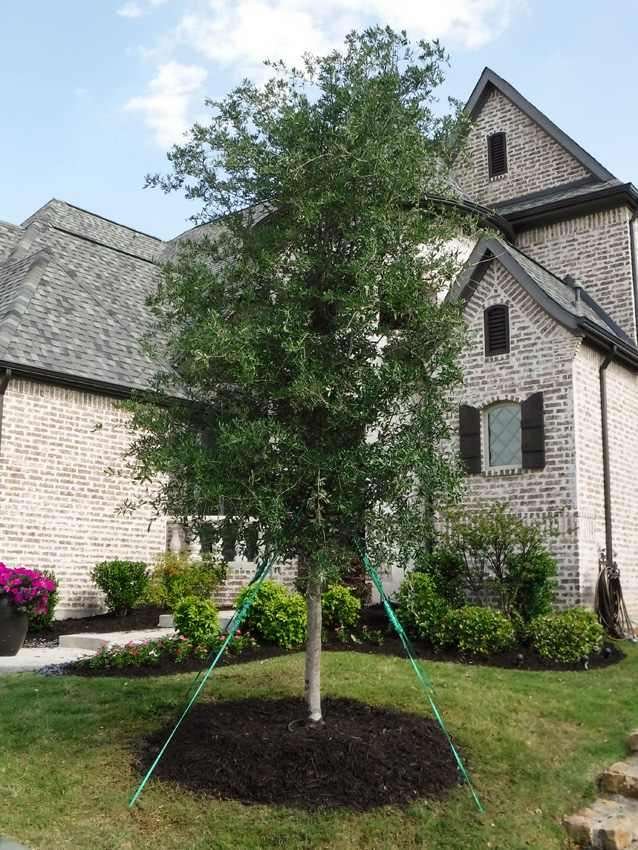
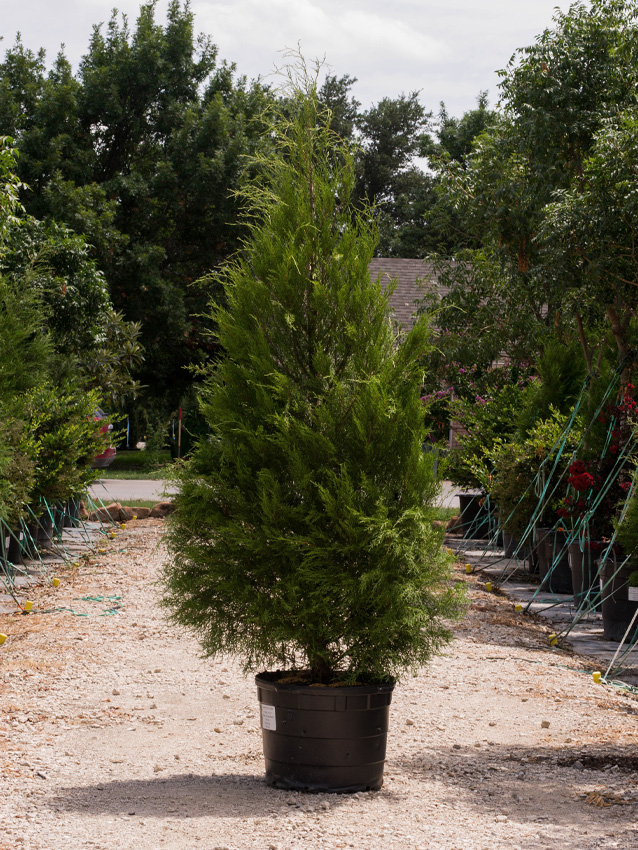
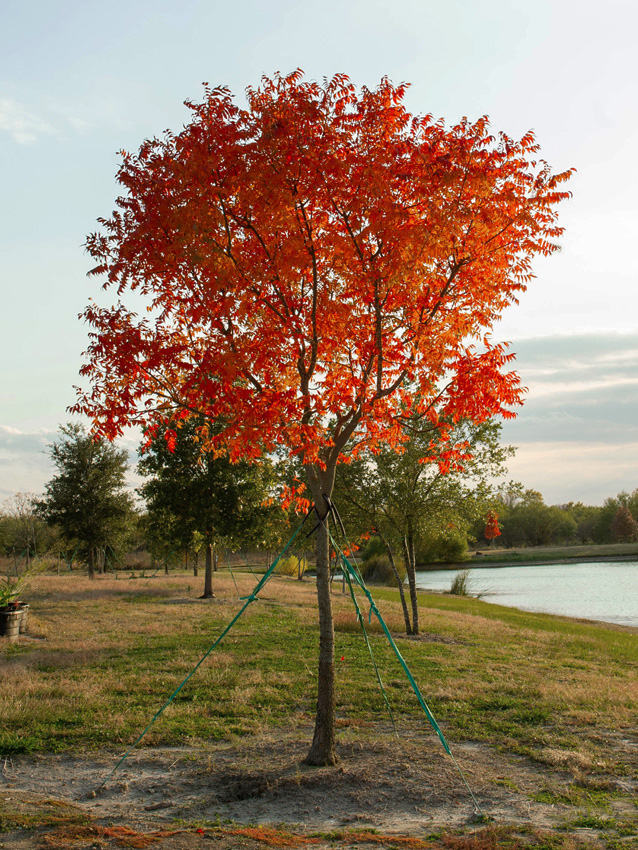
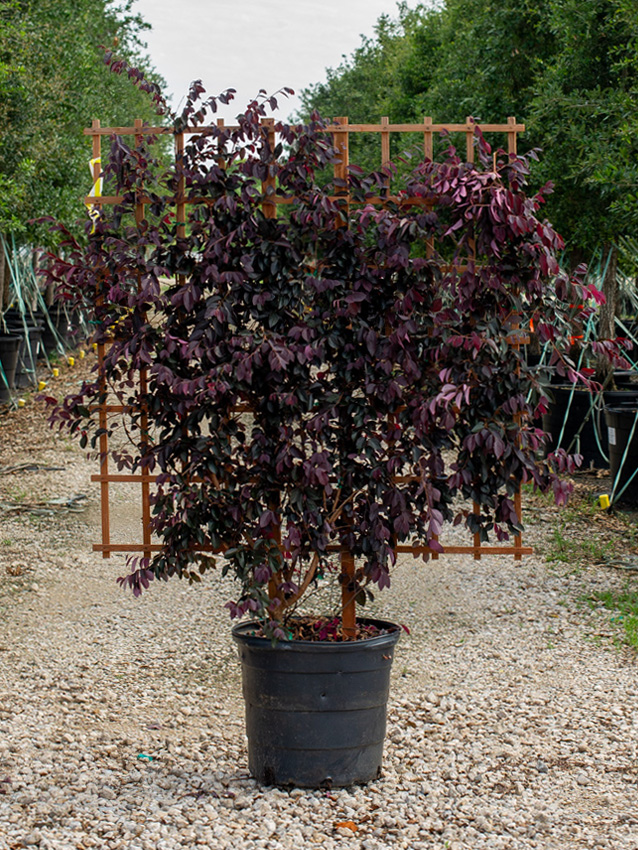
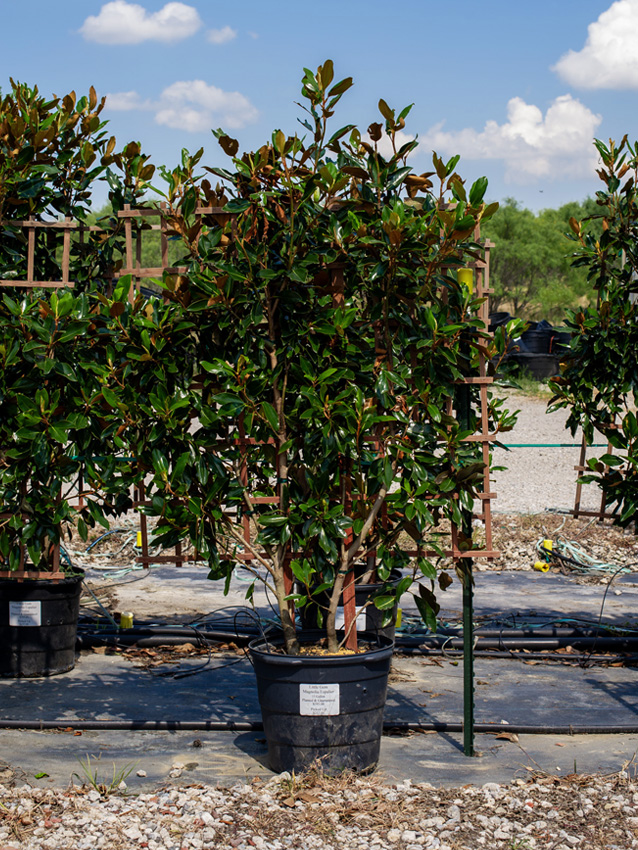
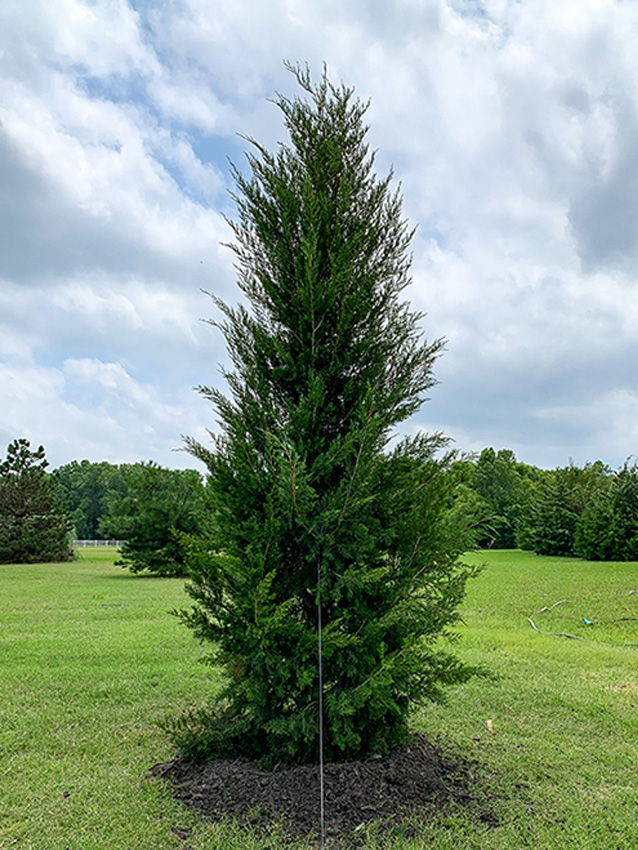
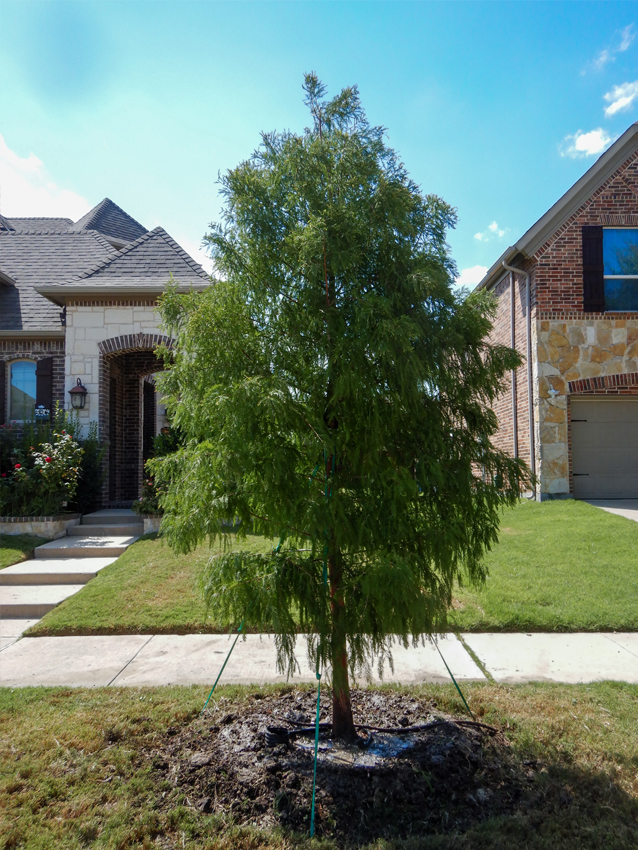
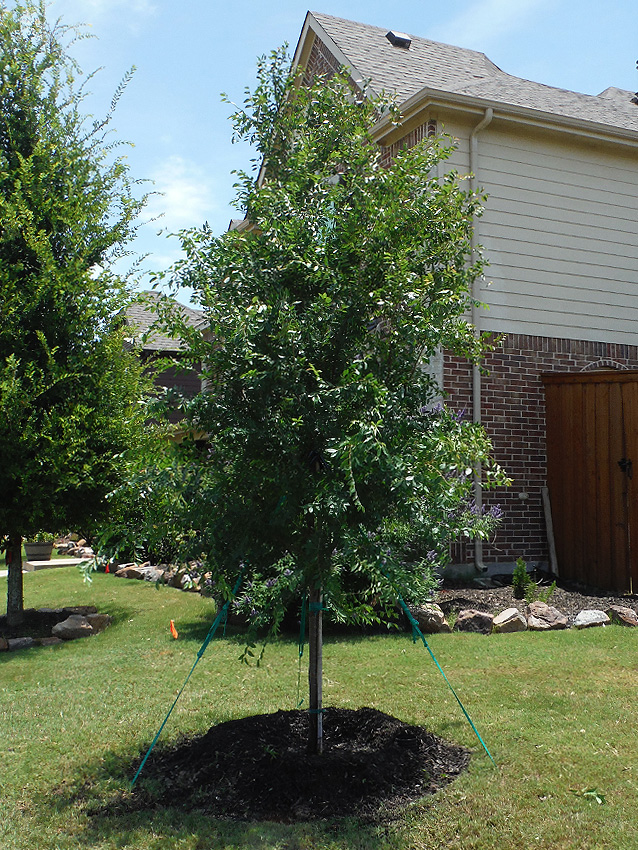
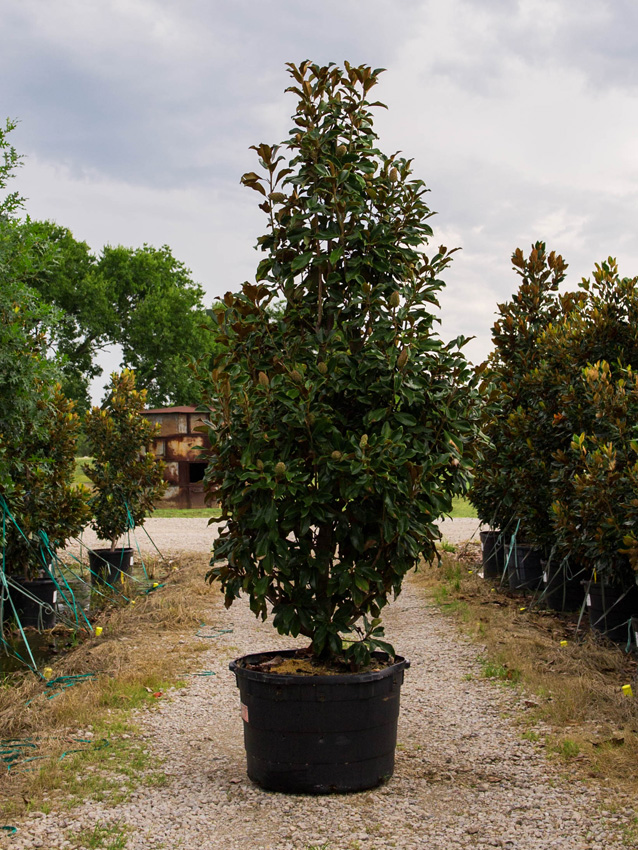
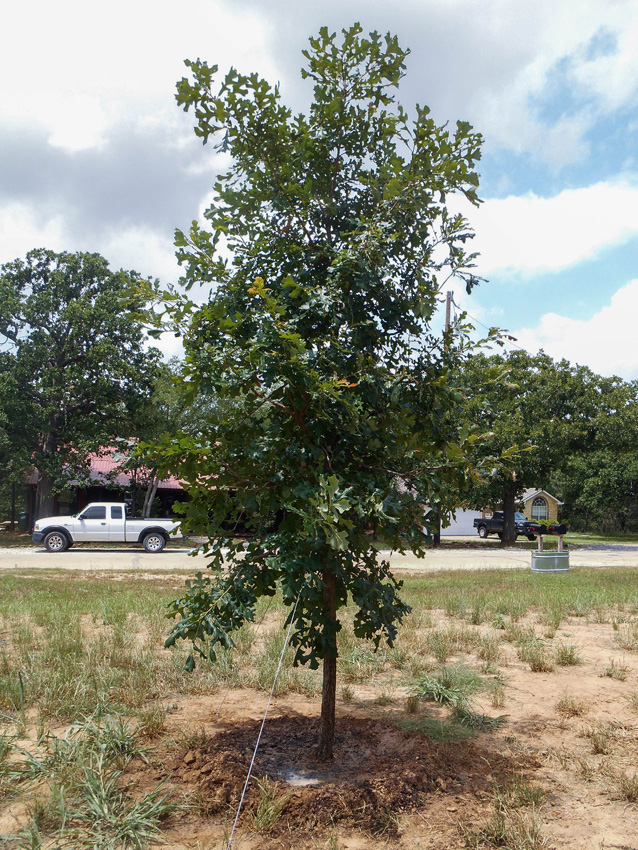
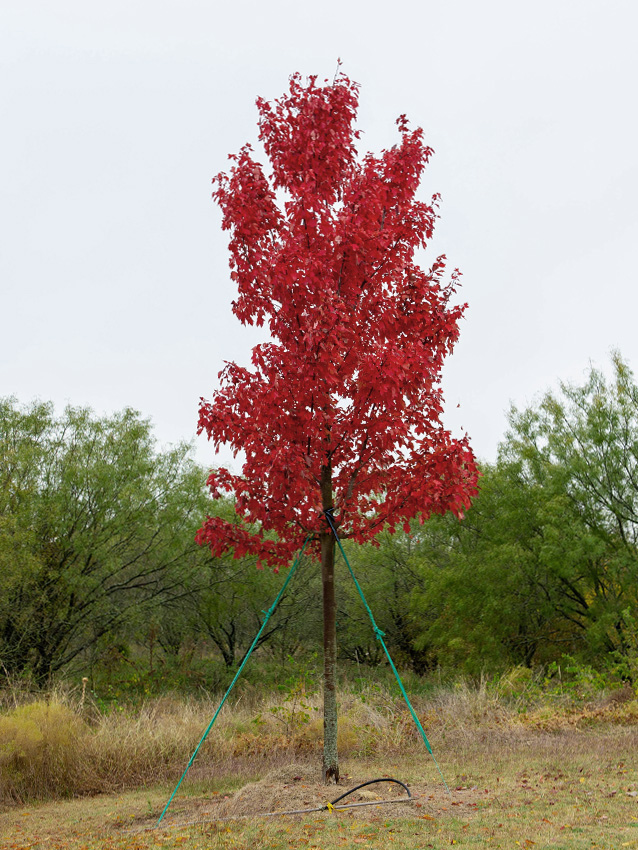
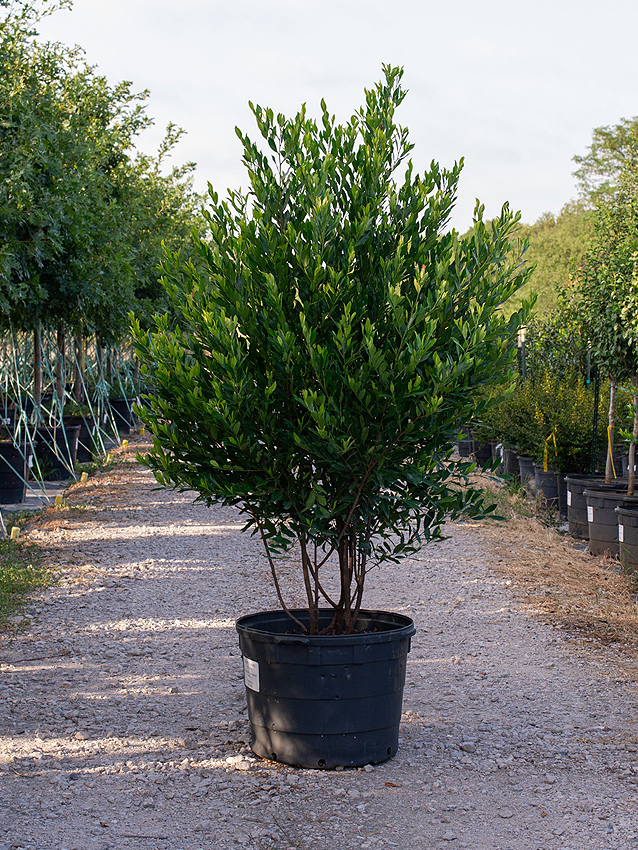
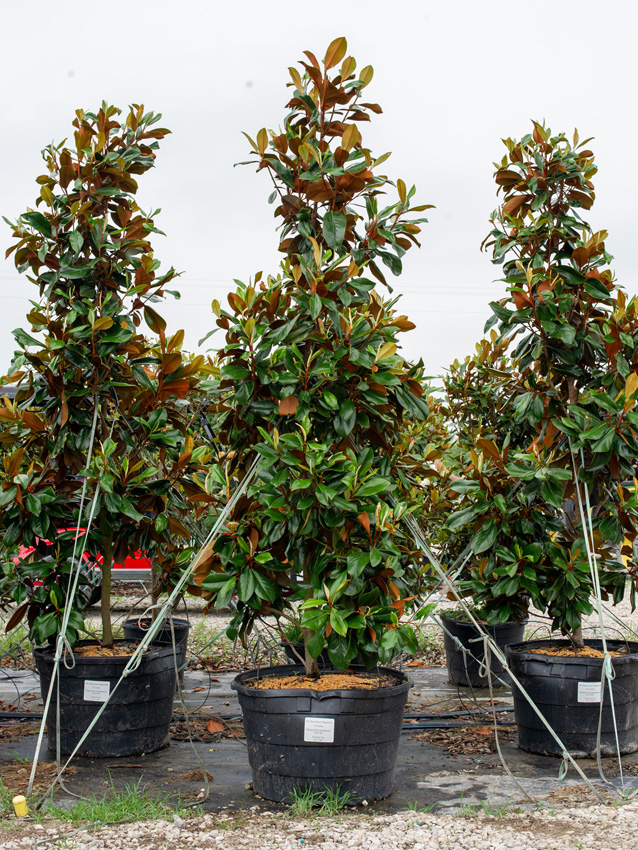
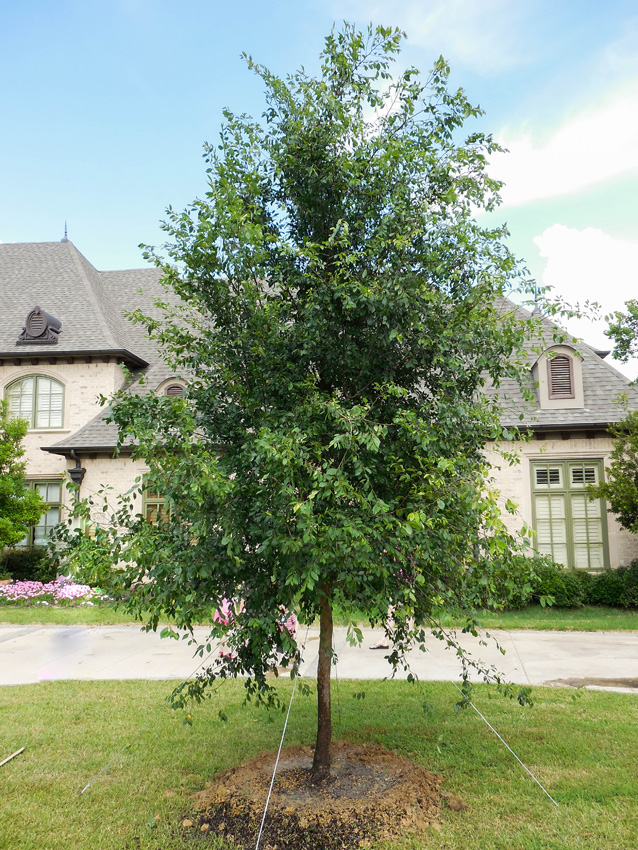
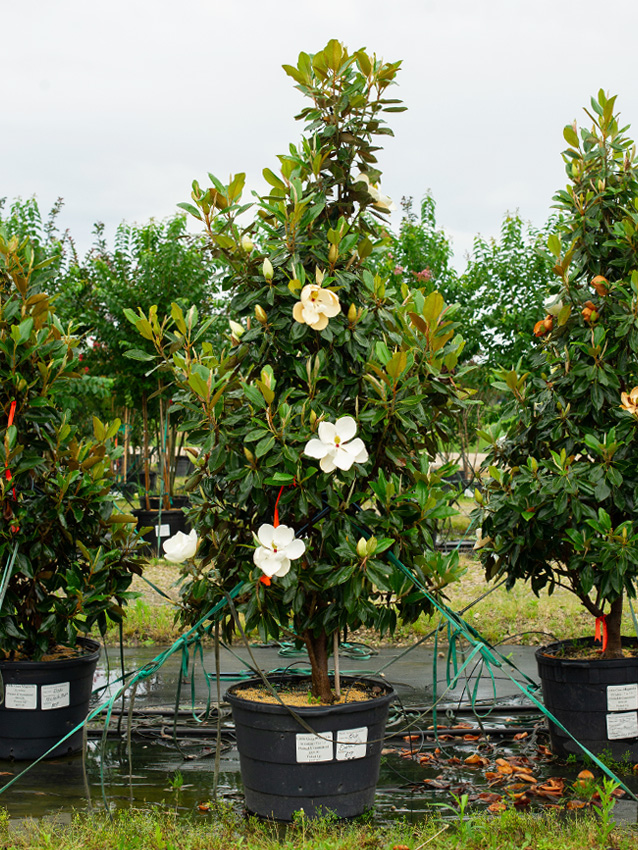
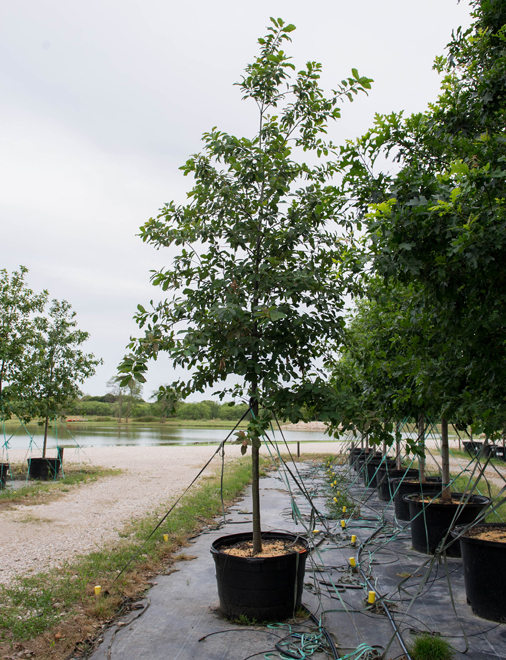
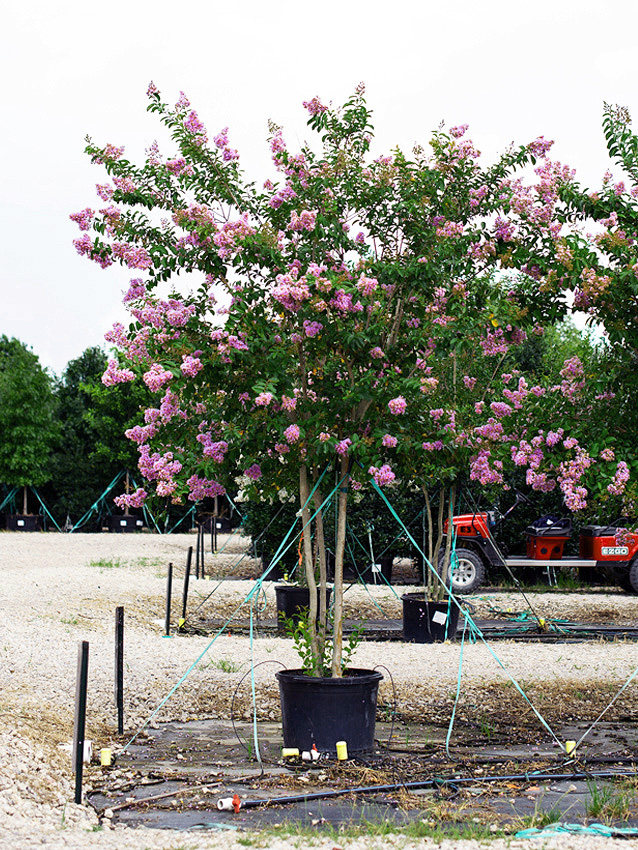
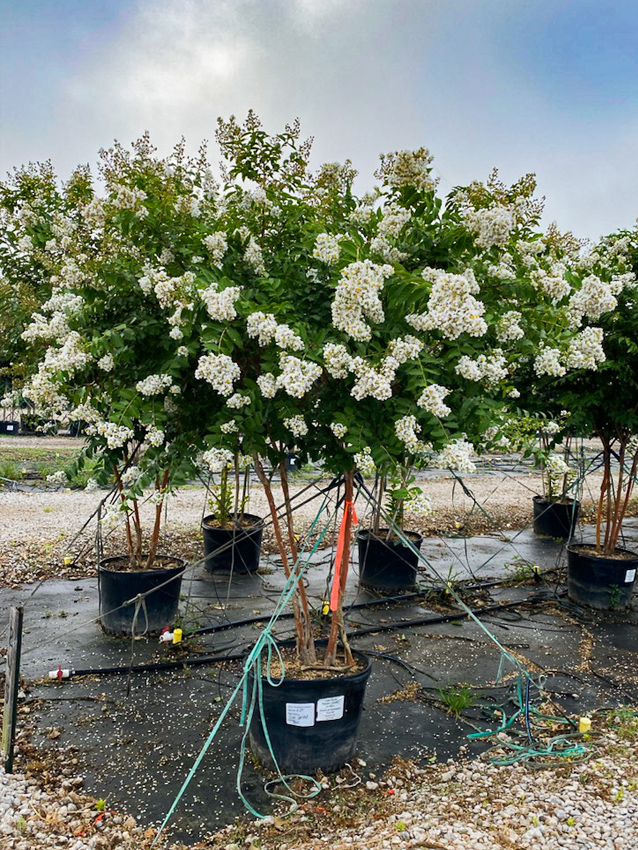
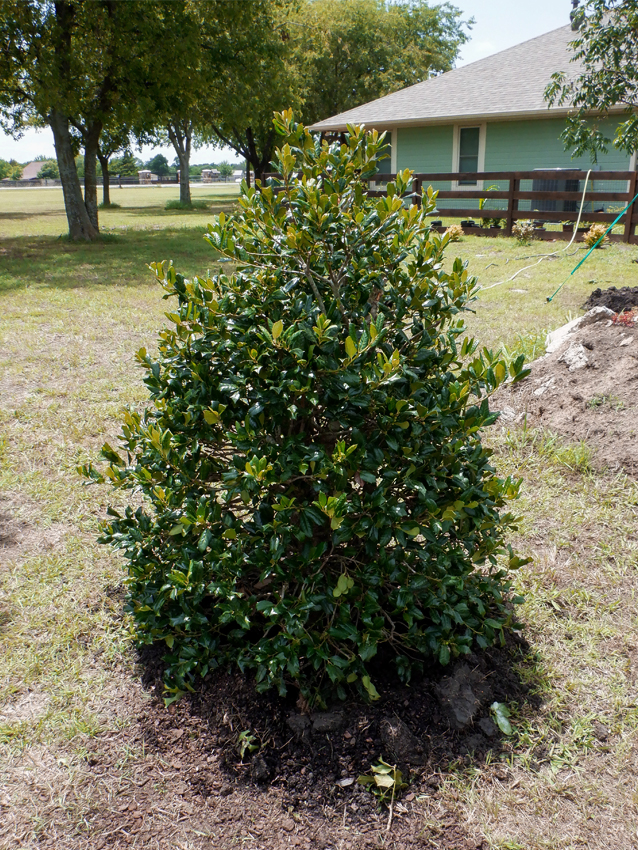
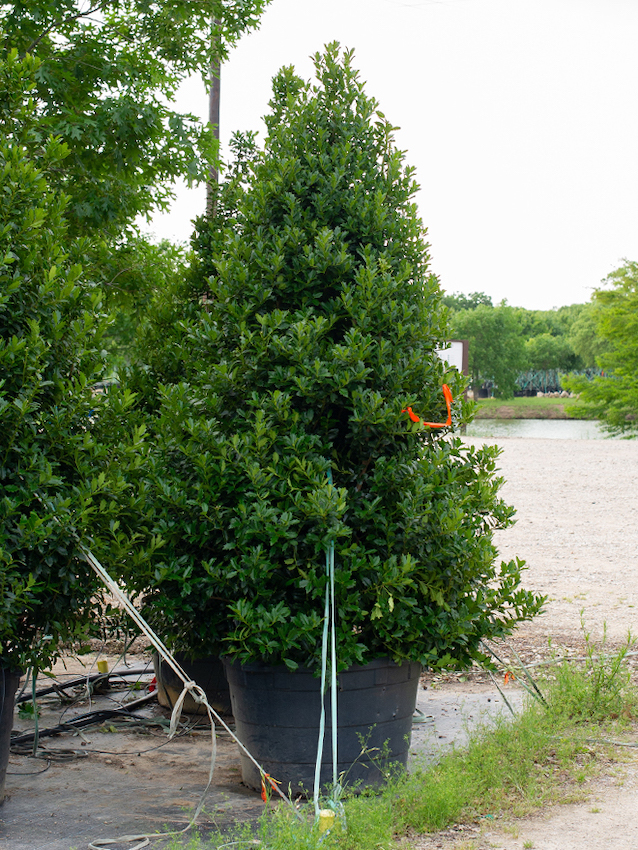
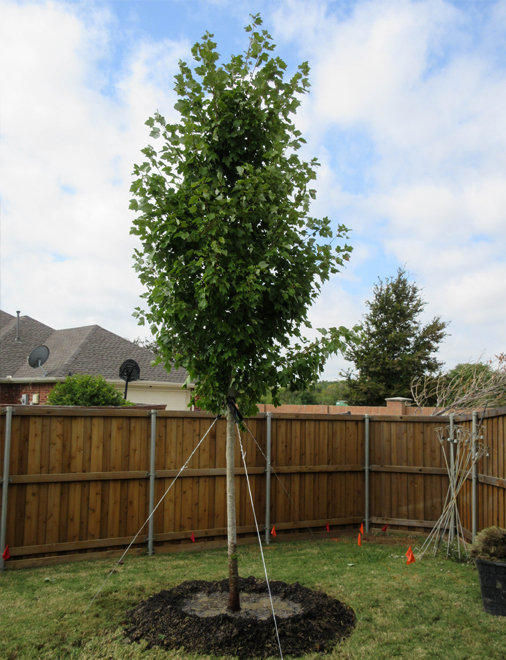
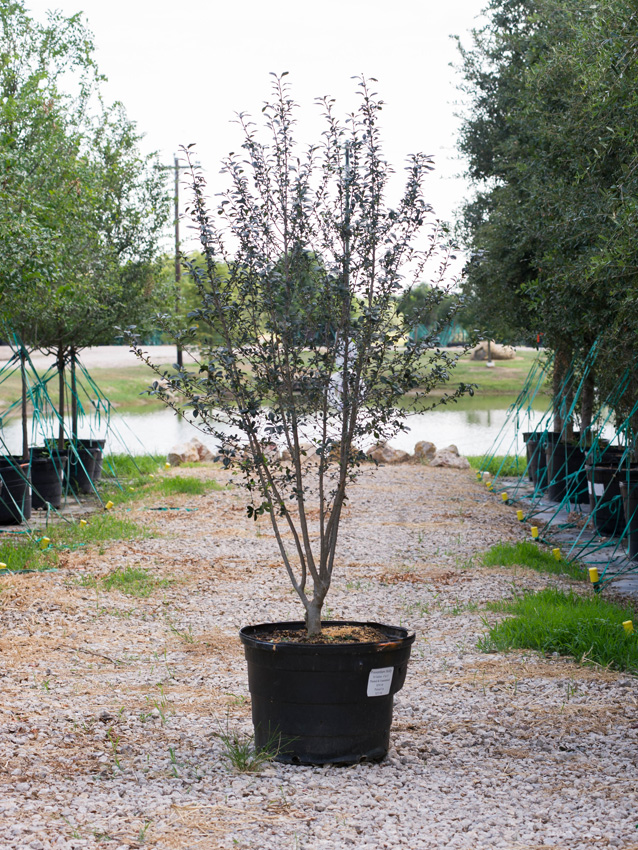
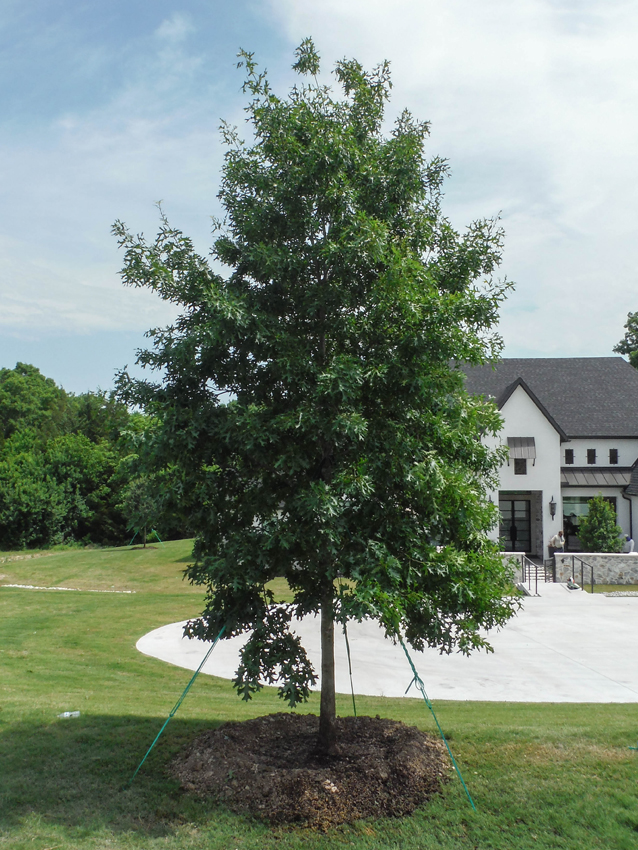
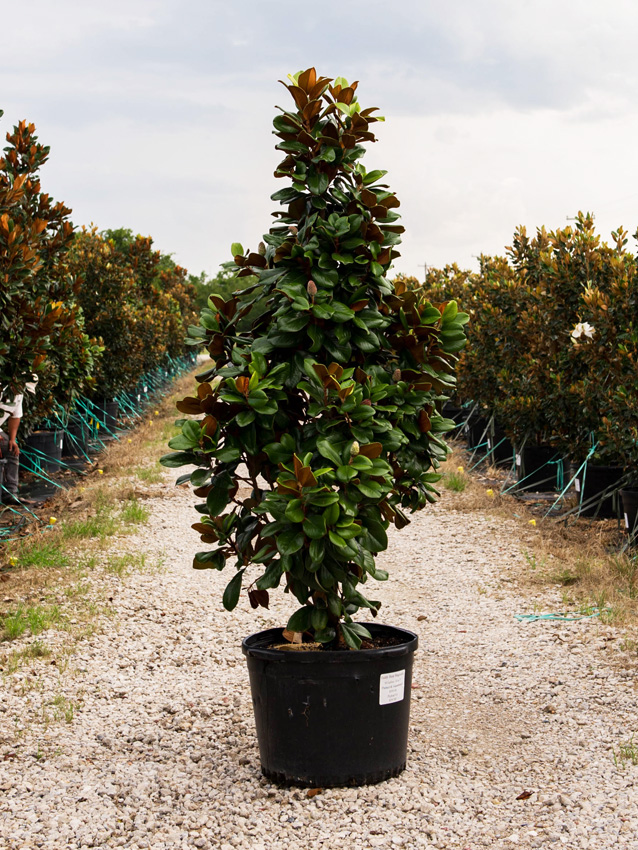
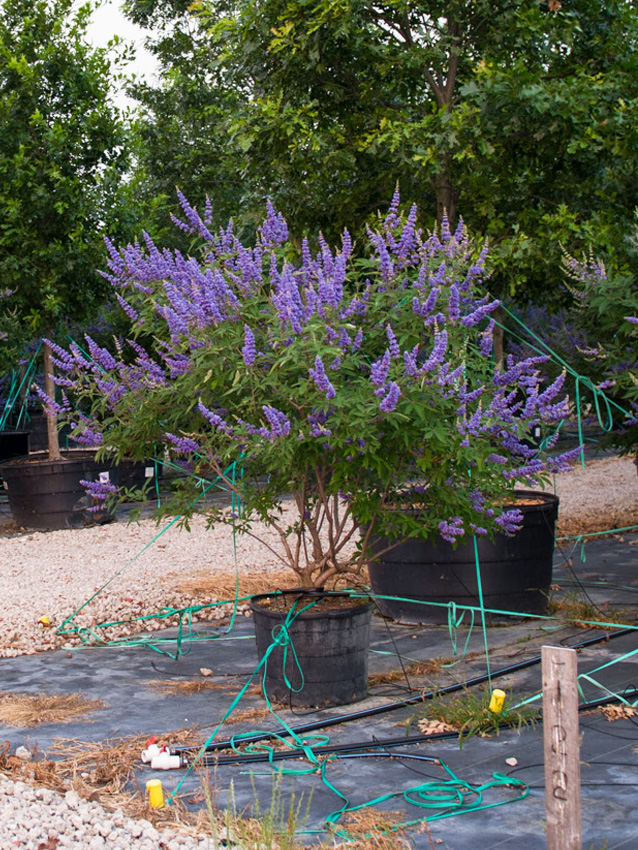
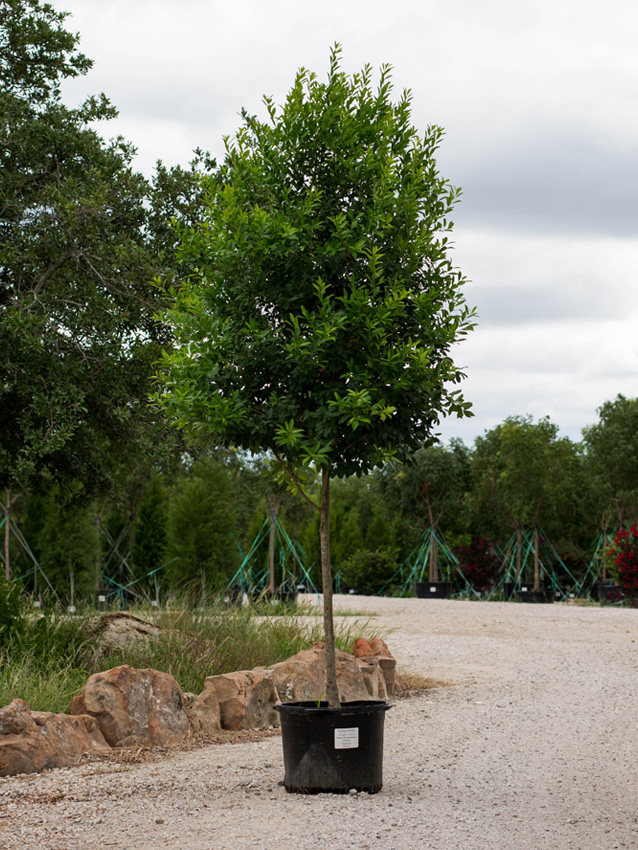

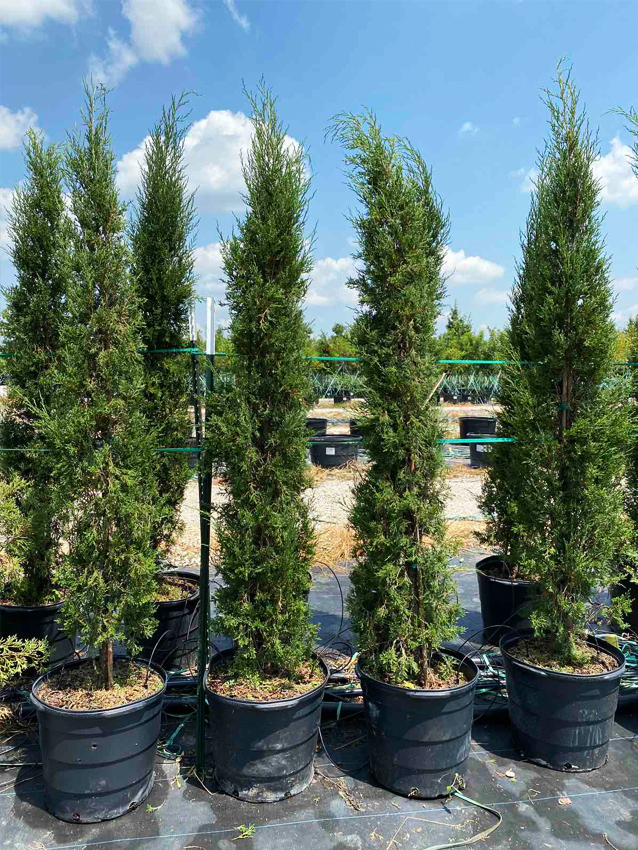
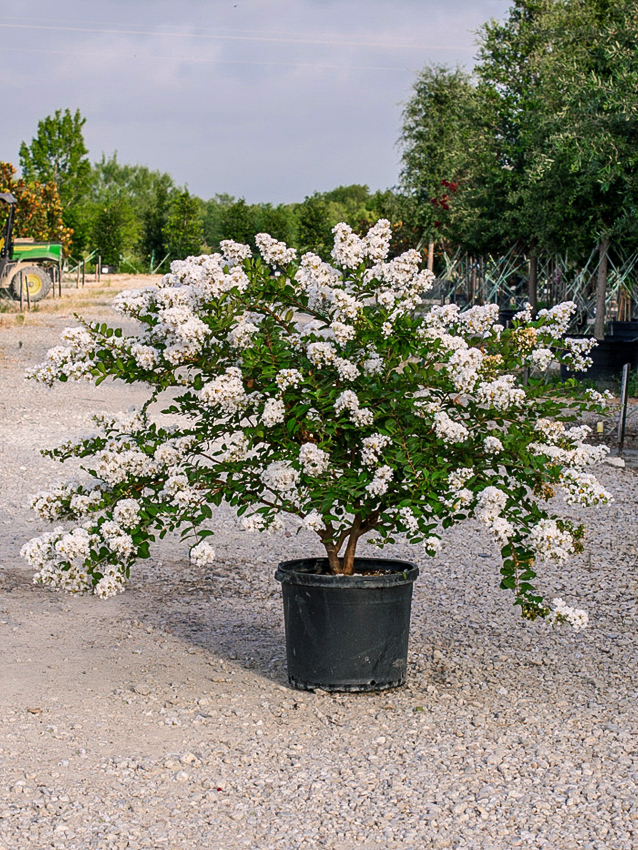
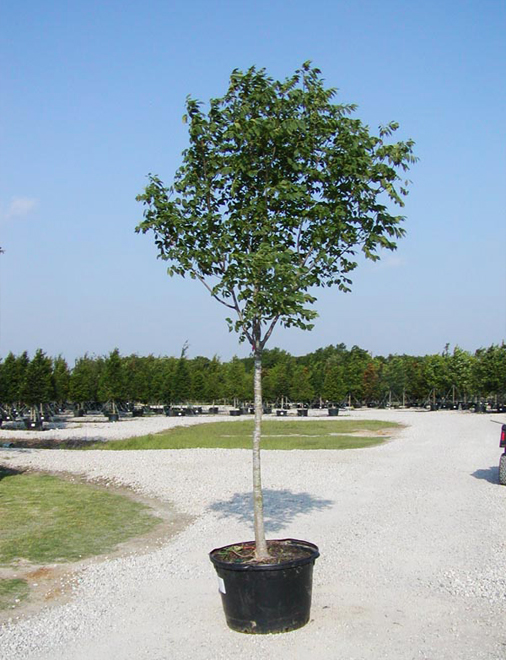
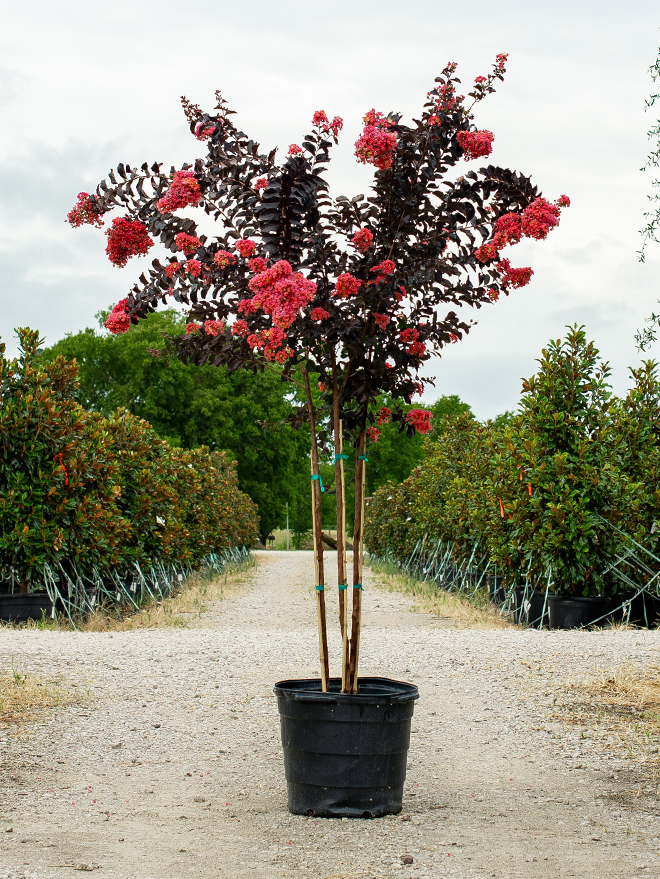
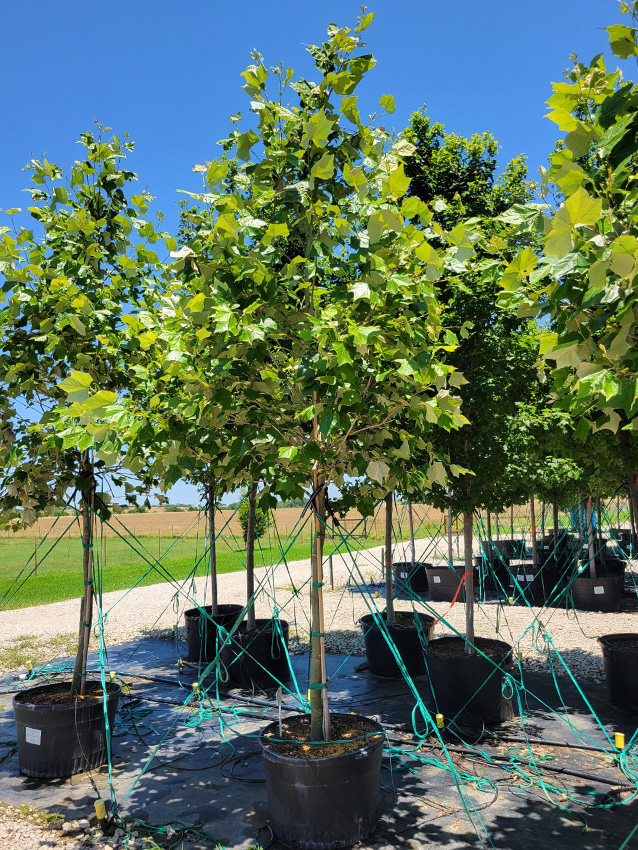
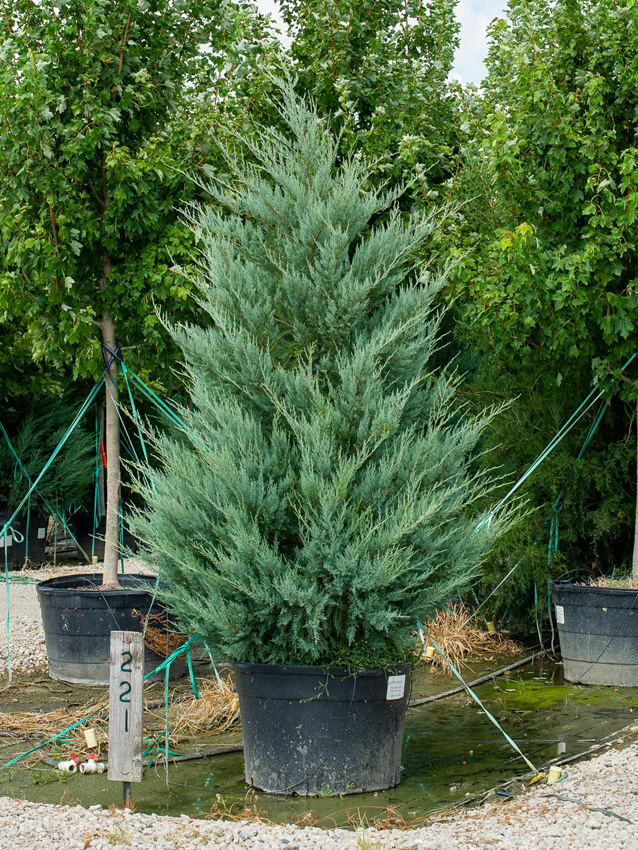
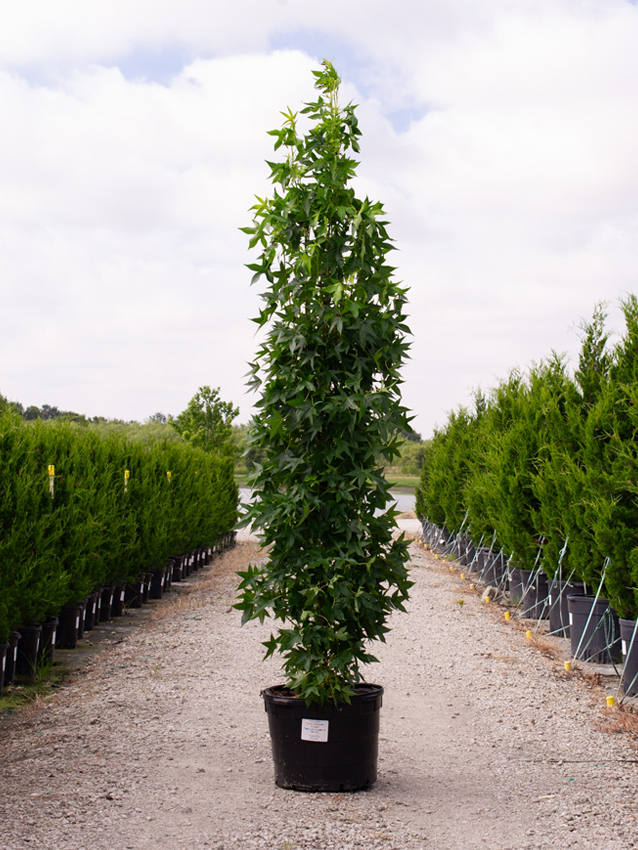
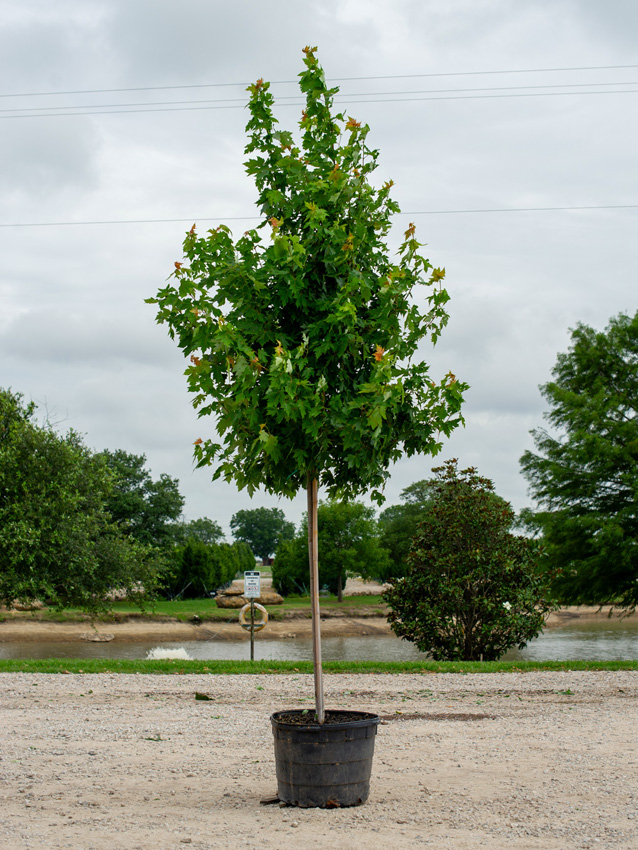
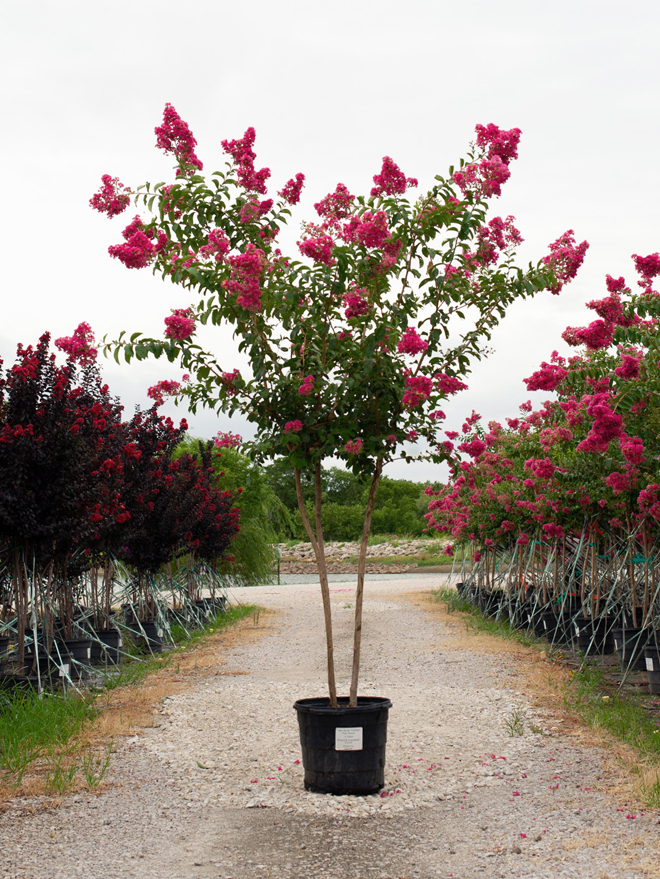
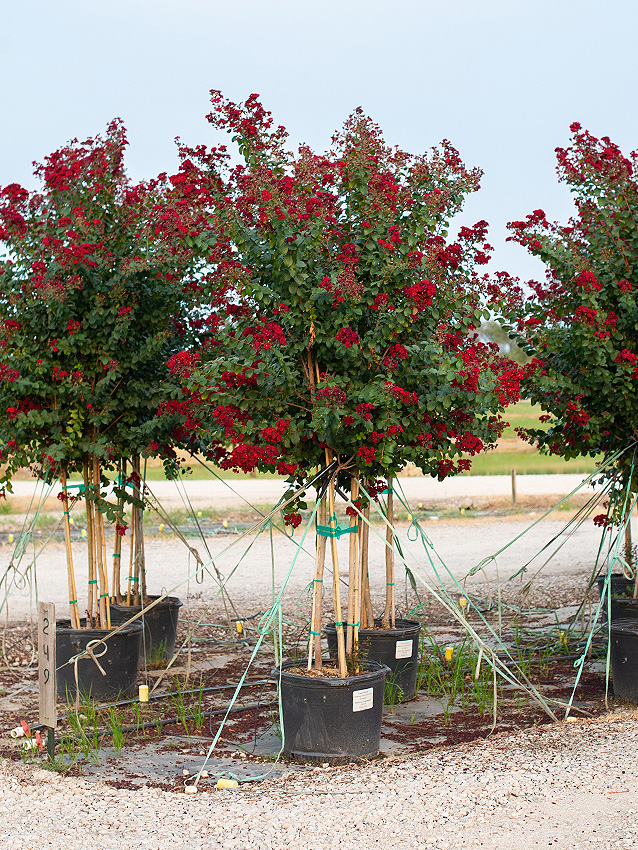
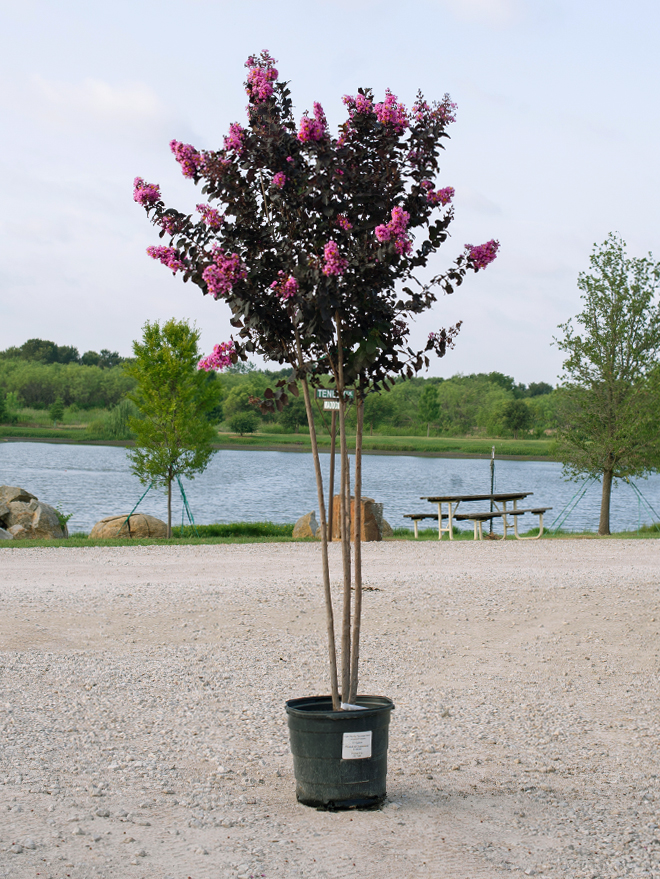
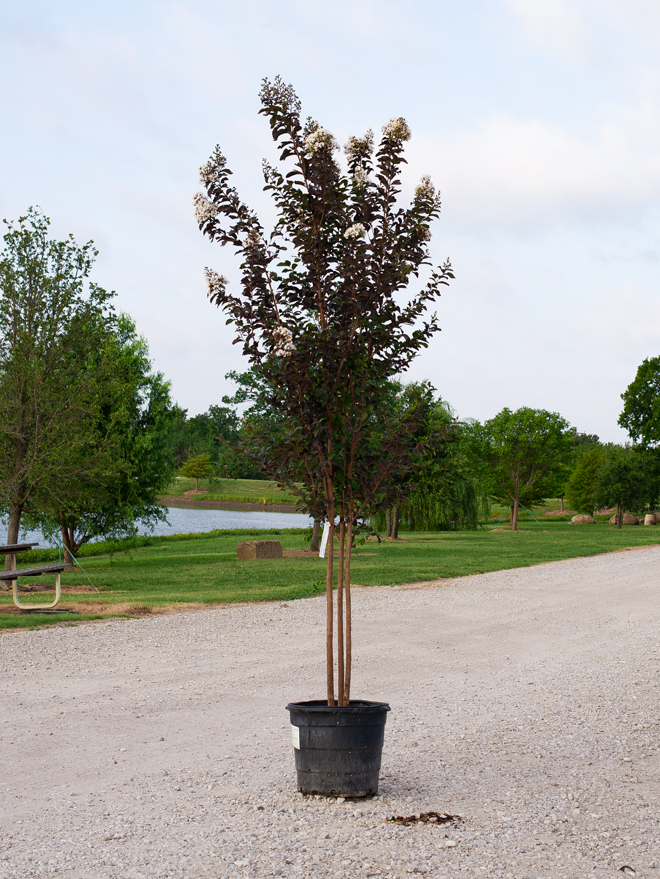
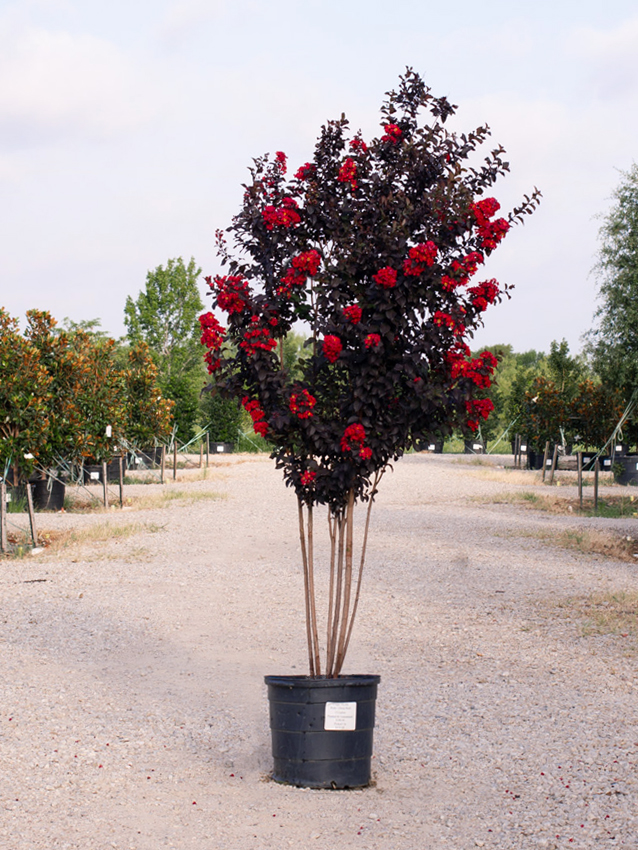
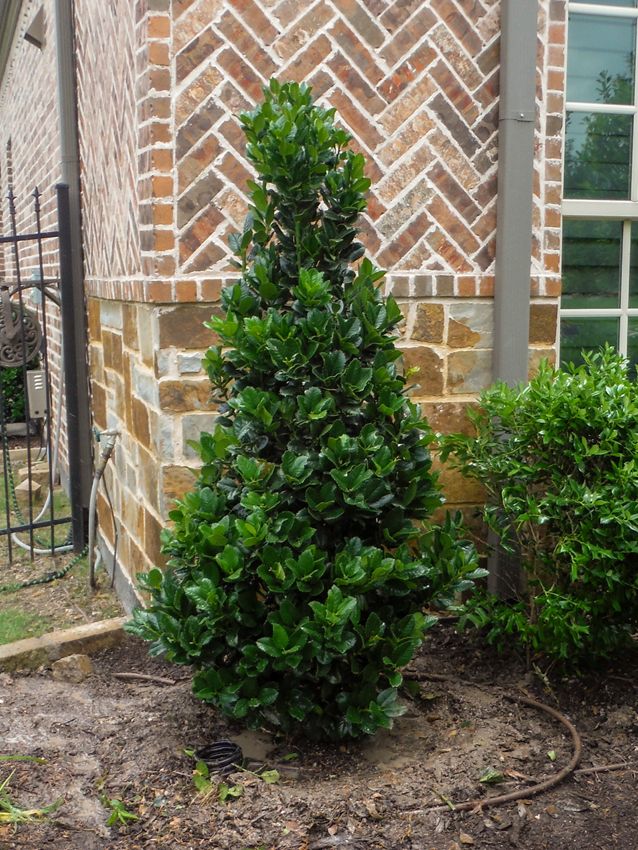
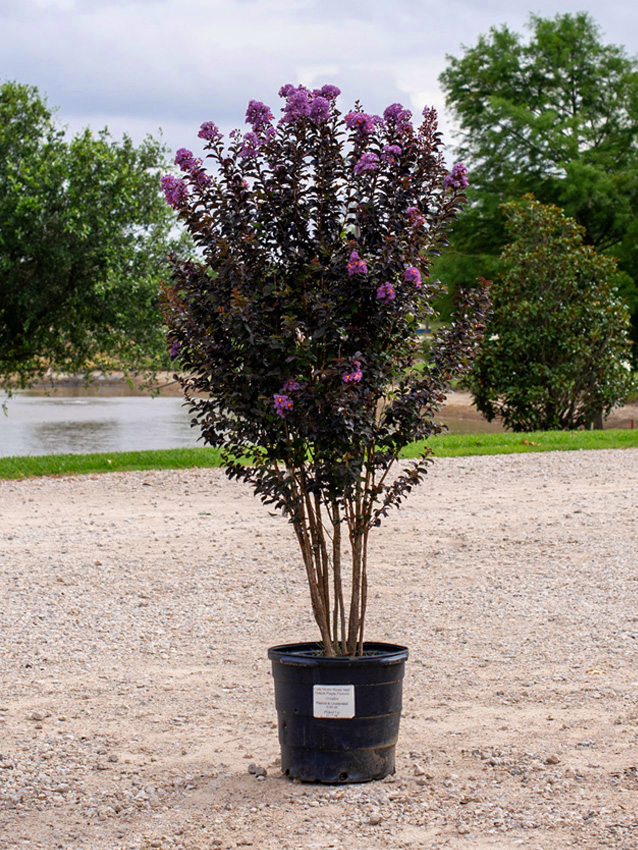
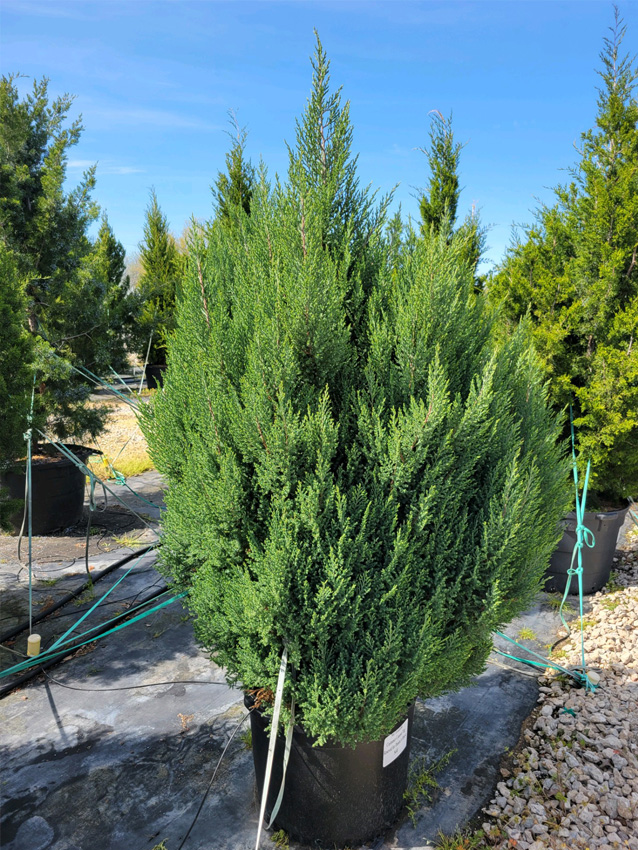
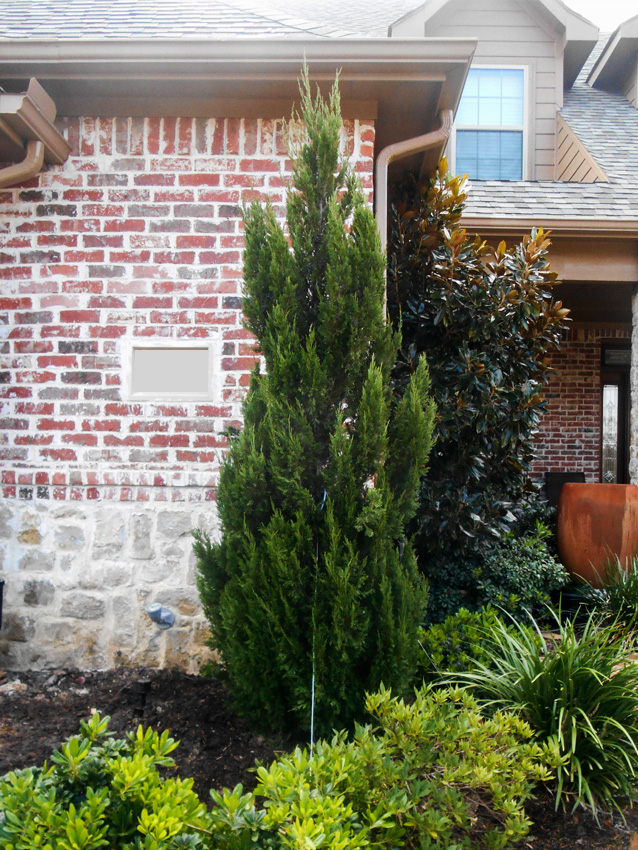
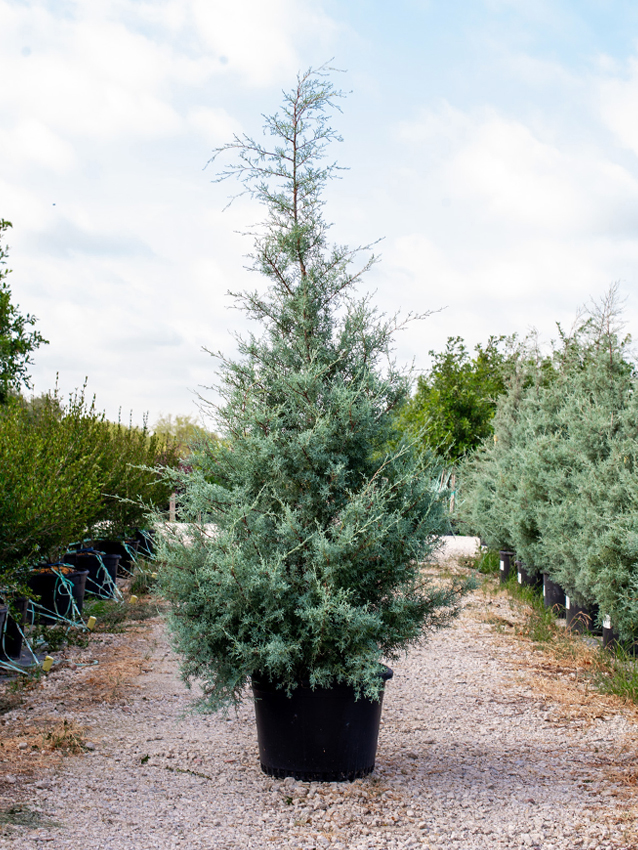
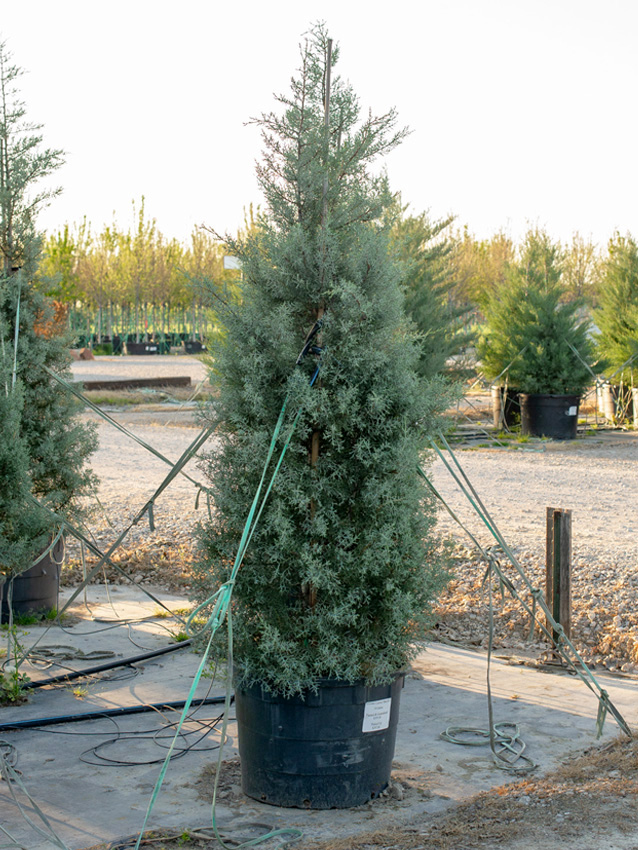
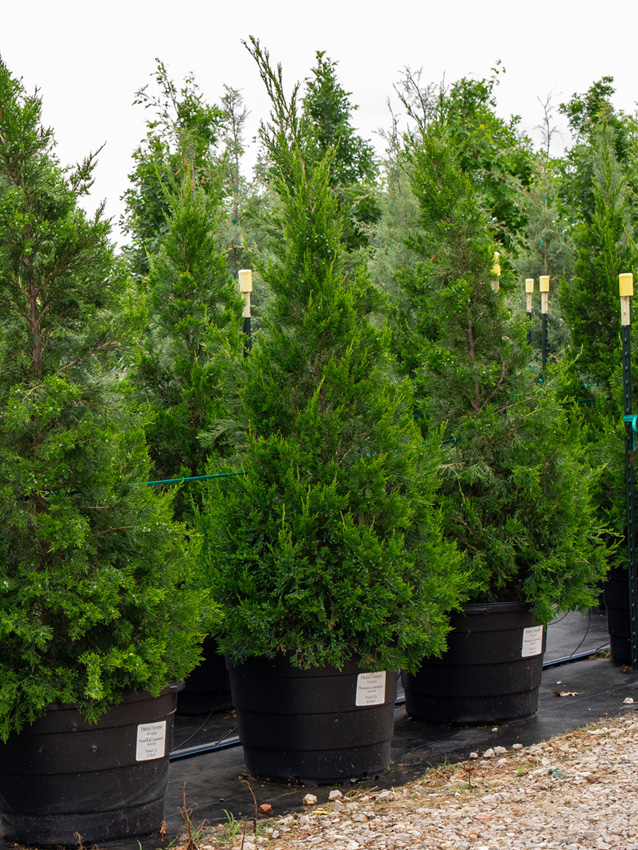
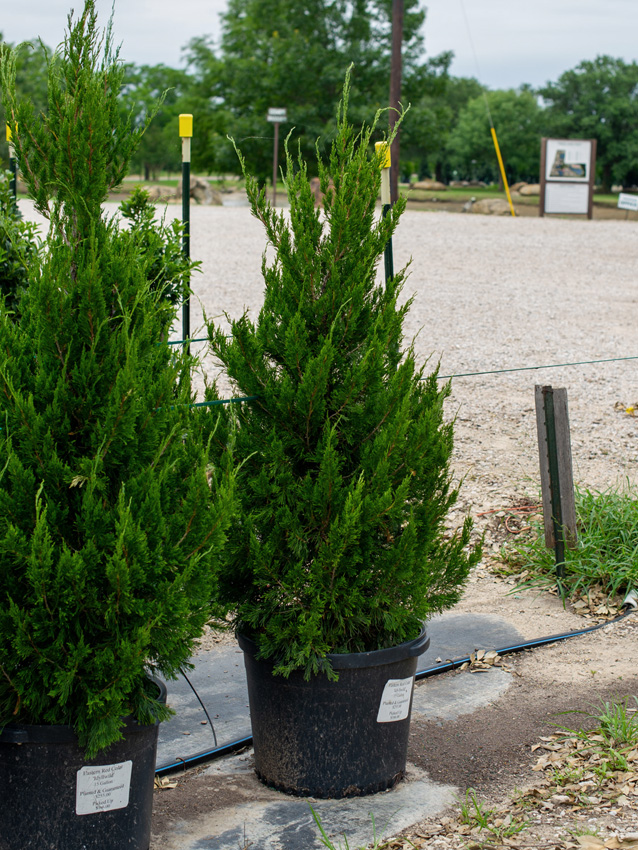
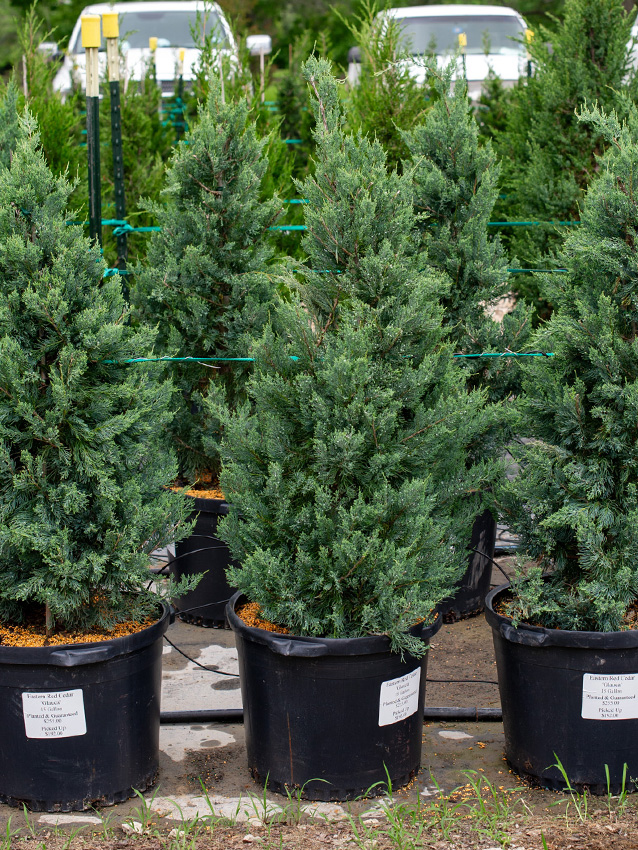
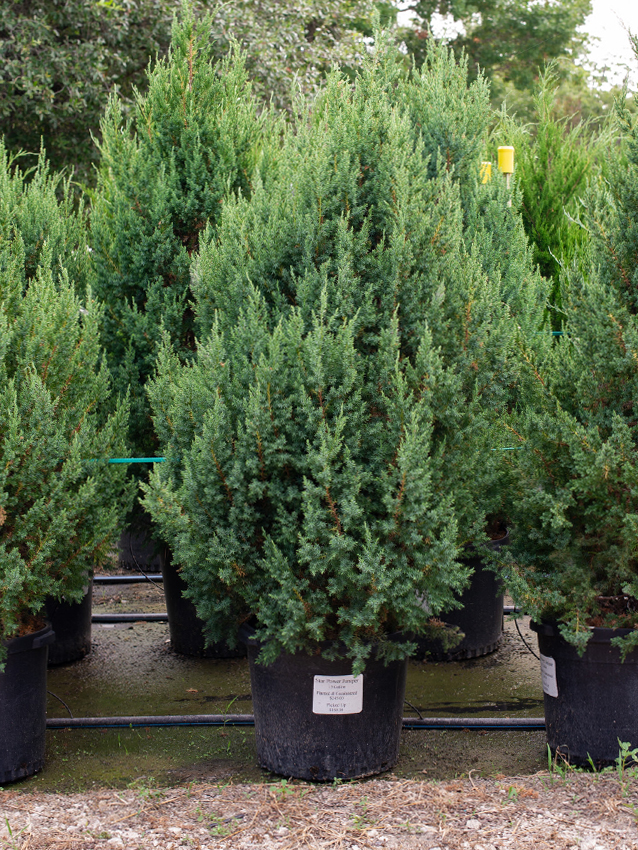
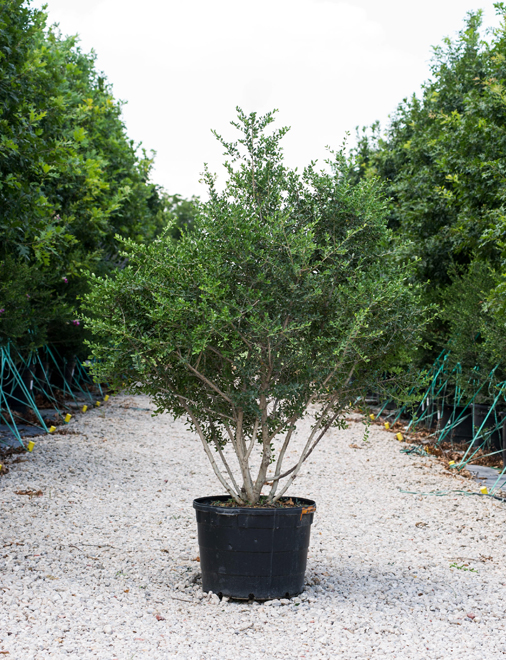
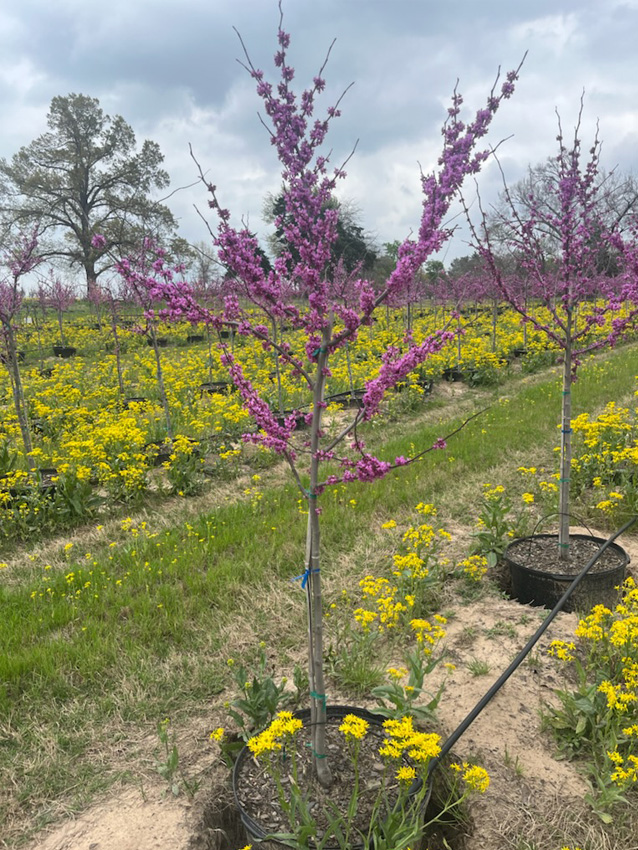
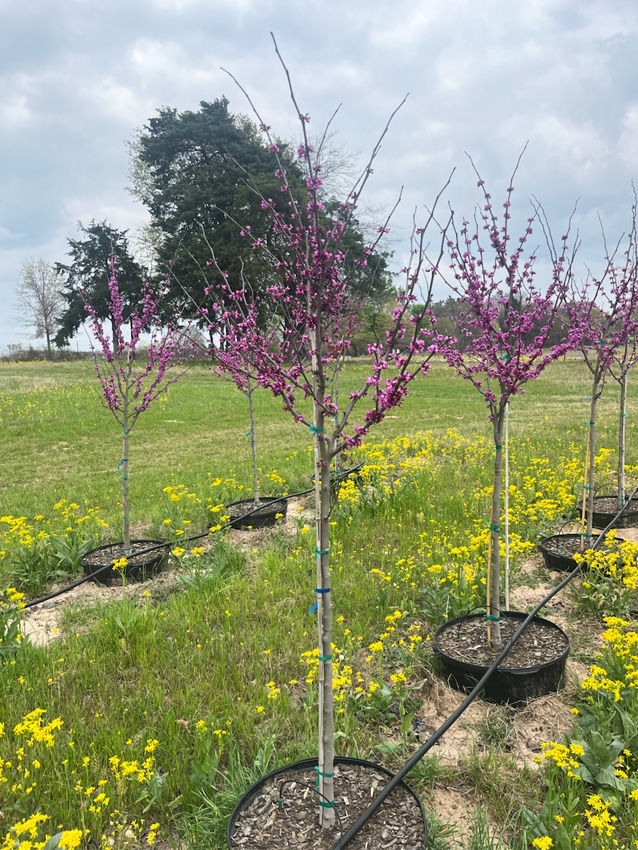
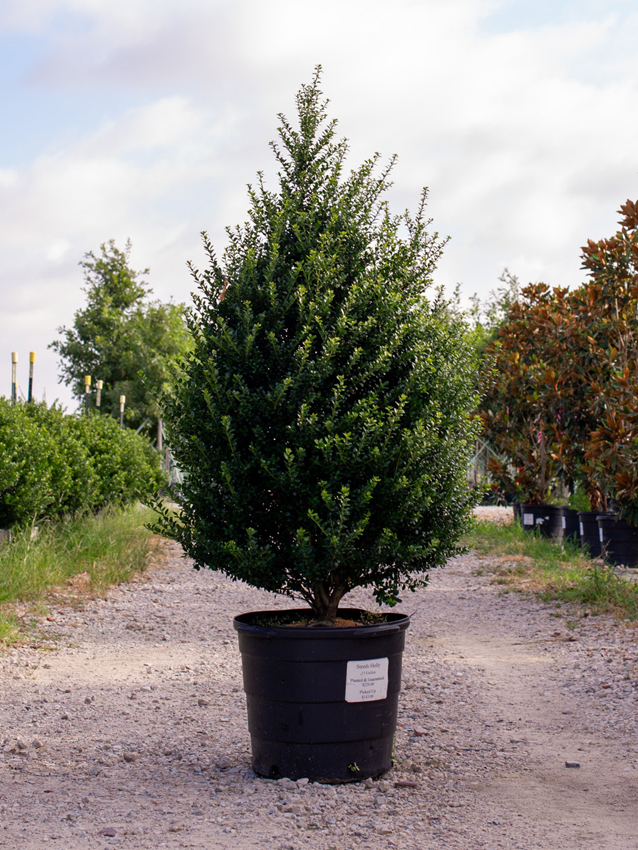
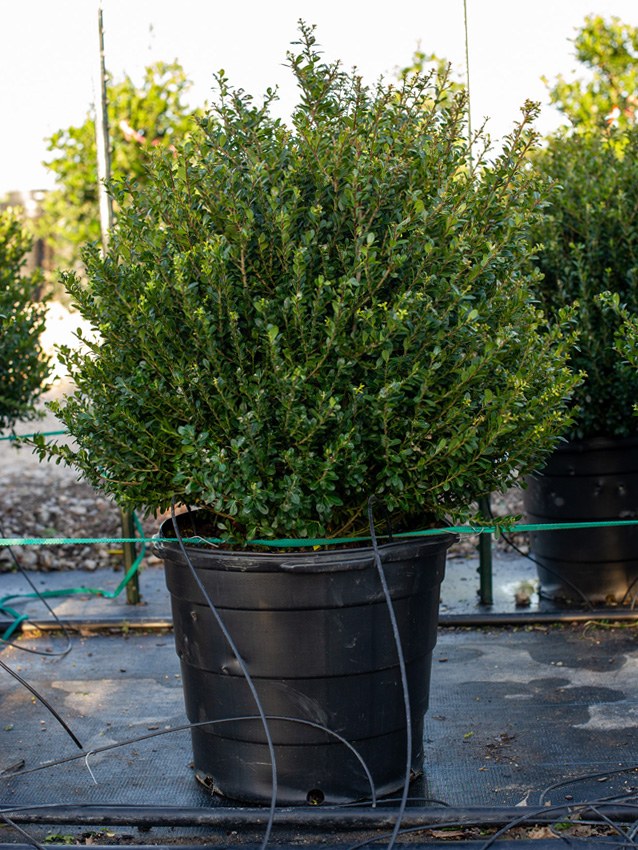
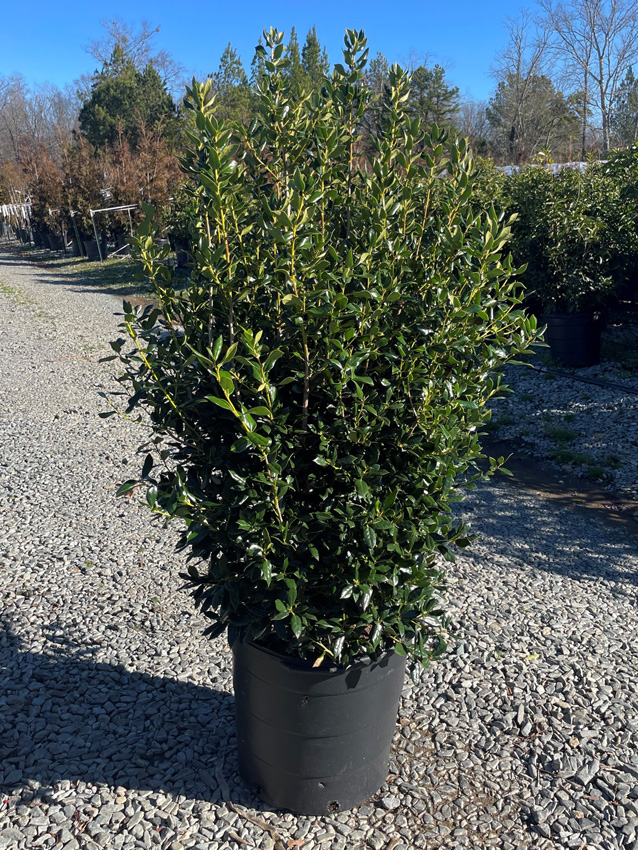
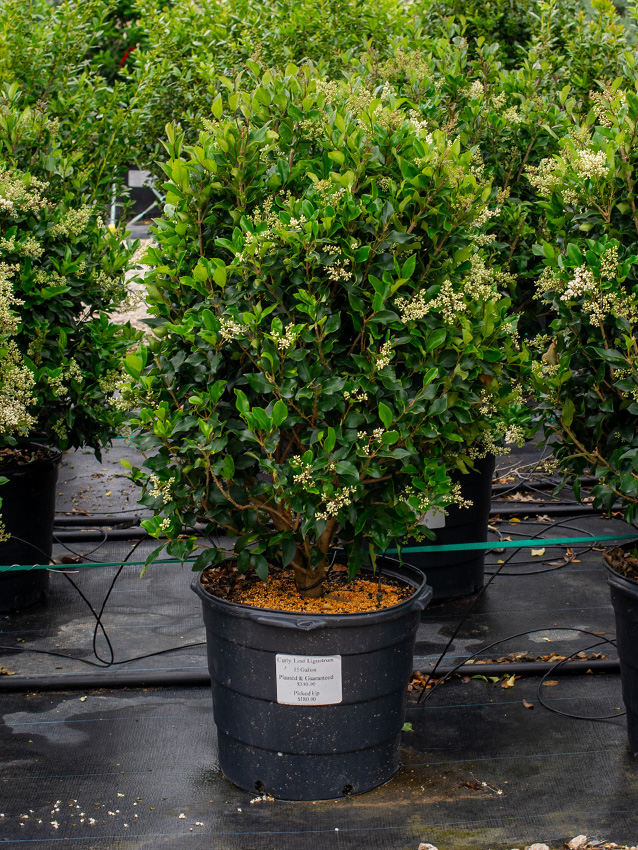
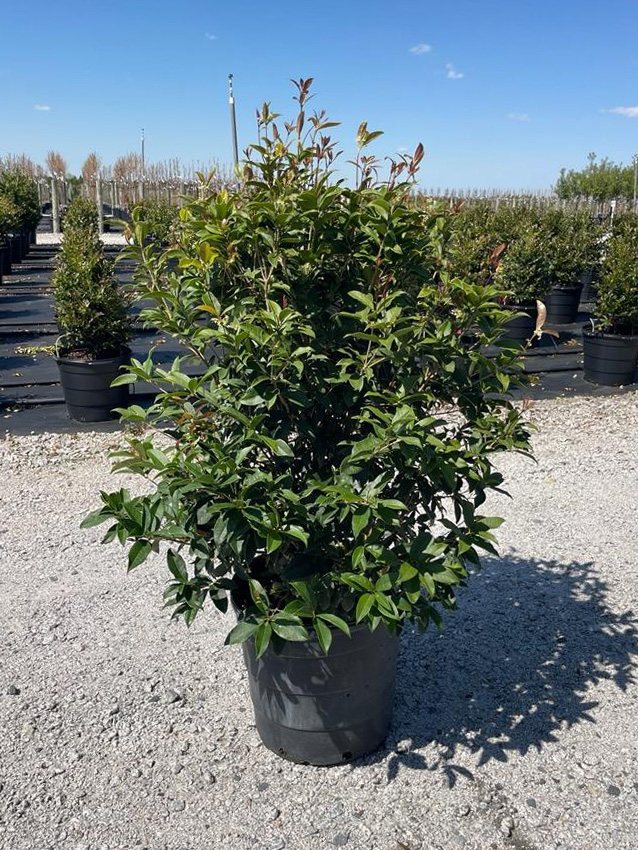
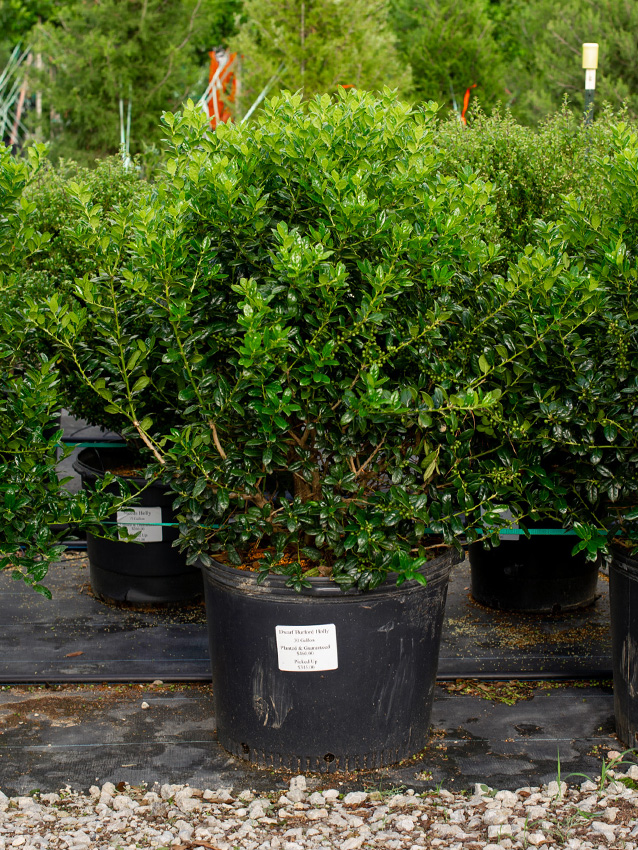
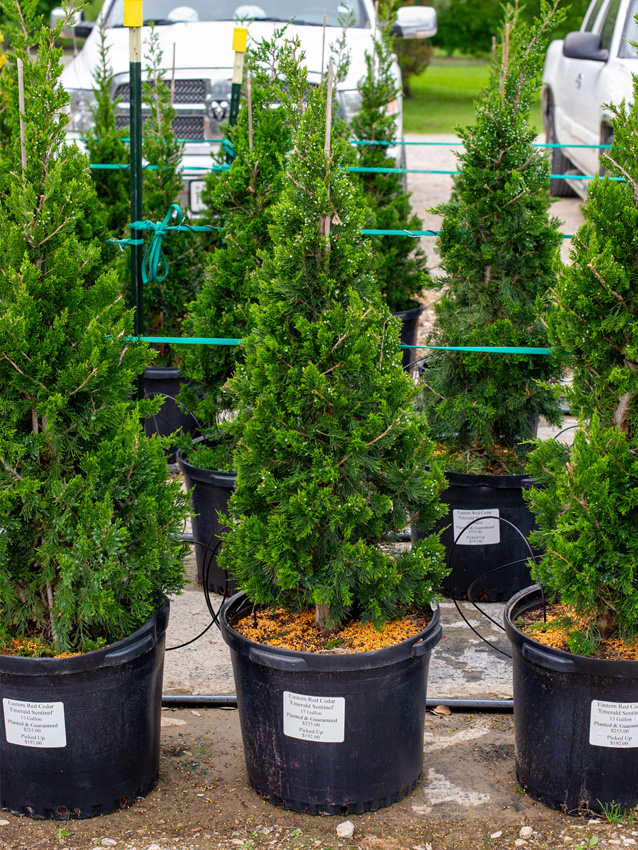
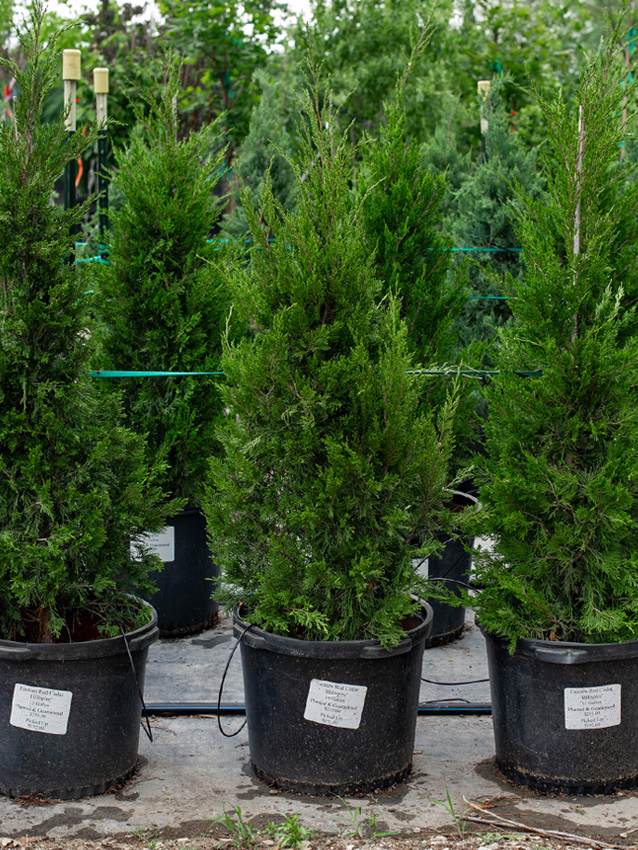
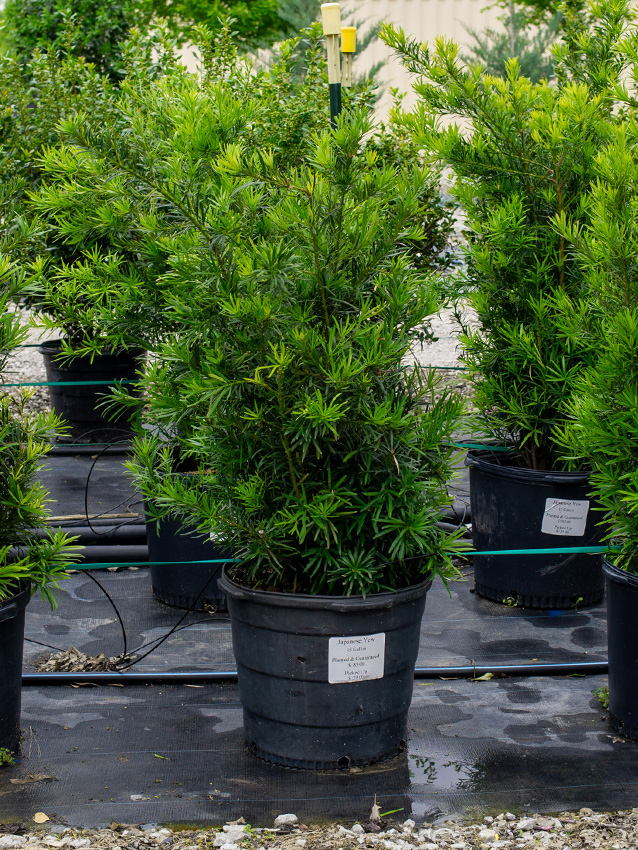
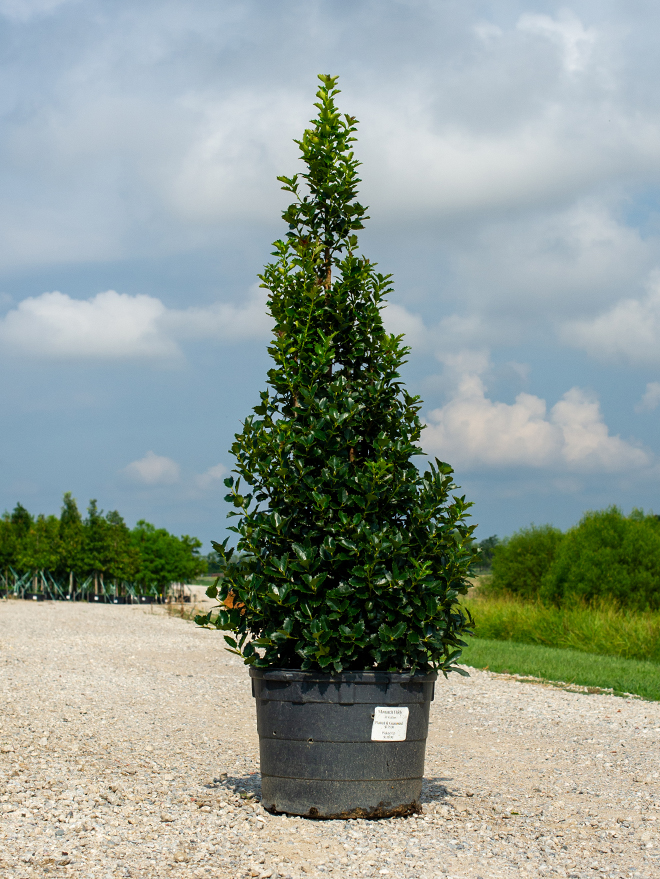
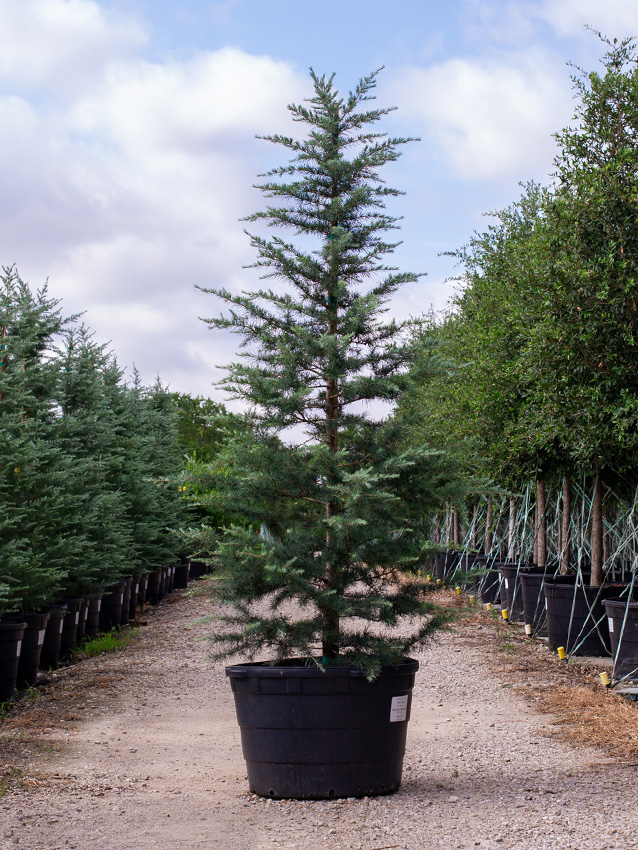
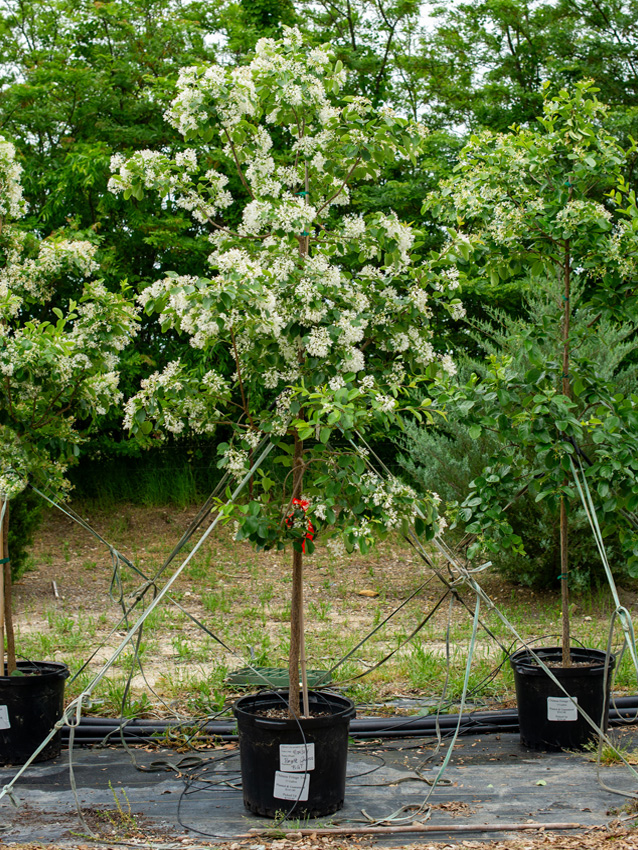

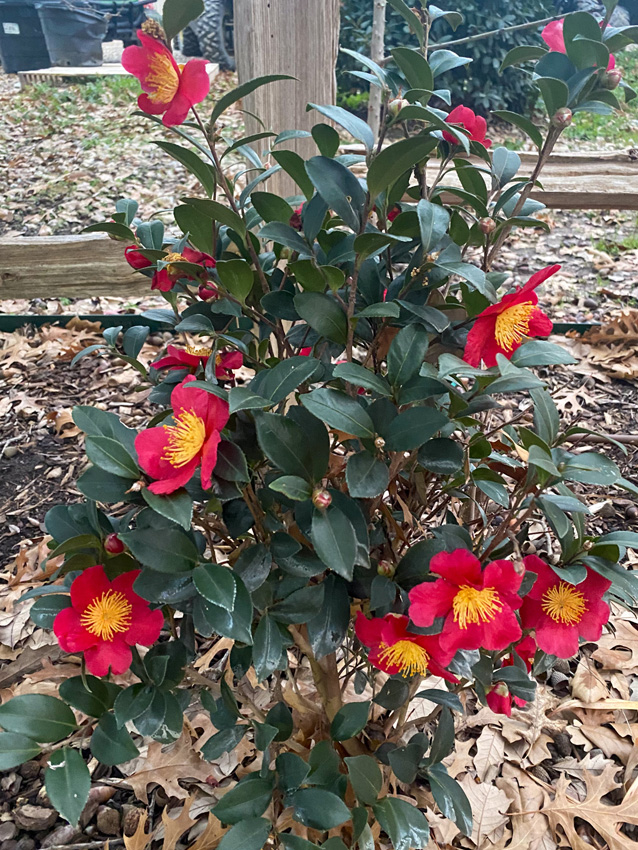
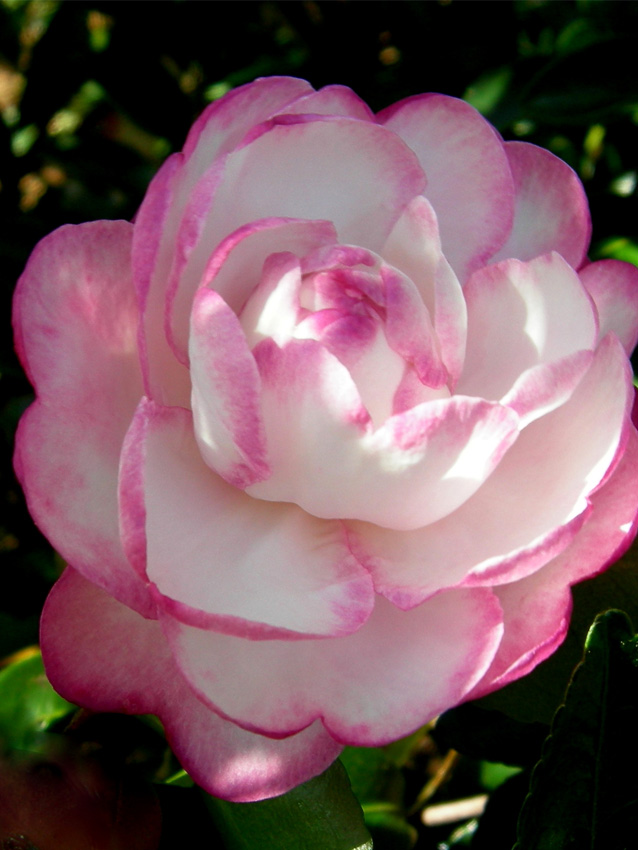
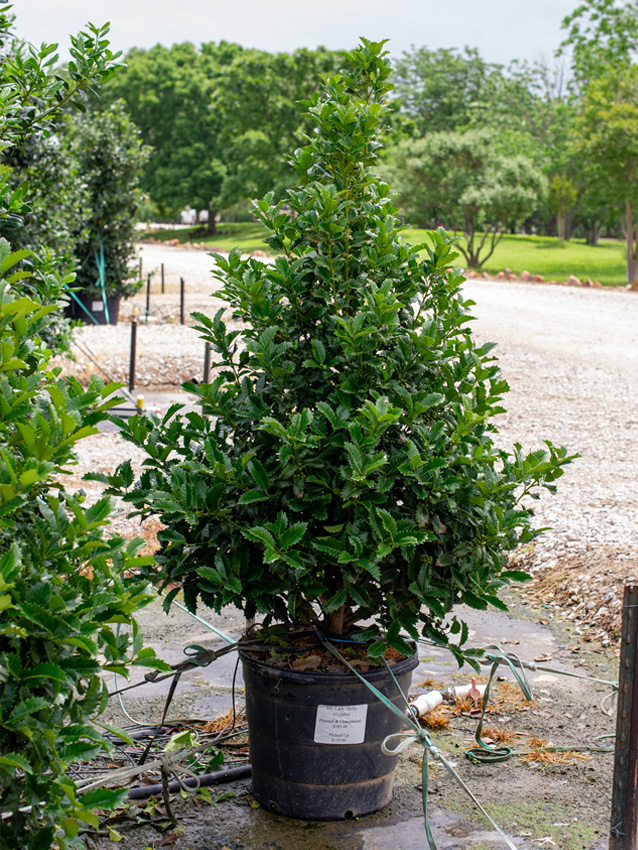
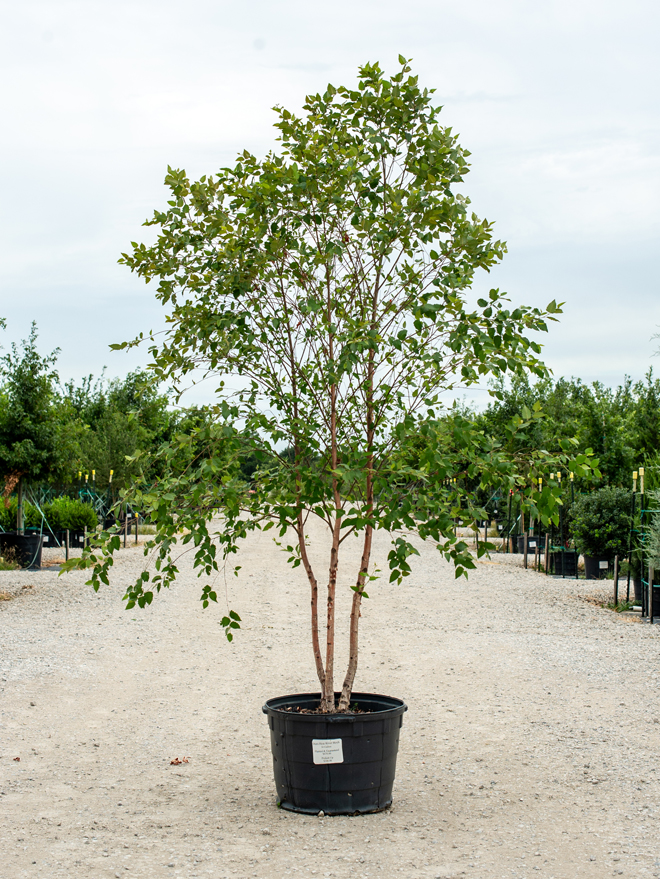
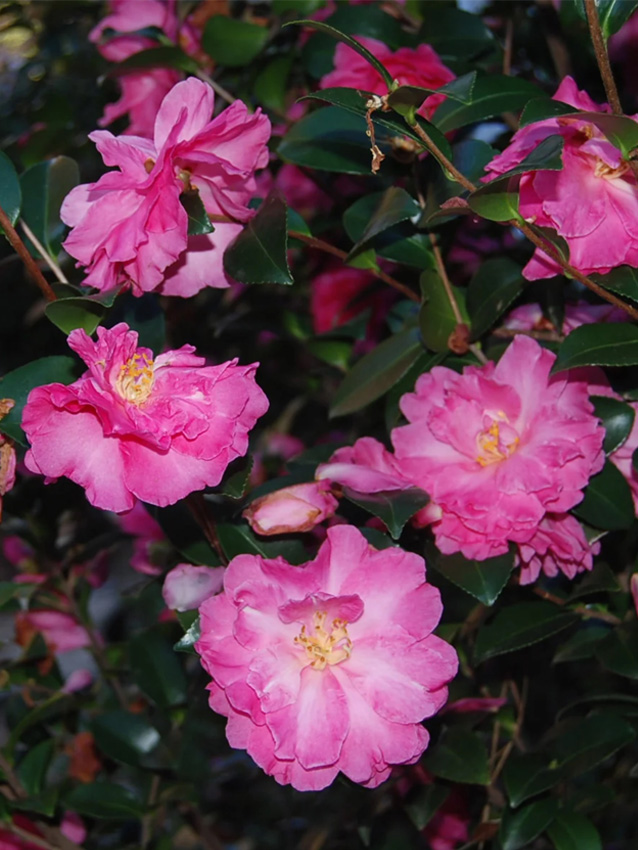
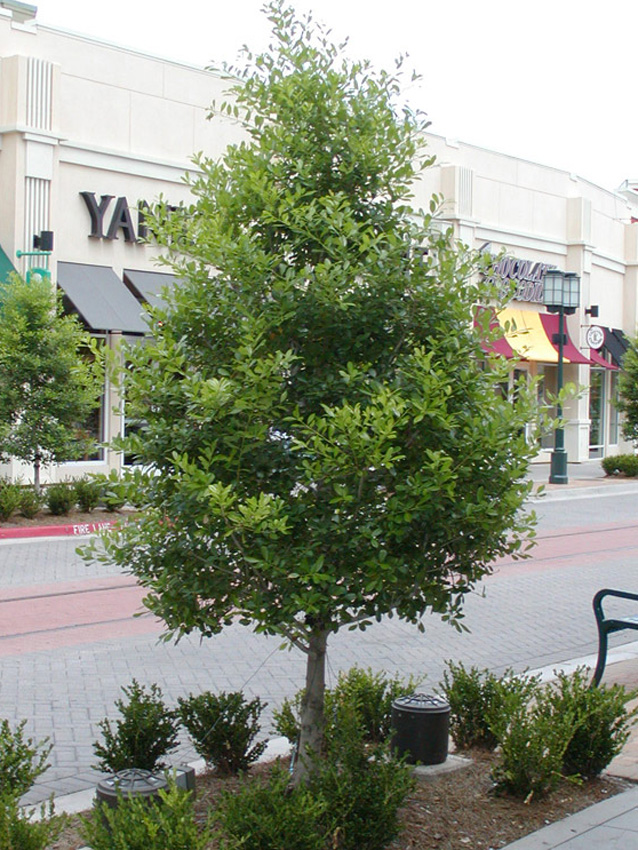
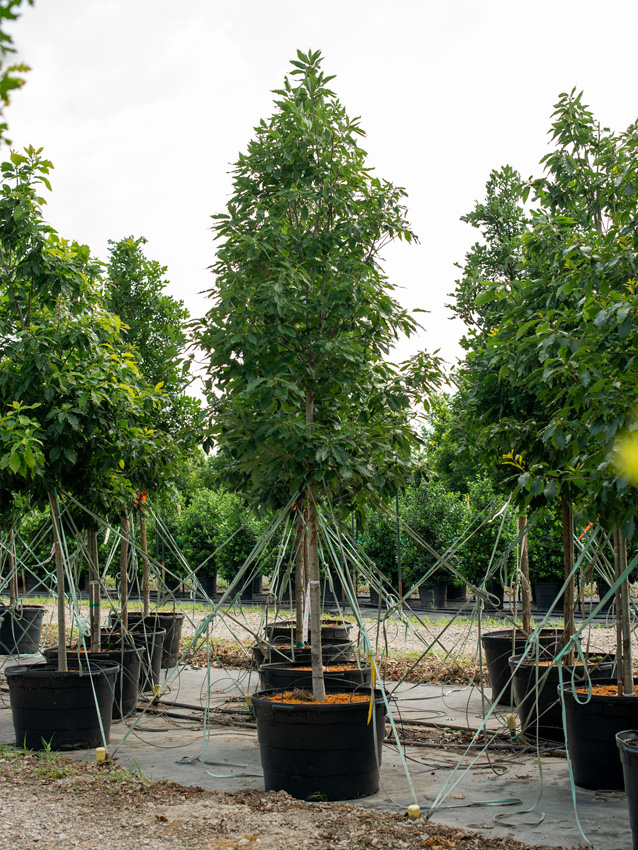
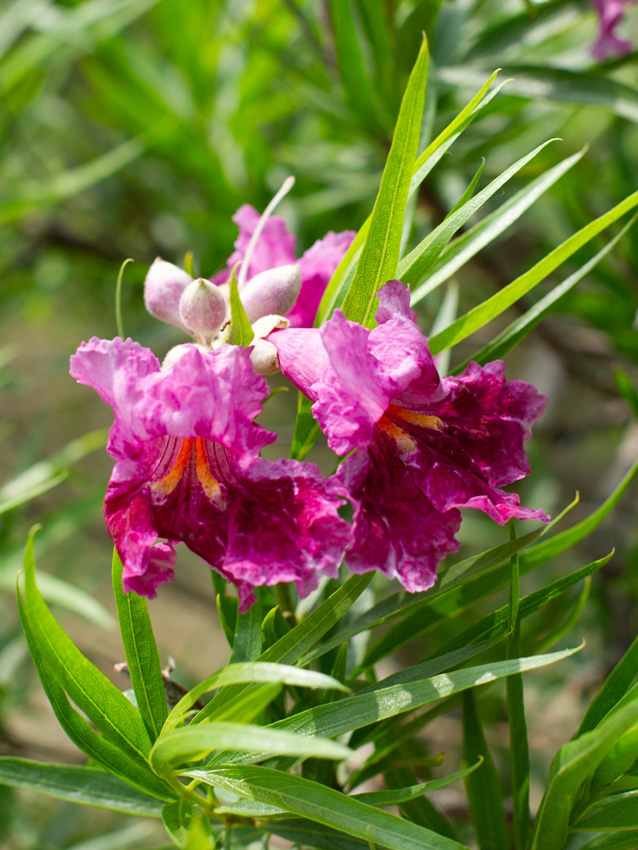
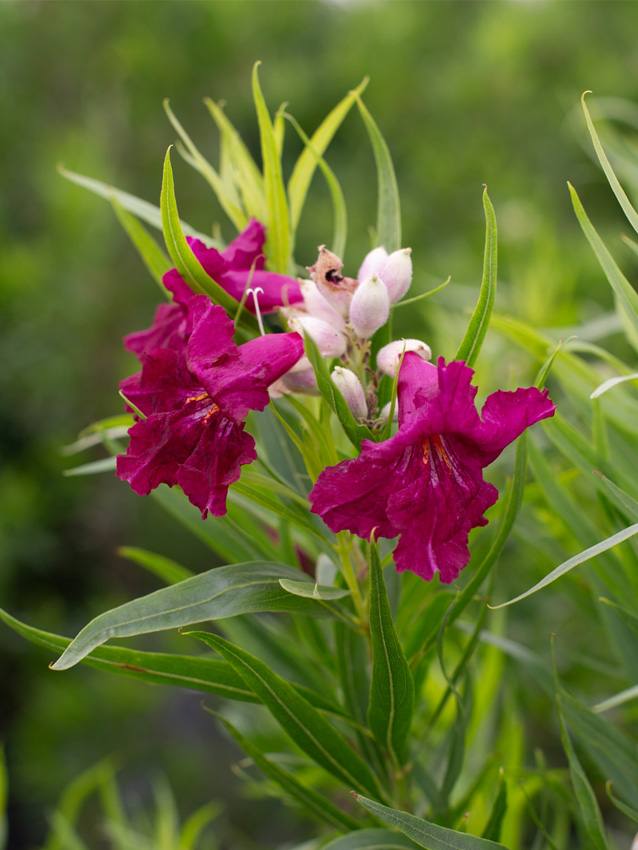
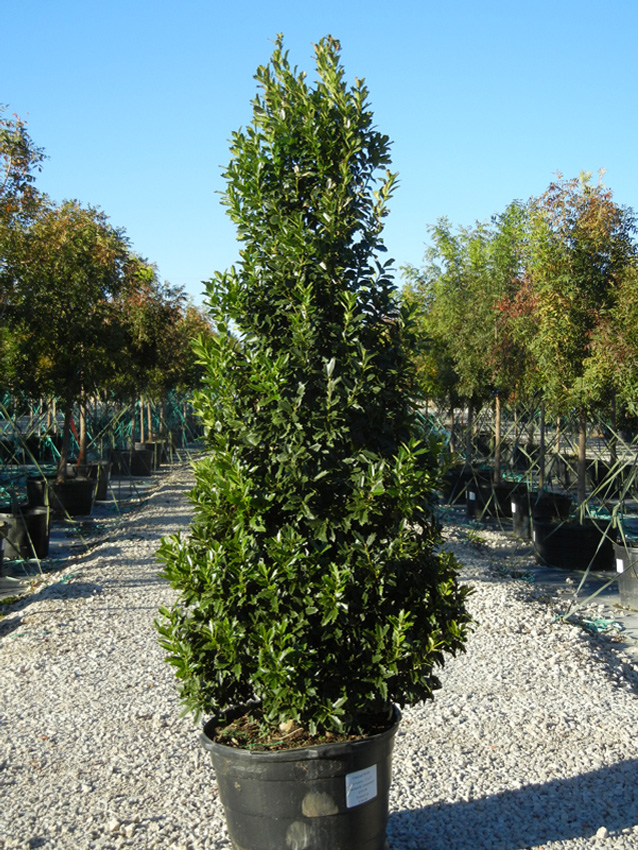
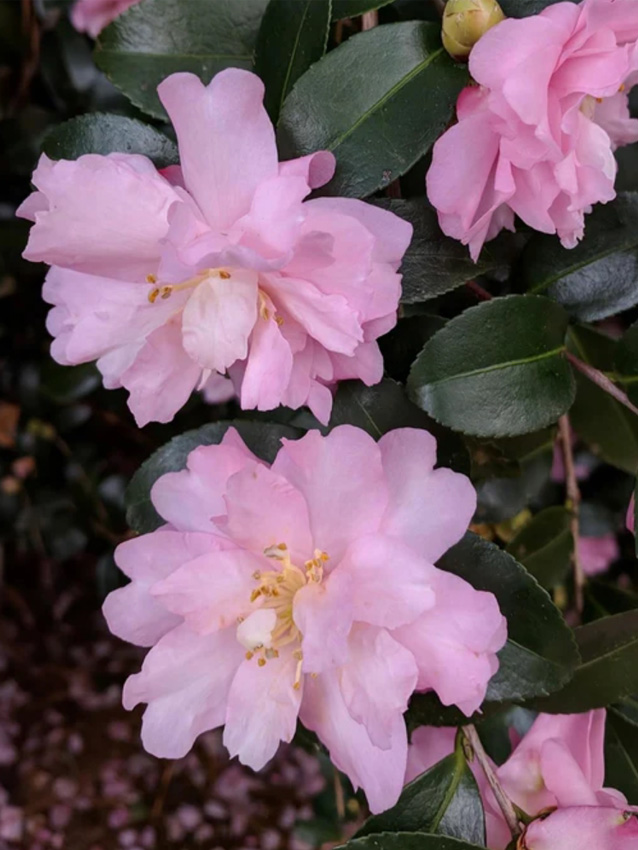
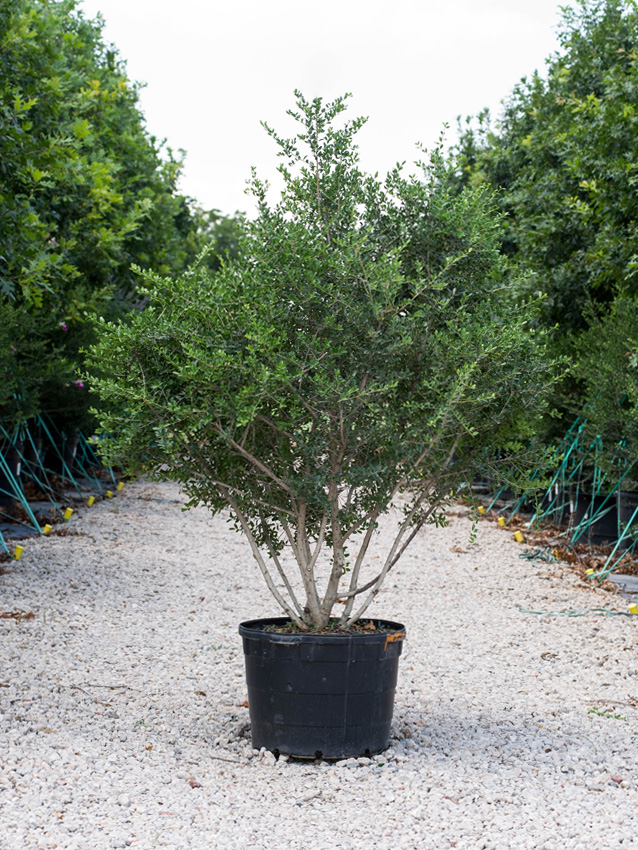
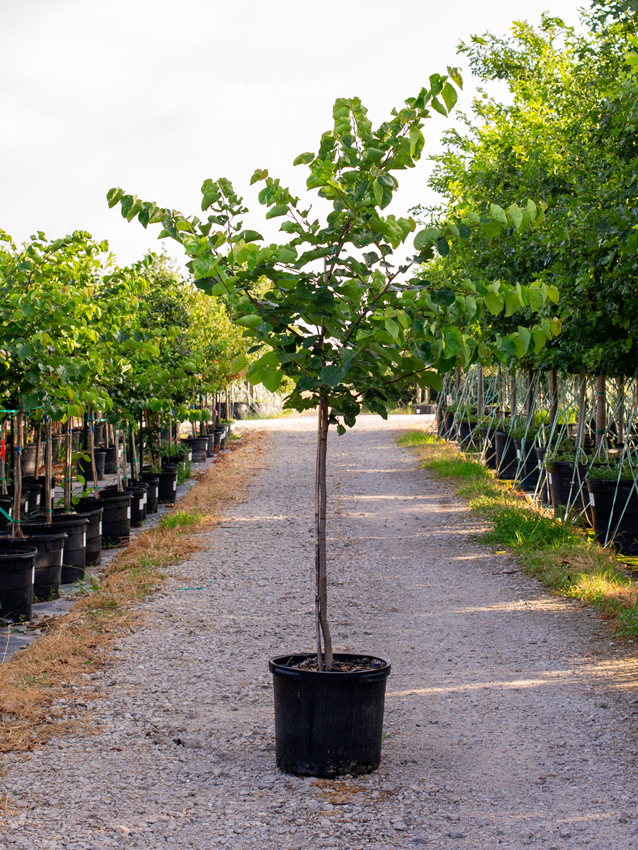
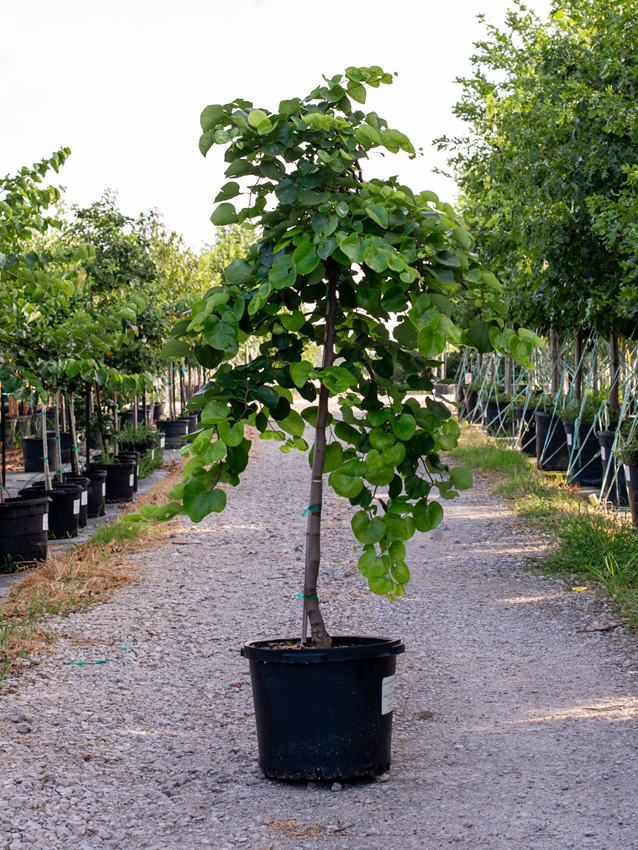
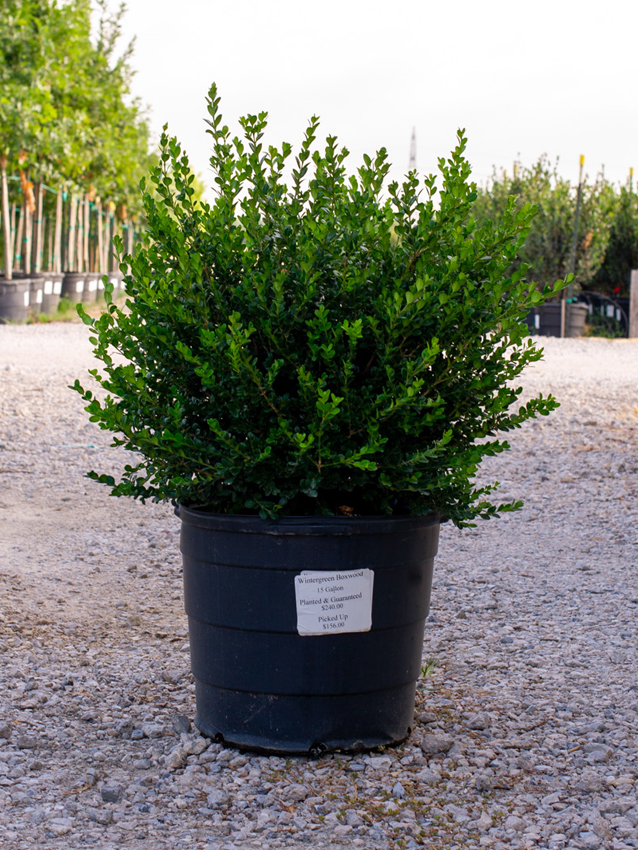
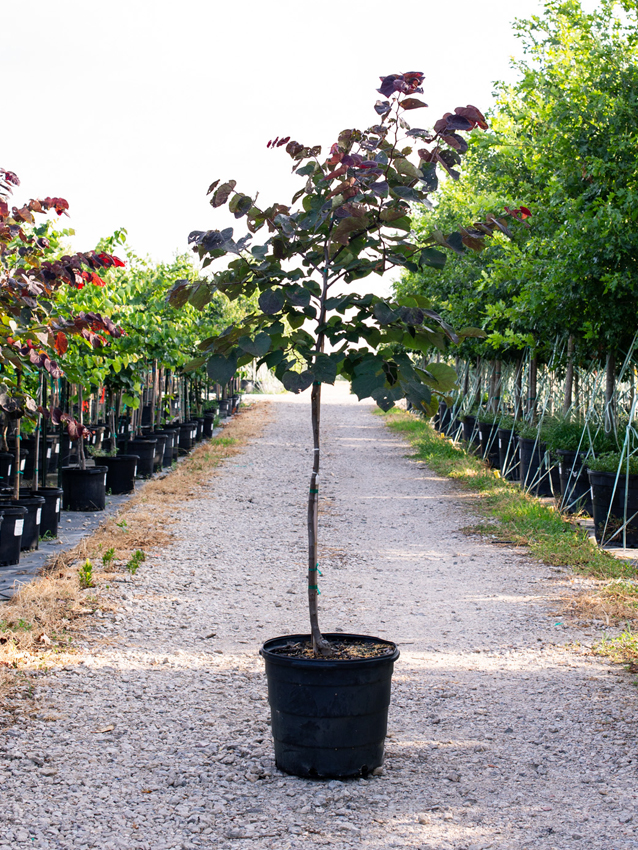
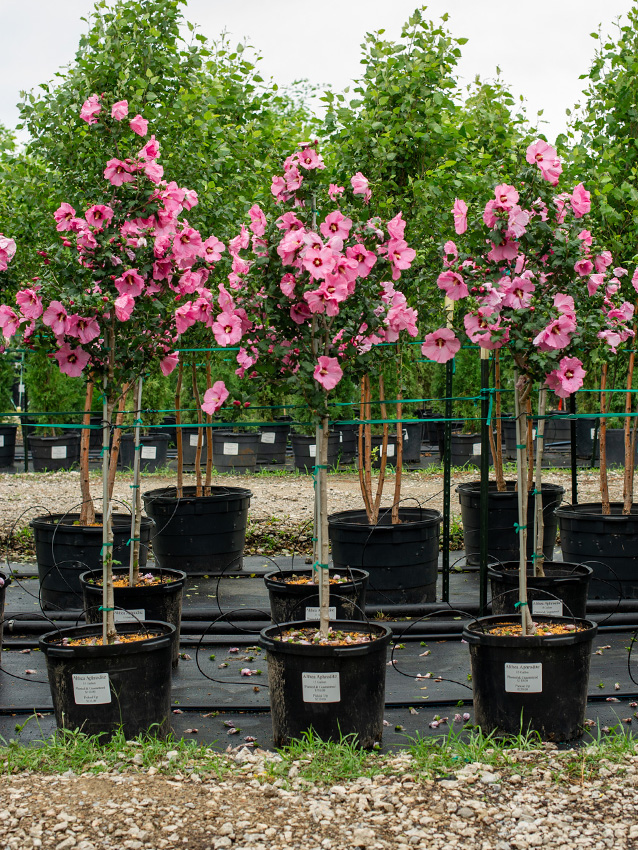
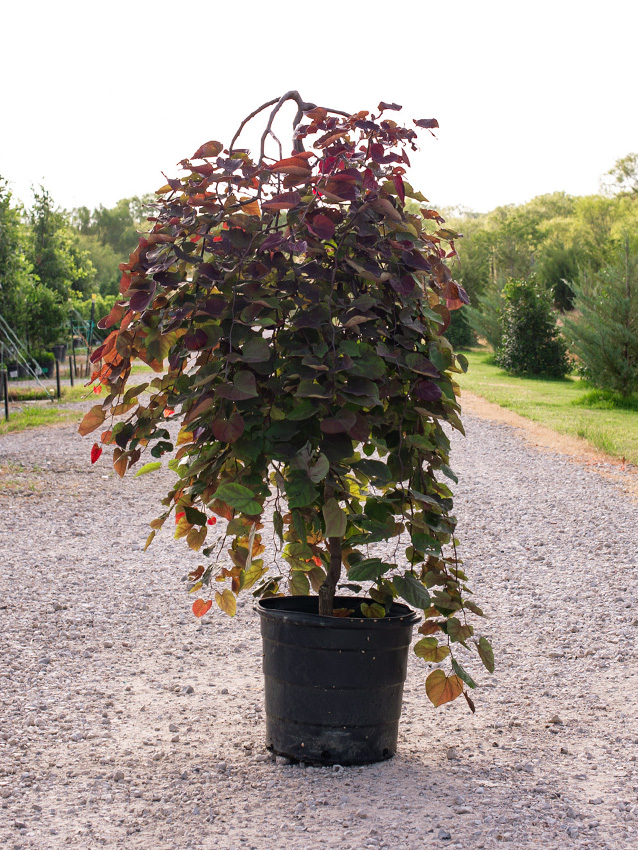
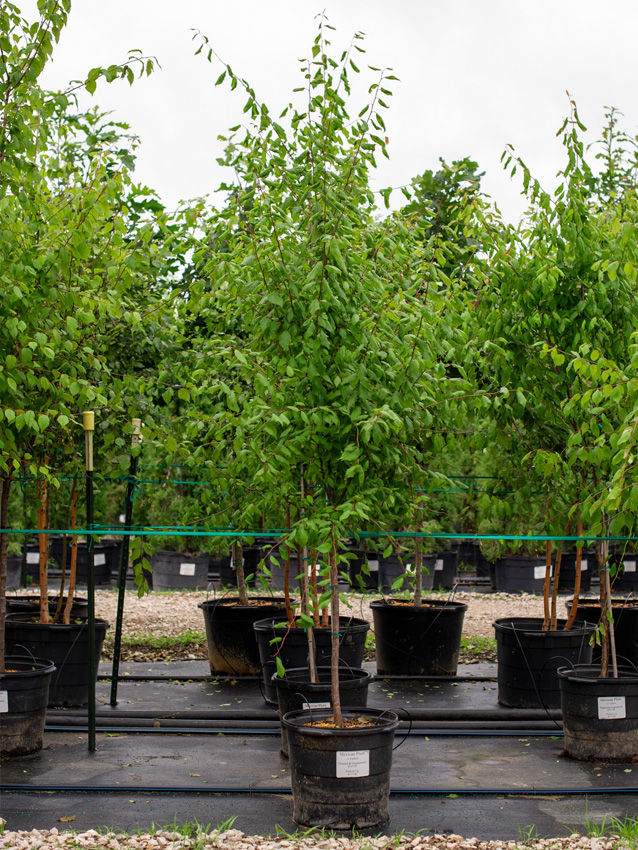
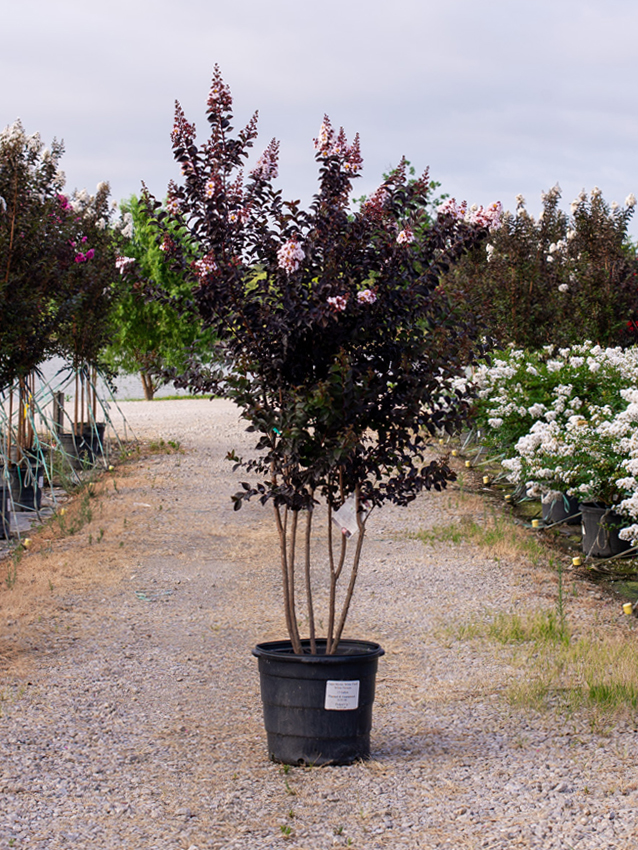
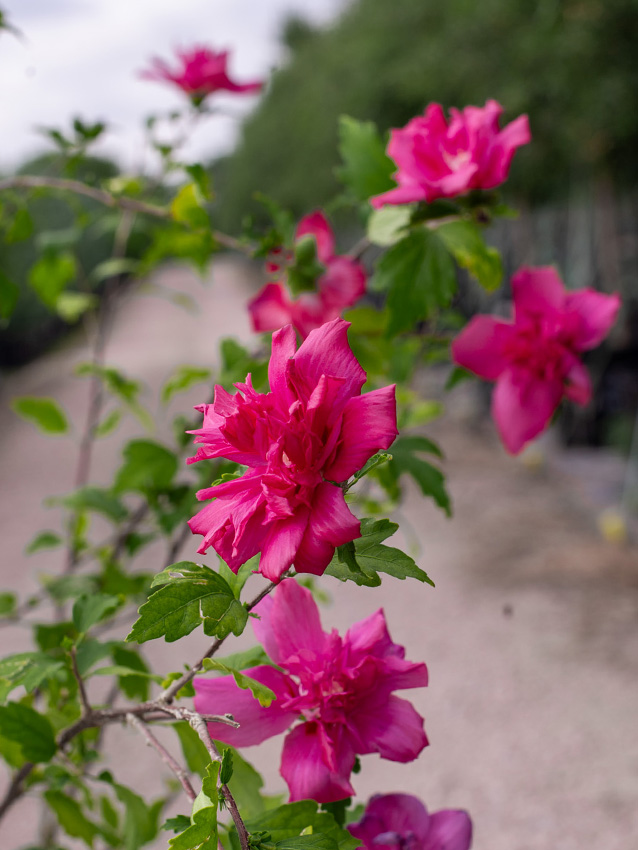
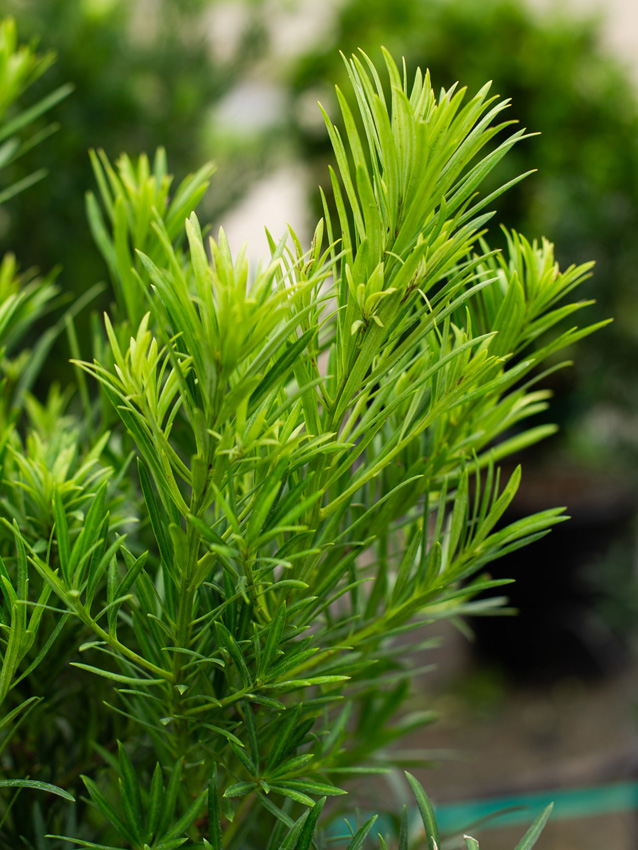
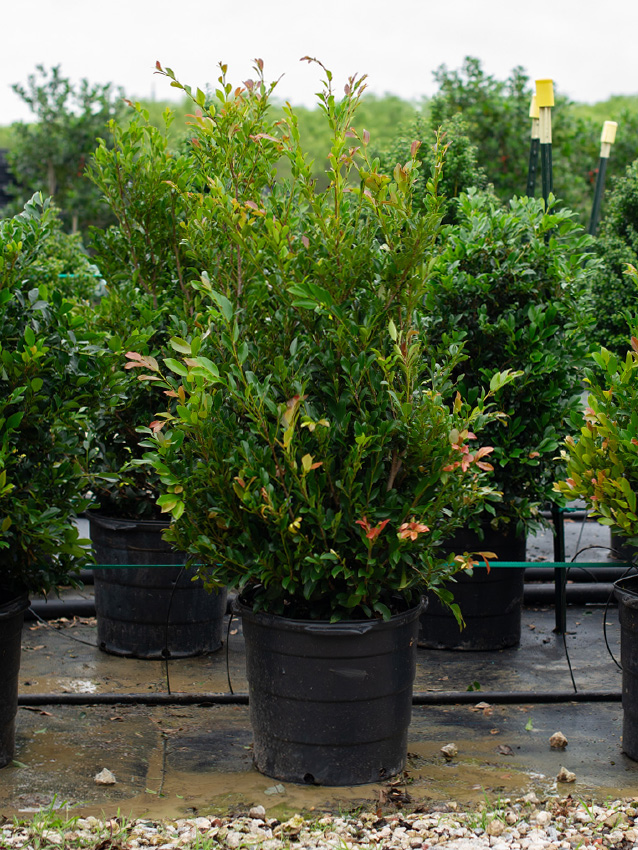
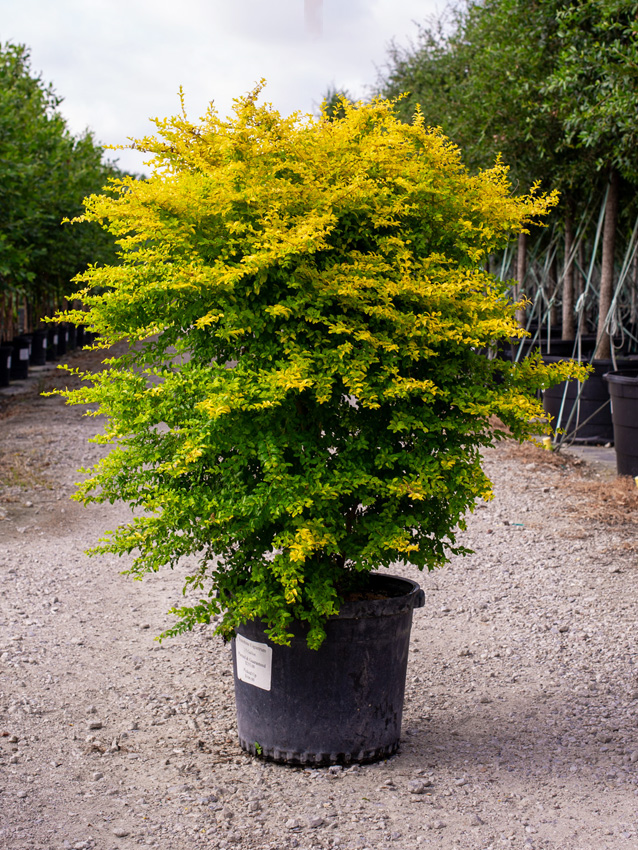
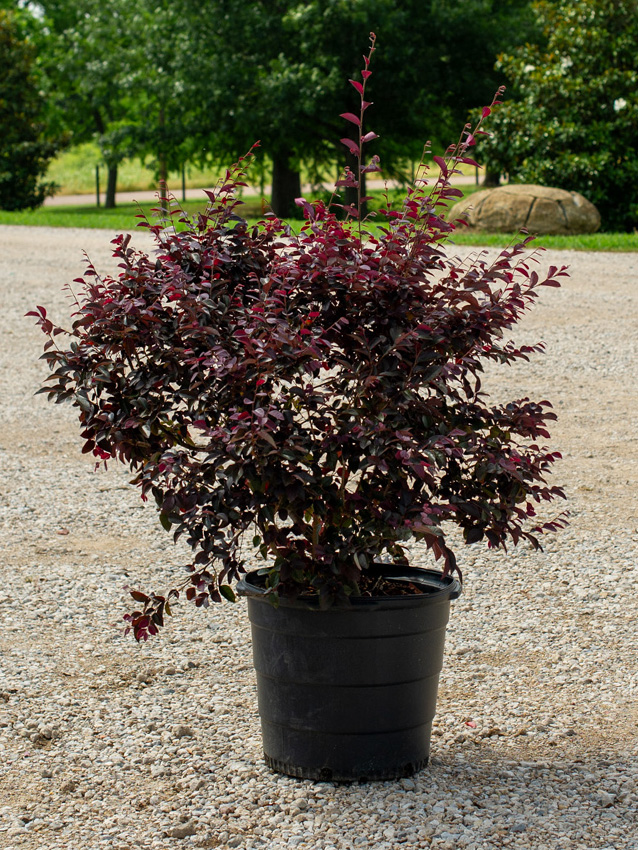
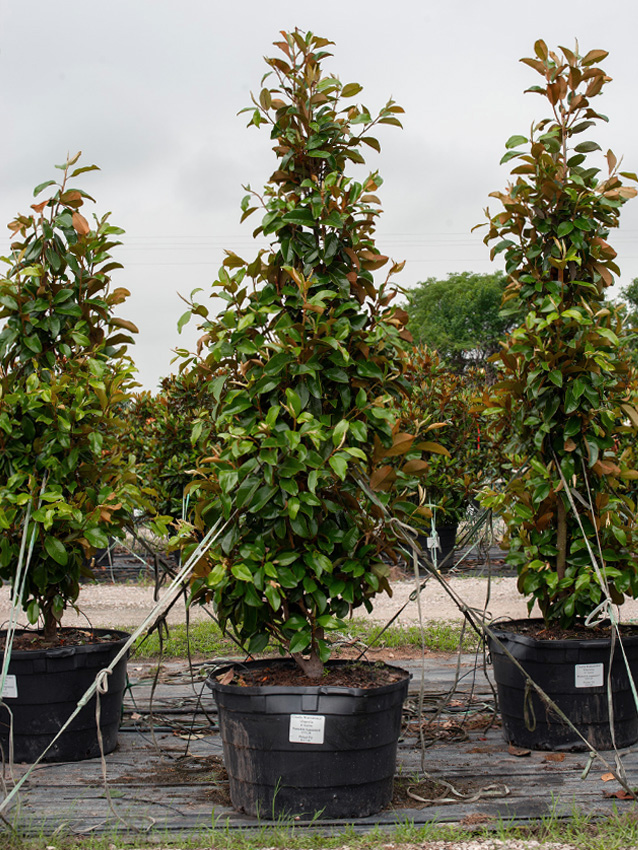
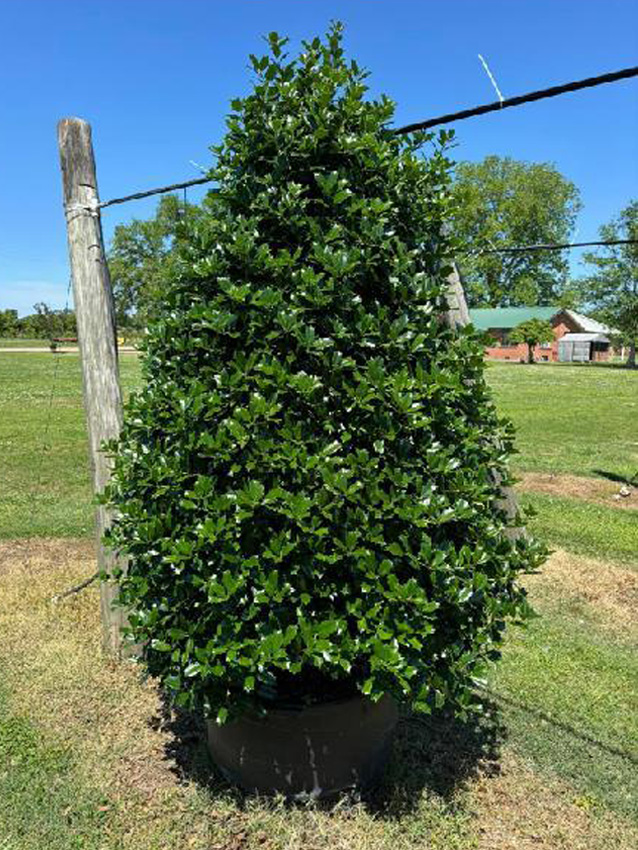
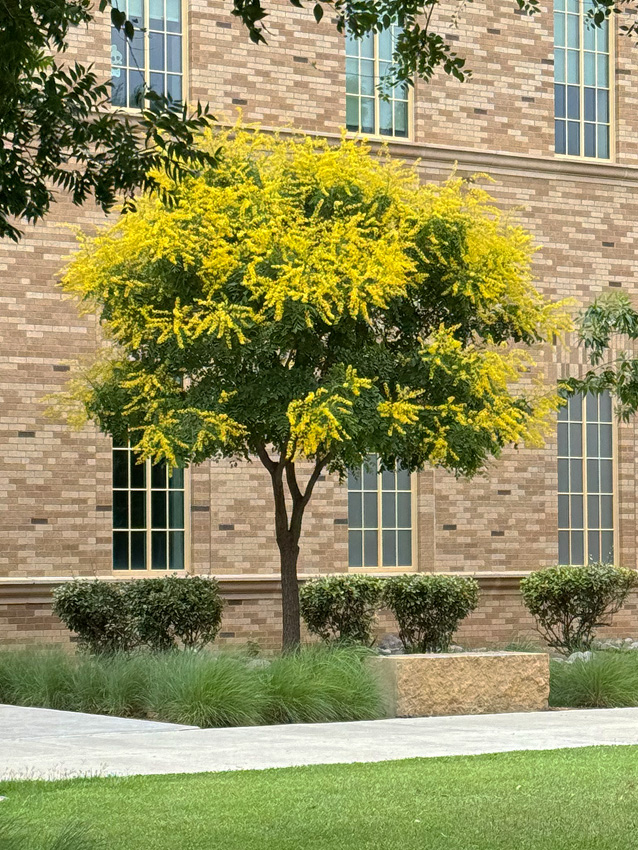
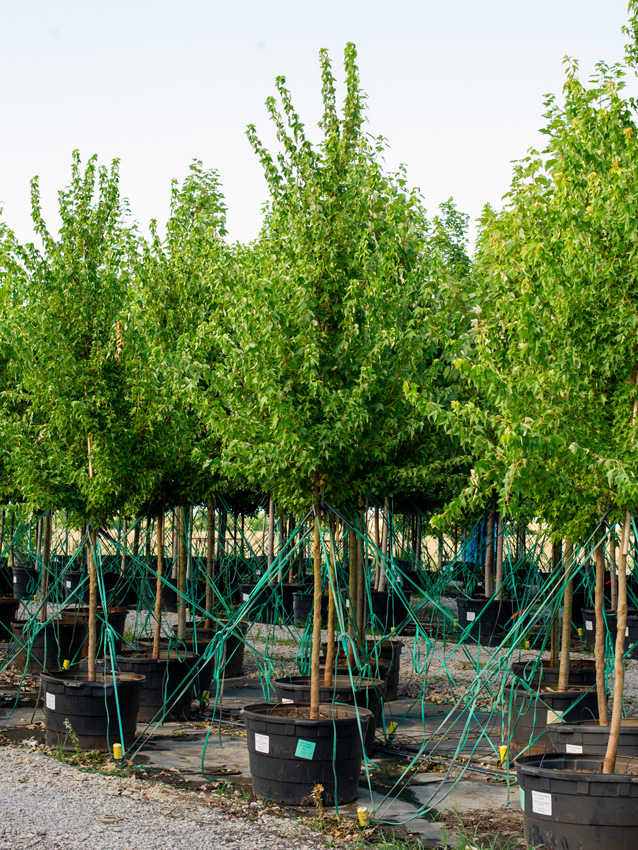
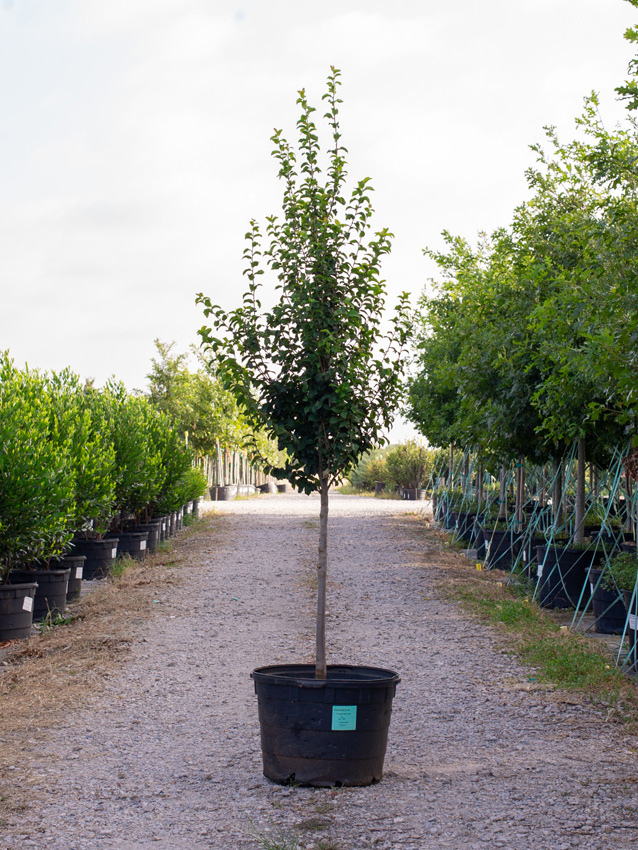
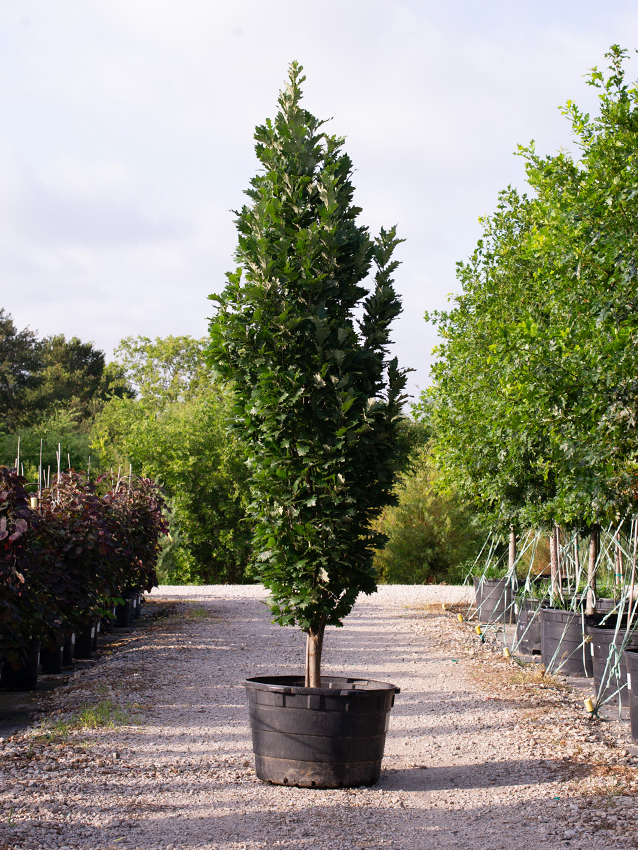

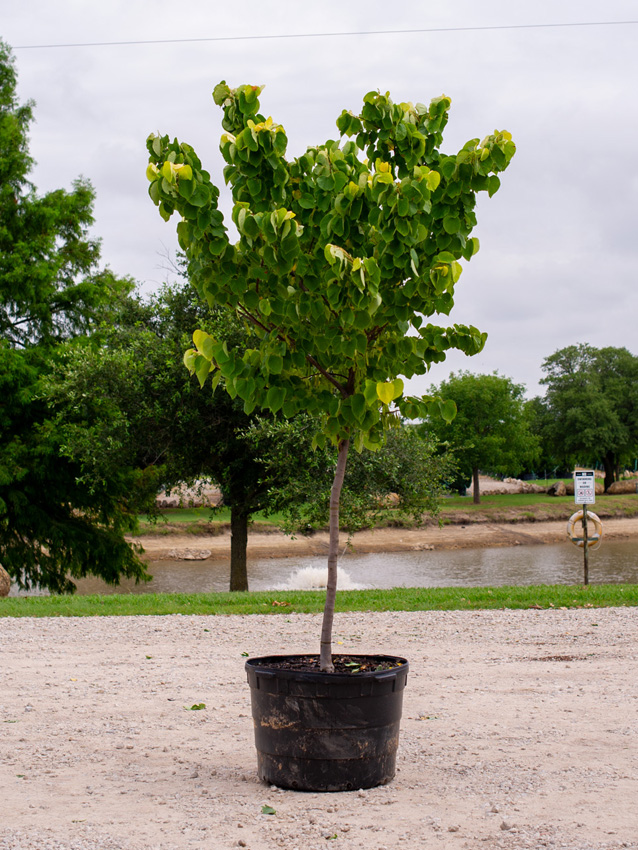

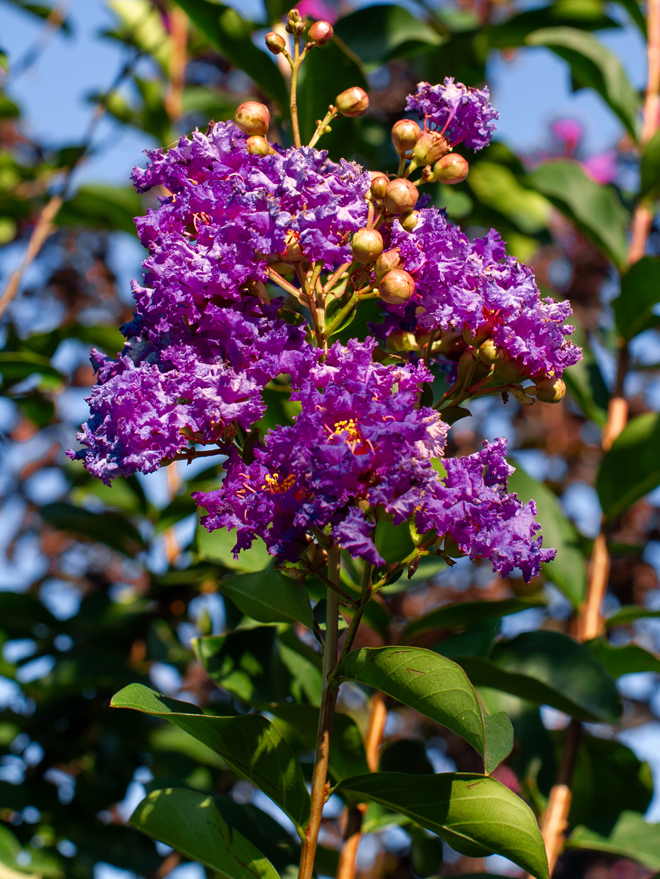
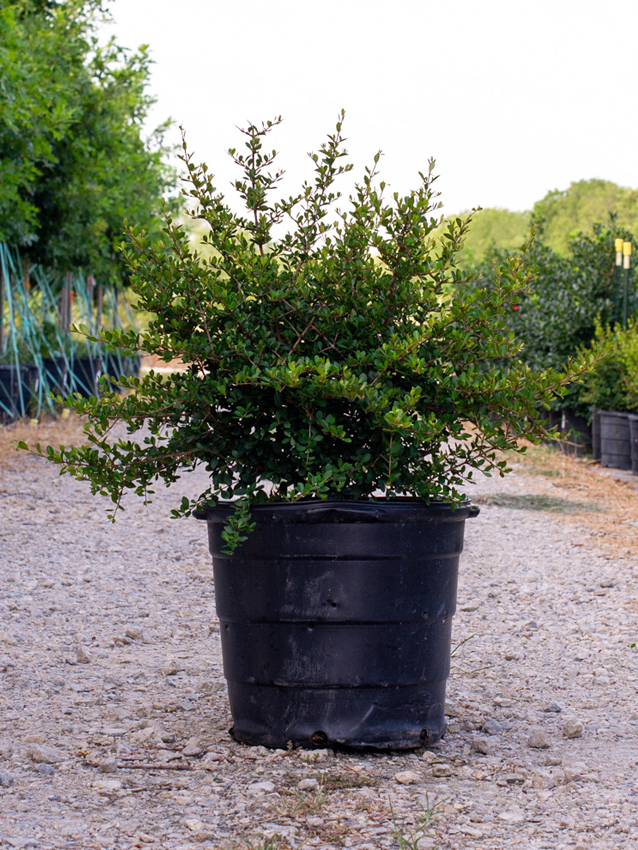
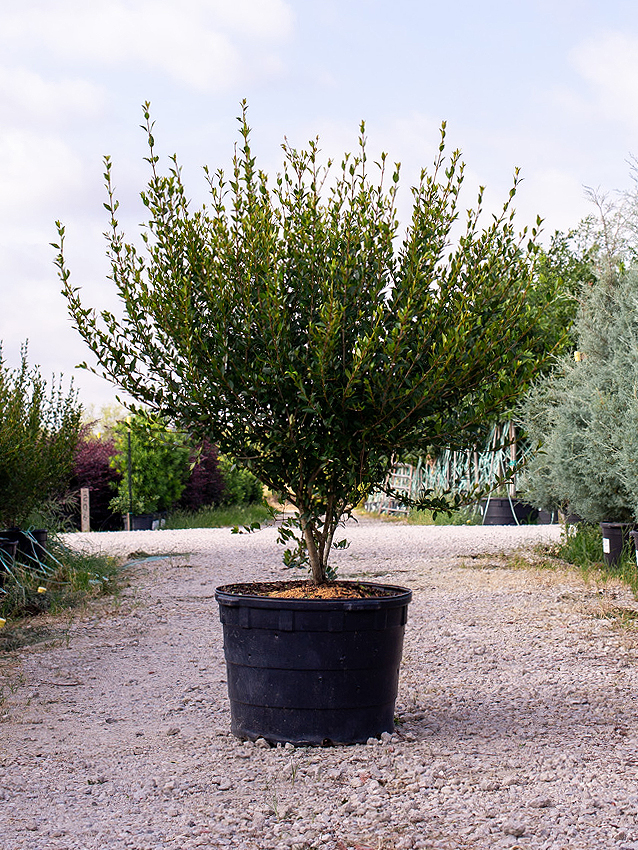
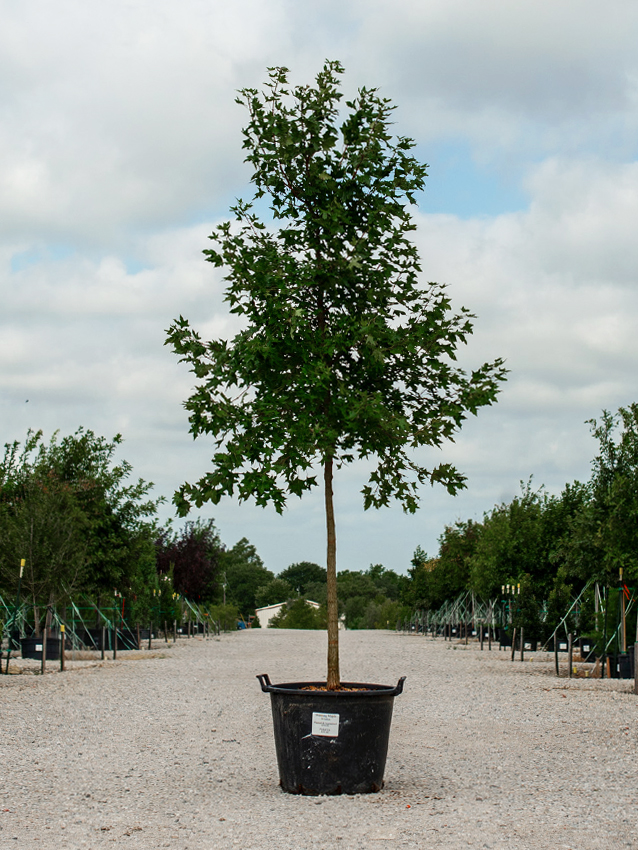
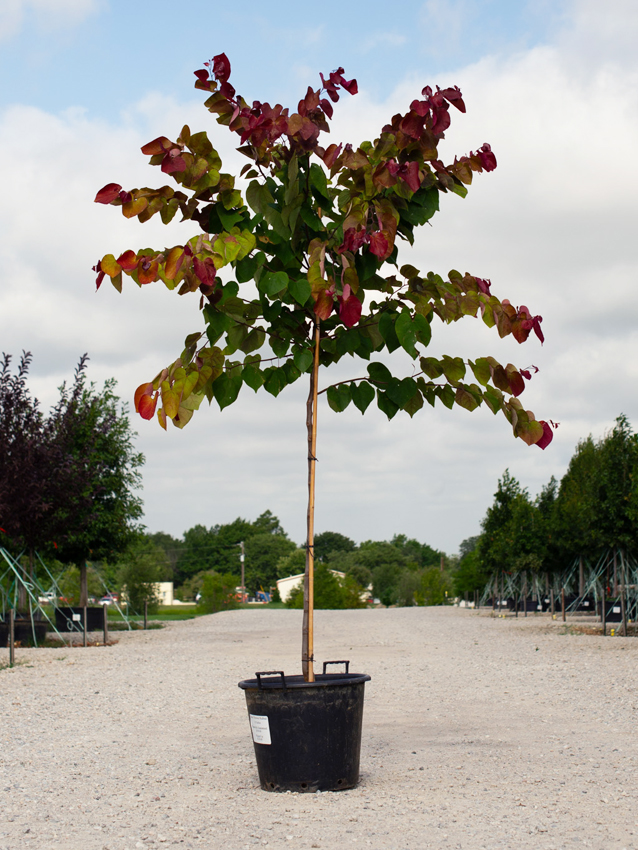
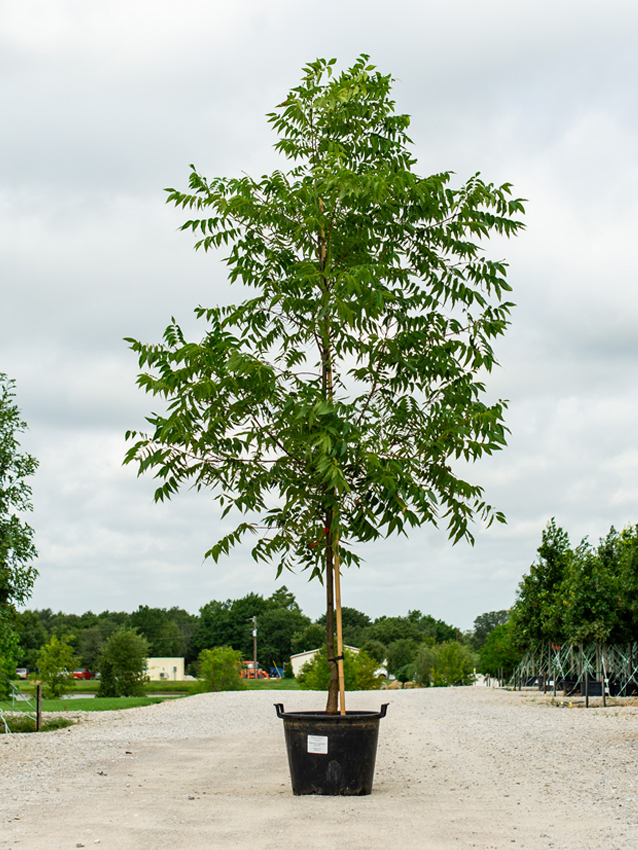
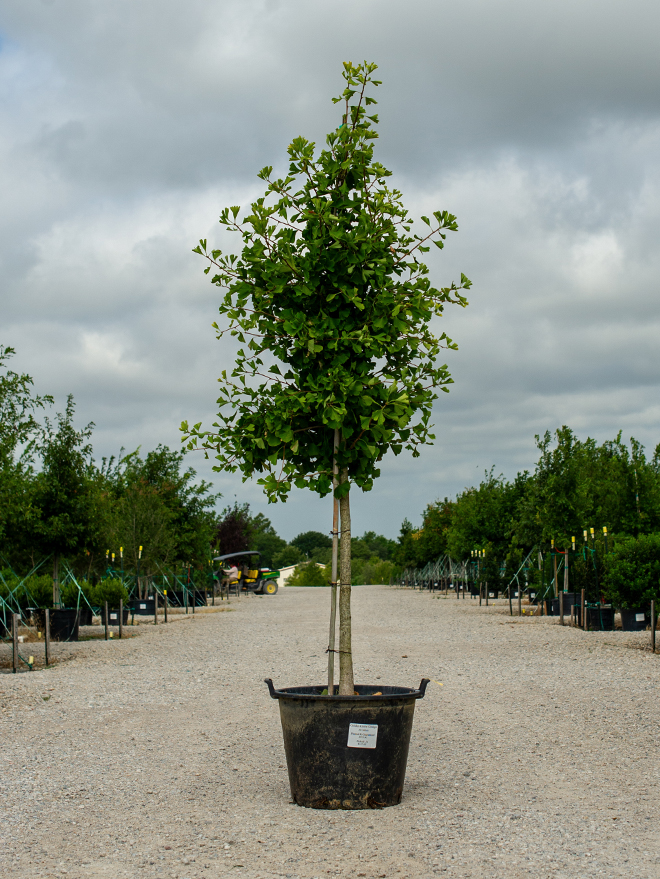
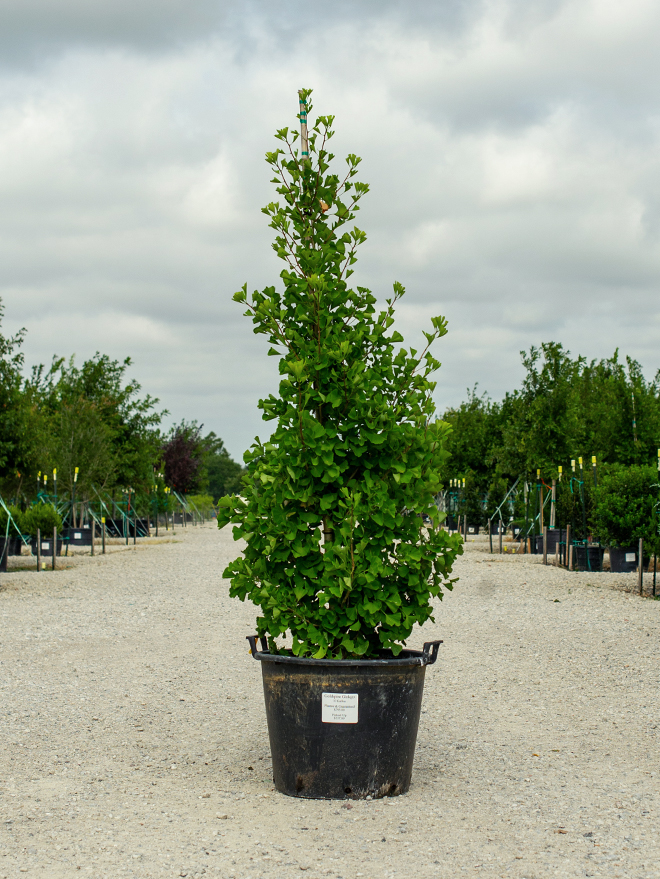
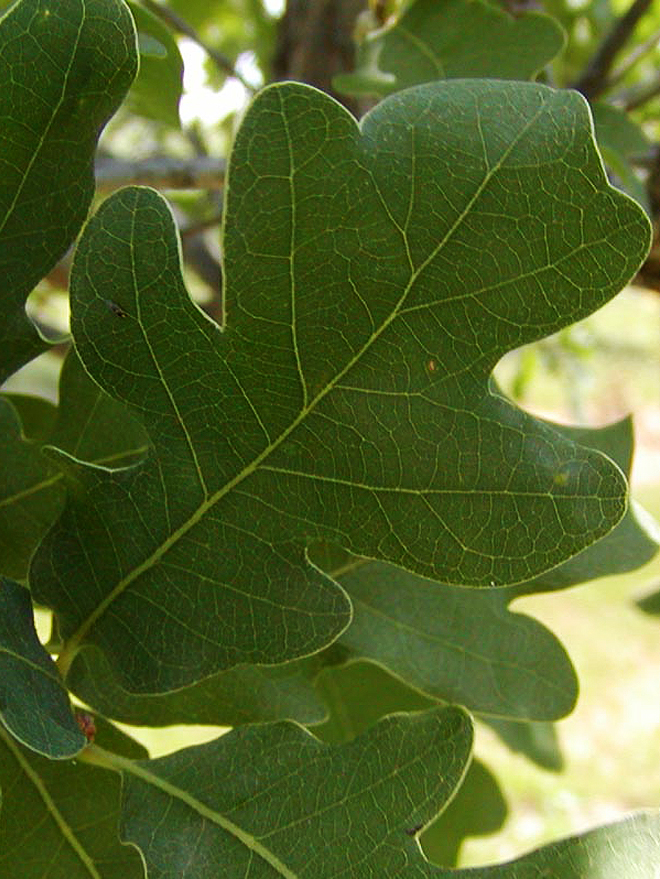
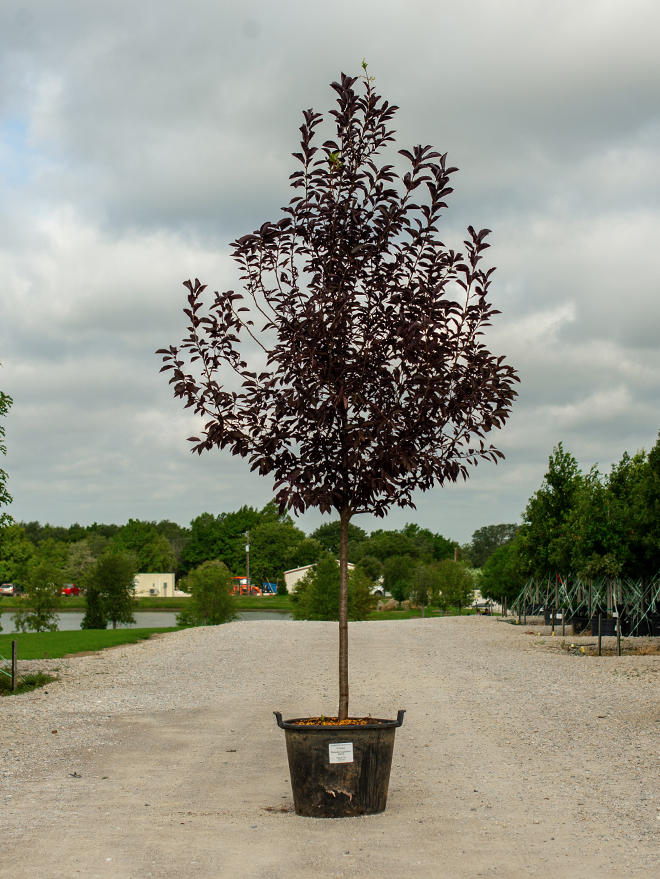
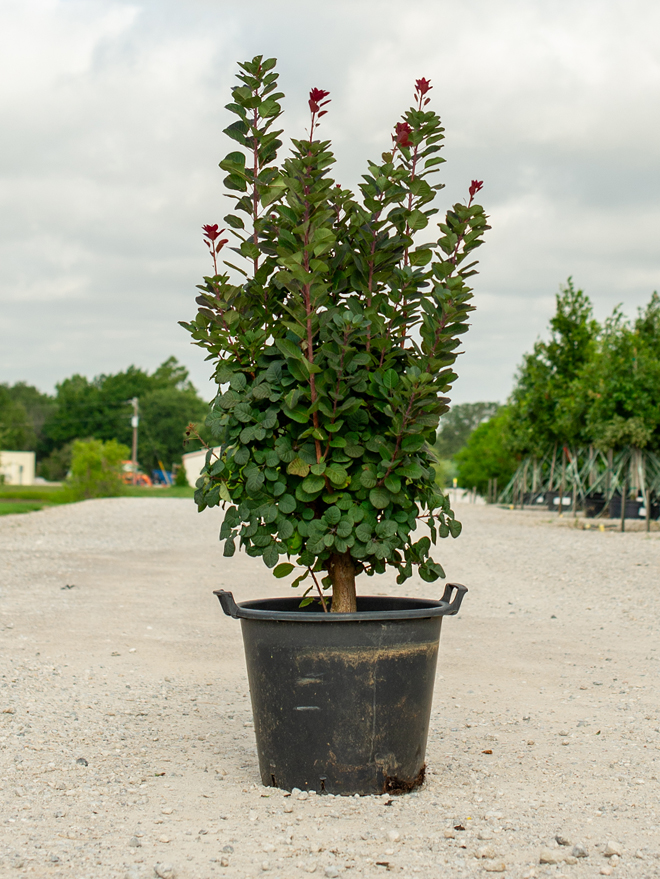
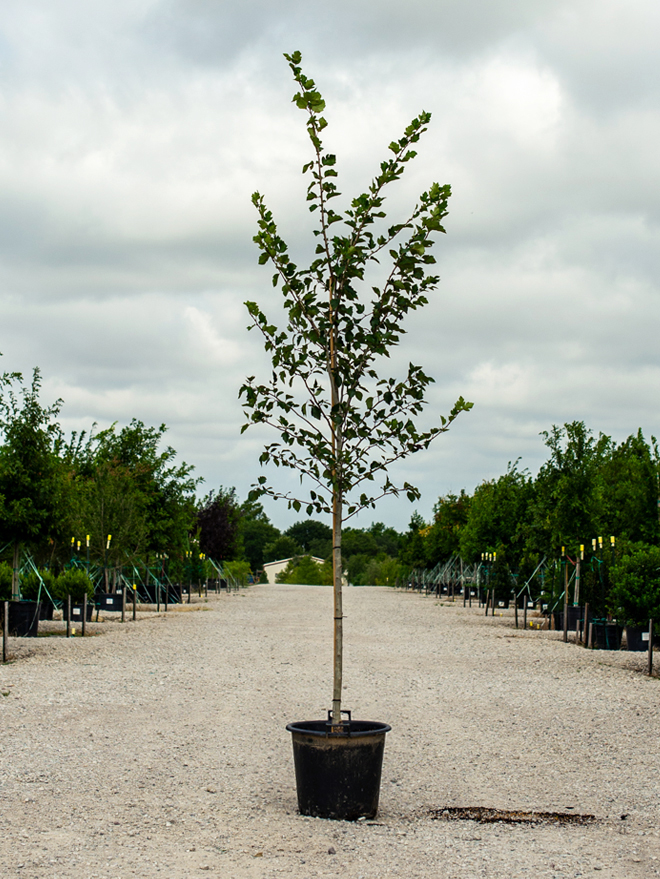
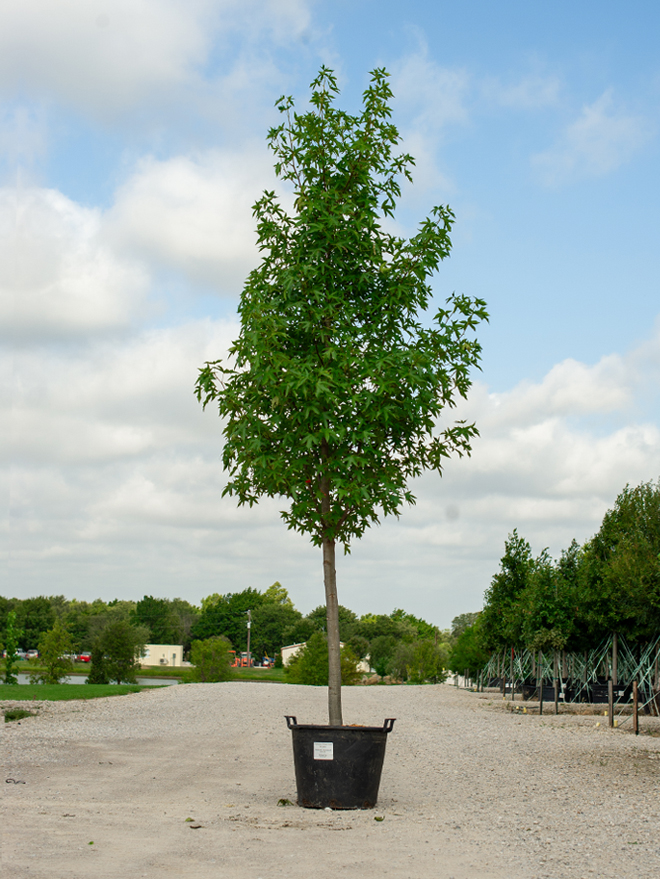
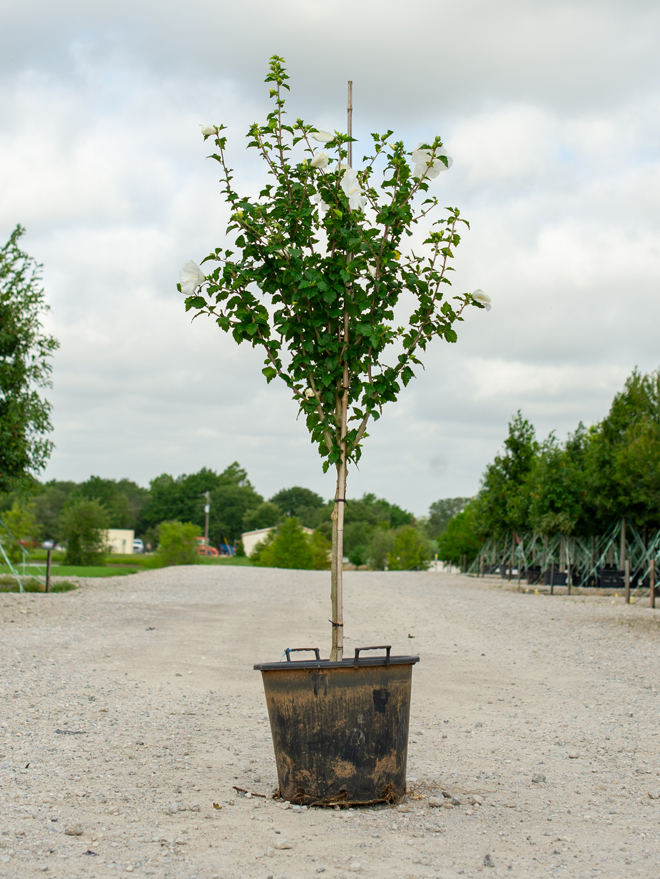
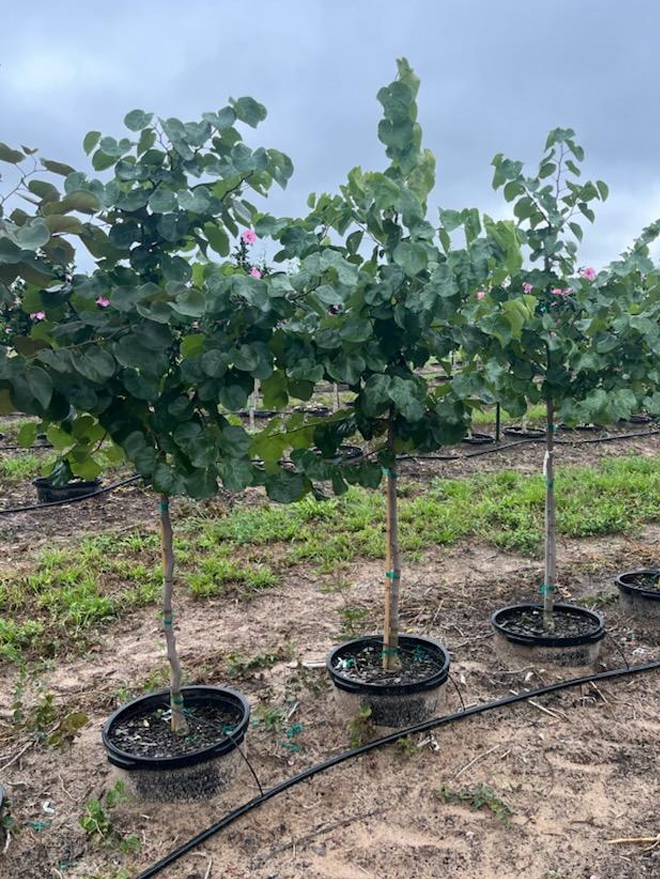
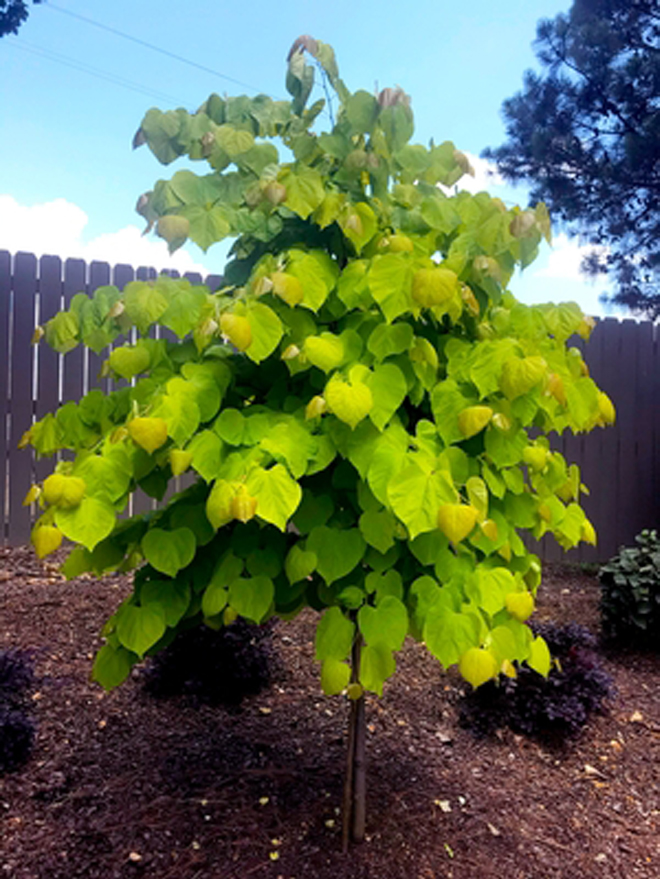
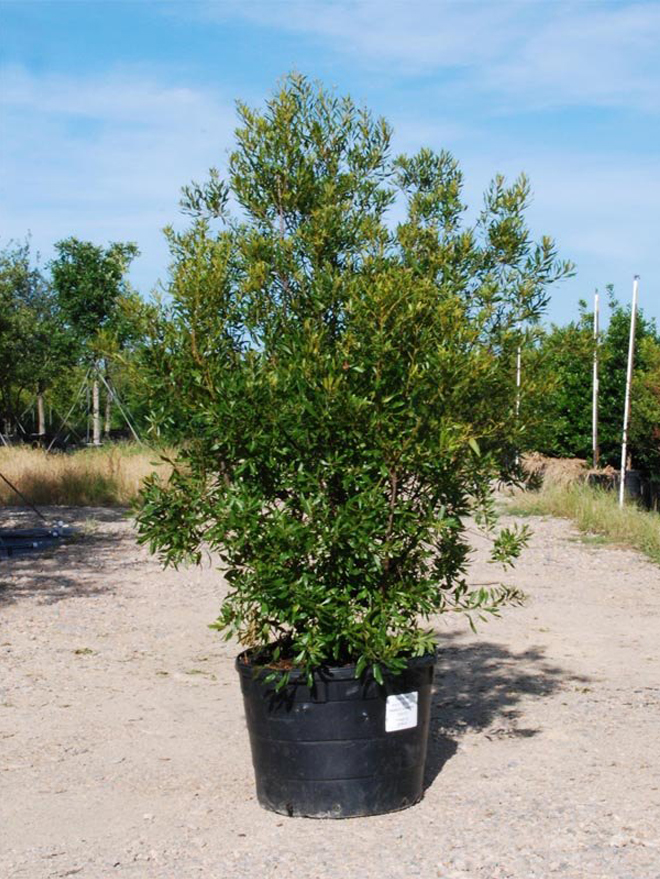
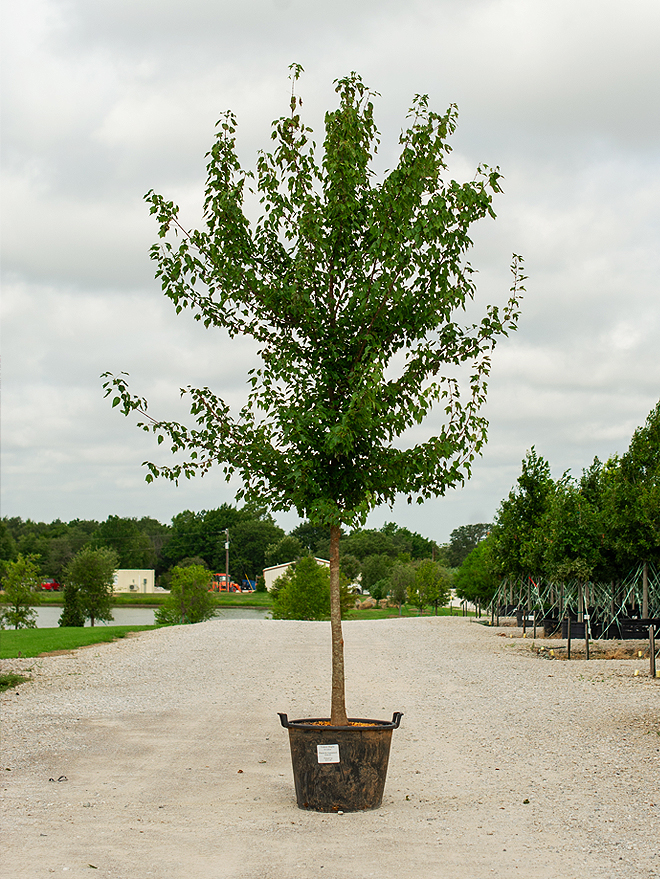
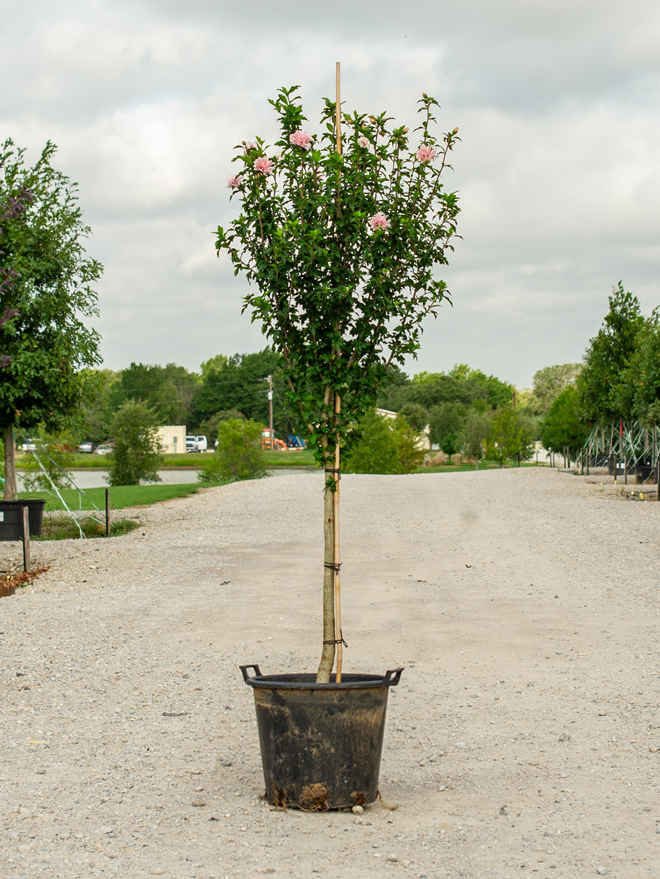
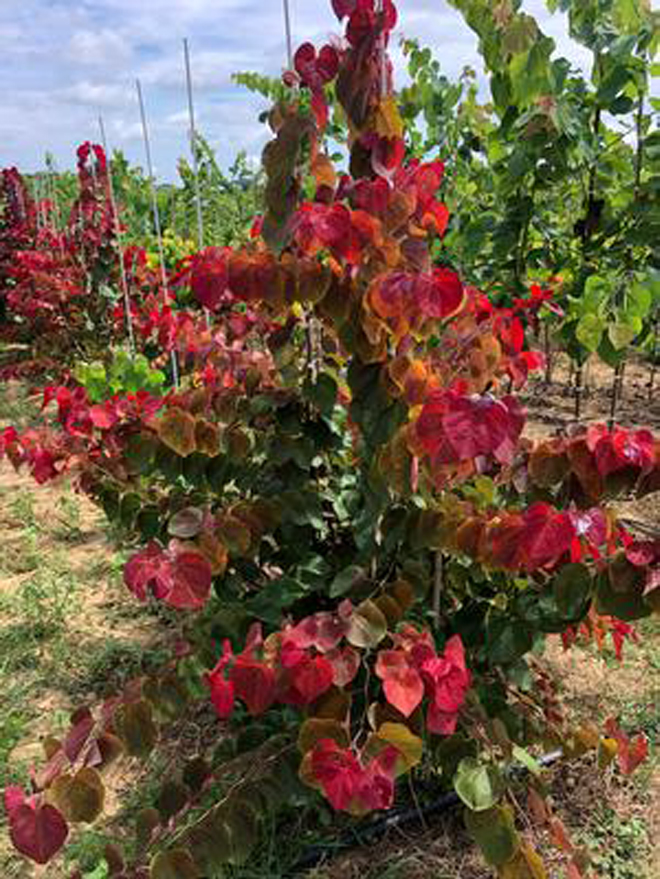
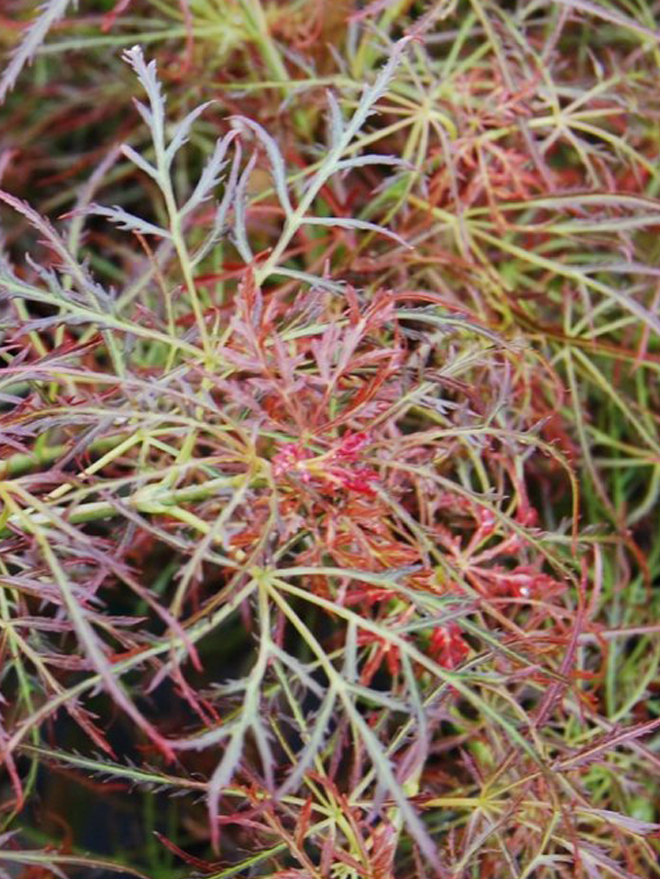
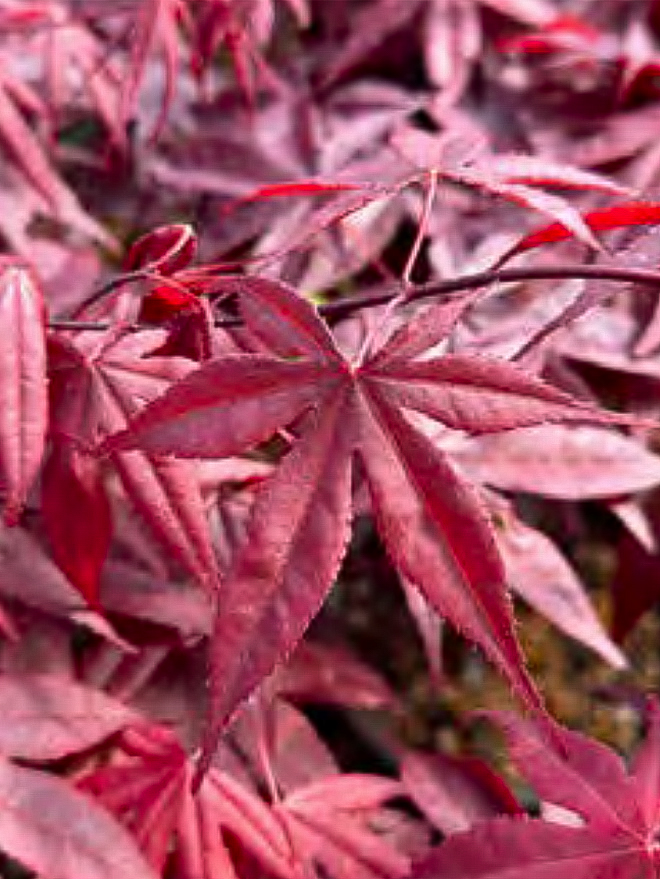
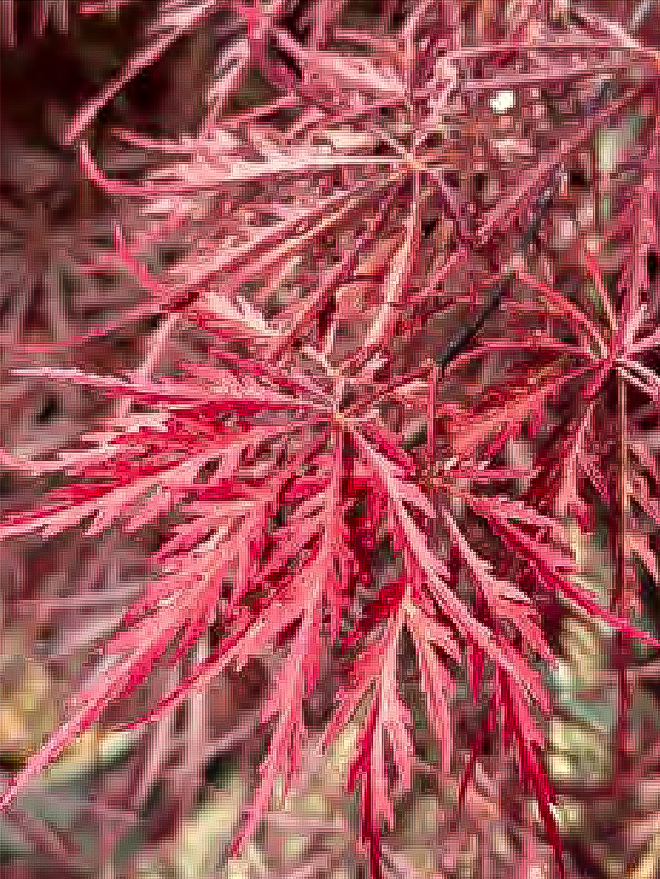
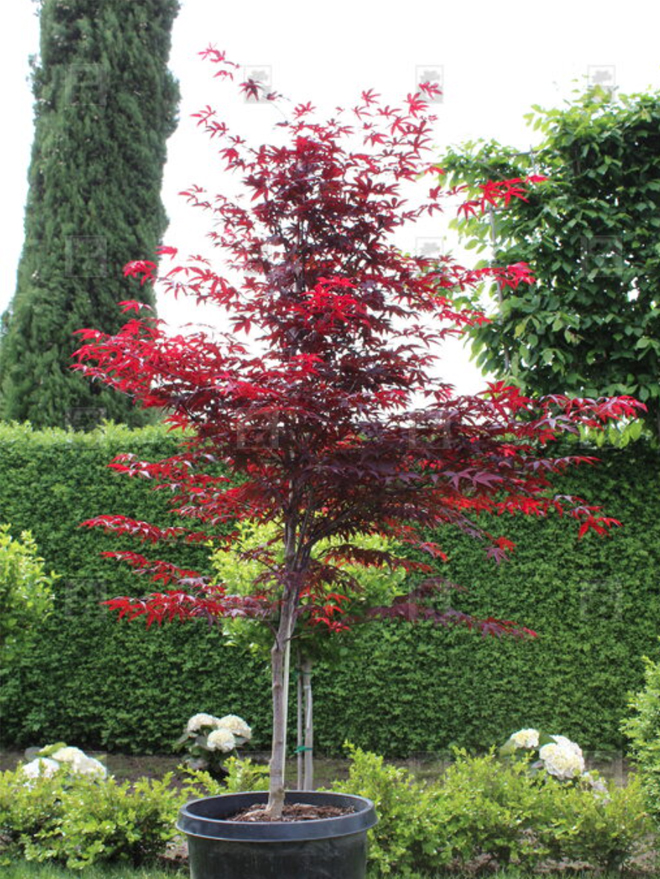
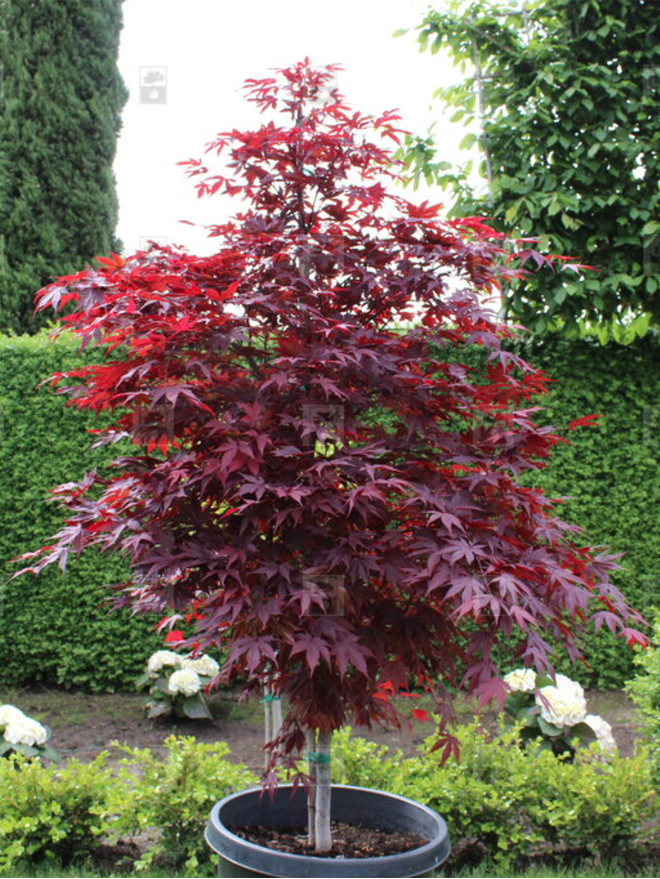
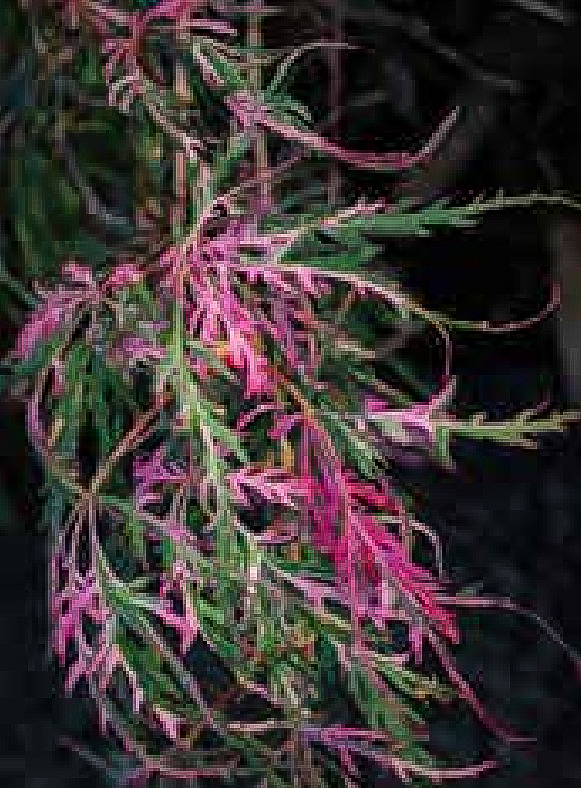
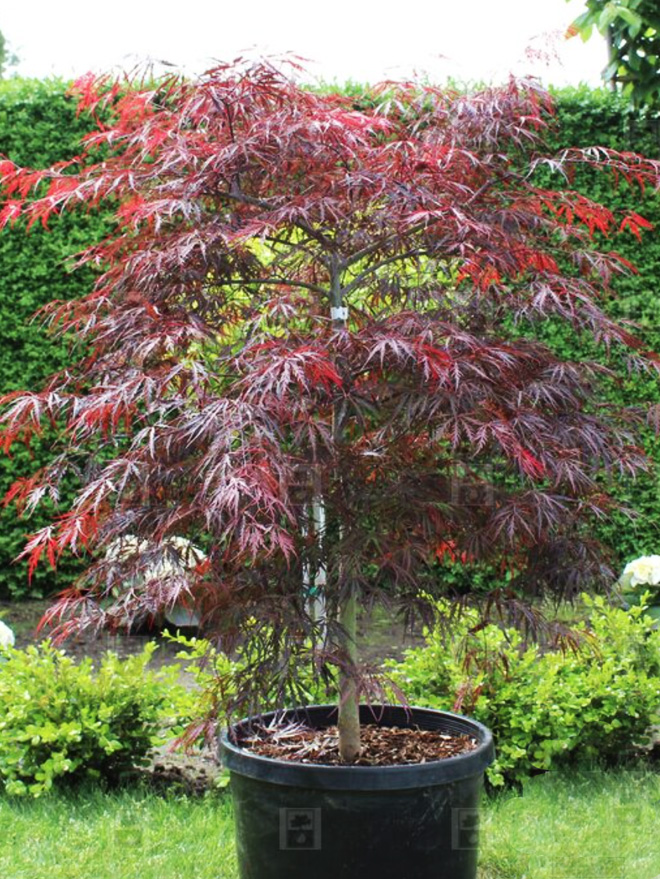
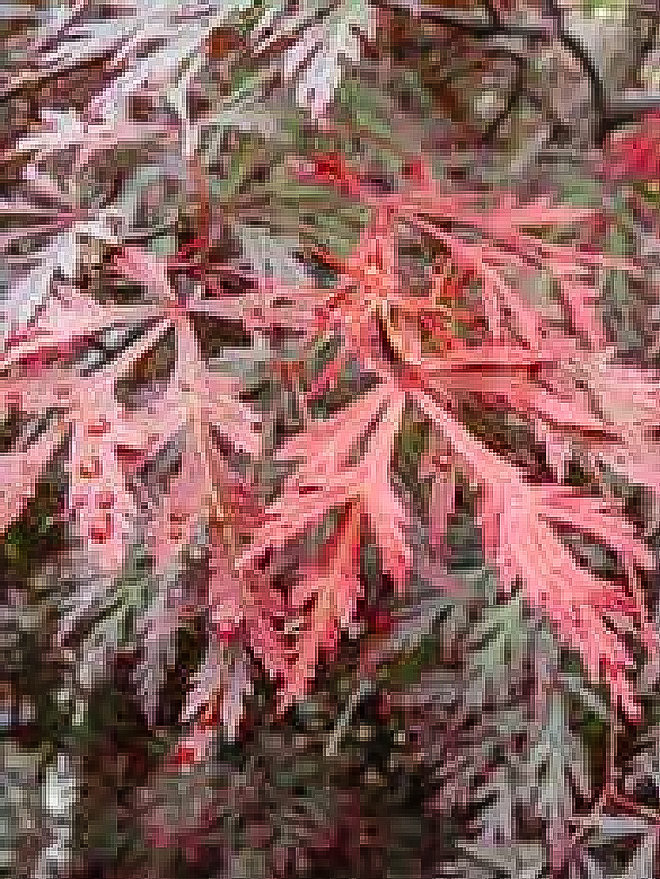
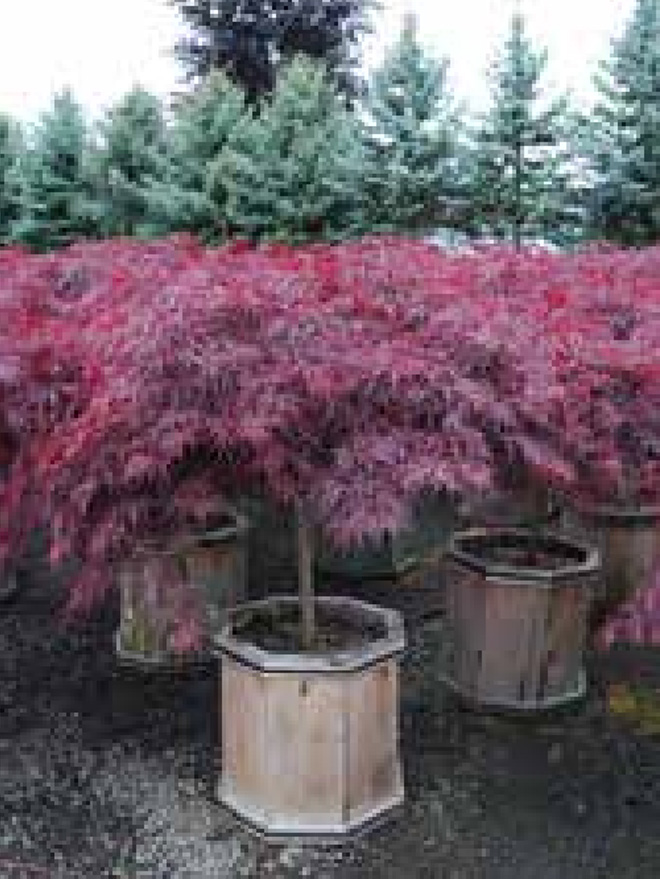
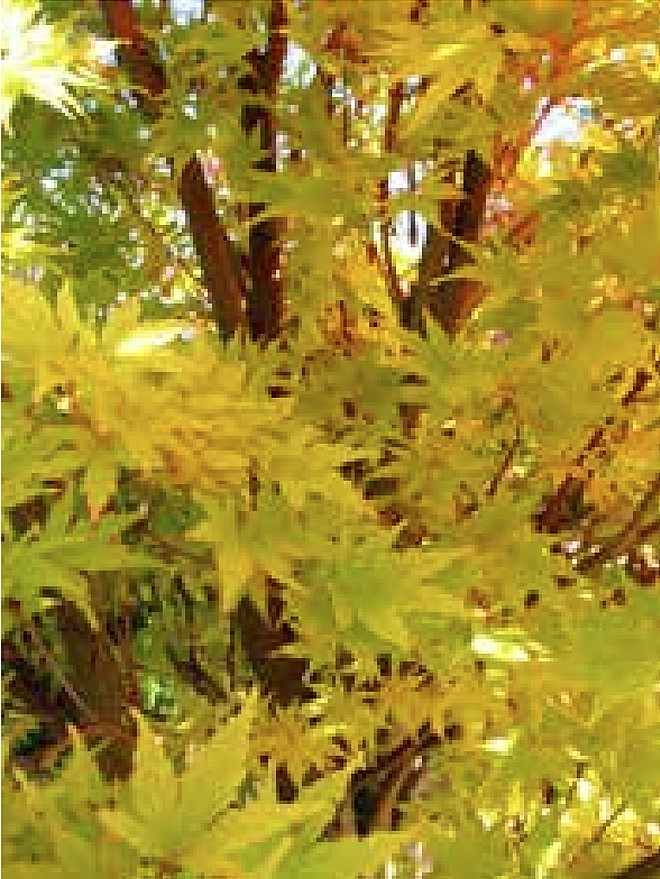

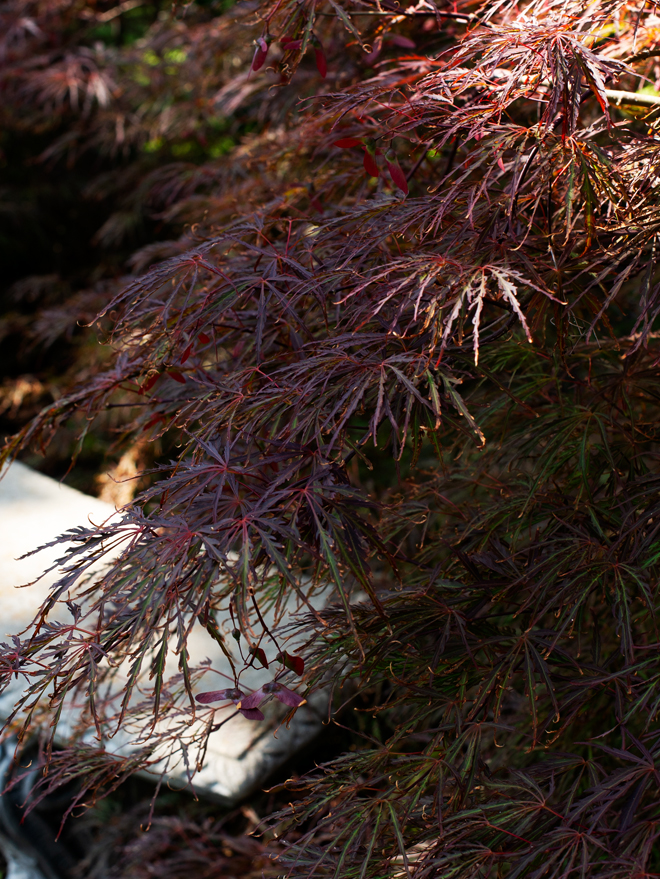
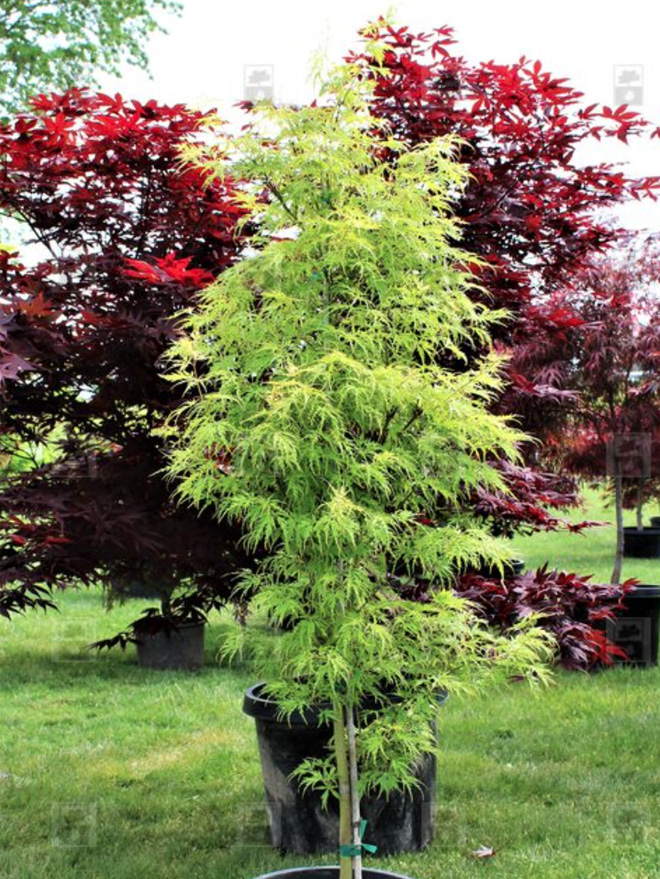
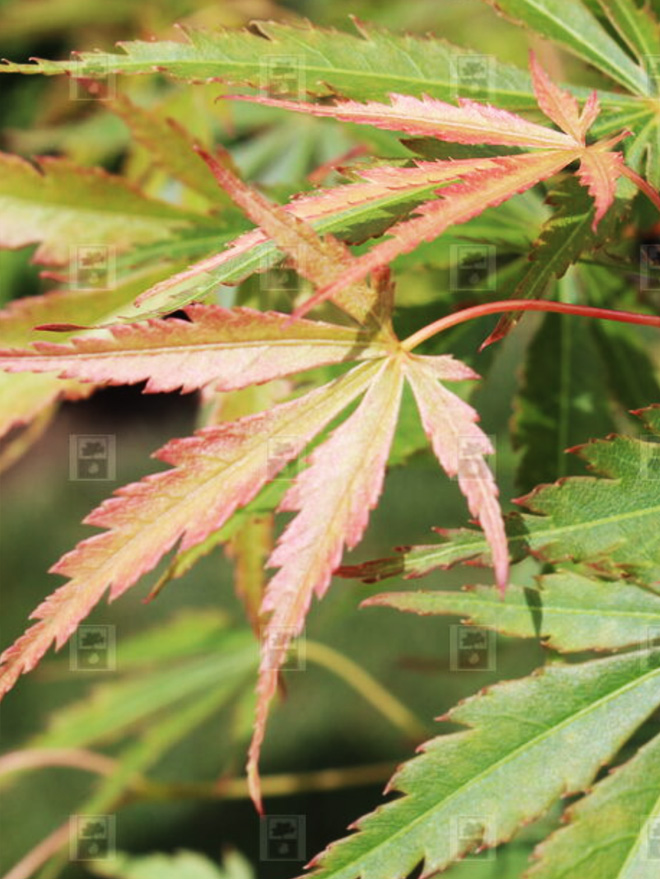
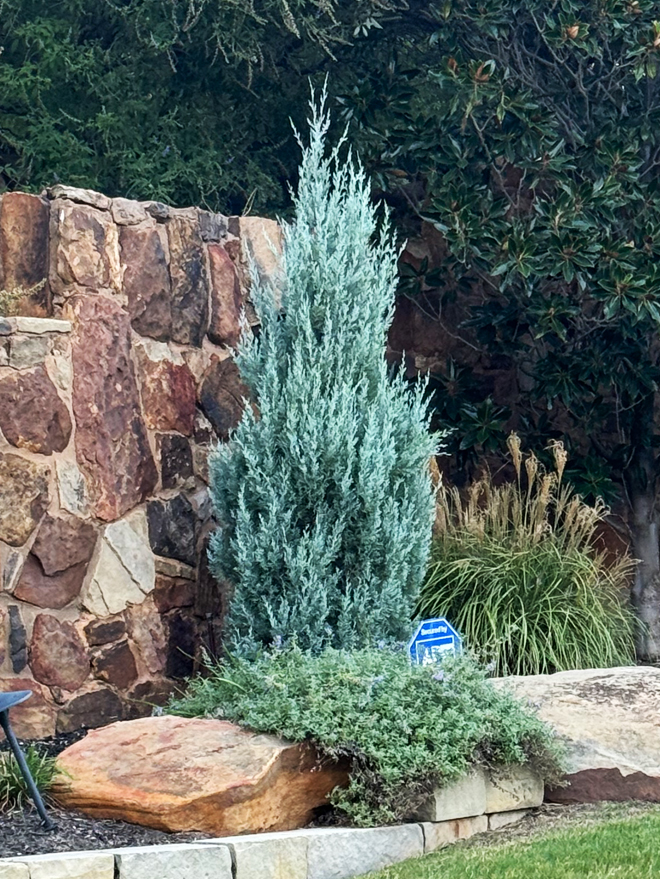
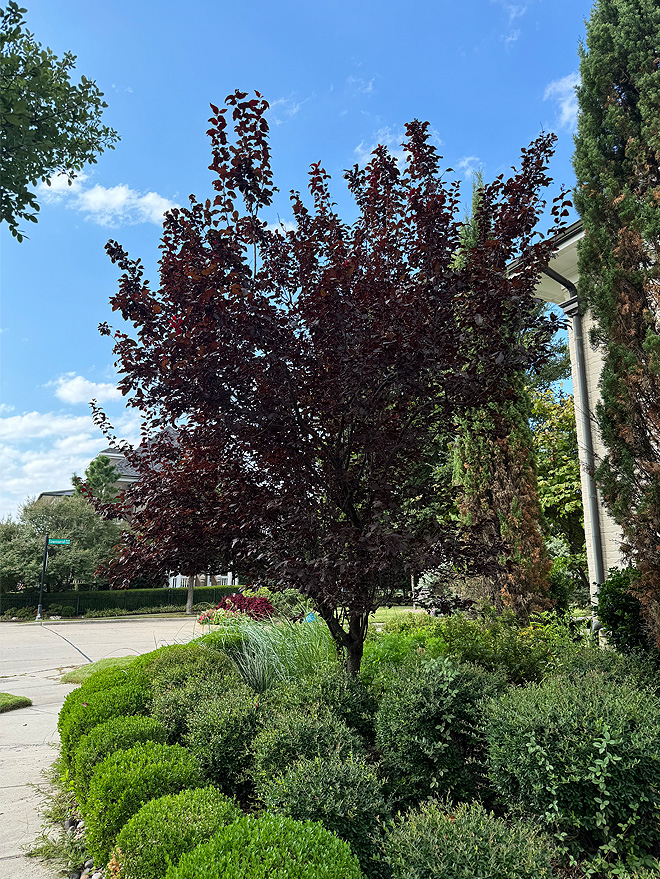
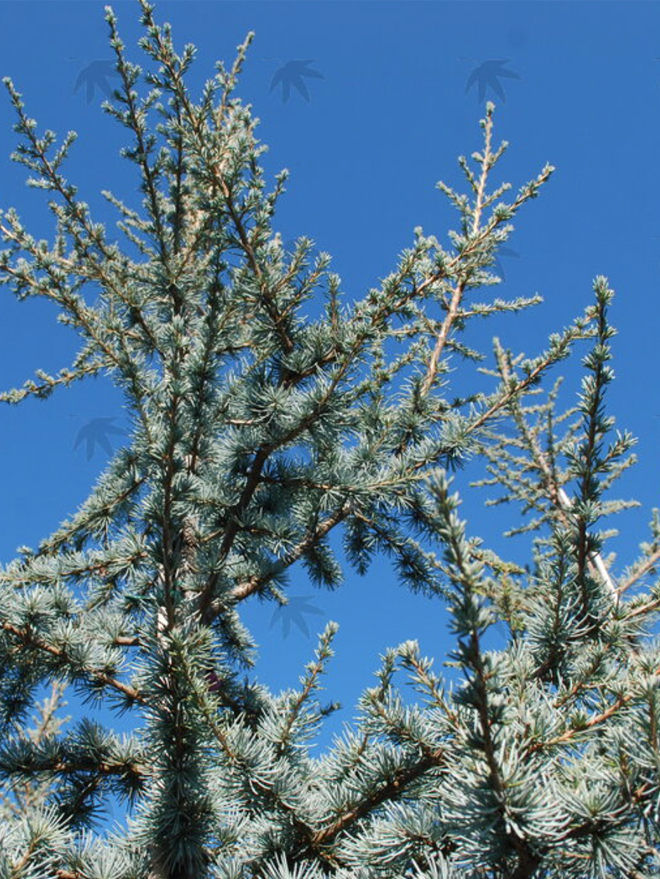
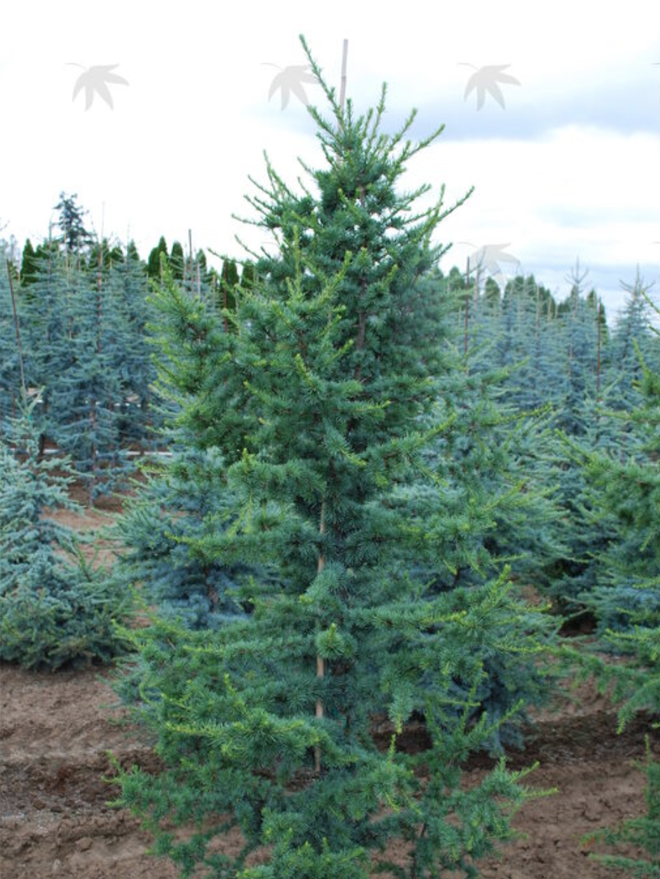
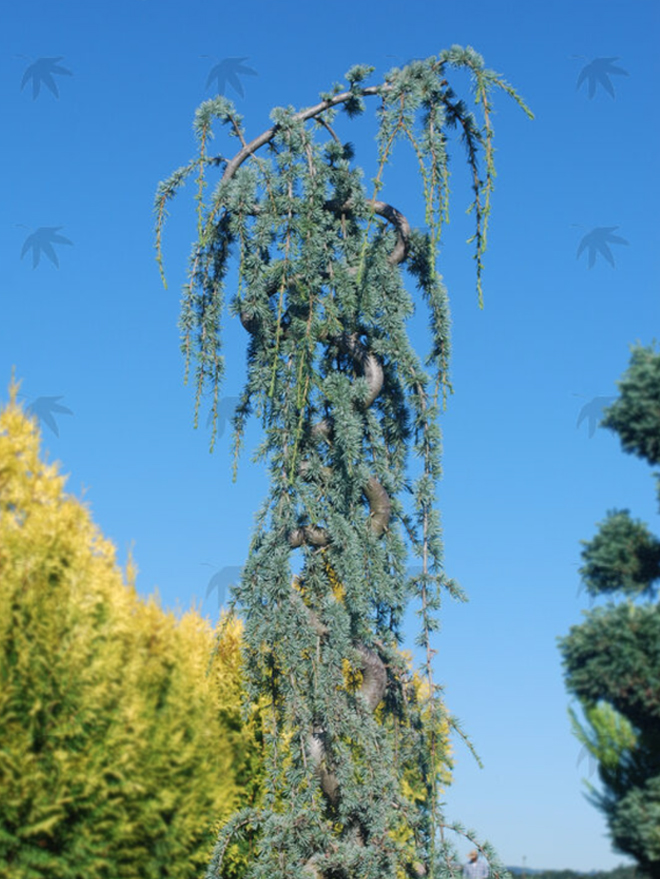
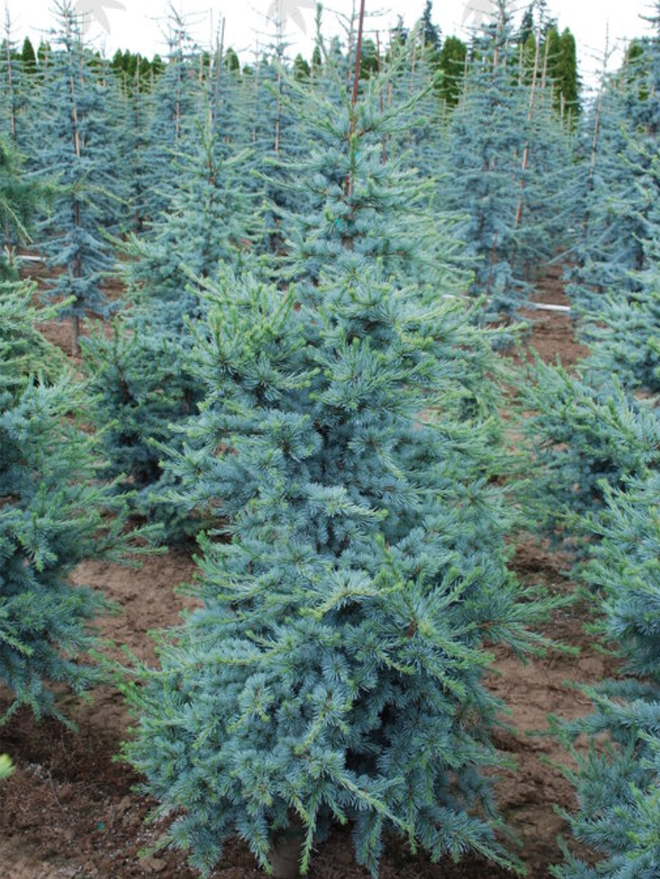
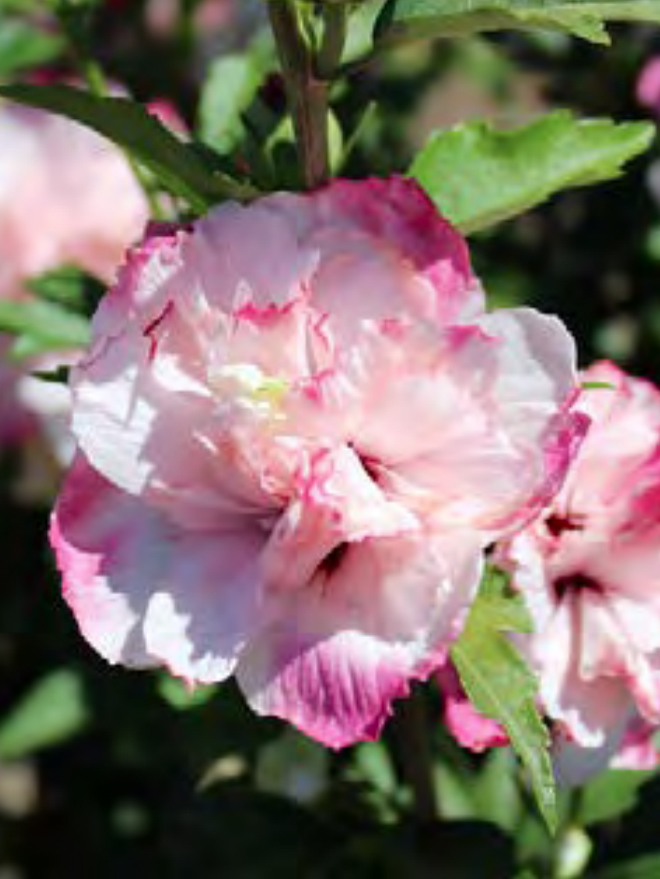
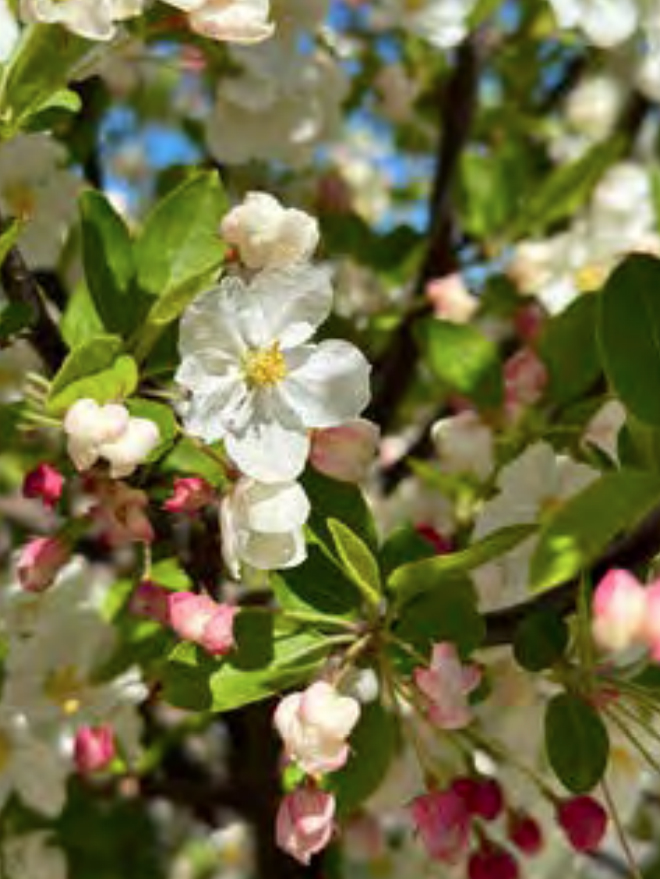
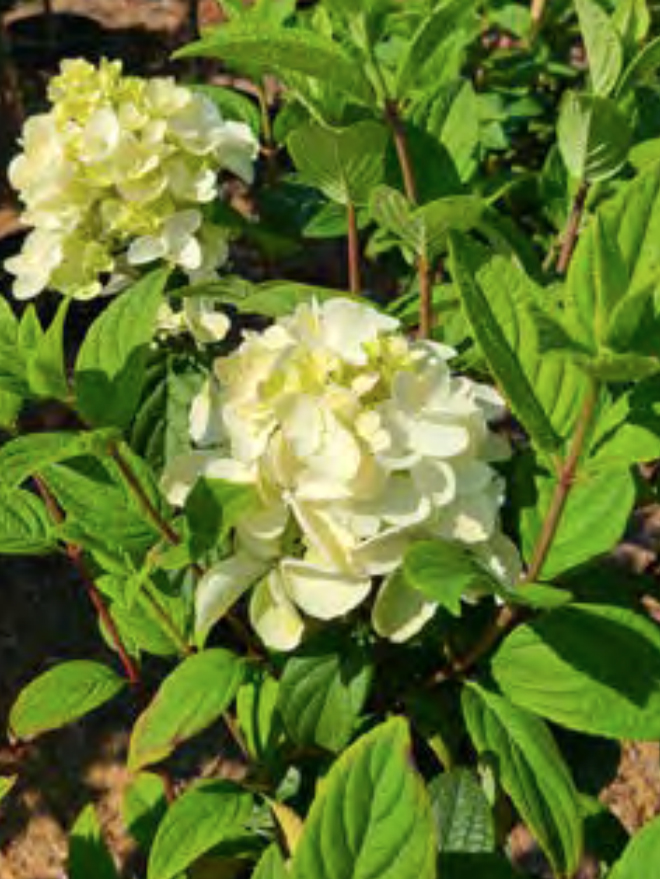
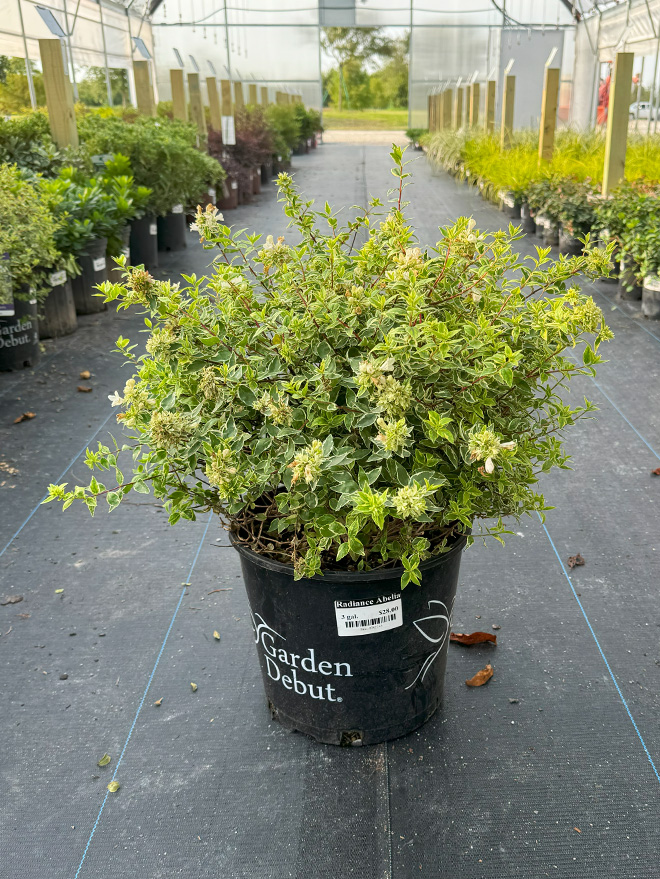
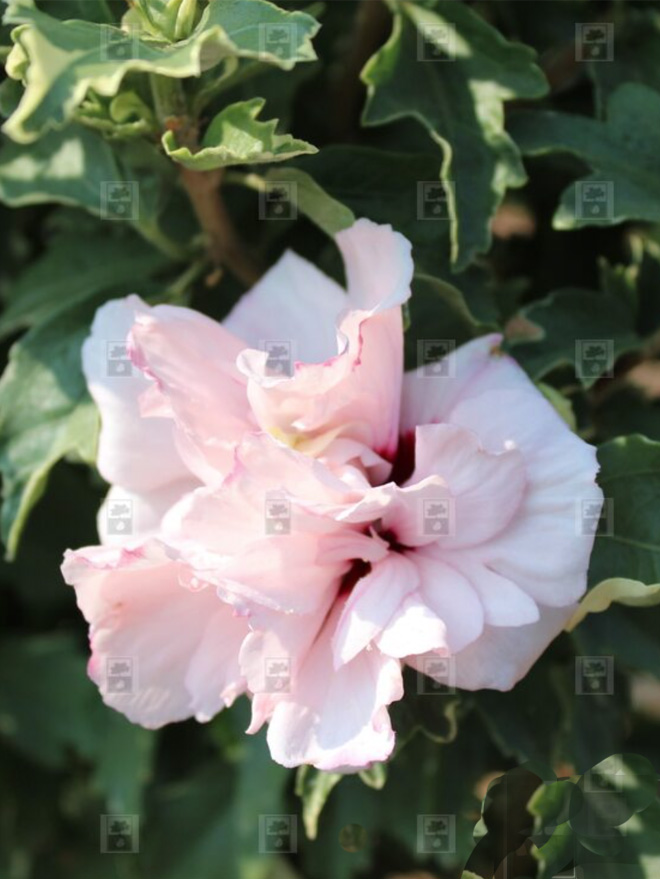
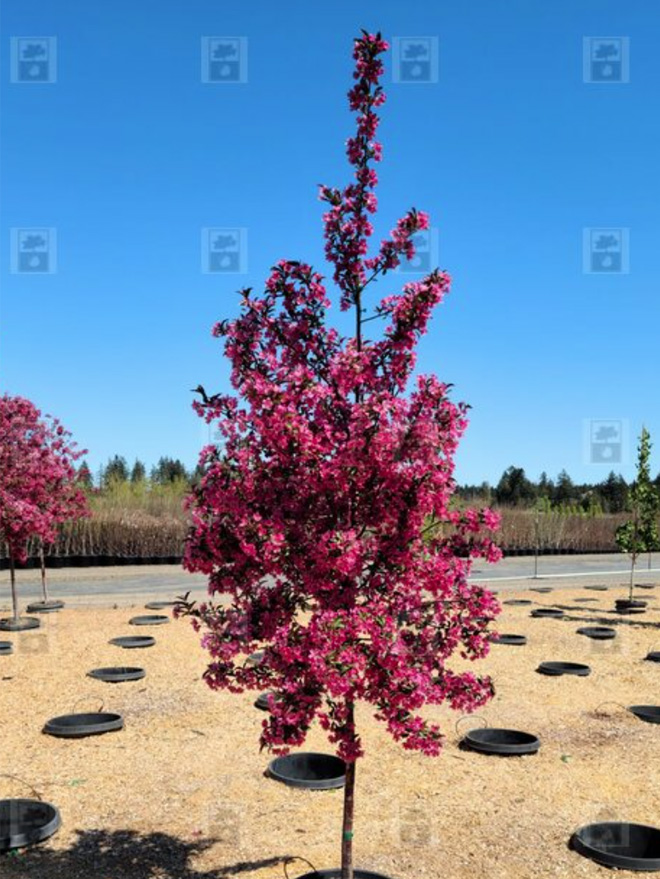
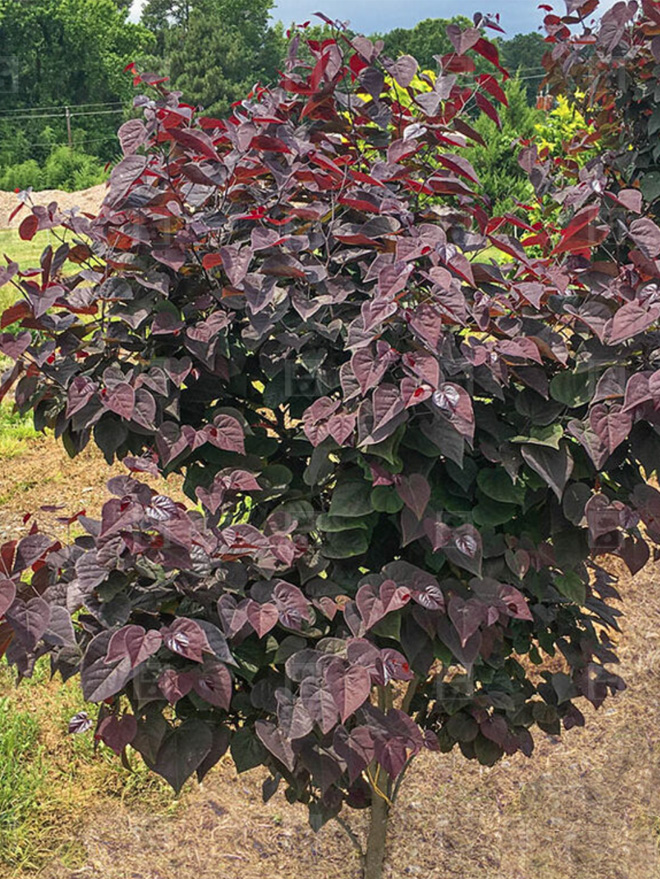

972-372-4737
Facebook Twitter Pinterest Instagram Youtube Houzz